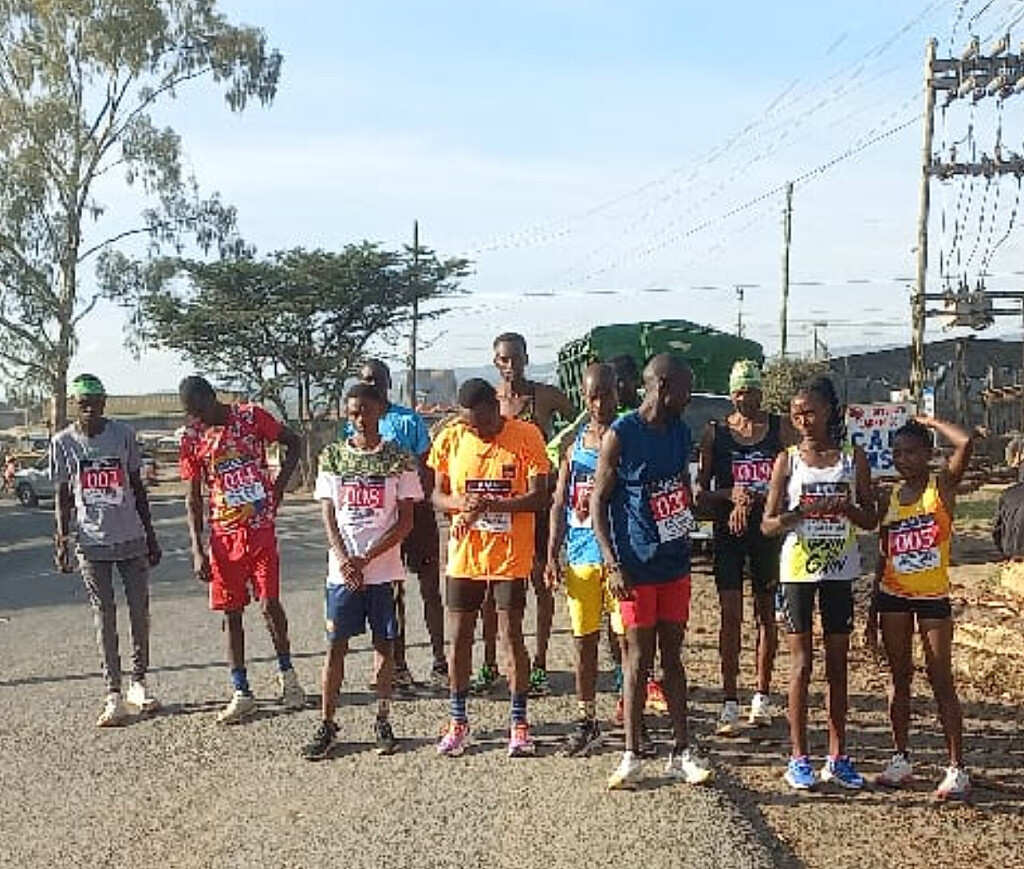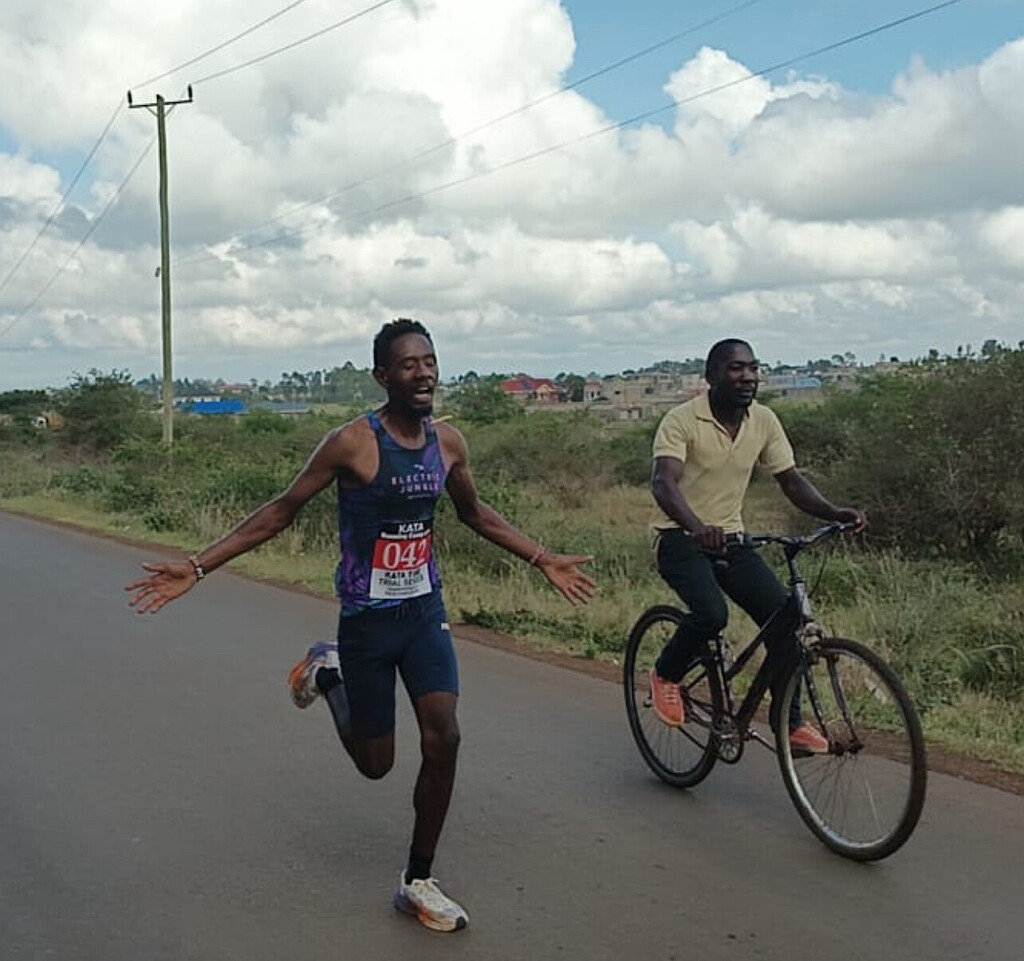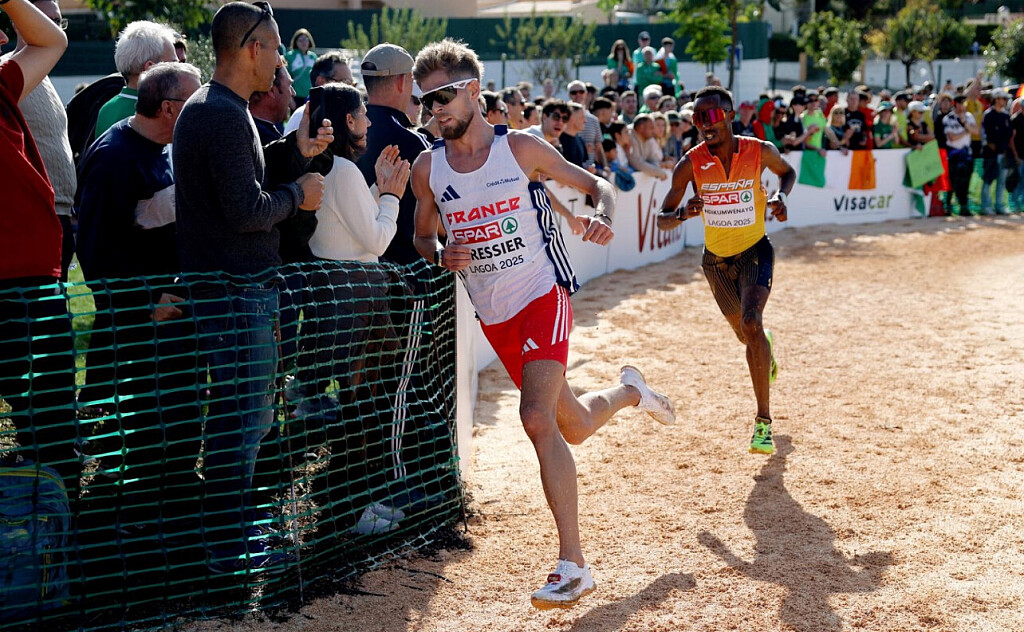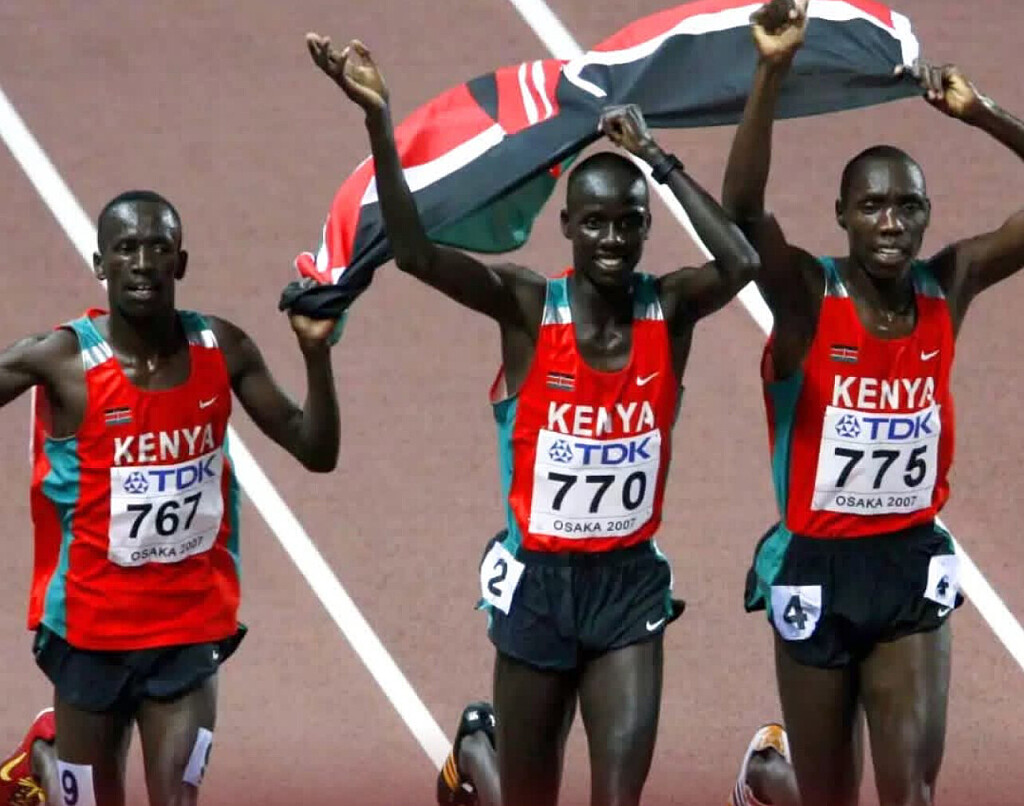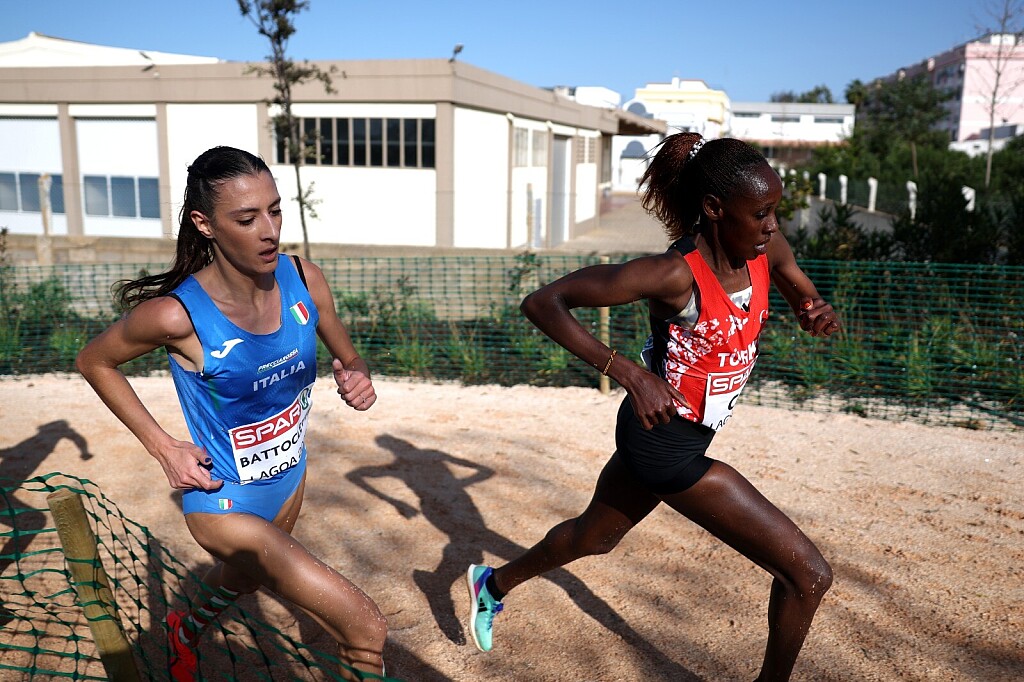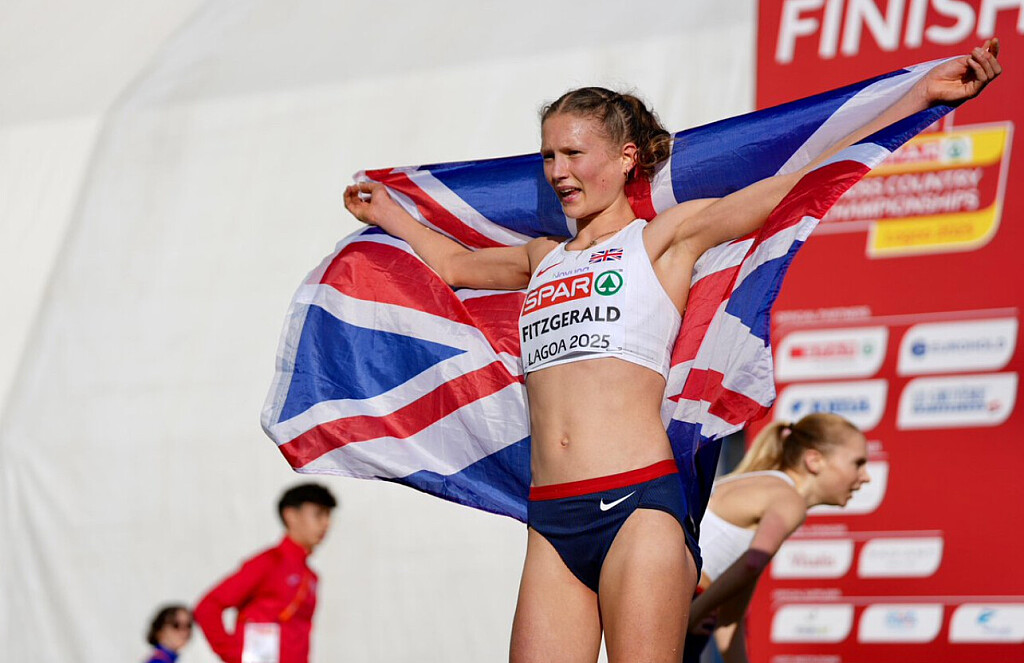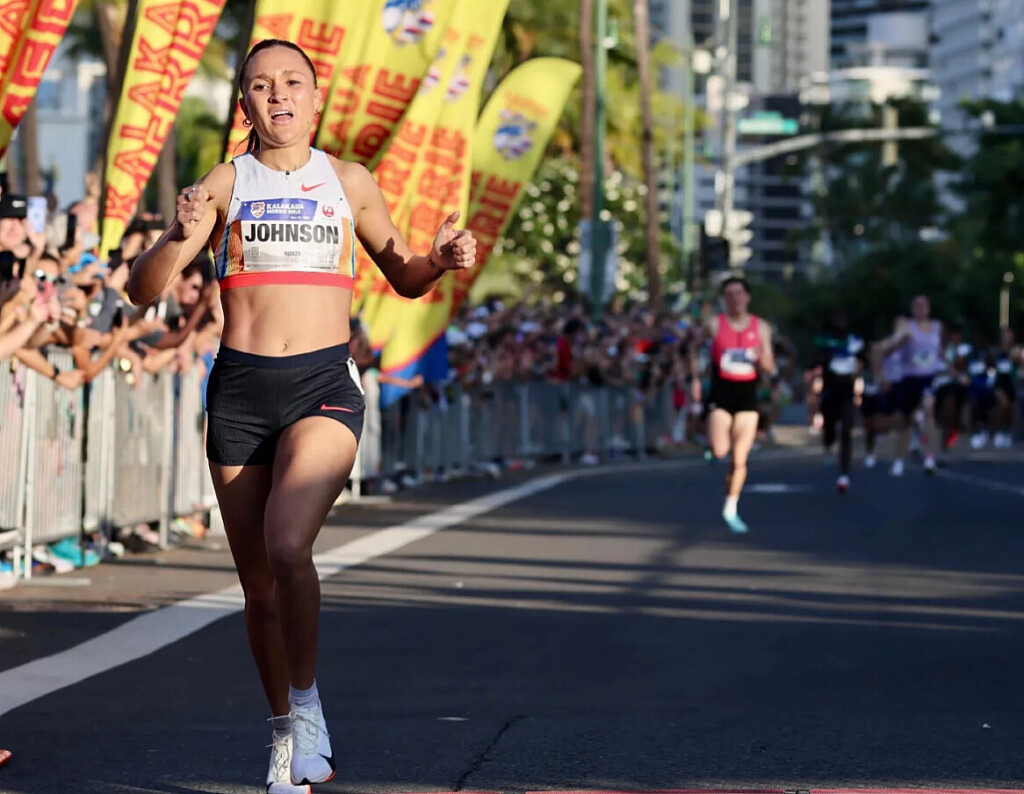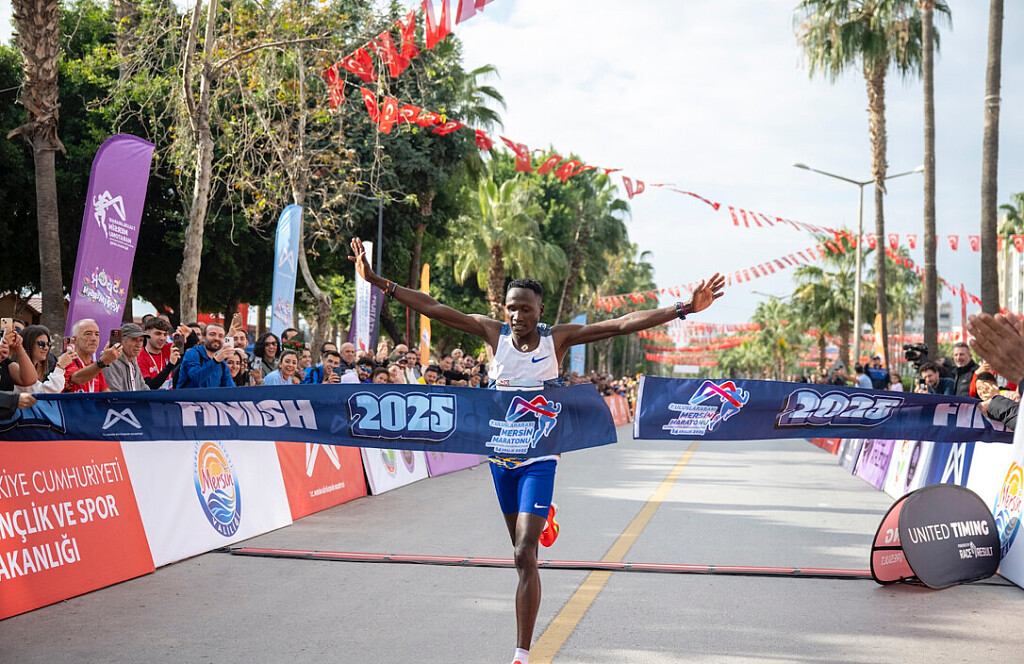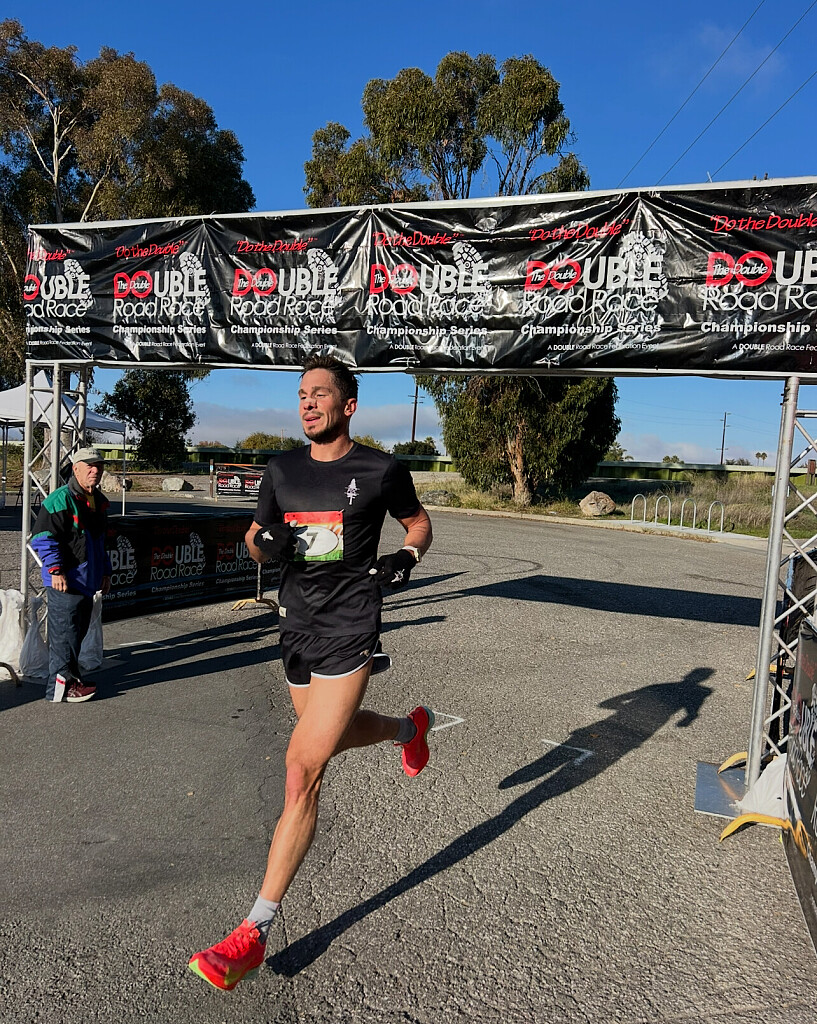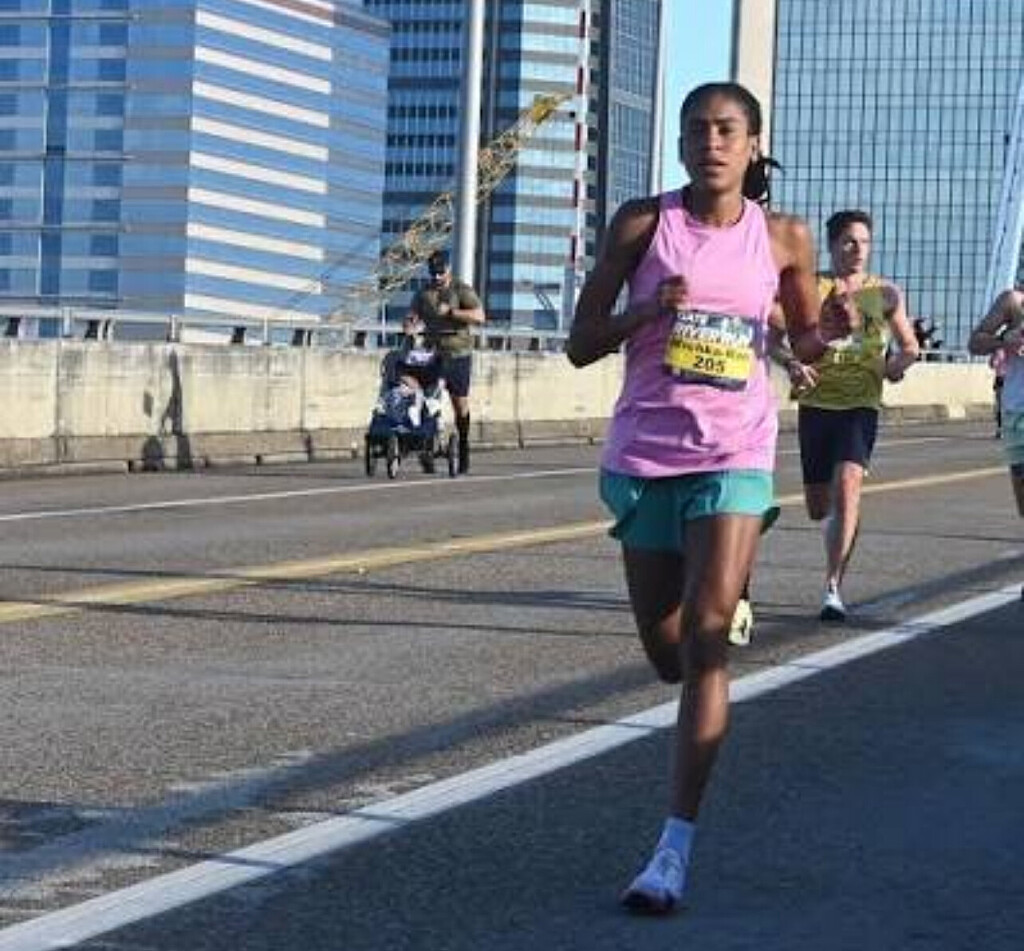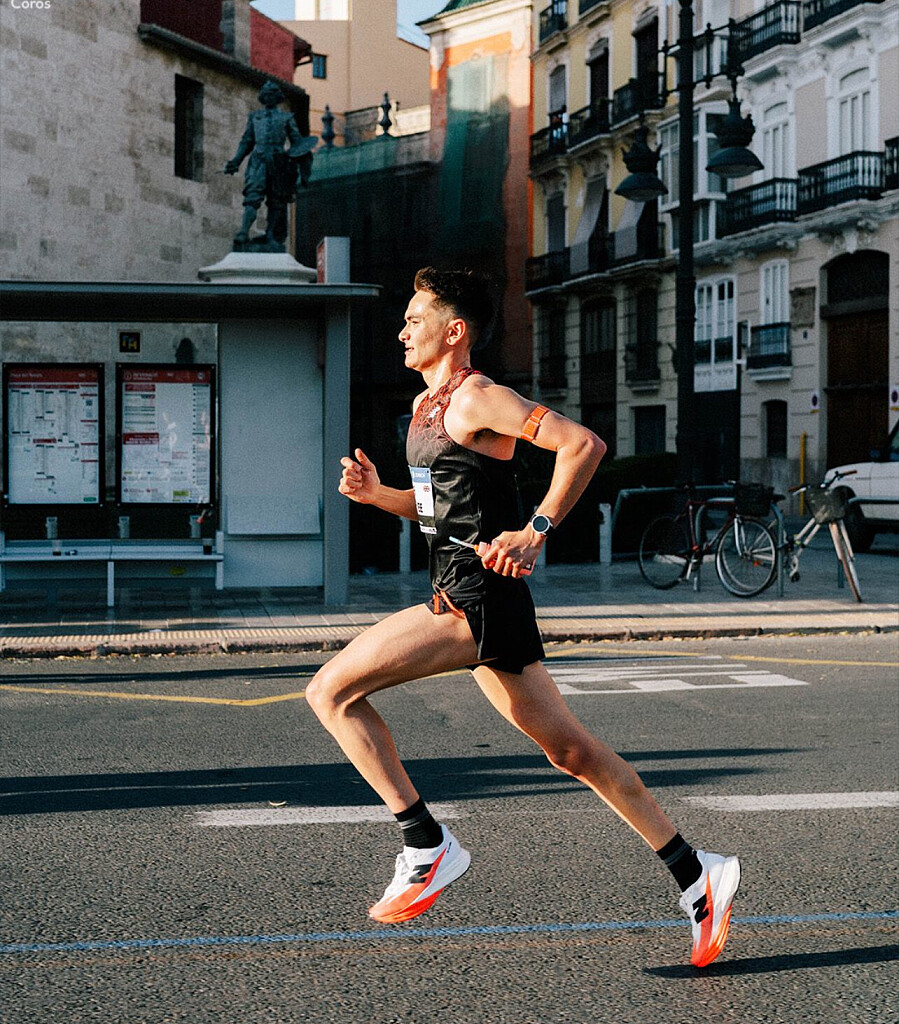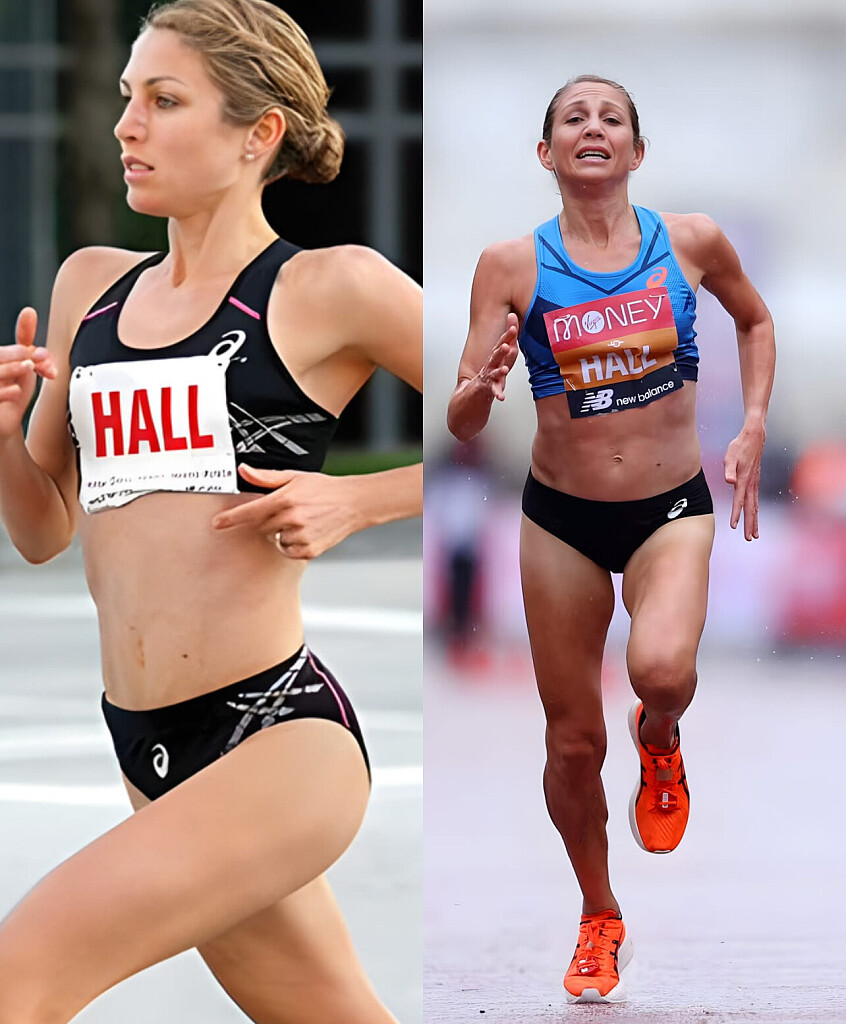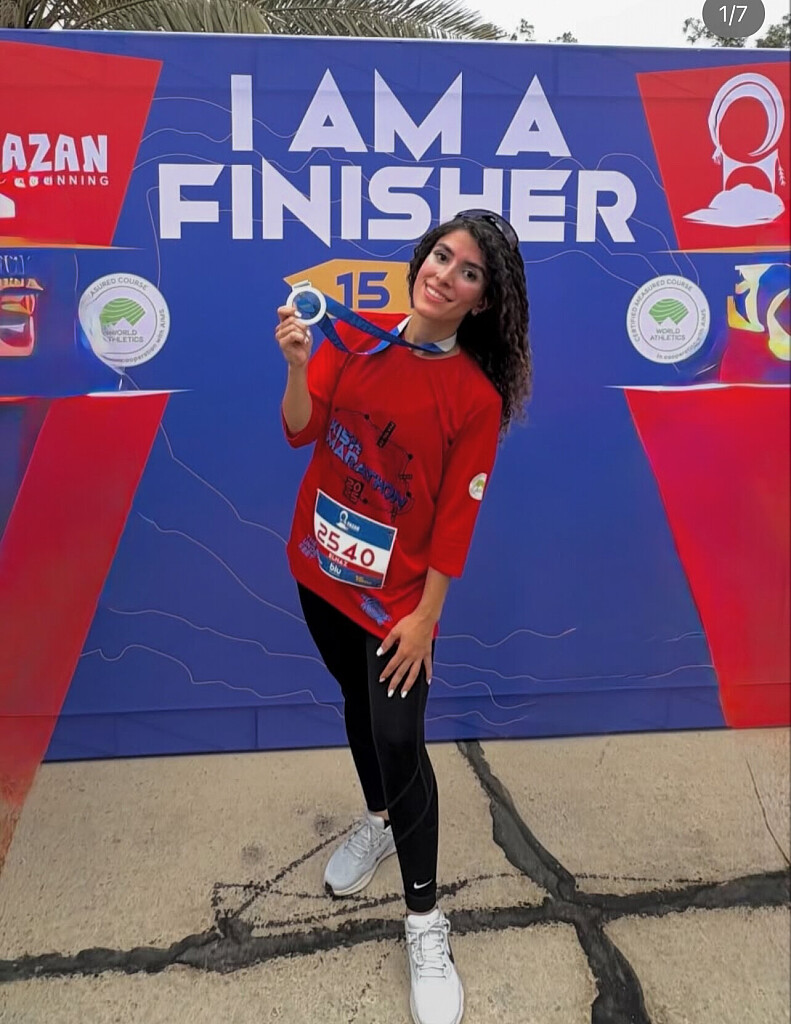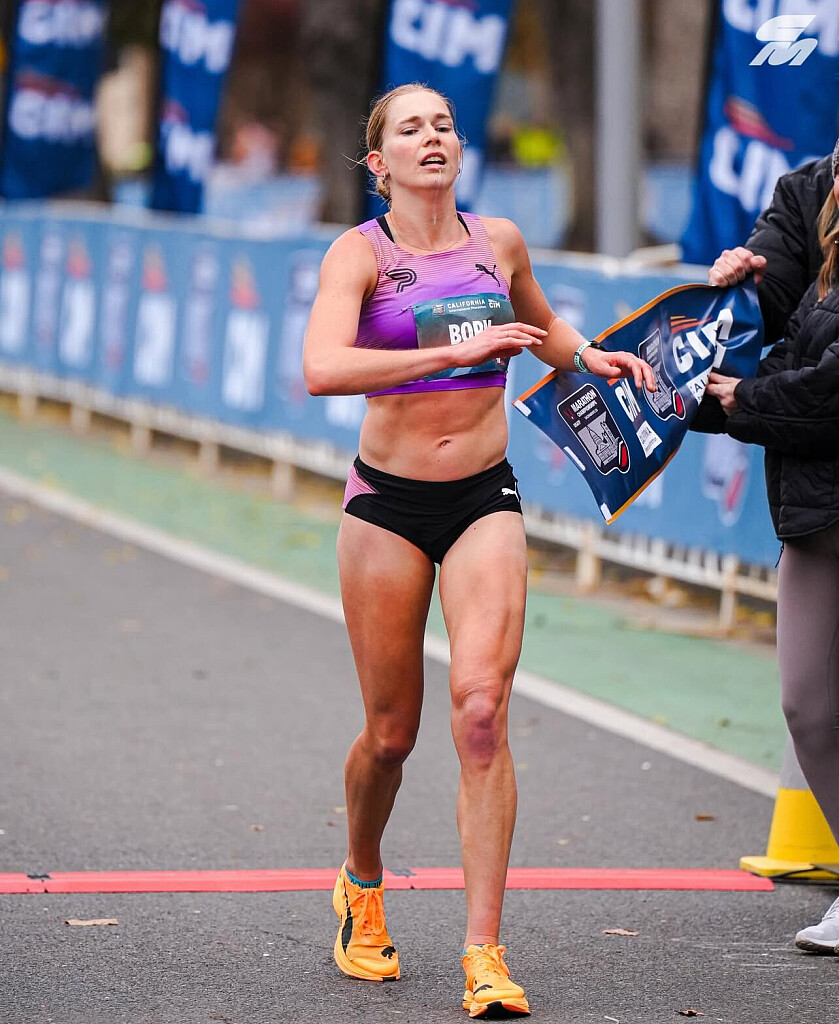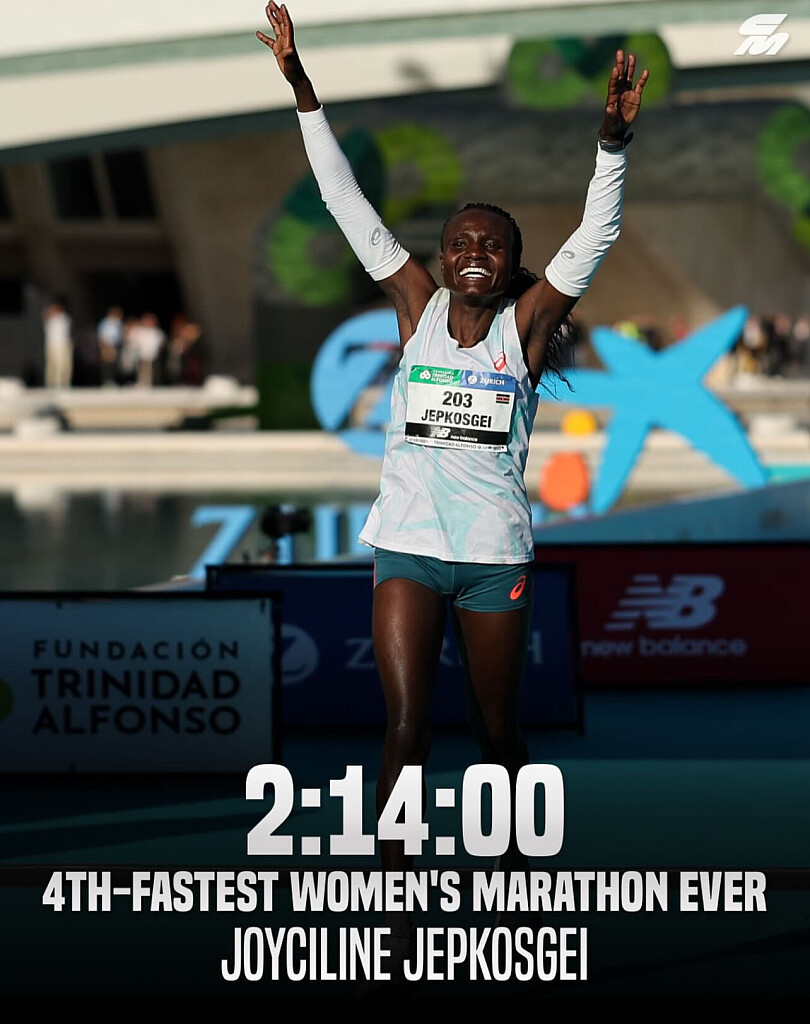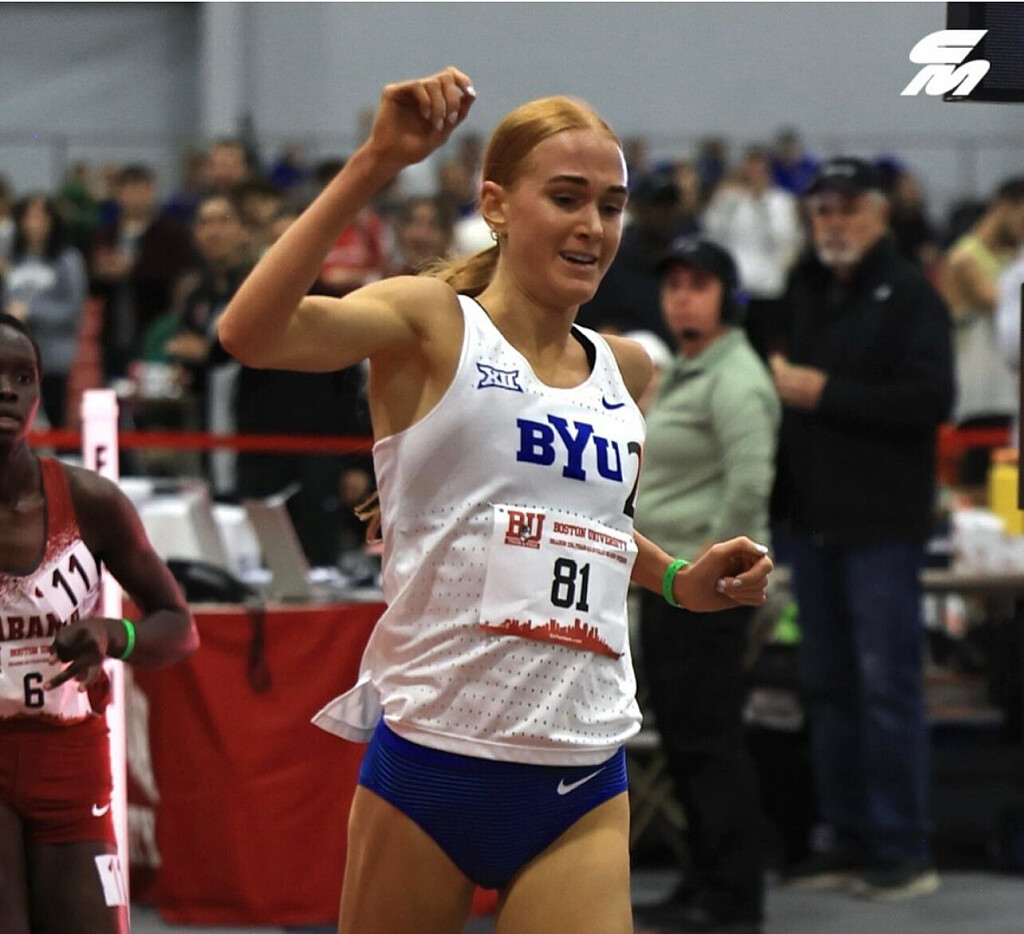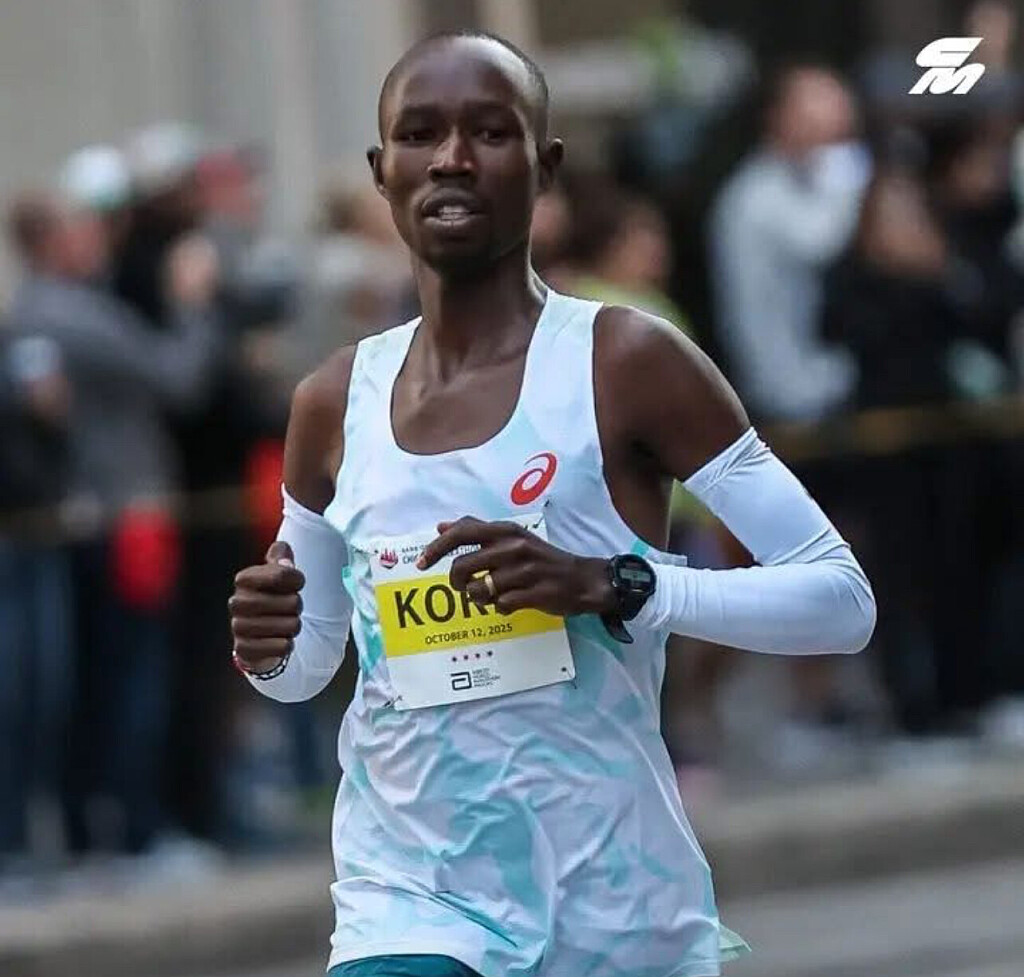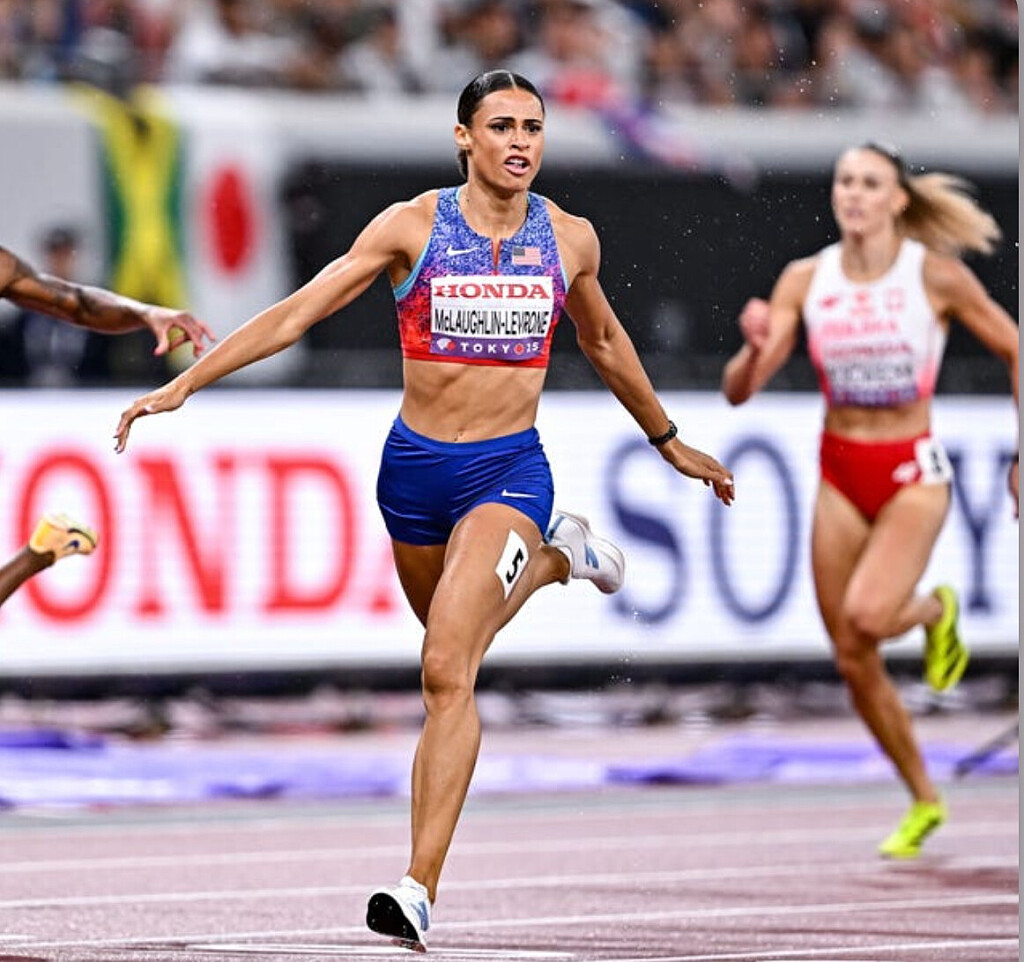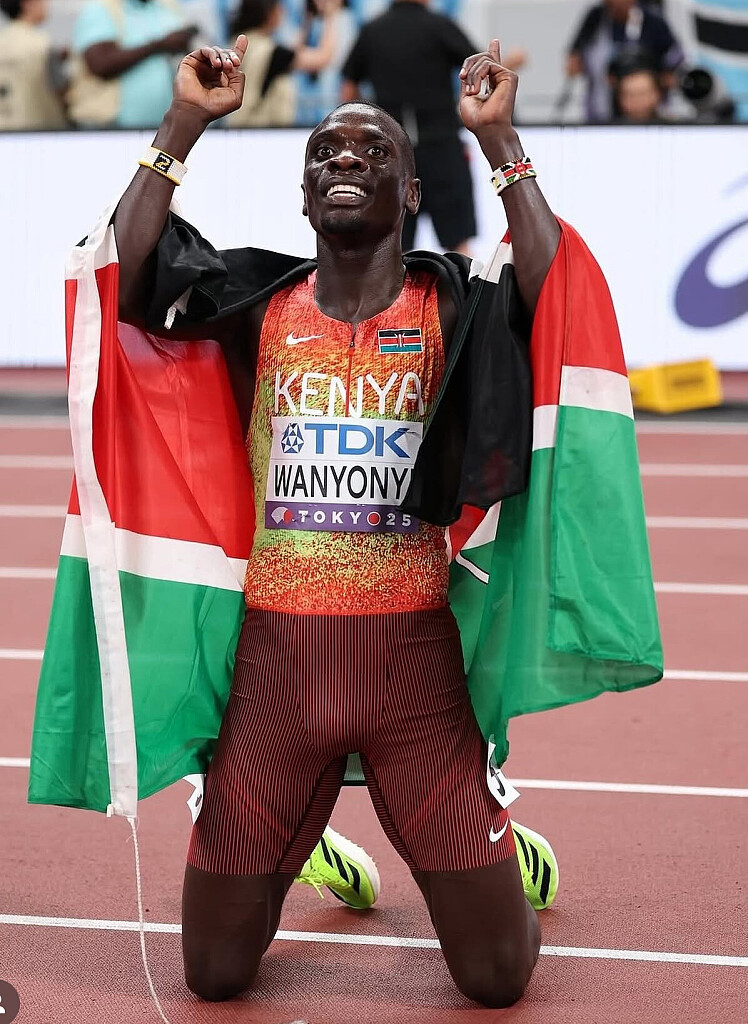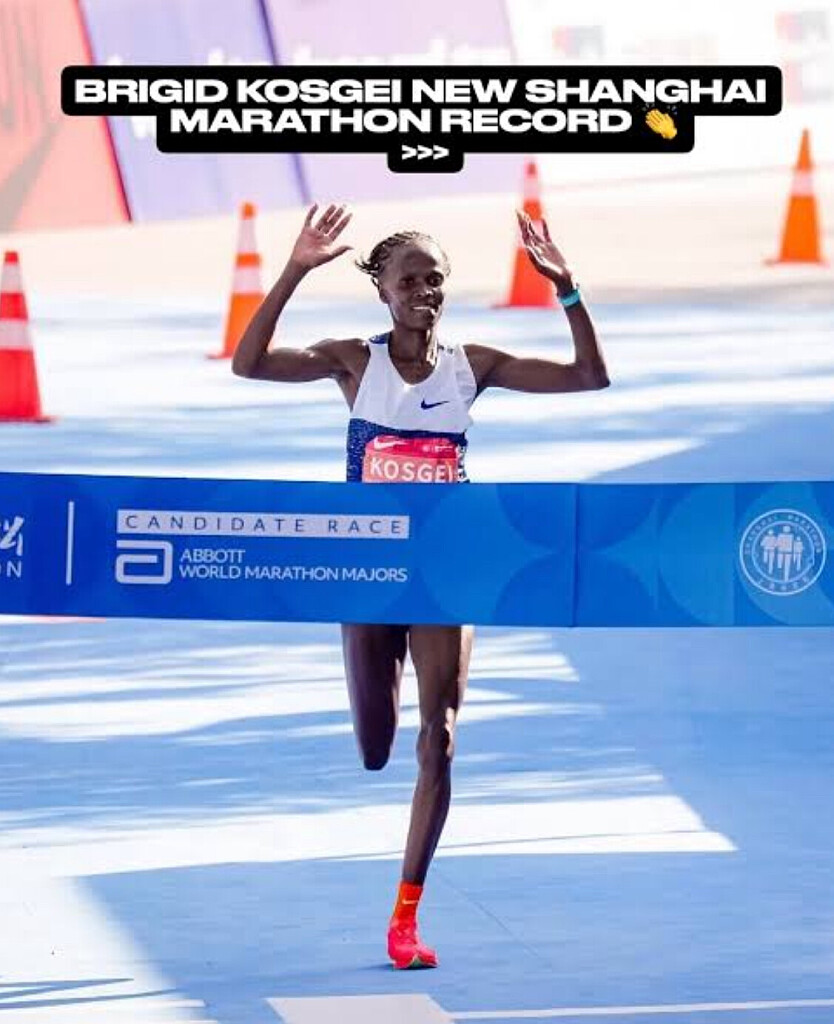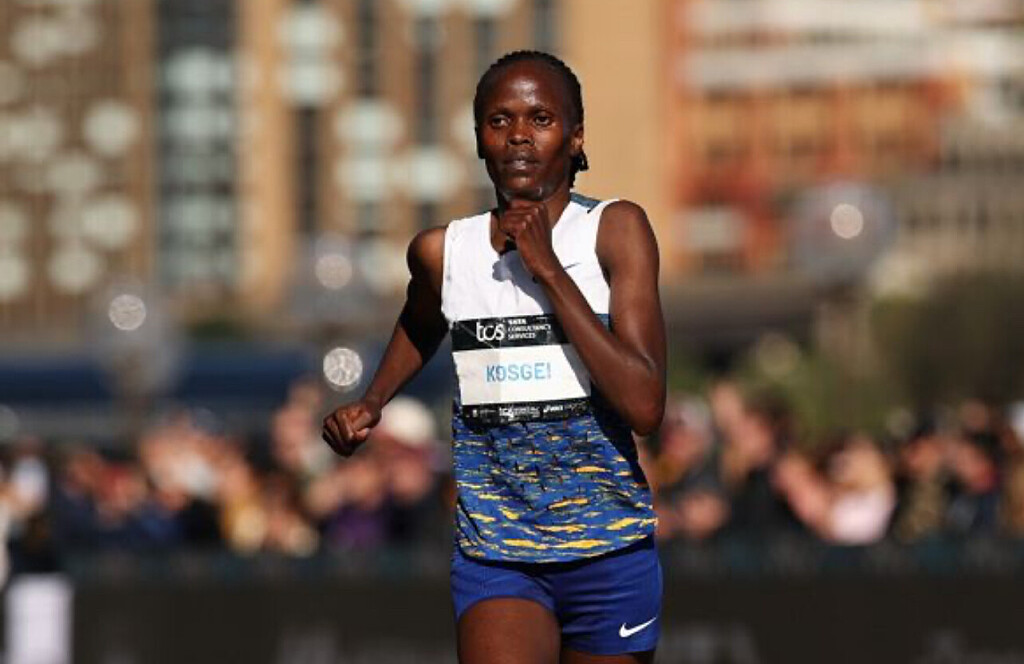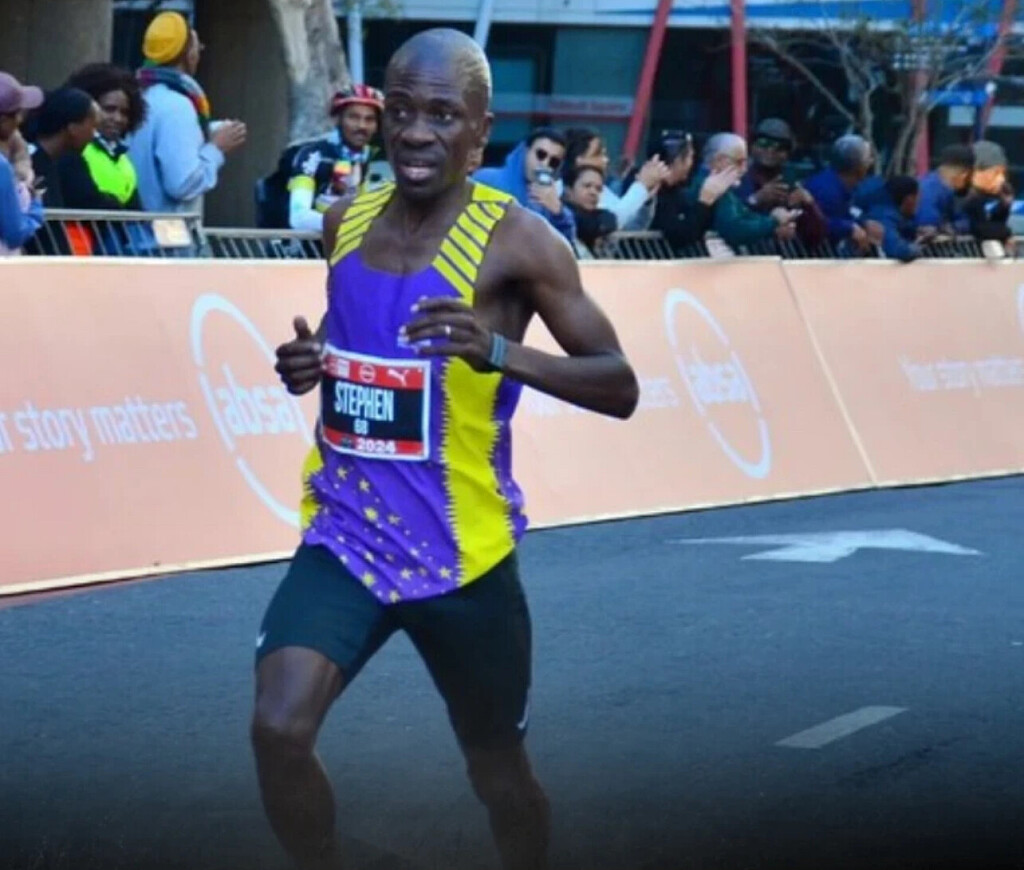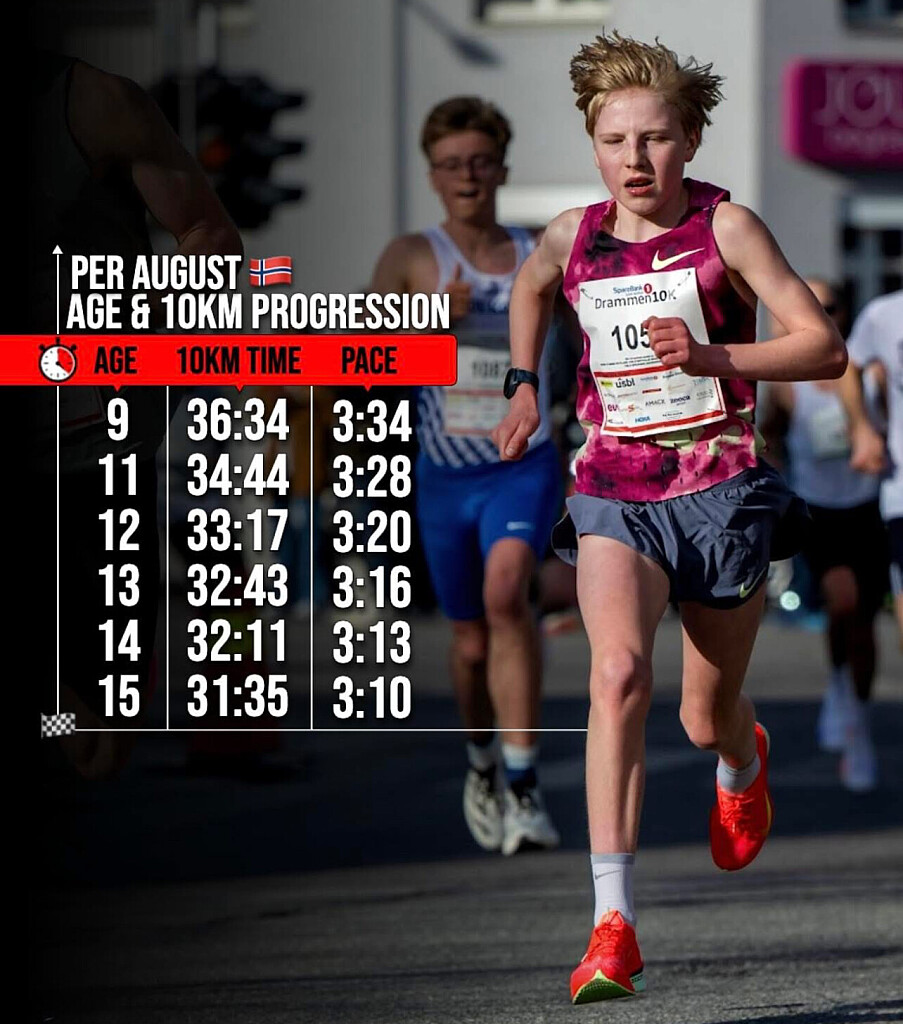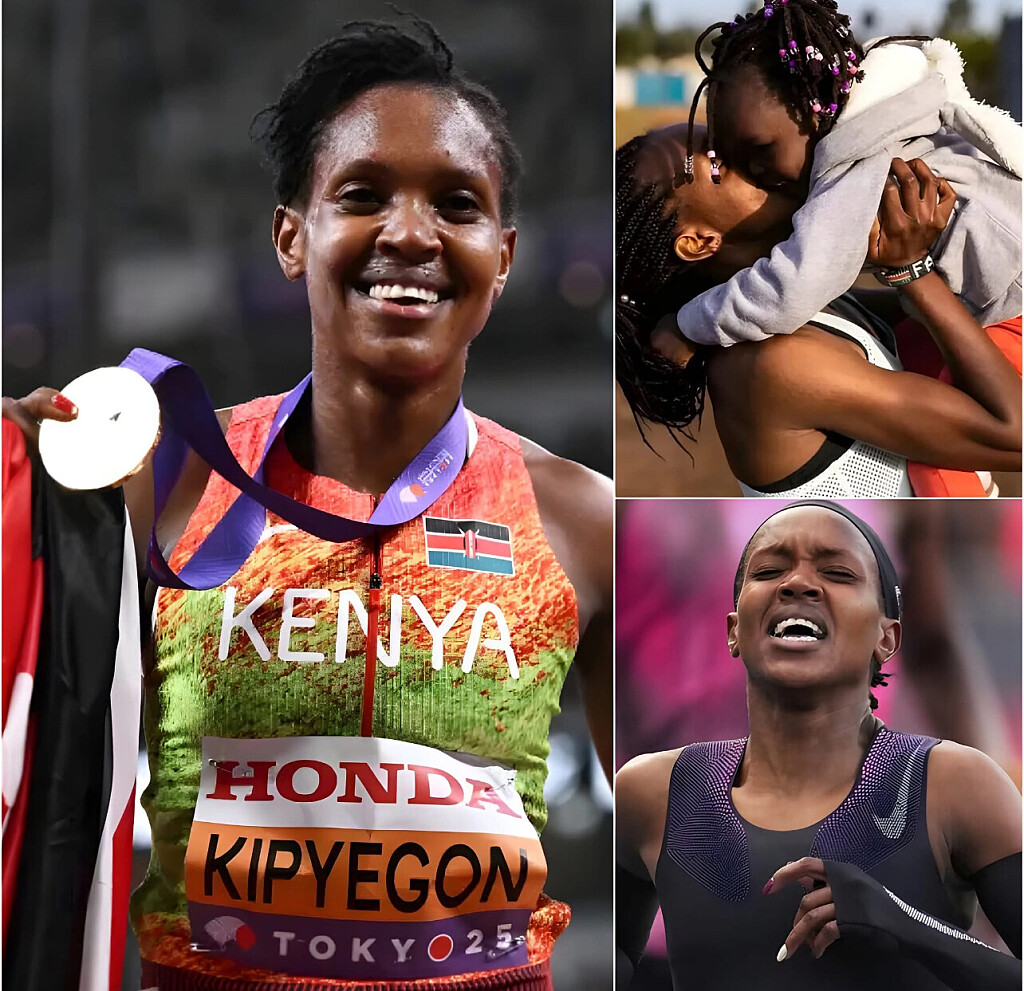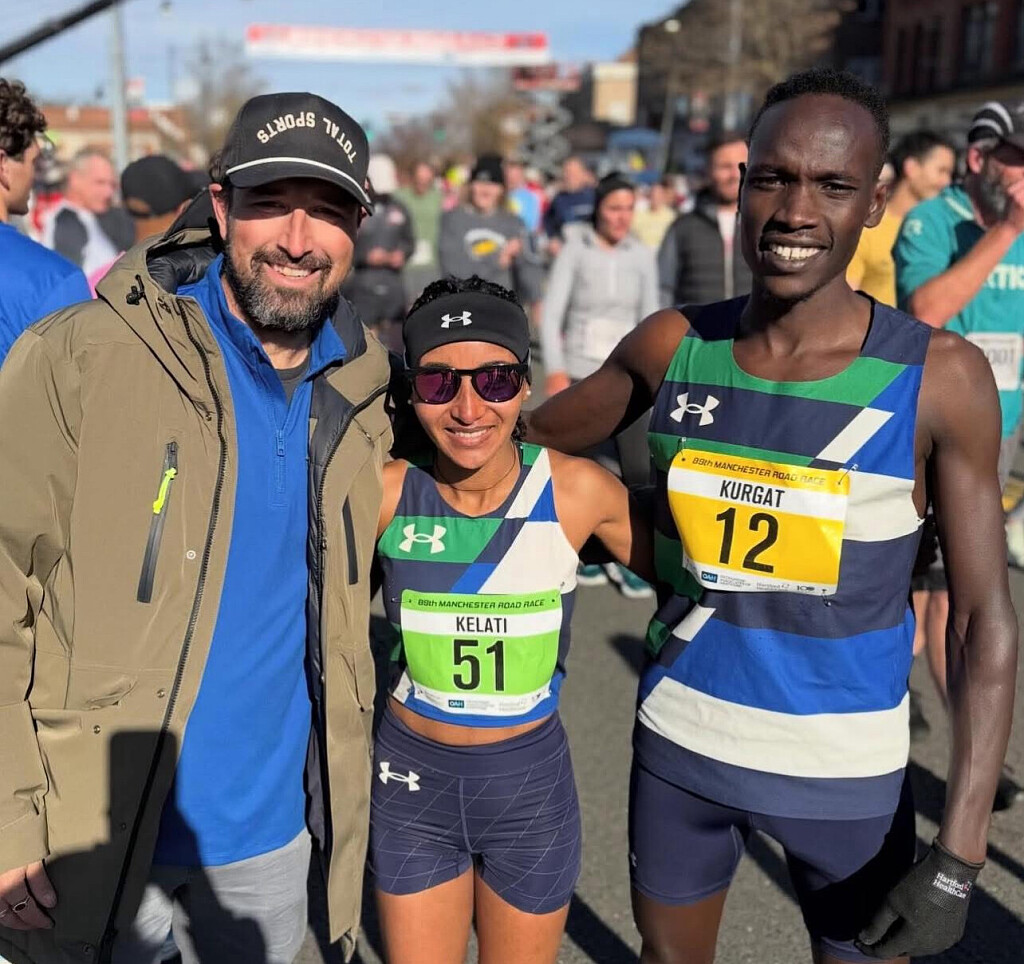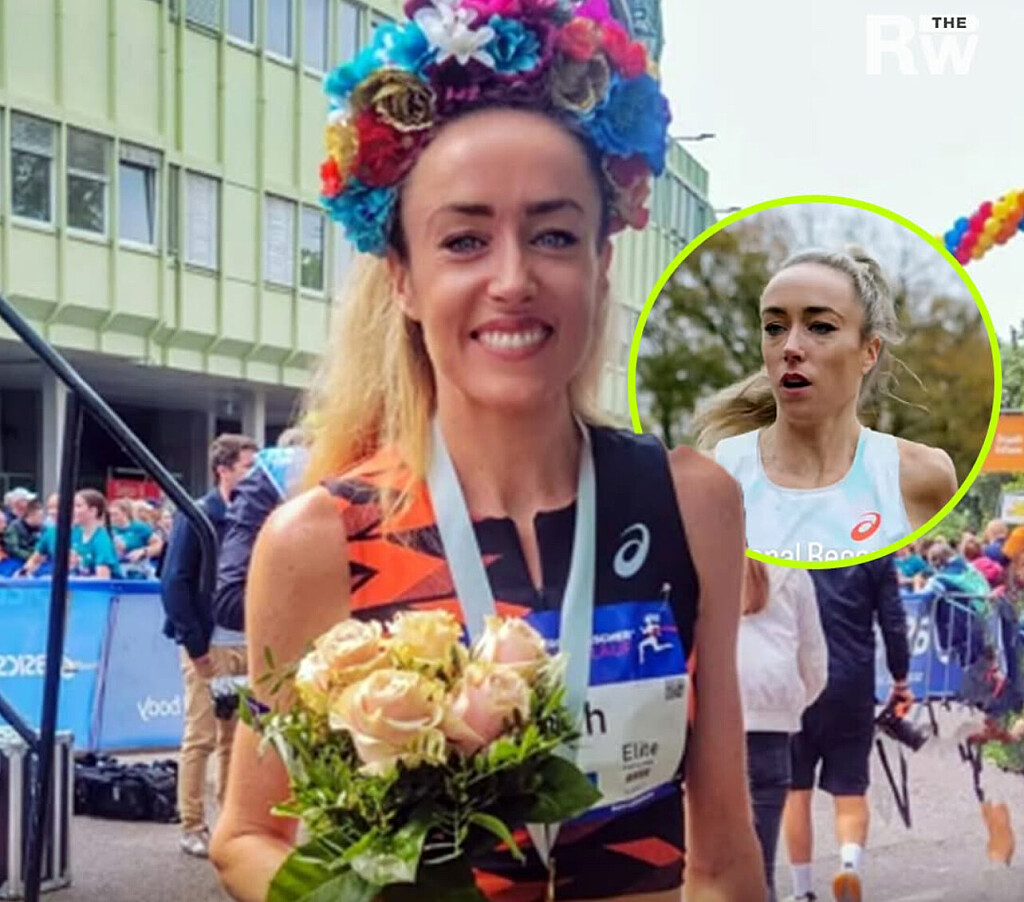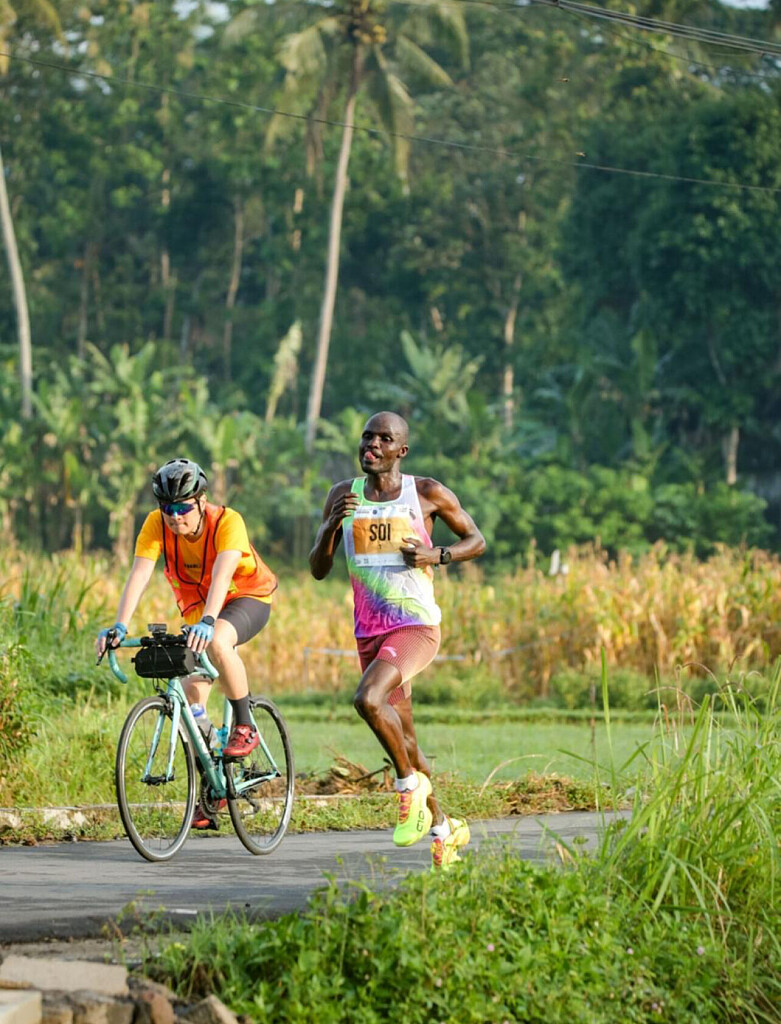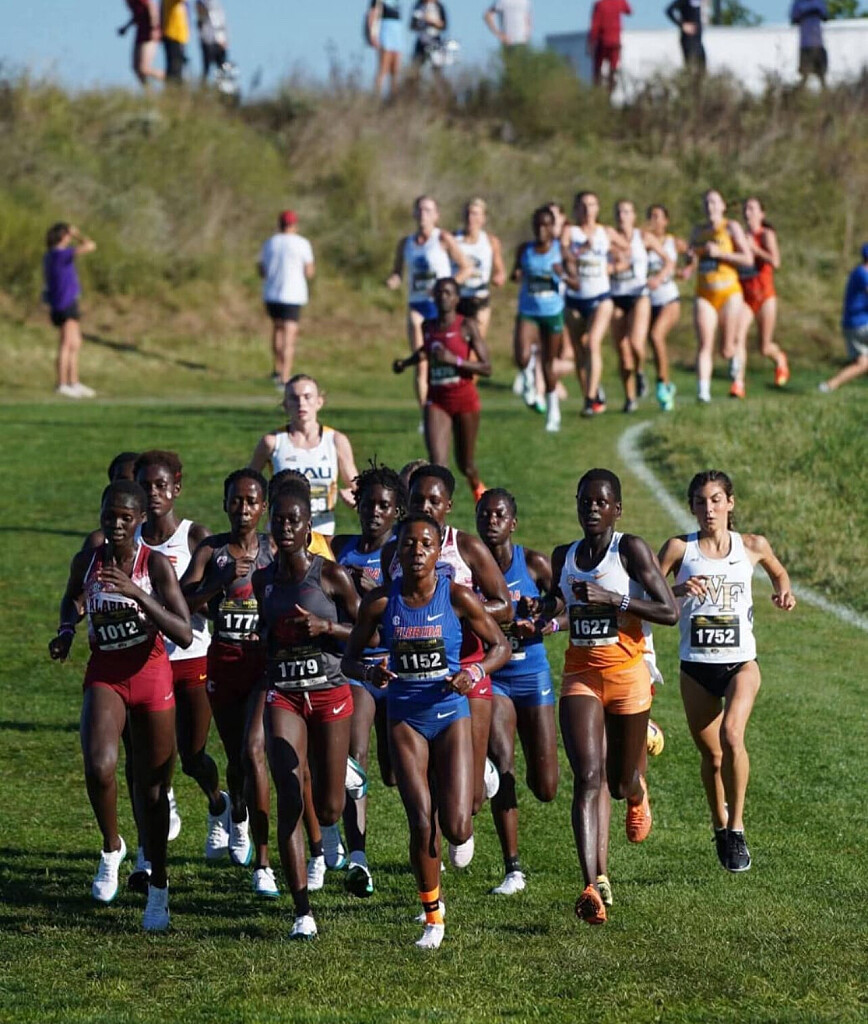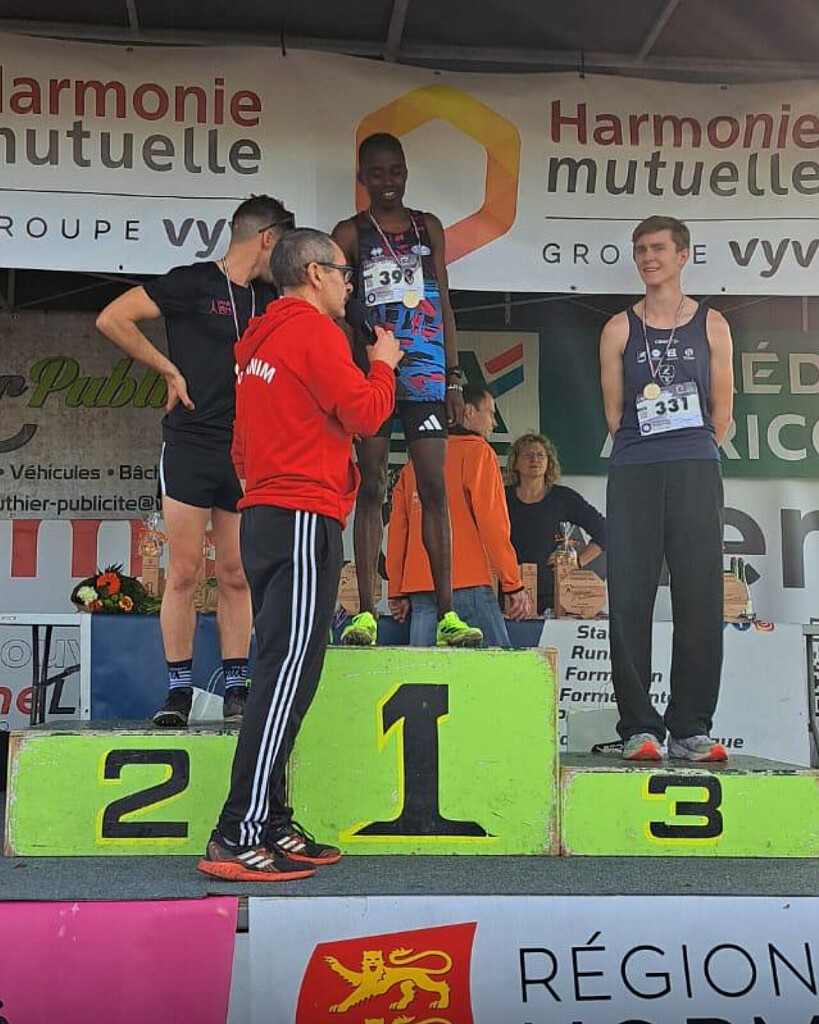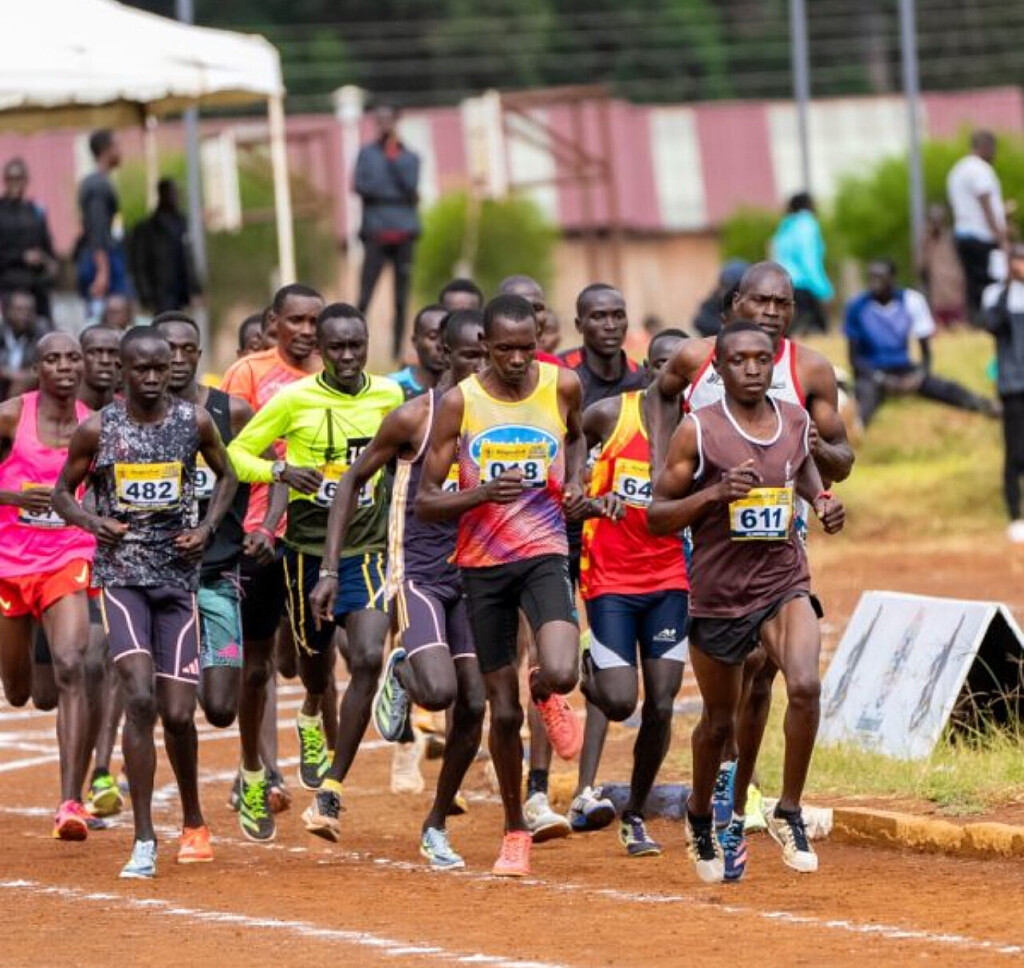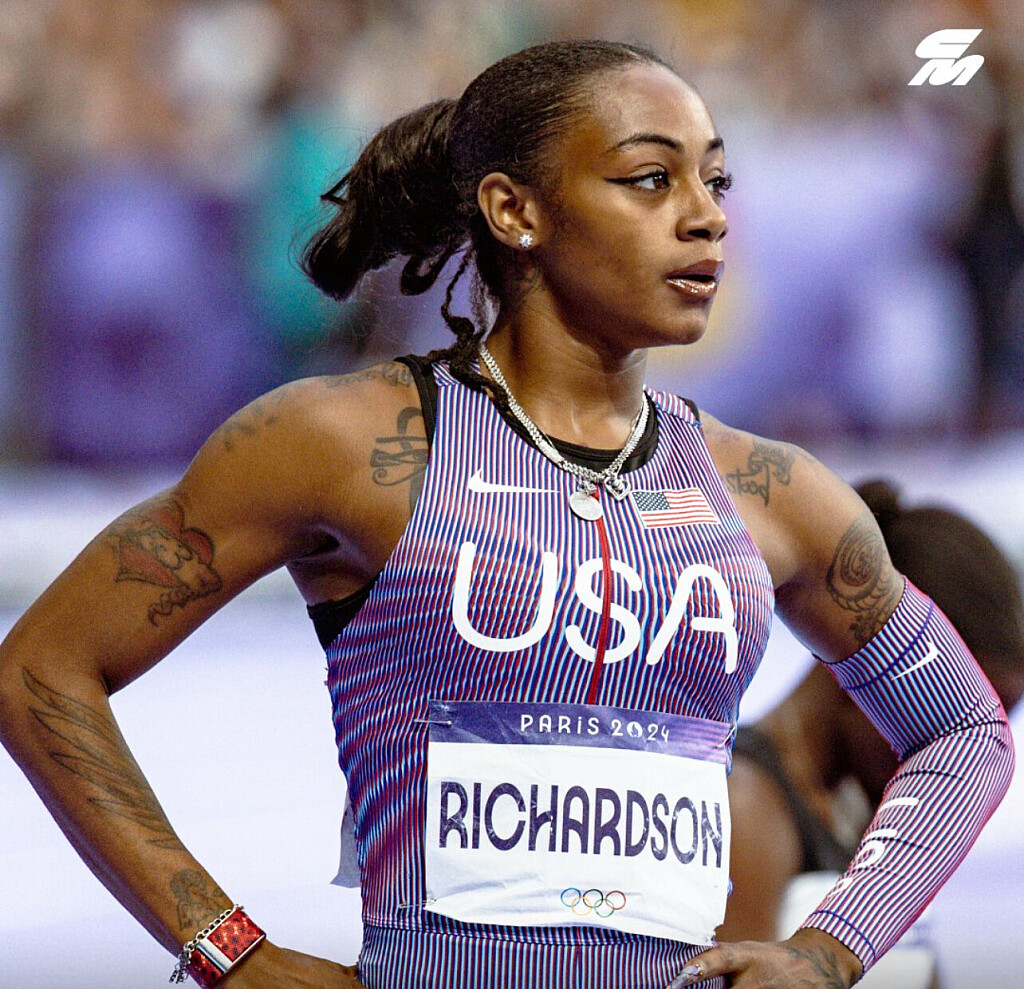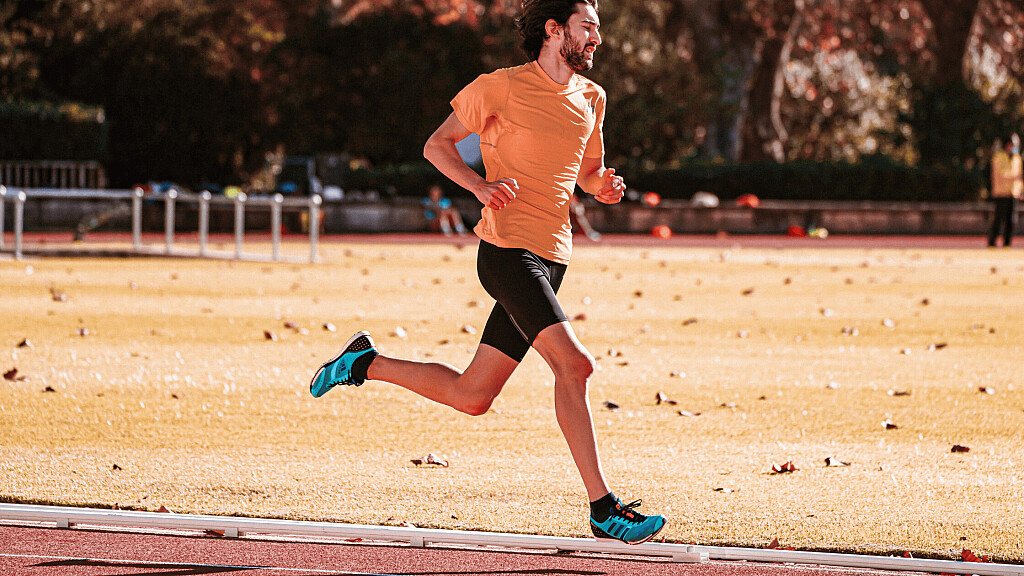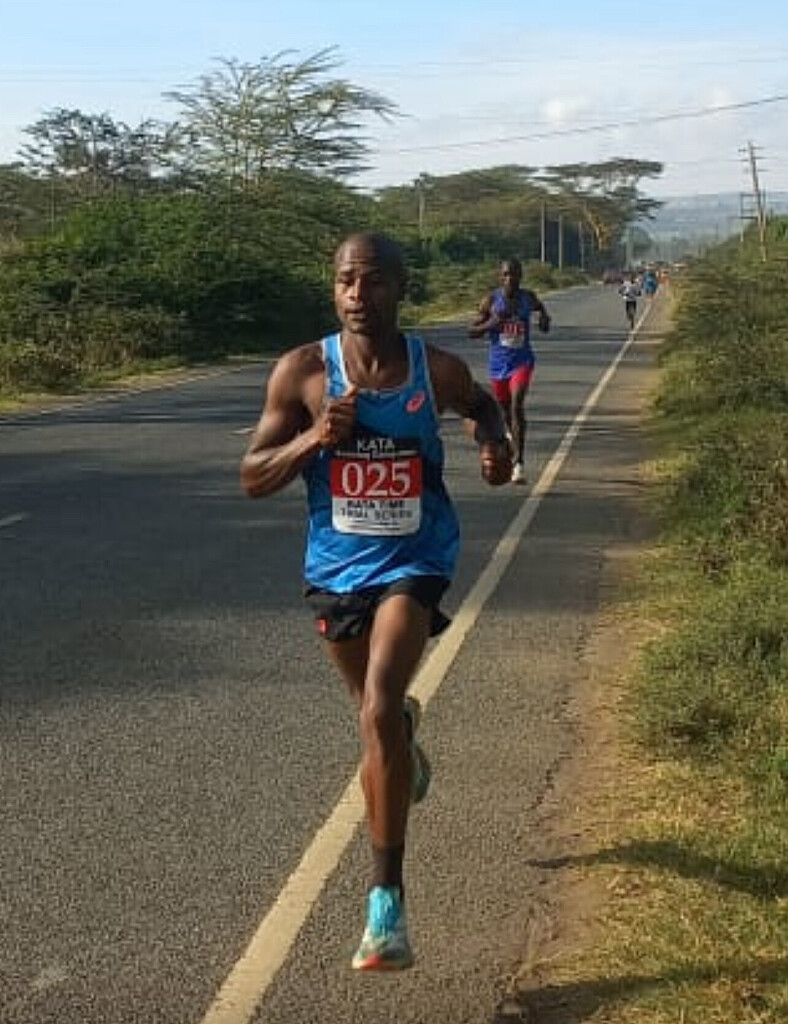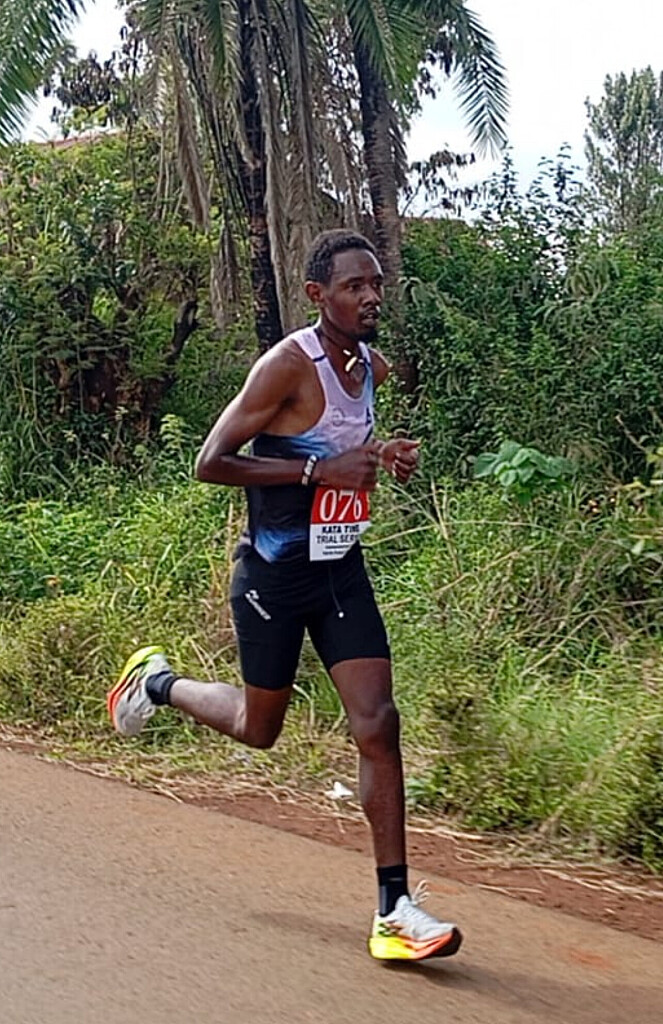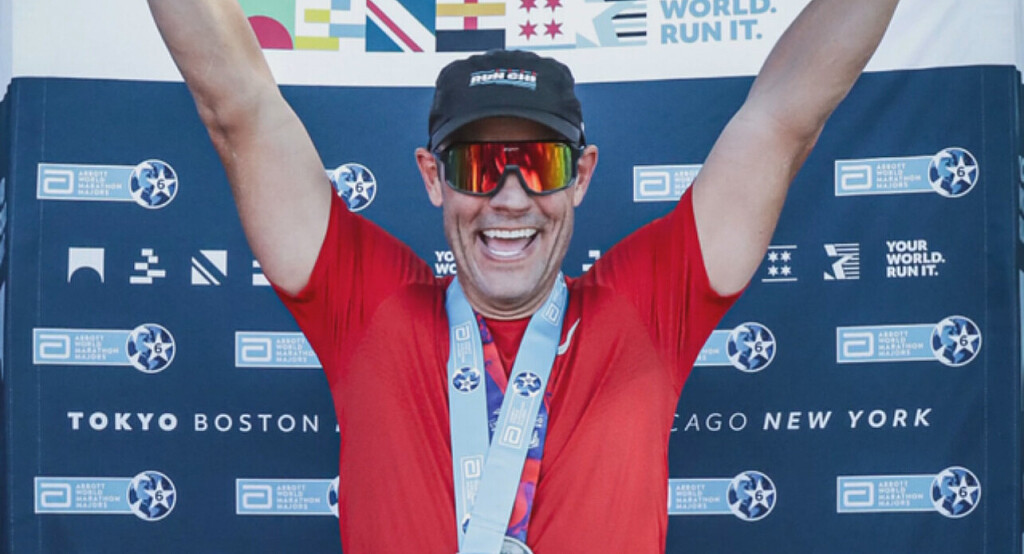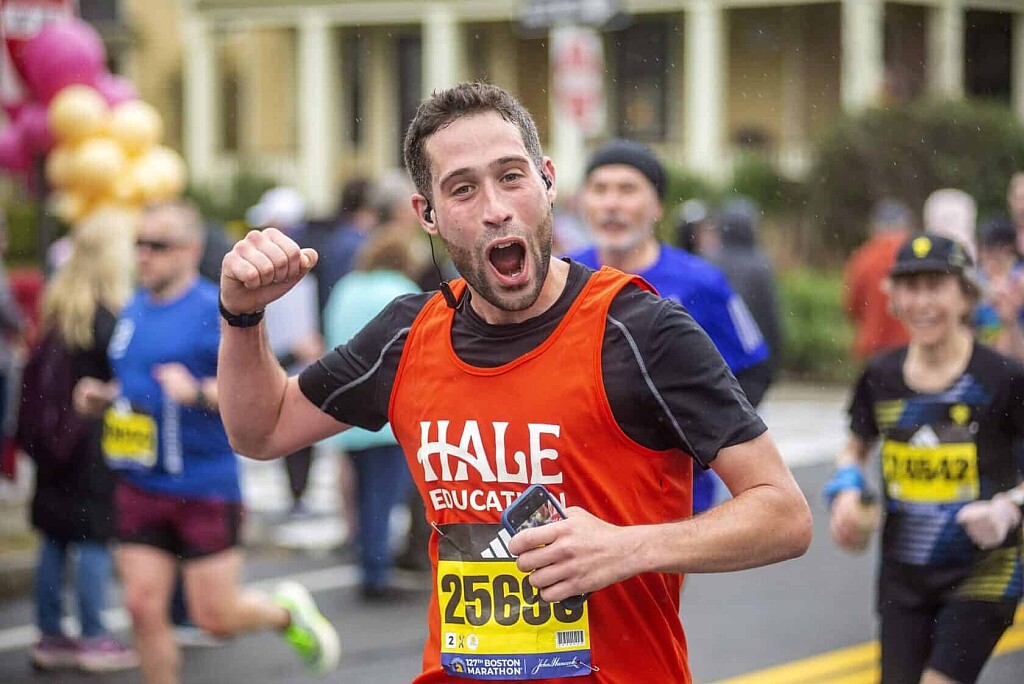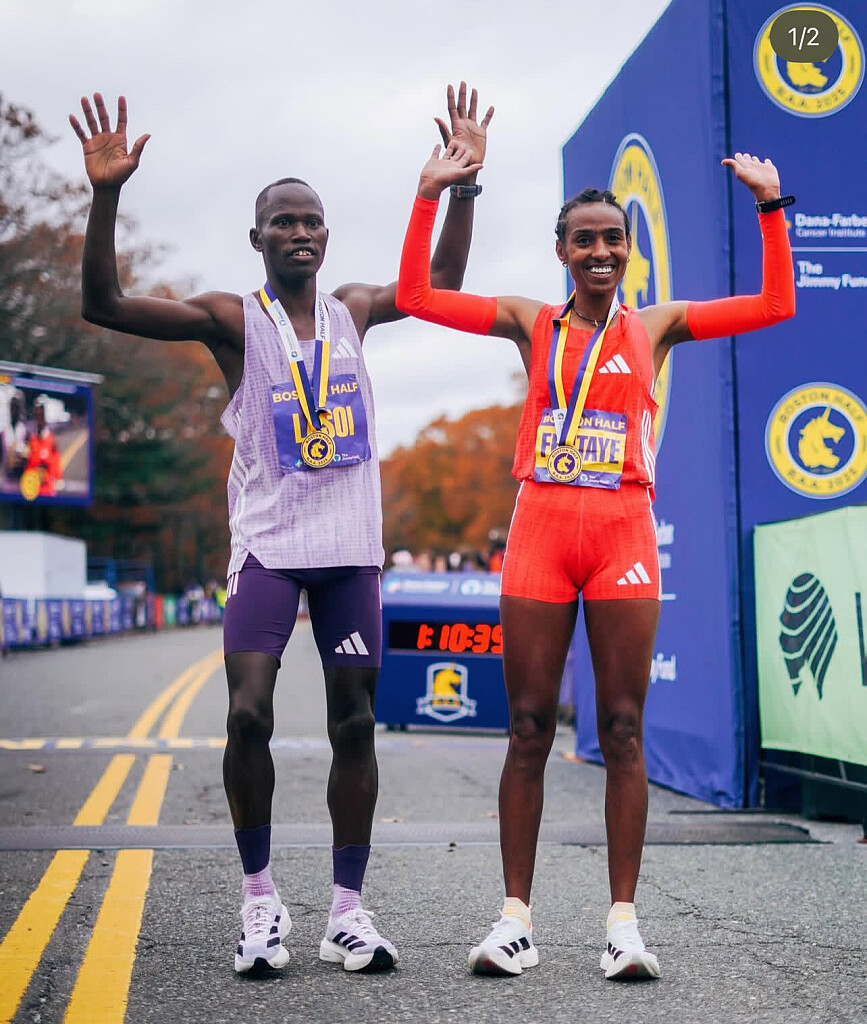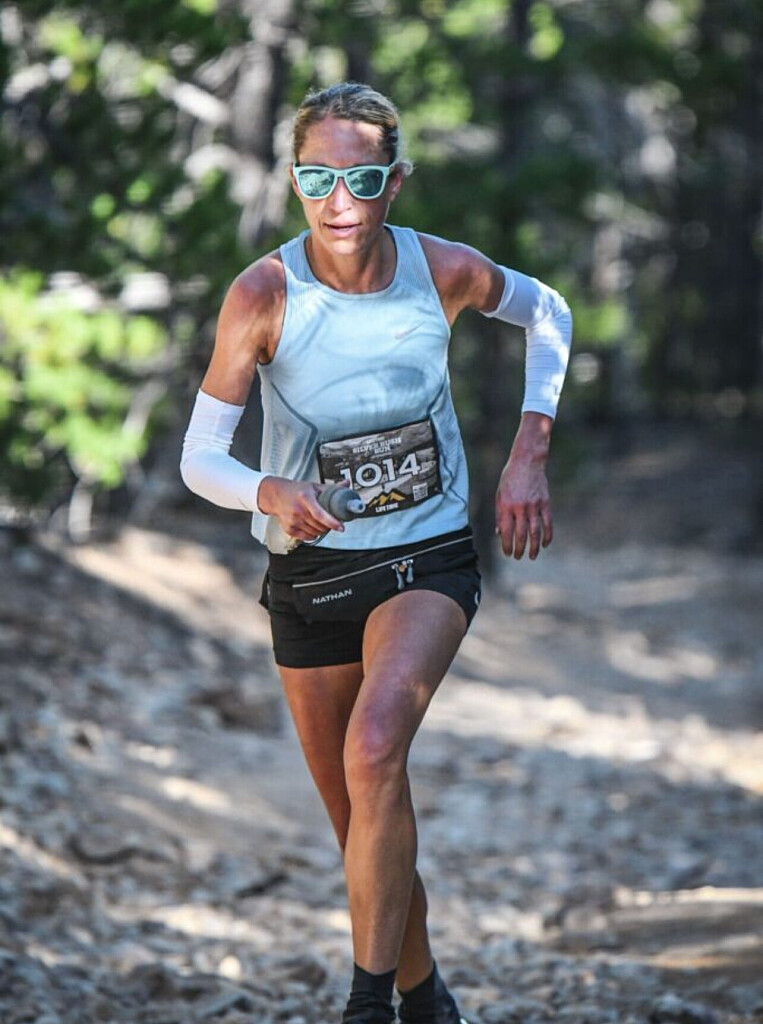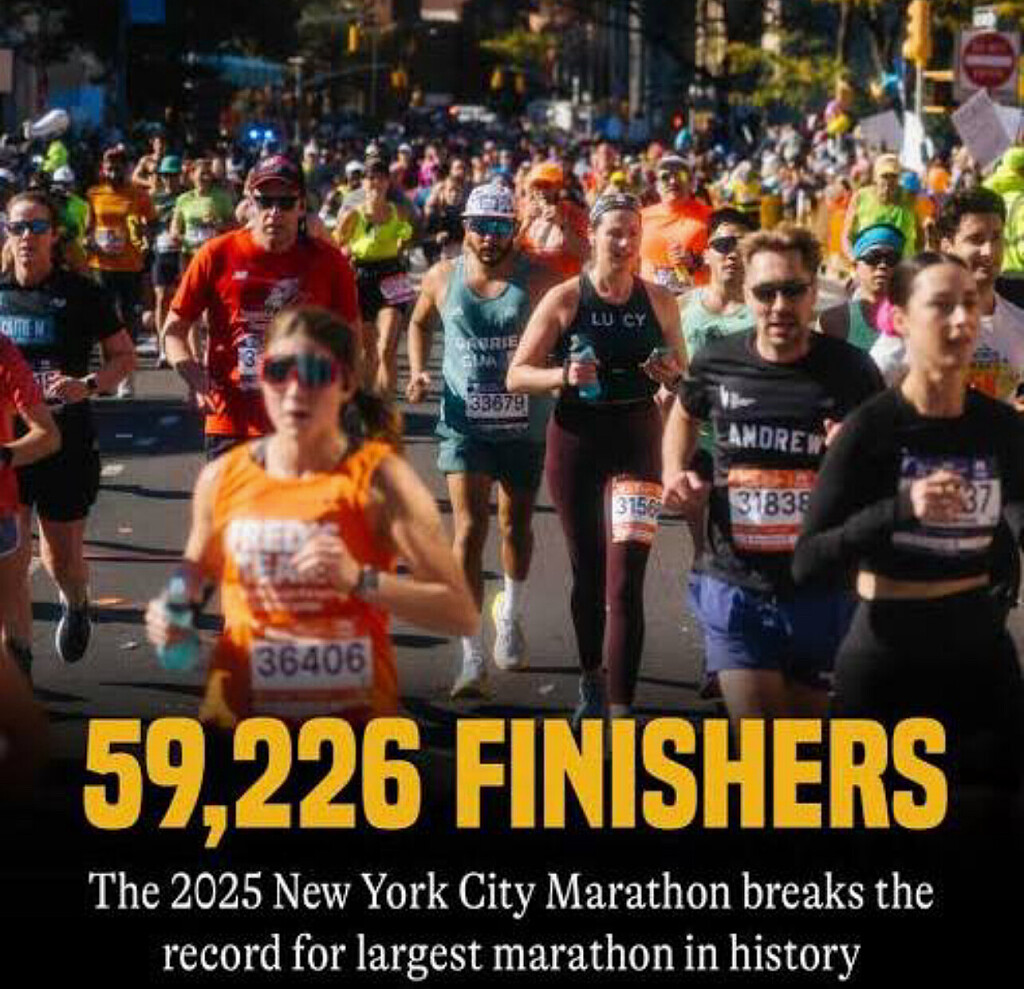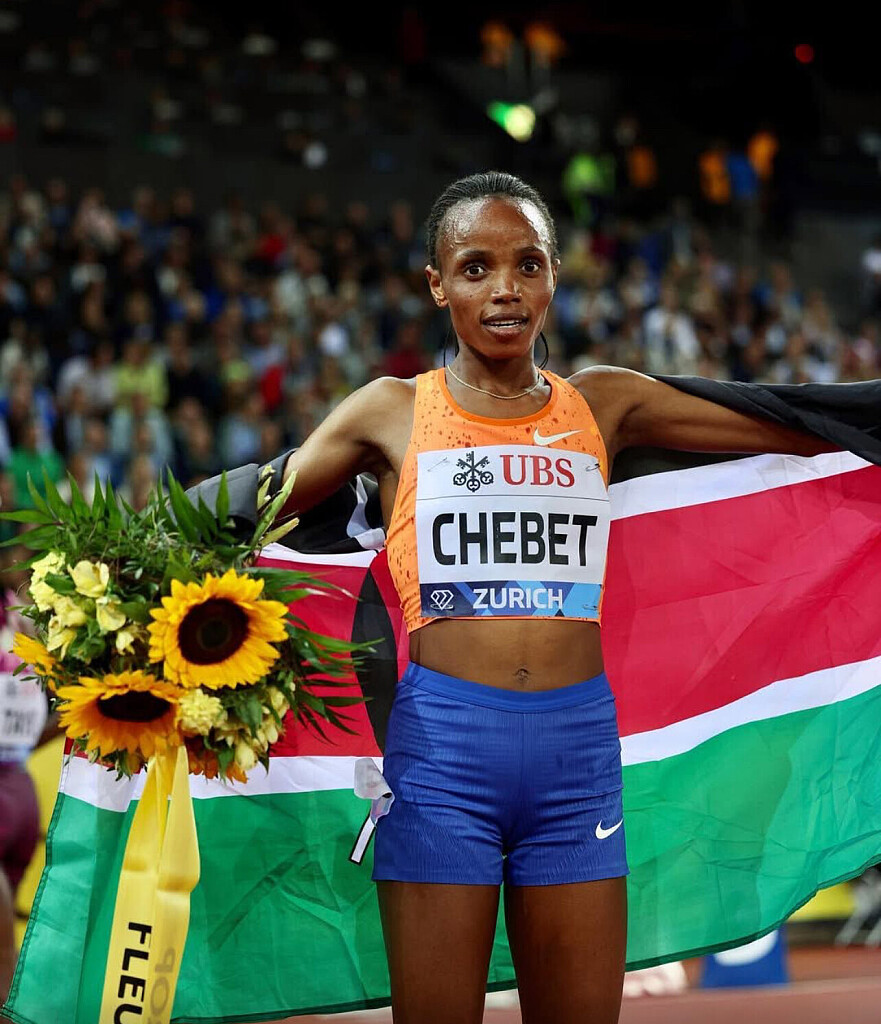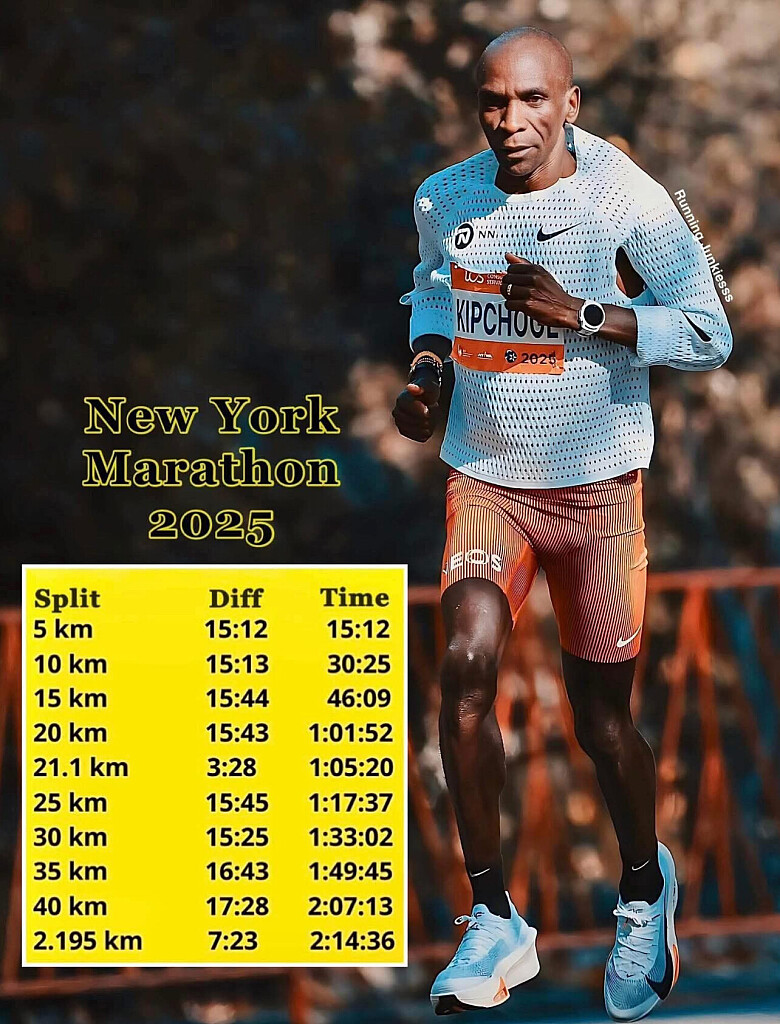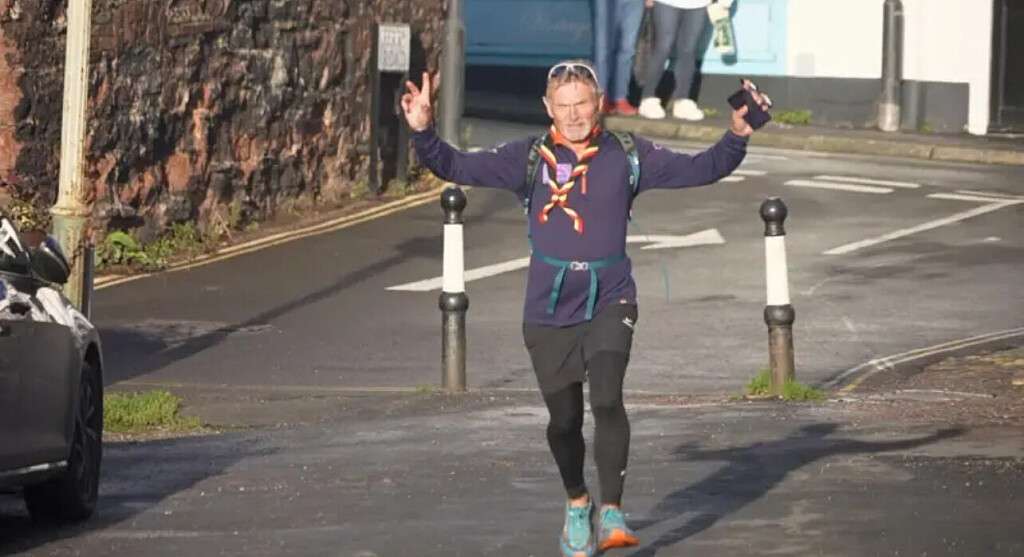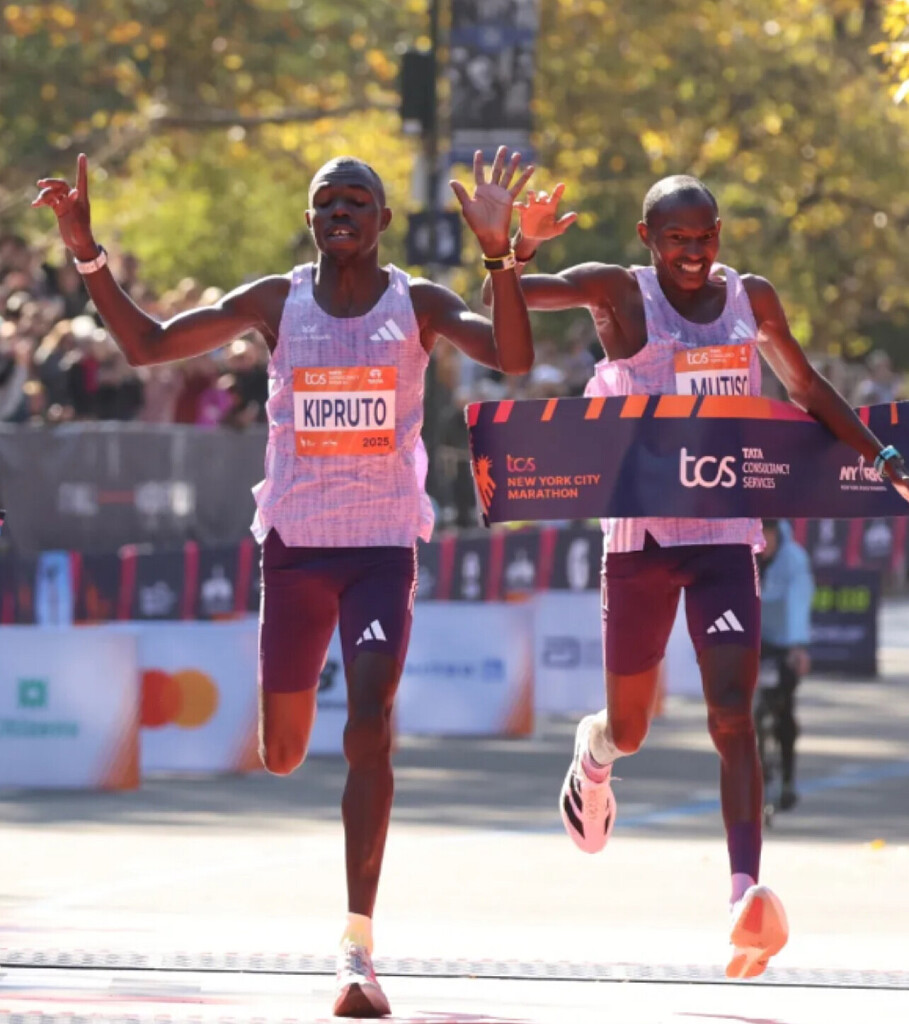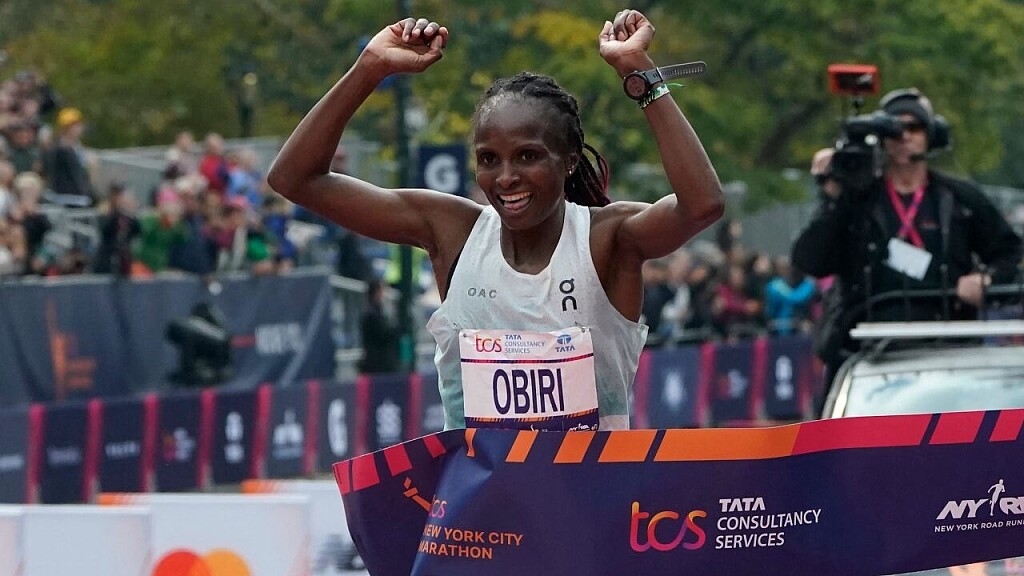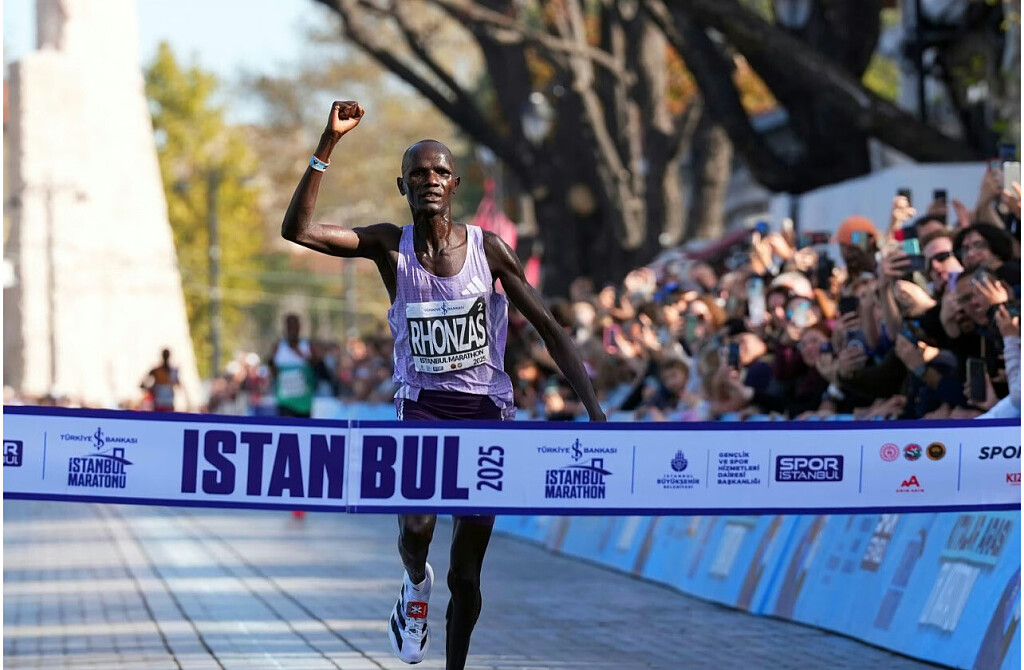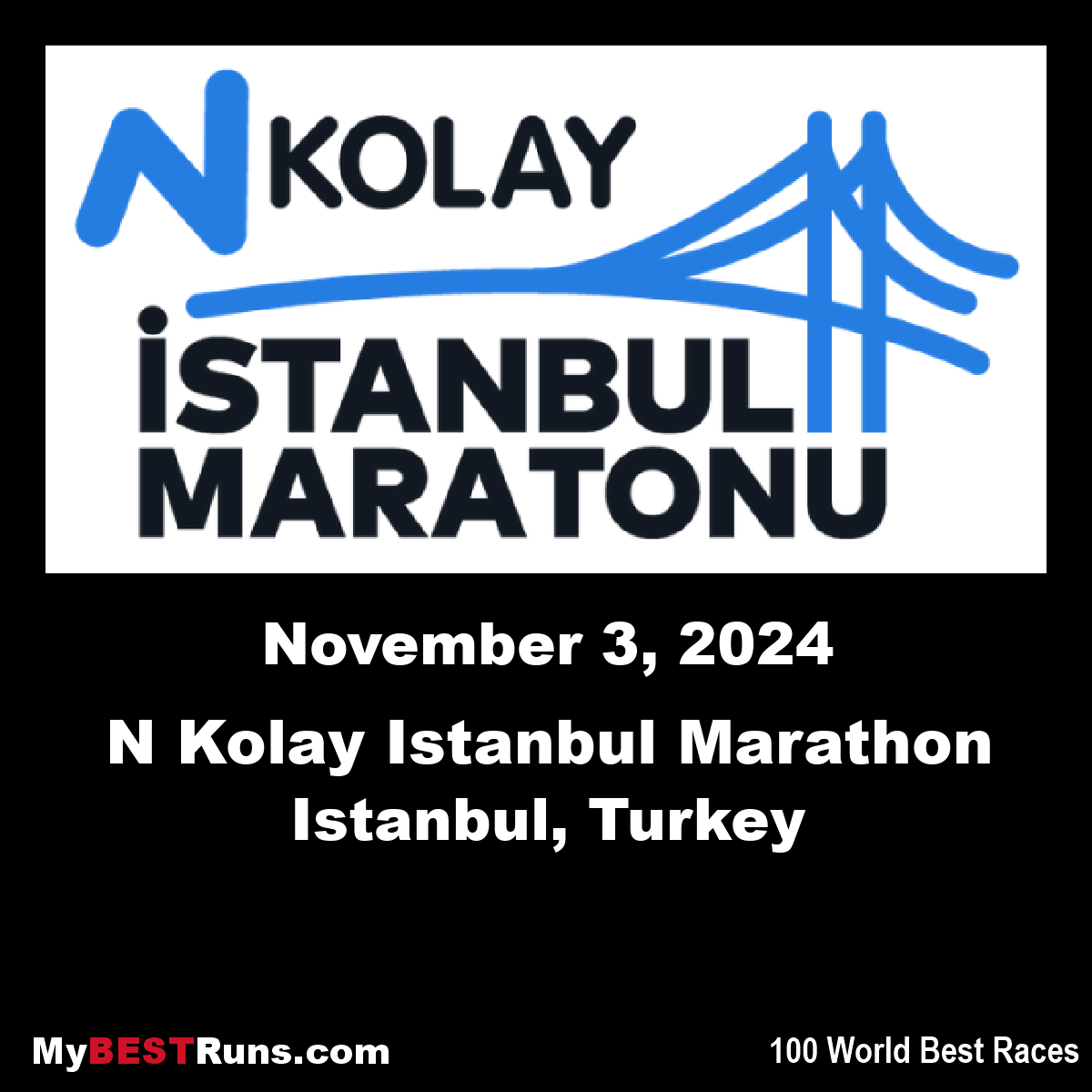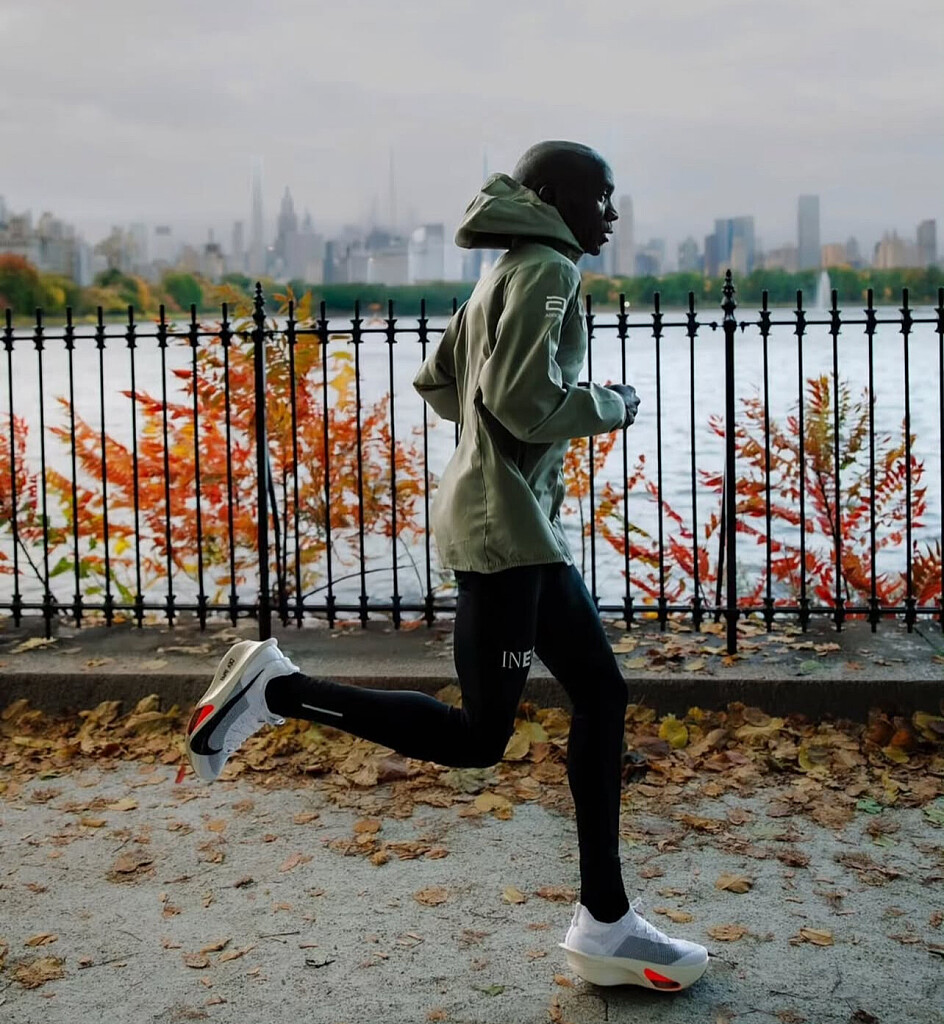Running News Daily
Running News Daily is edited by Bob Anderson. Send your news items to bob@mybestruns.com Advertising opportunities available. Train the Kenyan Way at KATA Kenya and Portugal owned and operated by Bob Anderson. Be sure to catch our movie A Long Run the movie KATA Running Camps and KATA Potato Farms - 31 now open in Kenya! https://kata.ke/
Index to Daily Posts · Sign Up For Updates · Run The World Feed
Articles labeled
Tough Conditions but Strong Performances at KATA (07) Salgaa–Rongai Time Trial
The fourth KATA (07) Time Trial was held today on the Salgaa–Rongai route, with Camp ID KATA (07) under the direction of operator Amos Chirchir, based in Sachangwan, Kenya.
Athletes were tested by a demanding environment, yet still delivered solid performances and personal bests. Conditions at race time included:
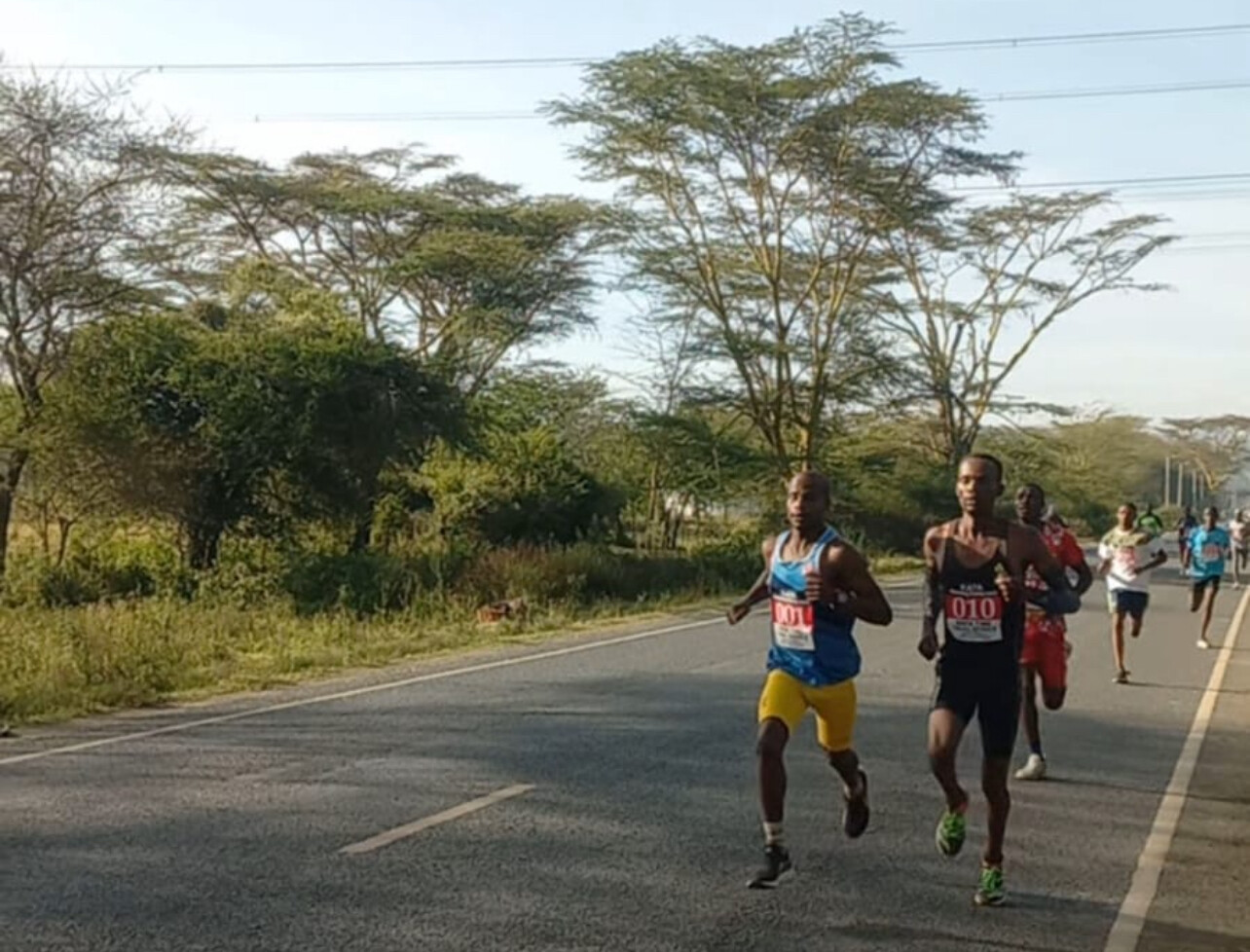
• Temperature: 68°F (20°C)
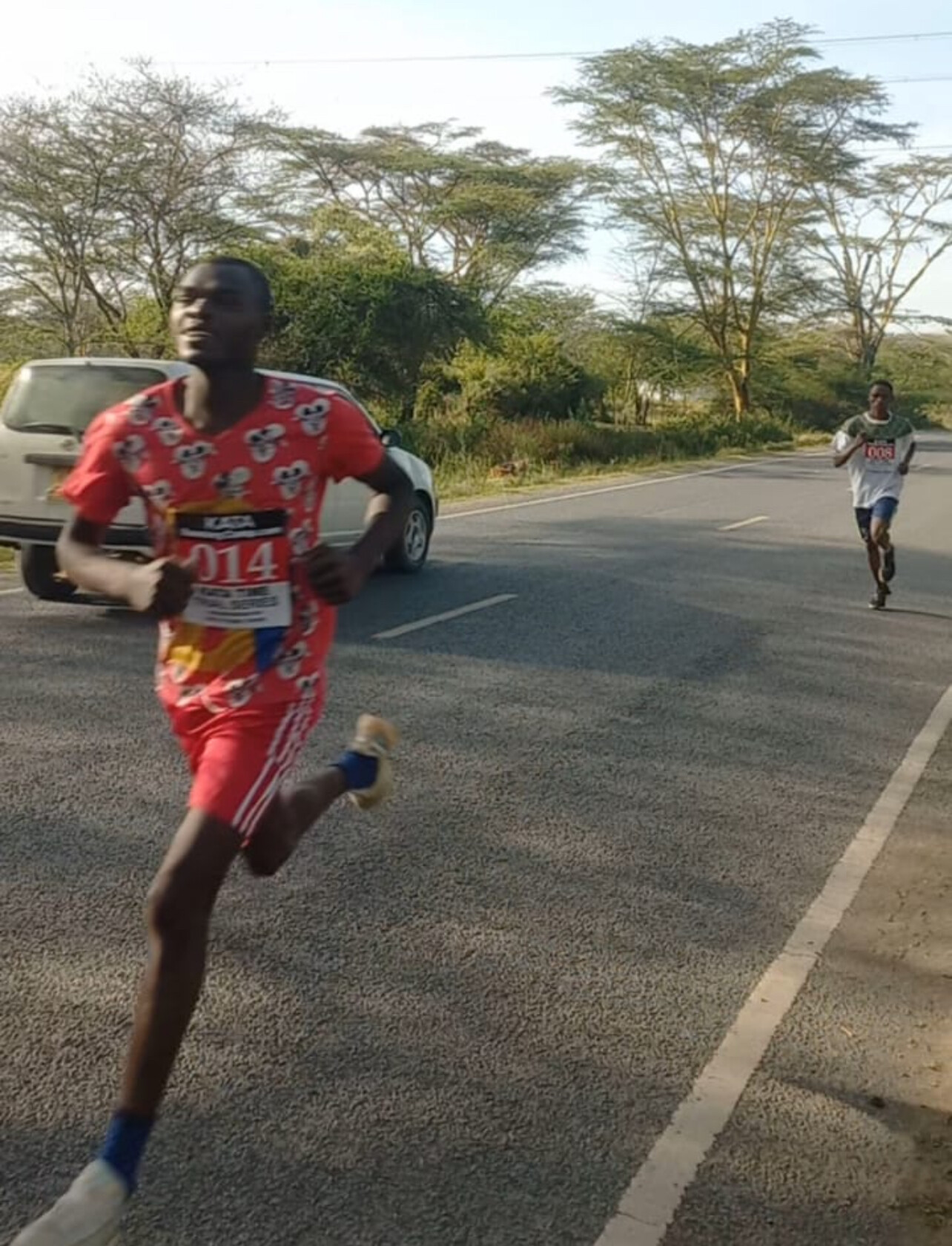
• Humidity: 71%
• Wind: 4 mph from the south
• UV Index: 4.9
Despite these factors, the field responded with determination and competitive depth.
Men’s 10K: Kirui Controls the Race on Home Roads
The men’s 10K was dominated by Robert Kirui (23, Bib 010), who hails from the Salgaa–Rongai area and trains regularly on the route. Kirui controlled the race from the front, stopping the clock at 30:45
Weldon Langat (19, Bib 001) finished second in 30:53, drawing on his experience despite managing a minor arch injury in recent weeks. Emmanuel Bor (24, Bib 026) completed the podium in 31:15.
Men’s 10K Results
1. Robert Kirui (23, 010) – 30:45
2. Weldon Langat (19, 001) – 30:53
3. Emmanuel Bor (24, 026) – 31:15
4. Kelvin Kipngetich (18, 023) – 32:28
5. Ronald Cheruiyot (25, 022) – 32:49
6. Bernard Kiptum (19, 002) – 34:50
7. Lameck Mokua (35, 021) – 35:04
8. Samuel Sang (35, 019) – 36:10
9. Mark Kibet (18, 008) – 36:34
10. Gedion Rotich (20, 014) – 37:04
Women’s 5K: Wambui Leads Under Testing Conditions
In the women’s 5K, Elizabeth Wambui (20, Bib 016) delivered the top performance of the day, winning in a fast 17:42 despite the challenging conditions.
Ida Chepkorir (16, Bib 005) followed in 19:54, continuing to gain valuable racing experience.
Women’s 5K Results
1. Elizabeth Wambui (20, 016) – 17:42
2. Ida Chepkorir (16, 005) – 19:54
Building Resilience Through Racing
With four time trials now completed at KATA (07), the Salgaa–Rongai route continues to serve as an effective proving ground. Harsh conditions, honest courses, and regular competition remain central to the KATA model—developing not only speed, but resilience and race intelligence.
by Boris Baron
Login to leave a comment
KATA Thika Hosts 51st Monthly Time Trial as Youth and Experience Deliver Strong Performances
The 51st KATA Monthly Time Trial was held today in Thika, Kenya, continuing a tradition that has become a cornerstone of athlete development at the Kenyan Athletics Training Academy (KATA).
With competitive fields in the 5K and 10K for both men and women, today’s time trial highlighted emerging junior talent alongside experienced runners, reinforcing KATA’s depth across age groups.
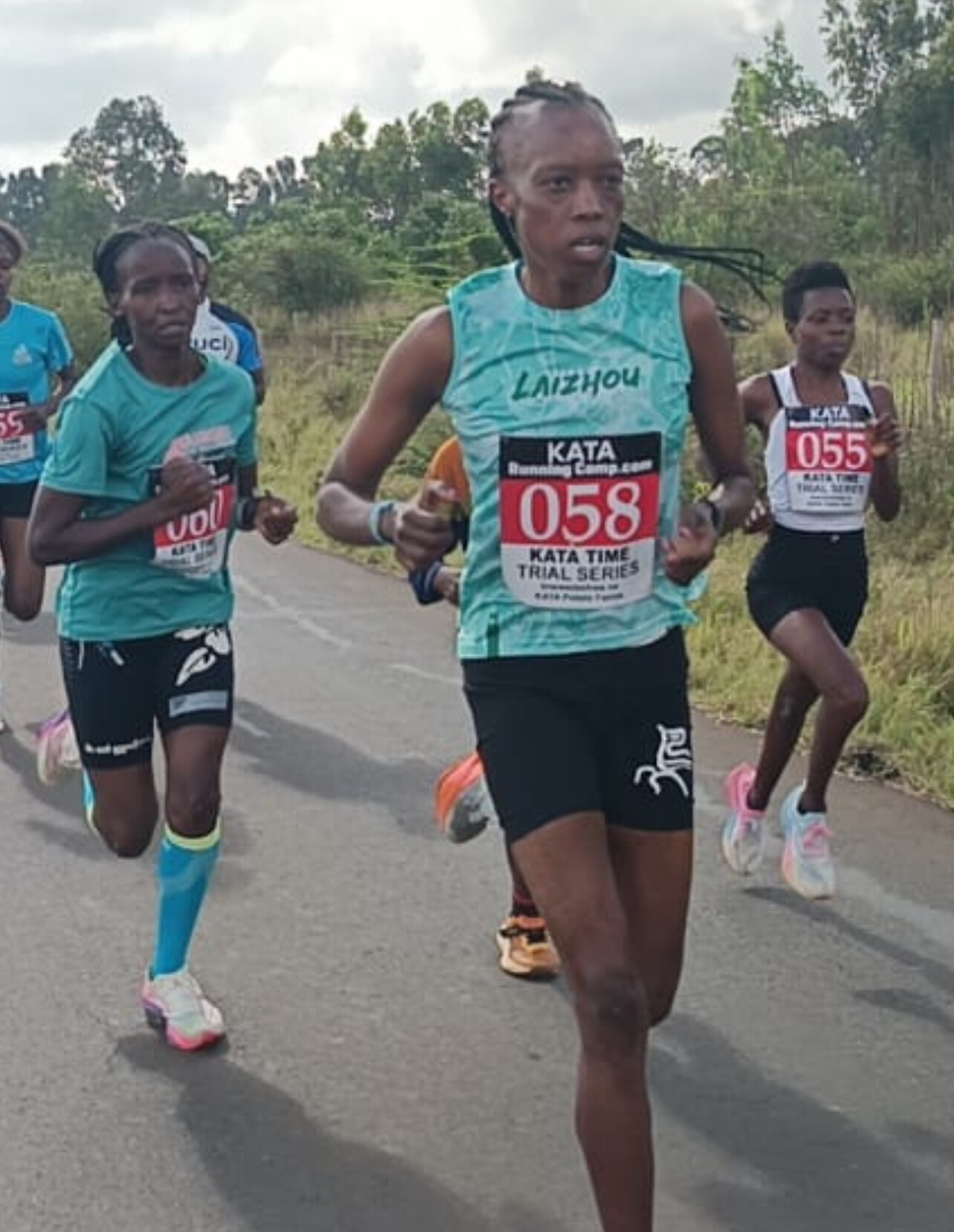
Men’s 10K: John Chege Powers to Solo Victory
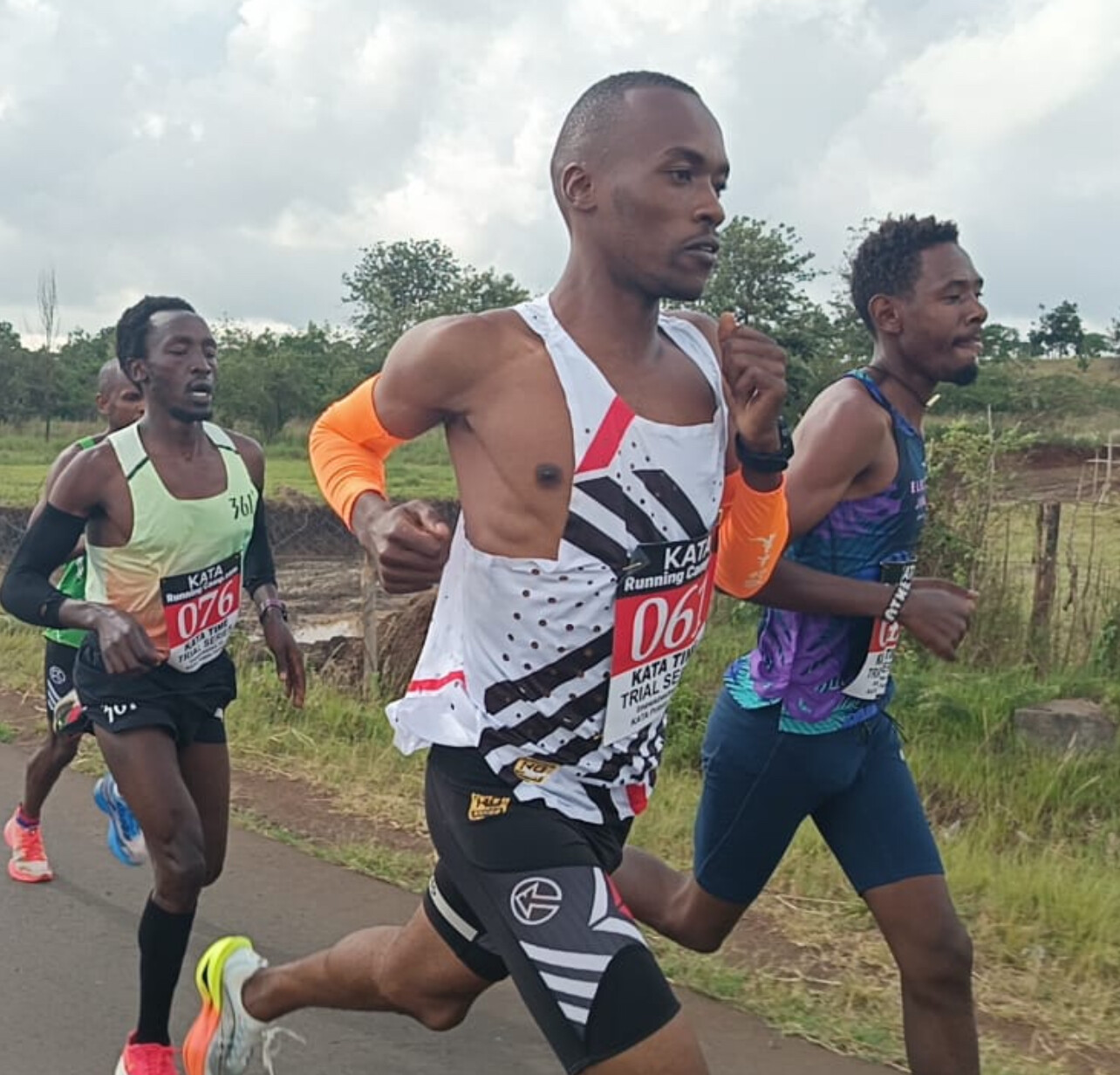
The men’s 10K saw John Chege (21, Bib 042) take control early and push on alone for much of the race, stopping the clock at 29:49 for a convincing win. Chege said afterward that he felt ready to run under 29 minutes, but acknowledged how difficult it was to maintain pace without company.
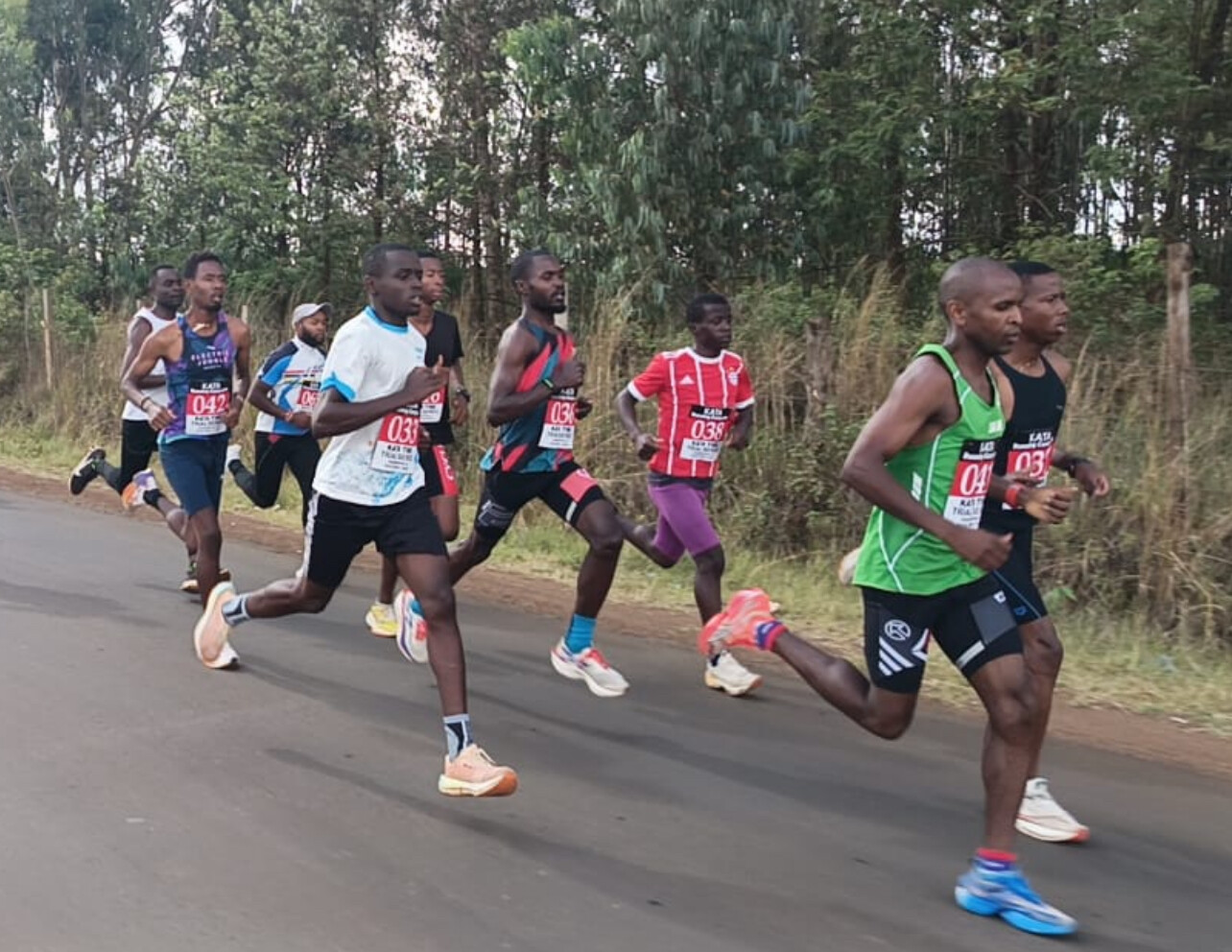
Stephen Ngigi (22, Bib 061) claimed second place in 30:04, followed by Raphael Karita (26, Bib 043) in 30:22.
Men’s 10K Results
1. John Chege (21, 042) – 29:49
2. Stephen Ngigi (22, 061) – 30:04
3. Raphael Karita (26, 043) – 30:22
4. Bernard Waweru (40, 041) – 30:38
5. Erick Mutuku (23, 040) – 30:39
6. Kristian Muthini (29, 074) – 31:57
7. Charles Ndirangu (24, 031) – 32:26
8. Erick Cheruiyot (30, 032) – 32:32
9. Fredrick Wambua (20, 073) – 32:56
10. Ismael Mburu (25, 036) – 33:31
11. Joseph Wanjiru (40, 064) – 34:12
12. John Wekesa (29, 045) – 34:27
13. Joseph Nyota (20, 035) – 35:05
14. Paul Ng’ang’a (43, 039) – 35:44
15. Joel Maina (40, 062) – 35:56
16. Kelvin Waiganjo (29, 065) – 43:23
Women’s 10K: Susan Njuu Leads, Chepkemoi Sets PB
In the women’s 10K, Susan Njuu (40, Bib 058) took the win in 35:58, showing strength and consistency throughout the race.
She was followed closely by Caren Chepkemoi (24, Bib 059), who ran a personal best of 36:12, taking more than 30 seconds off her previous mark. Naomi Wambui (40, Bib 057) completed the podium in 36:44.
Women’s 10K Results
1. Susan Njuu (40, 058) – 35:58
2. Caren Chepkemoi (24, 059) – 36:12 (PB)
3. Naomi Wambui (40, 057) – 36:44
4. Ruth Maina (23, 055) – 38:46
5. Mary Wangari (34, 077) – 39:32
6. Regina Sandiki (19, 048) – 40:22
7. Faith Mutua (16, 052) – 44:38
Men’s 5K: Teenagers Set the Pace
The men’s 5K belonged to Robin Musa (17, Bib 072), who delivered an impressive performance to win in 15:46. Close behind was Justus Nyamai (18, Bib 037) in 15:51, with Kelvin Mutunga (19, Bib 053) taking third in 16:34.
Men’s 5K Results
1. Robin Musa (17, 072) – 15:46
2. Justus Nyamai (18, 037) – 15:51
3. Kelvin Mutunga (19, 053) – 16:34
4. James Wahome (16, 033) – 16:48
5. Timothy Juma (20, 046) – 17:25
6. Erick Mwaura (18, 038) – 17:33
7. Samuel Maingi (14, 045) – 17:39
8. John Nzioka (16, 071) – 20:40
9. Ryan Kiarie (17, 075) – 23:28
Women’s 5K: Macharia Returns Strong Despite Injury
Despite nursing an injury, Ruth Macharia (27, Bib 056) topped the women’s 5K field, winning in 20:44.
She was followed by Irene Kameme (12, Bib 050), who impressed with a 21:50 run, while Assumpta Mwende (17, Bib 051) placed third in 22:08.
Women’s 5K Results
1. Ruth Macharia (27, 056) – 20:44
2. Irene Kameme (12, 050) – 21:50
3. Assumpta Mwende (17, 051) – 22:08
4. Winfred Munini (17, 047) – 22:26
5. Agnes Kavuu (13, 049) – 23:27
6. Catherine Waithera (22, 063) – 23:21
Consistency Builds Champions
Now 51 editions strong, the KATA Monthly Time Trial remains a vital proving ground for athletes across Kenya. Held today under competitive conditions, the event once again demonstrated how regular racing, honest competition, and a supportive training environment continue to produce measurable progress.
by Boris Baron
Login to leave a comment
KATA Time Trial Series
Welcome to the KATA Monthly Time Trial Held at the Kenyan Athletics Training Academy in Thika, Kenya, the KATA Monthly Time Trial is a unique and inclusive event designed to support runners of all levels in achieving their goals and showcasing their fitness. This event offers both 10K and 5K distances on an accurate, certified course, providing participants with...
more...Ndikumwenayo Stuns Gressier in Thrilling Senior Men’s Cross Country Duel at Lagoa
Thierry Ndikumwenayo delivered one of the standout performances of the cross-country season, outkicking France’s world 10,000 m champion Jimmy Gressier to win the senior men’s title at the 31st SPAR European Cross Country Championships in Lagoa, Portugal.
In a race defined by tactics and grit, the Spaniard stopped the clock at 22:05 over the demanding 7.47 km course, finishing just three seconds ahead of Gressier after a dramatic sprint to the line.
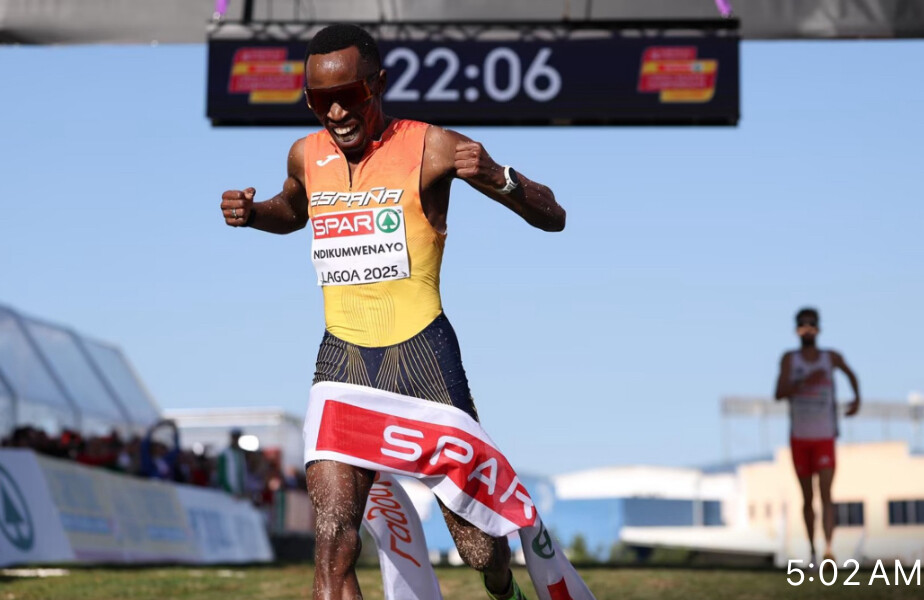
From the opening meters, the course—featuring rolling terrain, sandy stretches, and sharp turns—began to thin the field. By the midpoint, Ndikumwenayo and Gressier had broken clear, forming a two-man lead group that quickly established control. The pair matched each other stride for stride, trading subtle surges while keeping the chasers at bay.
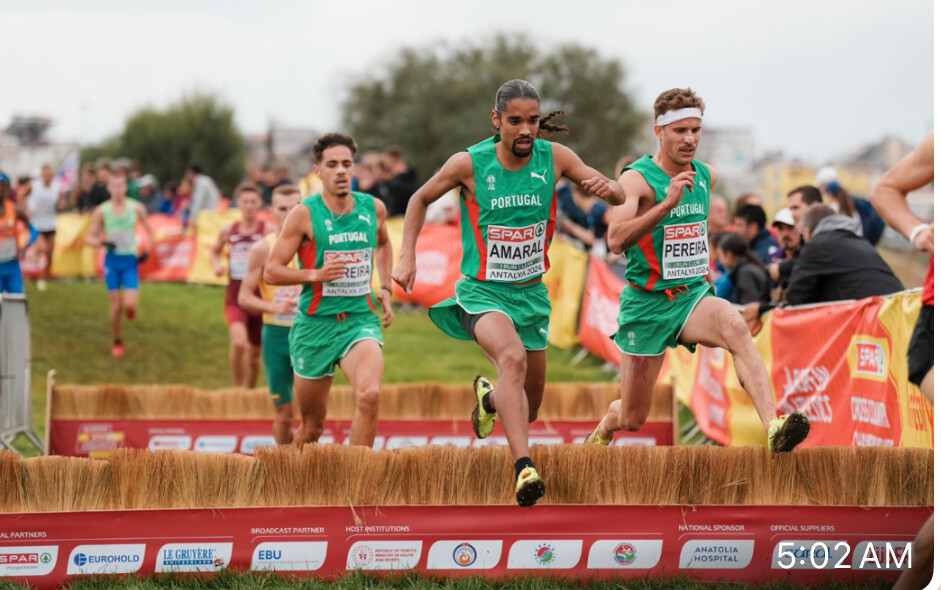
Gressier, 28, arrived in Lagoa riding the momentum of a remarkable 2025 season that included a world title over 10,000 m in Tokyo, European half-marathon gold, and European indoor records at 5,000 m. A European cross-country crown would have capped a year that showcased his range across track, road, and grass.
Ndikumwenayo had other plans. Born in Burundi in 1997 and now racing for Spain, he has steadily evolved into one of Europe’s most complete distance runners. After taking bronze at last year’s championships in Antalya, he arrived in Portugal sharper, stronger, and ready to challenge for gold.
The decisive moment came on the final bend. Gressier, preparing to unleash his trademark finishing kick, briefly lost his footing—just enough hesitation for Ndikumwenayo to strike. The Spaniard surged decisively and held on through the line, sealing a memorable victory in one of the closest finishes of the championships.
Behind the front two, Switzerland’s Dominic Lokinyomo Lobalu claimed bronze in 22:23 after a hard-fought battle, edging Great Britain’s Scott Beattie, who finished fourth in the same time. Ireland’s Jack O’Leary took fifth in 22:25, playing a key role in Ireland securing its first senior men’s team medal at these championships in 25 years.
Spain’s dominance was underlined by strong supporting runs from Abdessamad Oukhelfen (6th) and Aarón Las Heras (9th), giving the nation a comfortable team title and confirming its depth in European cross-country.
Top 10 – Senior Men’s Cross Country
1. Thierry Ndikumwenayo (ESP) — 22:05
2. Jimmy Gressier (FRA) — 22:08
3. Dominic Lokinyomo Lobalu (SUI) — 22:23
4. Scott Beattie (GBR) — 22:23
5. Jack O’Leary (IRL) — 22:25
6. Abdessamad Oukhelfen (ESP) — 22:27
7. Ruben Querinjean (LUX) — 22:28
8. Simon Sundström (SWE) — 22:29
9. Aarón Las Heras (ESP) — 22:30
10. Brian Fay (IRL) — 22:31
Ndikumwenayo’s victory in Lagoa was about more than a narrow margin. It marked the arrival of a runner fully in command of his craft—strong, patient, and fearless when it mattered most. On a course that rewarded toughness and timing, he delivered both, producing one of the defining moments of the 2025 European cross-country season.
by Robert Kibet for My Best Runs
Login to leave a comment
How One Tribe in Kenya Came to Dominate Global Distance Running
There may be no statistic in all of sports more astonishing than this one.
The Kalenjin, an ethnic group—often referred to as a tribe—in Kenya, make up about 13.4% of the country’s population, roughly 6.3 million people. On a global scale, they represent about one out of every 1,000 people worldwide.
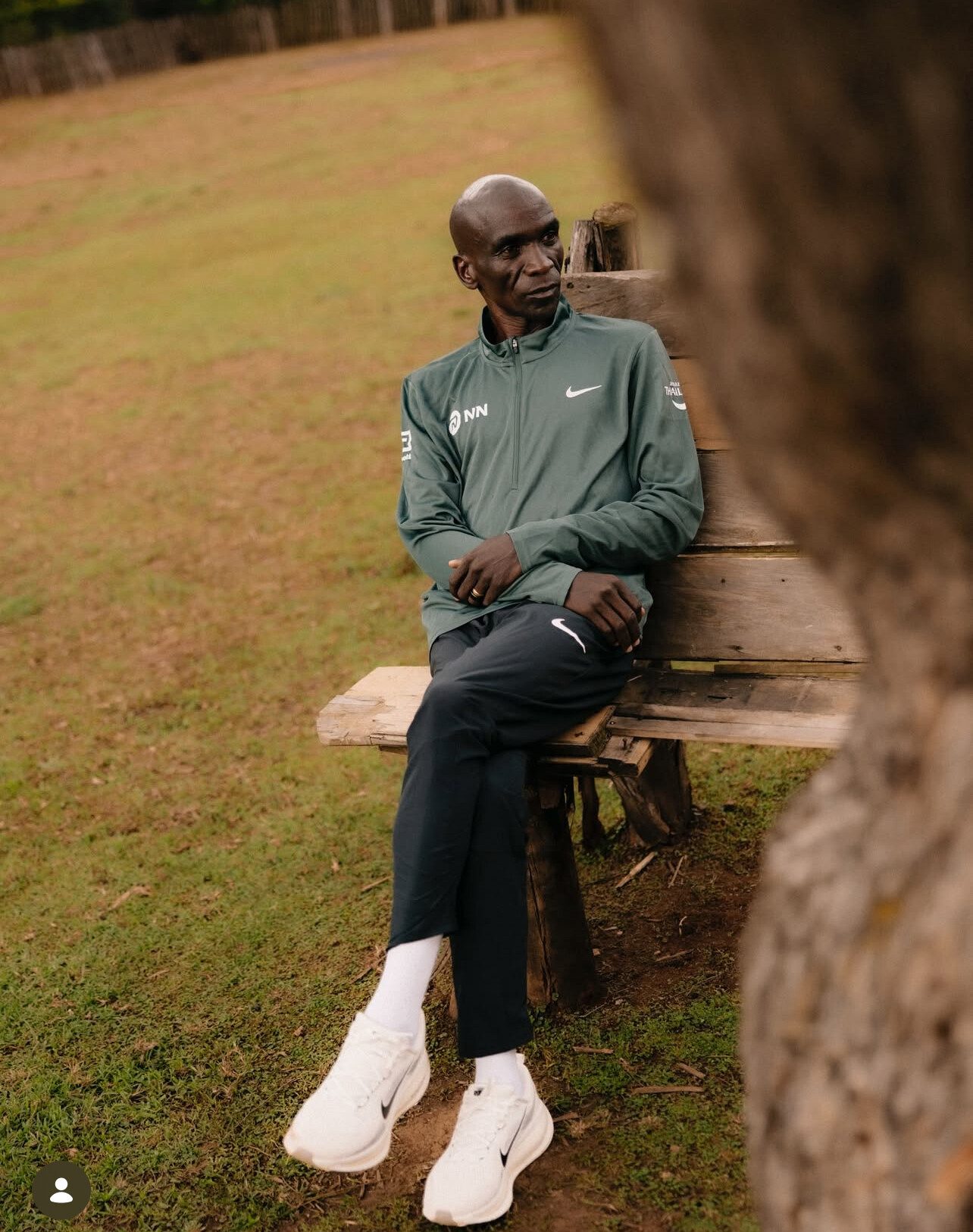
Yet this small community has produced an overwhelming share of the world’s greatest distance runners.

Their dominance has been so complete, and so sustained, that it has been described as “the greatest geographical concentration of achievement in the annals of sport.” And it is hard to argue otherwise.
From the Rift Valley to the World Stage
Most elite Kalenjin runners come from Kenya’s Rift Valley region, particularly areas such as Nandi, Elgeyo-Marakwet, Uasin Gishu, and Baringo, where elevations range from 2,000 to 2,400 meters (6,500–8,000 feet) above sea level.
Here, running is not a hobby—it is part of daily life.
Children grow up walking and running long distances, often on dirt roads. Training at altitude is the norm, not a strategy. And success stories are local and visible, creating a powerful cycle of belief and opportunity.
Champions Across Eras
The Kalenjin impact on global athletics stretches back more than half a century.
Kipchoge Keino, one of the pioneers of Kenyan distance running, won Olympic gold in the 1500 meters at the 1968 Mexico City Games and the 3000-meter steeplechase in 1972, helping place Kenyan runners on the world map.
Since then, Kenyan athletes—many of them Kalenjin—have dominated:
• The 3000-meter steeplechase, winning Olympic gold in nearly every Games since 1968
• The 5,000 meters and 10,000 meters at World Championships
• The marathon, particularly at the World Marathon Majors
Masters of the Marathon
Perhaps nowhere is this dominance more visible than in the marathon.
Kalenjin runners have repeatedly won and controlled races such as:
• Berlin Marathon
• London Marathon
• Chicago Marathon
• Boston Marathon
• New York City Marathon
These victories are not isolated moments—they are part of a long, uninterrupted pattern.
At the center of it all stands Eliud Kipchoge, widely regarded as the greatest marathon runner in history. A member of the Kalenjin community, Kipchoge has:
• Won two Olympic marathon gold medals (2016, 2021)
• Set a world record of 2:01:09 at the Berlin Marathon
• Become the first human to run 26.2 miles in under two hours
He is not an exception. He is the most refined expression of a system that has been producing champions for generations.
Why This One Tribe?
No single explanation tells the whole story, but several factors come together in the Rift Valley:
• Geography: High altitude, rolling terrain, and ideal training conditions
• Physiology: Exceptional running economy and efficient biomechanics
• Culture: Running as a respected path to success and opportunity
• Environment: Group training, competition, and long-term development from a young age
Together, these elements have created something unmatched in sport.
A Phenomenon Without Parallel
Great athletes come from everywhere. But nowhere else has such a small, specific populationproduced such sustained global dominance across events, generations, and decades.
Not sprinting.
Not swimming.
Not cycling.
Not soccer.
Only distance running.
From the highland paths of the Rift Valley to Olympic podiums and marathon finish lines around the world, the story of the Kalenjin remains one of the most extraordinary achievements in human performance.
And it is still being written.
by Boris Baron
Login to leave a comment
Nadia Battocletti Triumphs at European Cross Country Championships in Lagoa
Italian star returns to the top with commanding senior women’s victory
A Golden Return to Form: Nadia Battocletti of Italy added another chapter to her growing legacy on Sunday in Lagoa, Portugal, powering to victory in the senior women’s race at the European Cross Country Championships. On a demanding, technical course that rewarded strength and patience, Battocletti stopped the clock at 24:52, delivering a performance that combined tactical intelligence with championship composure.
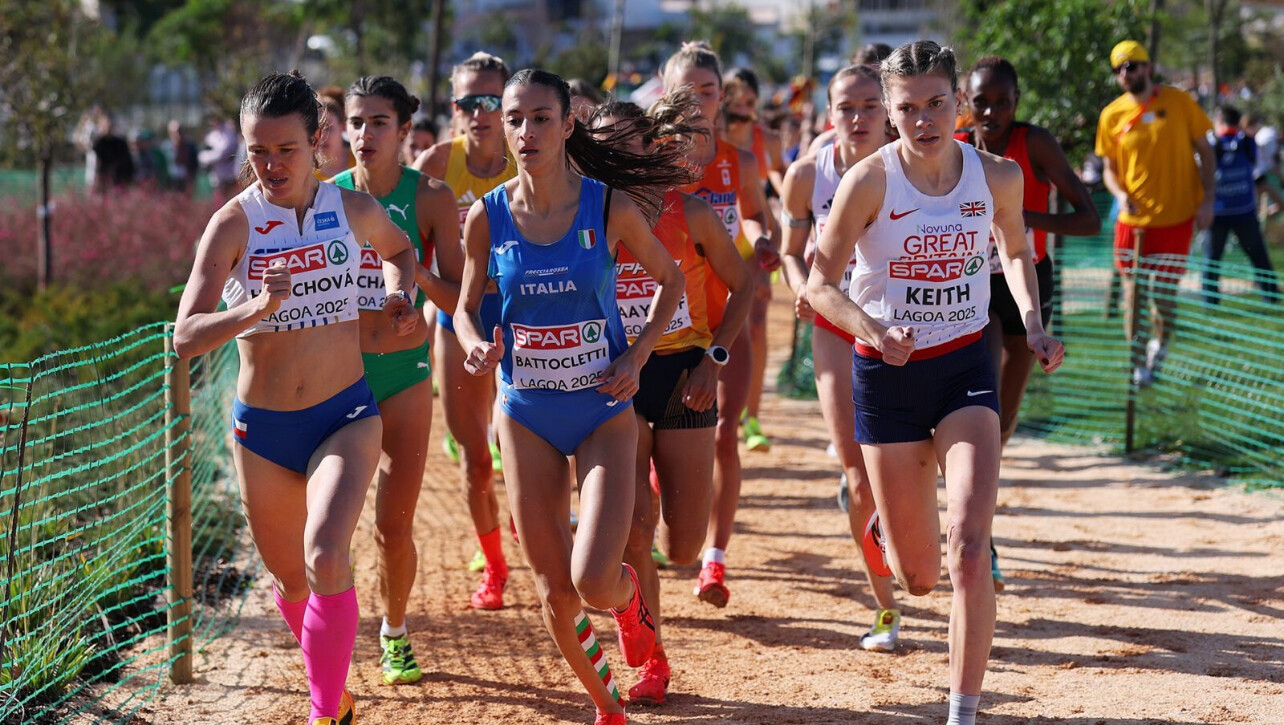
From the opening strides, the pace was honest and the intent clear. The rolling hills, slick footing, and tight turns quickly tested the field. Great Britain’s Megan Keith stayed close to the front, her determination evident with every surge, while Yasemin Can of Turkey—born in Kenya—ran with quiet confidence, conserving energy as the race unfolded. Battocletti remained calm and controlled, matching moves without overreacting as she waited for the right moment.
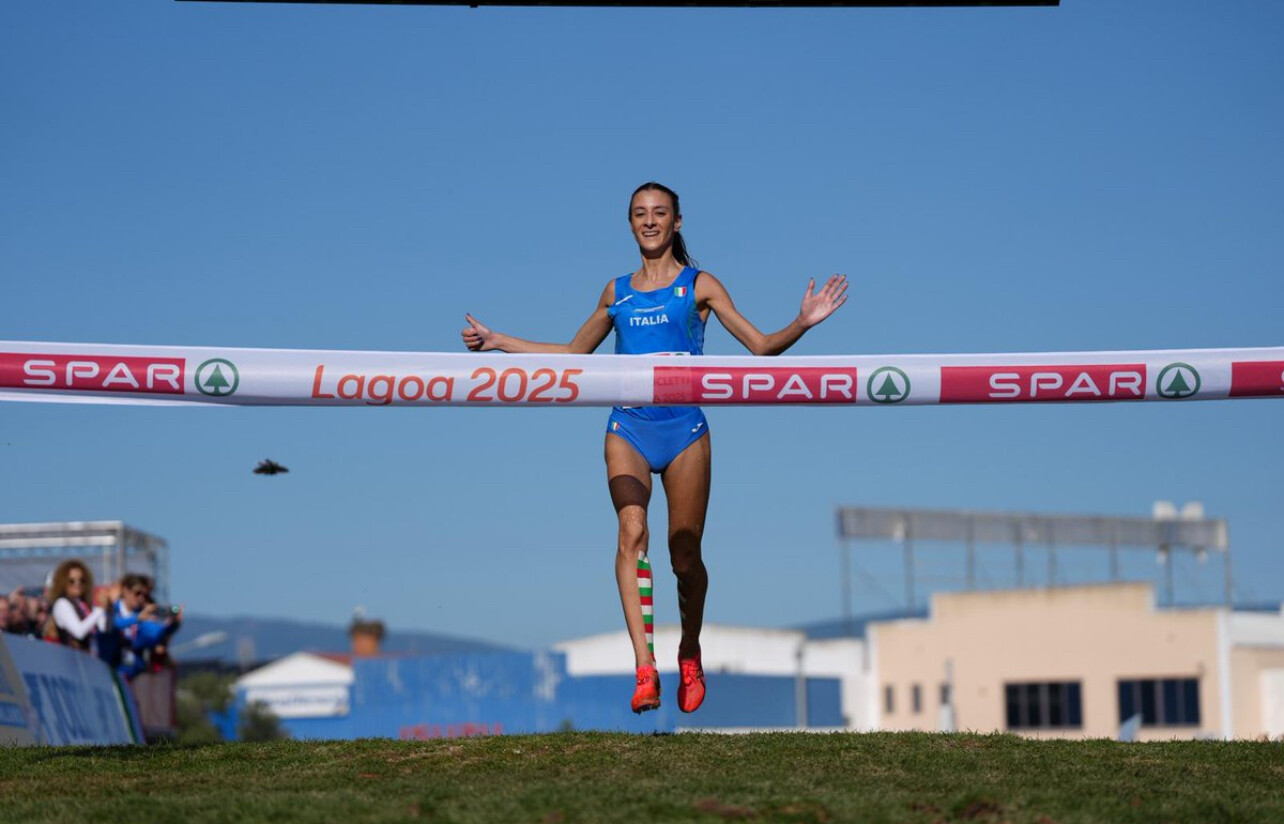
The Making of a Champion
Battocletti’s win in Lagoa was the product of years of steady progression and resilience. She first announced herself on the European stage as a junior, capturing back-to-back U20 cross country titles—Tilburg 2018 (4.3 km in 13:46) and Lisbon 2019 (13:58). Even then, her sense of rhythm, race awareness, and ability to perform under pressure set her apart.
Her transition to the senior ranks has been seamless. At the Paris 2024 Olympic Games, Battocletti claimed silver in the 10,000 meters in 30:43.35, finishing just behind Kenya’s Beatrice Chebet. One year later, at the 2025 World Championships in Tokyo, she again pushed Chebet to the limit, earning another silver in 30:38.23 and confirming her status as one of the world’s most consistent distance runners.
In Lagoa, she drew on all that experience. Battocletti controlled the tempo throughout and made her decisive move in the penultimate lap, a gradual acceleration that stretched the field and left her rivals struggling to respond.
Profiles of the Podium Finishers
Megan Keith took silver in 25:07, further cementing her reputation as one of Europe’s rising distance talents. The Scottish runner showed excellent judgment on the technical course, managing her effort and responding to changes in pace with maturity beyond her years. Her performance suggests bigger podiums may not be far away.
Yasemin Can finished third in 25:13, adding another medal to an already distinguished career. A multiple European champion on track and cross country, Can’s experience and strength were evident as she stayed in contention through the final lap before securing bronze.
Just off the podium, Belgium showcased impressive depth with Jana Van Lent in fourth (25:24), Lisa Rooms fifth (25:34), and Chloé Herbiet seventh (25:43). The Netherlands’ Amina Maatoug placed sixth (25:36), while Germany’s Elena Burkard (8th), Sweden’s Sarah Lahti (9th), and Ireland’s Fiona Everard (10th) completed a highly competitive top ten.
Tactical Brilliance on a Demanding Course
The Lagoa course added a dramatic dimension to the race. Its undulating terrain and narrow turns demanded constant focus and adaptability. Battocletti’s tactical sense stood out as she gradually increased the pressure, forcing her rivals into difficult decisions before unleashing a finishing push that settled the race.
By the final straight, her victory was beyond doubt. Battocletti crossed the line with a composed smile, while Keith and Can battled fiercely behind her, delivering a thrilling conclusion for spectators lining the course.
Looking Ahead
Battocletti’s victory in Lagoa reinforces her position as one of Europe’s premier long-distance athletes. With Olympic and world silver medals already to her name, this European cross country gold completes a remarkable arc from junior standout to senior champion.
Keith and Can also made powerful statements, and their performances hint at compelling rivalries in the seasons ahead. As winter training continues and the global calendar turns toward major championships, the senior women’s distance scene in Europe looks stronger—and more exciting—than ever.
European Cross Country Championships 2025
Senior Women – Top 10
1. Nadia Battocletti (Italy) – 24:52
2. Megan Keith (Great Britain) – 25:07
3. Yasemin Can (Türkiye) – 25:13
4. Jana Van Lent (Belgium) – 25:24
5. Lisa Rooms (Belgium) – 25:34
6. Amina Maatoug (Netherlands) – 25:36
7. Chloé Herbiet (Belgium) – 25:43
8. Elena Burkard (Germany) – 25:45
9. Sarah Lahti (Sweden) – 25:48
10. Fiona Everard (Ireland) – 25:54
by Robert Kibet for My Best Runs
Login to leave a comment
Fitzgerald Completes Historic U20 Hat-Trick as Lagoa’s Brutal Course Breaks the Field
Innes Fitzgerald dominates European Cross Country Championships, while Ireland claims a breakthrough medal
A Course Built to Punish, A Champion Built to Endure
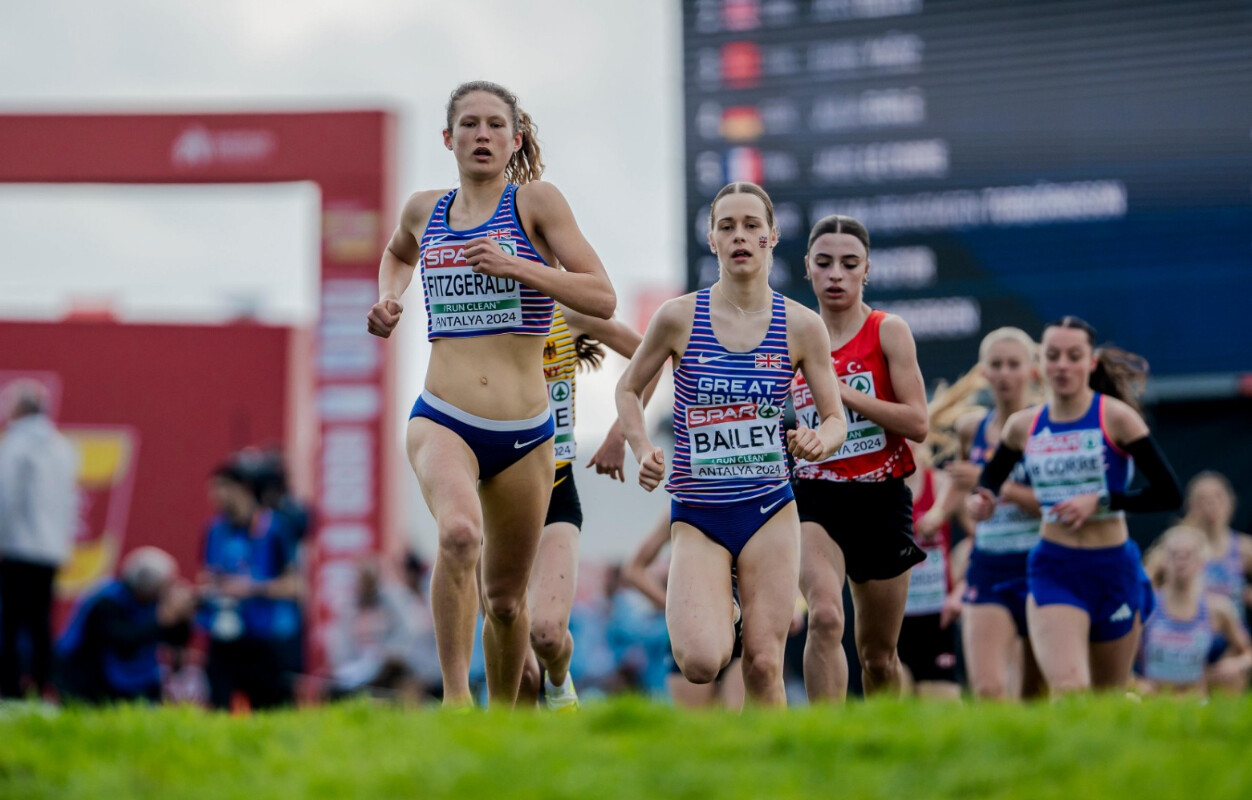
The European Cross Country Championships delivered both spectacle and separation in Lagoa, Portugal, where Great Britain’s Innes Fitzgerald stormed to a historic third consecutive victory in the women’s Under-20 race on one of the most demanding courses the event has seen in recent years.
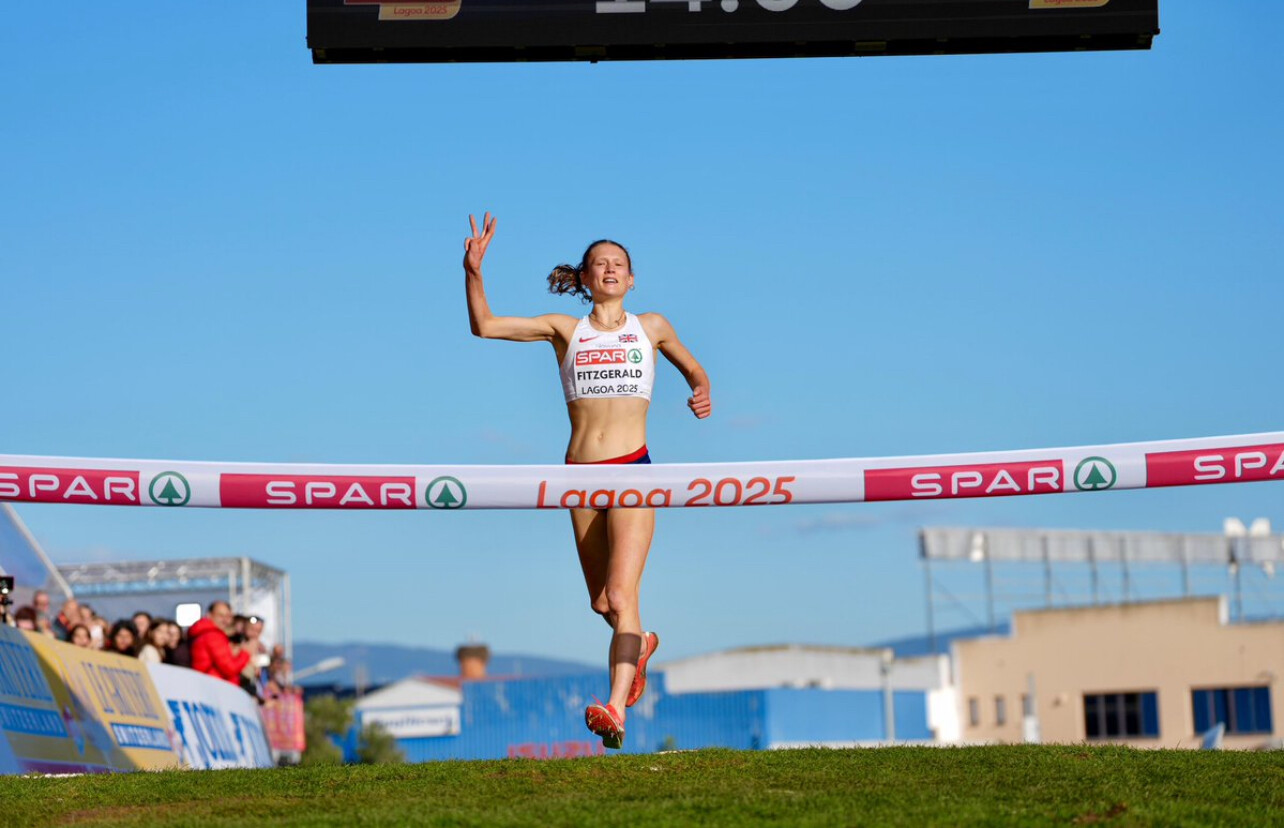
Set on a punishing 4.45km loop carved into the Algarve terrain, the course offered little rhythm. Sharp divots, twisting turns, and short but unforgiving climbs forced constant adjustment, rewarding strength, patience, and race intelligence. Commentators noted it was a circuit suited to steeplechasers and mountain runners—and from the opening strides, it shaped the race.
Early Aggression Tests the Field
Germany’s Julia Ehrle, a world mountain running champion, set the tone with an aggressive surge in the opening kilometre, immediately stretching the field. Several athletes attempted to respond, but the cost was clear early on as runners throughout the top 20 were already operating on the edge.
Fitzgerald, however, remained calm.
By the end of the first lap, the British teenager had moved decisively to the front, opening daylight behind her. Gaps widened quickly as she increased the tempo, forcing an early reckoning. Spain briefly led the team standings after one lap, but the individual contest was already tilting firmly in Fitzgerald’s favor.
Control Through Chao
There was no relief from the terrain. Turf laid specifically for the championships softened the ground but added unpredictability, with awkward divots repeatedly disrupting stride patterns. Ehrle, so fluent early, began to lose momentum as a coordinated chase pack formed behind her.
Midway through the race, Fitzgerald’s lead had grown beyond 13 seconds. Her expression told a story of controlled suffering—this was no cruise. Commentators reflected on her evolution as a championship racer, recalling earlier setbacks before she refined her front-running approach through successive wins in Brussels and Antalya.
This time, experience guided aggression.
The Race Ignites Behind the Leader
As the bell signaled the final lap, Fitzgerald’s advantage had stretched to 24 seconds, placing her on course for the largest winning margin ever recorded in the women’s U20 race.
Behind her, the medal fight erupted.
Ireland’s Anna Gardiner and Emma Hickey surged together with impeccable timing, their patient approach paying dividends as others faltered. France’s Lucie Paturel—whose modest track credentials masked exceptional endurance—moved smoothly through the field, judging her effort to perfection.
Those who attacked early paid the price. Those who waited were rewarded.
A Champion Alone at the Front
At the front, Fitzgerald ran alone—visibly exhausted, yet relentless. With a kilometre remaining, her lead had surpassed 30 seconds, a staggering margin in a race lasting just over 14 minutes.
As she entered the finishing straight, she raised three fingers in celebration, joining Steph Twell as the only athlete to win three European U20 cross country titles. Fitzgerald crossed the line in 14:35, collapsing moments later after an all-out effort.
Breakthroughs and Team Drama
Thirty seconds later, Paturel claimed a superb silver medal, while Hickey secured bronze—Ireland’s first-ever individual medal in this category—following a courageous, perfectly paced run.
The drama continued in the team standings, where every position mattered. Athletes sprinted through exhaustion on the finishing straight, and when the unofficial scores were confirmed, Great Britain emerged team champions with 33 points, ahead of Spain (38) and Sweden (43), underlining the depth behind Fitzgerald’s brilliance.
Germany’s Ehrle, whose bold opening gambit shaped the race, finished tenth—her ambition acknowledged even as it proved unsustainable.
The End of an Era, The Start of Anothe
For Fitzgerald, this was more than a victory. It marked the end of her Under-20 career. Already a senior international, a European record-holder on the track, and a proven championship racer across disciplines, she leaves the junior ranks having redefined them
For three years, the question in this race has remained the same: who dares to go with Innes Fitzgerald—and who can survive it?
In Lagoa, once again, there was only one answer.
Women’s U20 – Top 10 Results
European Cross Country Championships, Lagoa, Portugal
1. Innes Fitzgerald (Great Britain) – 14:35
2. Lucie Paturel (France) – 15:07
3. Emma Hickey (Ireland) – 15:10
4. Carmen Cernjul (Sweden) – 15:14
5. Edibe Yağız (Türkiye) – 15:15
6. Anna Gardiner (Ireland) – 15:17
7. Fanny Szalkai (Sweden) – 15:21
8. Evi Falkena (Netherlands) – 15:23
9. Shirin Kerber (Switzerland) – 15:25
10. Julia Ehrle (Germany) – 15:29
by Robert Kibet for My Best Runs
Login to leave a comment
Sinclaire Johnson Breaks American Road Mile Record at Kalakaua Merrie Mile
Thousands of runners lined Kalakaua Avenue on Saturday morning as Waikiki hosted the annual Kalakaua Merrie Mile, the traditional appetizer ahead of Sunday’s Honolulu Marathon.
The one-mile dash delivered a historic moment when American middle-distance standout Sinclaire Johnson surged to a winning time of 4:21, breaking the American road mile record in the heart of Waikiki.
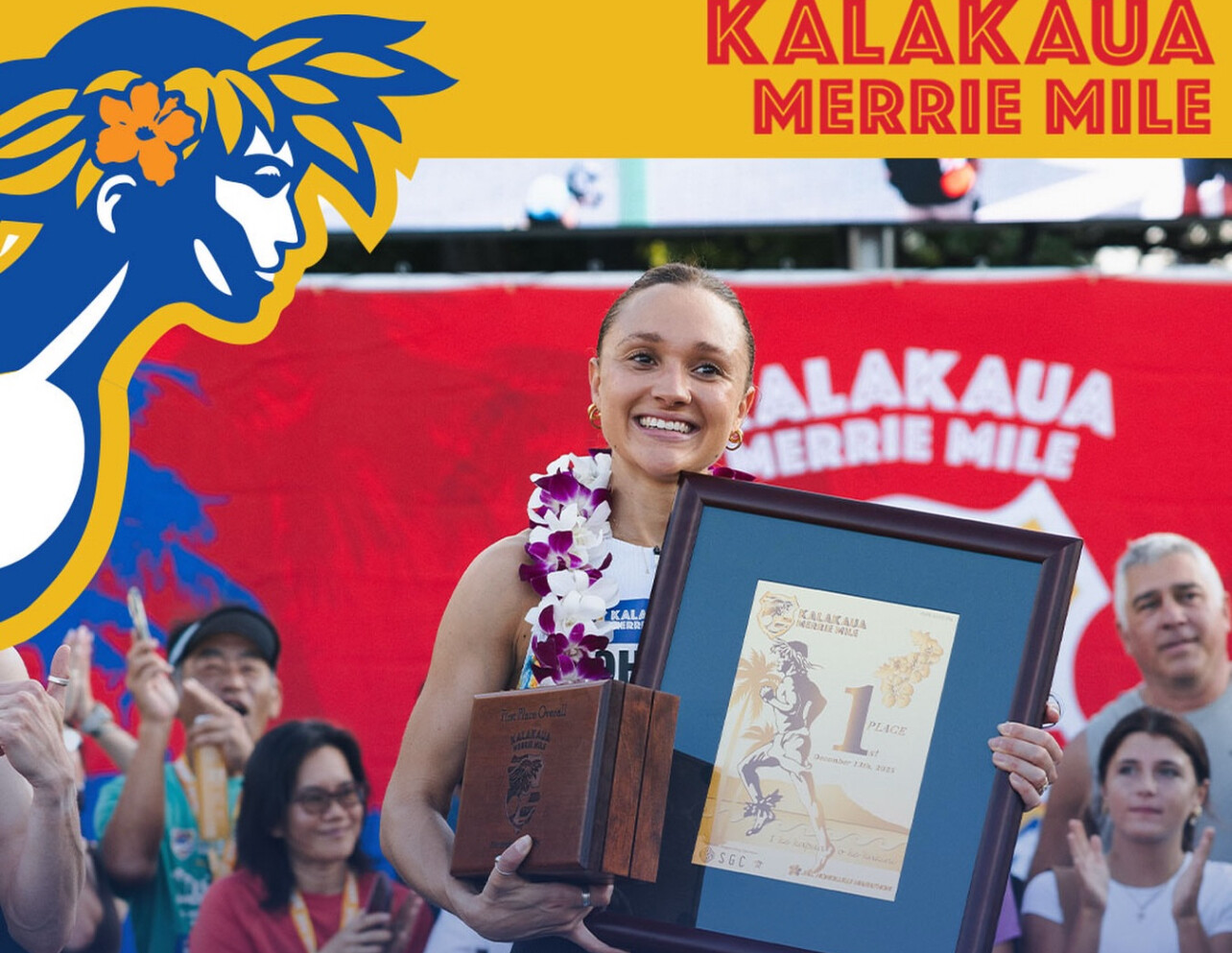
“It’s really special—I think I shocked myself today,” Johnson said after the race. “I thought maybe I could run in the 4:24 range, but to run 4:21 and get the American record is a testament to believing in myself and the work I’ve put in.”
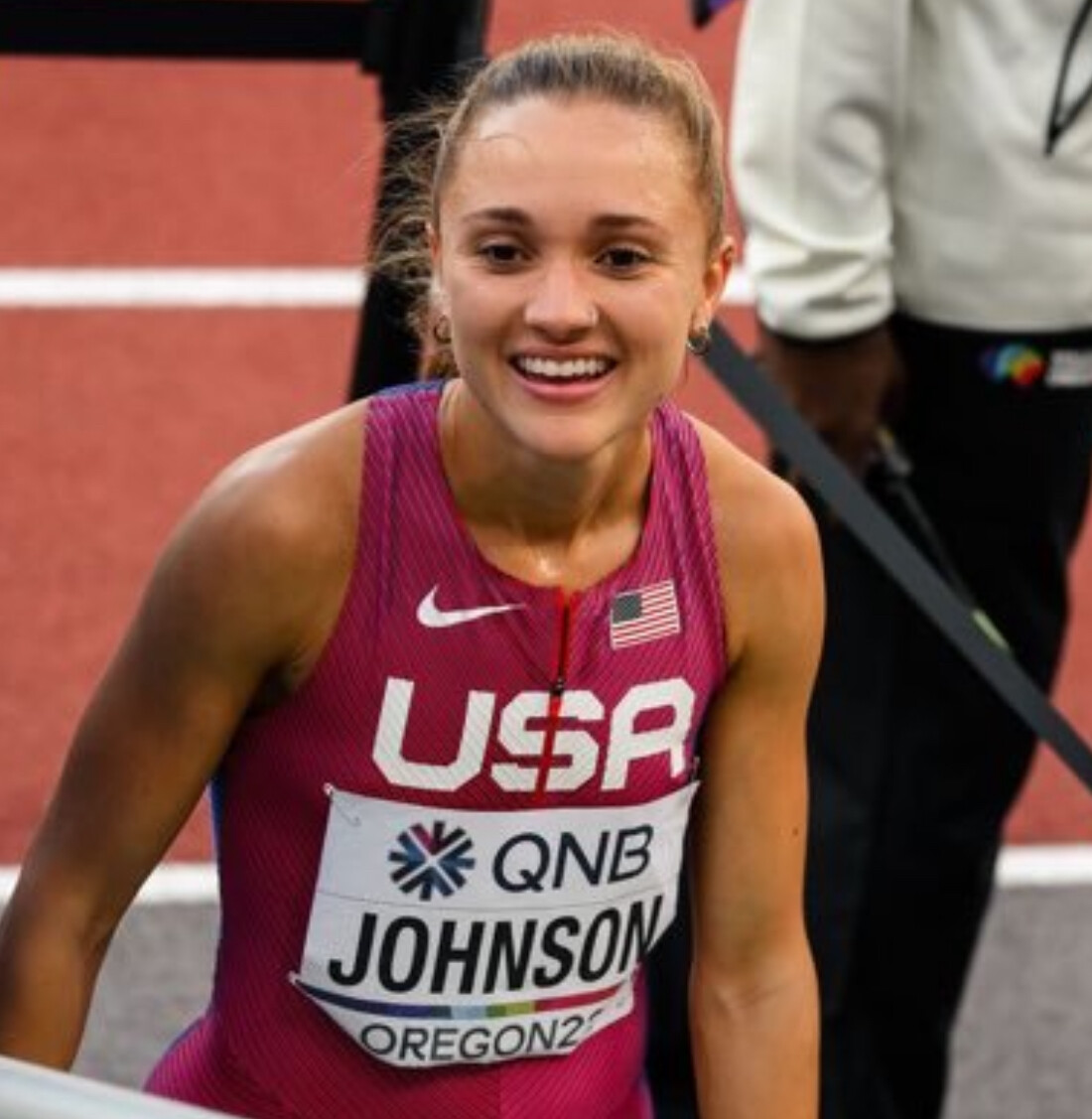
A former NCAA 1,500-meter champion at Oklahoma State, Johnson has competed on some of the sport’s biggest stages, yet she said this race stands out.
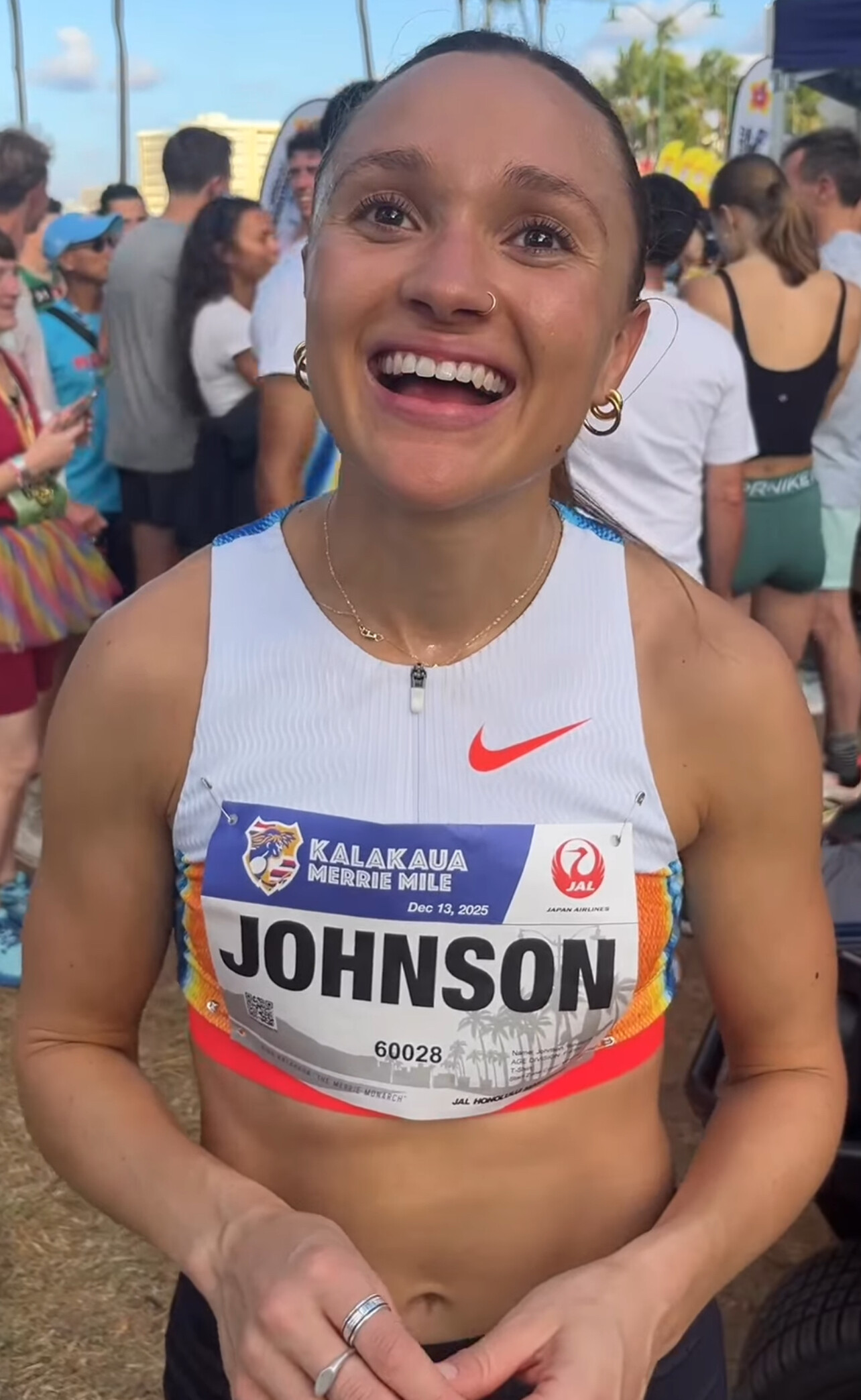
“The conditions are great—it’s sunny, there’s a little breeze, and something about the Hawaiian air just feels different,” she said. “This race is one of my favorites.”
Finishing just behind Johnson was Nikki Hiltz, last year’s winner, as part of a strong elite field that included 12 Olympians competing in Saturday’s race.
For many participants, the opportunity to share the course—and later watch world-class athletes up close—was part of the magic.
“That would be really cool if we could see them,” said Kenai Nacapui. “They just either won or came from the Olympics.”
Oliver Cheng added, “It’s really fun to see Olympians because compared to us, they run way faster.”
Maui resident Mary Trotto said the elite race never fails to amaze her. “You have to see them—it’s unbelievable. In like two minutes, they’re already at the turnaround. It just blows your mind.”
Trotto says the Merrie Mile has become a tradition worth traveling for. “Ever since they added the mile as part of the marathon weekend, I’ve done every one,” she said. “I’ll keep flying over from Maui.”
With record-setting speed, a festive crowd, and Honolulu Marathon weekend officially underway, the Kalakaua Merrie Mile once again delivered a memorable start to one of running’s most iconic race weekends.
by Boris Baron
Login to leave a comment
Vitalis Kibiwott Shatters Turkish Allcomers’ Record at Mersin Marathon
Vitalis Kibiwott delivered the breakthrough performance of his career on Sunday, storming to victory at the Mersin Marathon and smashing the Turkish Allcomers’ record. The 27-year-old Kenyan clocked a stunning personal best of 2:07:14, improving both the national mark and the course record by nearly a minute.
In the women’s race, pre-race favorite Rebecca Tanui of Kenya lived up to expectations, winning convincingly in 2:25:35 under excellent weather conditions. The Mersin Marathon holds World Athletics Elite Label status.
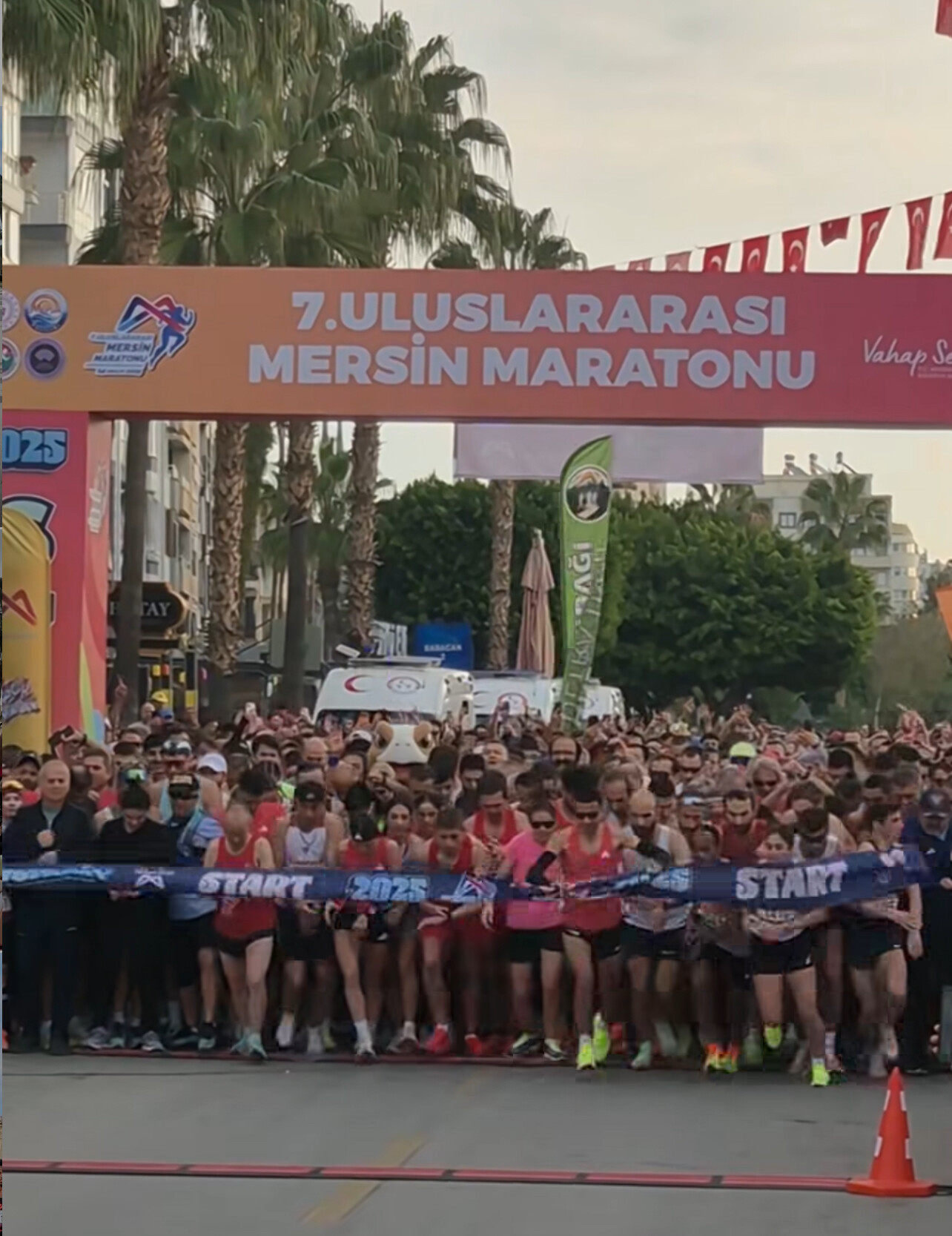
Still relatively unknown on the international marathon calendar, the Mersin Marathon is held in the major port city of Mersin, located on Türkiye’s southeastern Mediterranean coast and home to just over one million people. The seventh edition of the race attracted just over 400 marathon runners, alongside approximately 2,000 participants in the non-elite 10K. Despite its modest field size, the event has steadily built a reputation for fast times on its flat, out-and-back course.
The headline name on the men’s start list was Ghirmay Gebreslassie, Eritrea’s 2015 world champion. However, the 30-year-old was forced to drop out at 18 kilometers after developing a hamstring problem. That opened the door for a surprise turn of events, as his 18-year-old brother Abraham Embaye boldly took control of the race, passing halfway in 63:52.
Embaye remained in front deep into the race, but with just over five kilometers to go, experience prevailed. Kibiwott steadily closed the gap before moving past the young Eritrean, followed shortly by fellow Kenyan Albert Kangogo. Embaye fought on gamely to secure third place in 2:08:29.
Kibiwott finished powerfully to claim the win in 2:07:14, slicing 59 seconds off the Turkish Allcomers’ record. A year earlier, Kenyan Bethwell Kipkemboi had won in 2:08:13. Coming into the race with a personal best of 2:11:08, Kibiwott had been ranked only 11th on the start list—making his near four-minute improvement all the more remarkable.
“My training was very good, so I was expecting to run sub-2:08 and fulfilled my expectations,” said Kibiwott. “The young Eritrean was far ahead early, but I didn’t hurry. I felt strong at the end and made my move. The Mersin Marathon has a completely flat and very fast course.”
Women’s Race
Rebecca Tanui took command of the women’s race early and reached halfway in 72:30, closely shadowed by Ethiopia’s Genet Robi. The two remained together until around the 30-kilometer mark, where Tanui gradually pulled clear to secure a decisive victory.
While the course record of 2:23:08 remained intact, Tanui’s 2:25:35 was the fastest women’s marathon time run in Türkiye this year. The 33-year-old continues to show impressive consistency at the distance, following her victory at the 2023 Košice Marathon (PB 2:21:08) and a runner-up finish at this spring’s Vienna City Marathon.
Results
Men
1. Vitalis Kibiwott (KEN) – 2:07:14
2. Albert Kangogo (KEN) – 2:07:26
3. Abraham Embaye (ERI) – 2:08:29
4. Samuel Naibei (KEN) – 2:08:59
5. Abebaw Desalew (ETH) – 2:09:14
6. Isaac Kibet (UGA) – 2:10:19
Women
1. Rebecca Tanui (KEN) – 2:25:35
2. Genet Robi (ETH) – 2:26:07
3. Peninah Jerop (KEN) – 2:30:52
4. Millicent Kibet (KEN) – 2:31:05
5. Letebrhan Gebreslasea (ETH) – 2:35:35
by Race News Service
Login to leave a comment
13th Annual Christmas Double 15K, Palo Alto 29K, 5K & Bob Anderson Mile
Standout Performances Highlighted a Fun Family Event
The 13th Annual Christmas Double 15K and the accompanying Palo Alto 10k, 5K, and Bob Anderson Mile were held in Palo Alto, California, under excellent racing conditions. Temperatures hovered around 50 degrees, with no wind, on flat out-and-back courses along a mostly paved bike path.
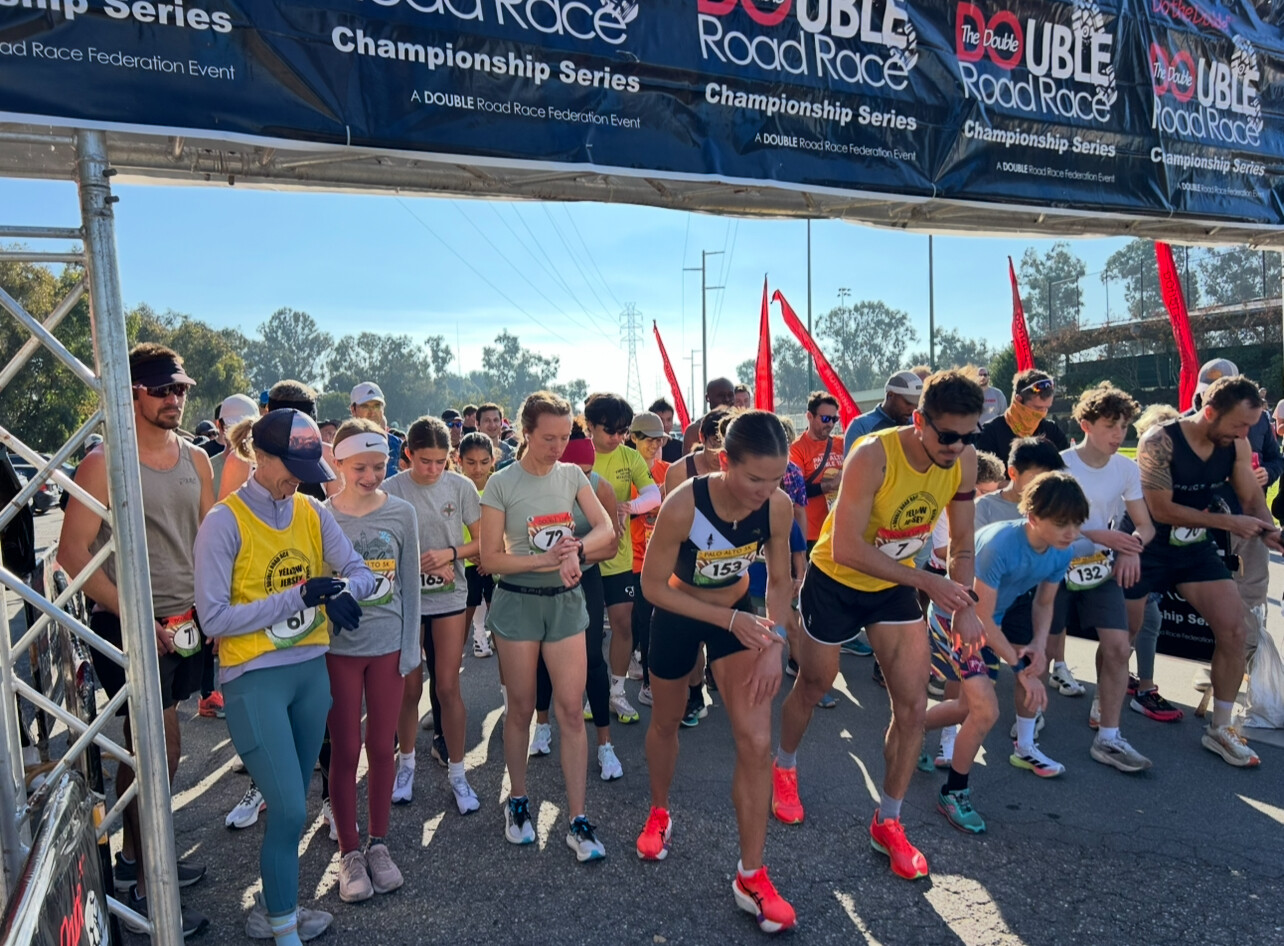
There were only a few standout performances, those efforts were very good and clearly separated themselves on the day.

Double 15K Highlights
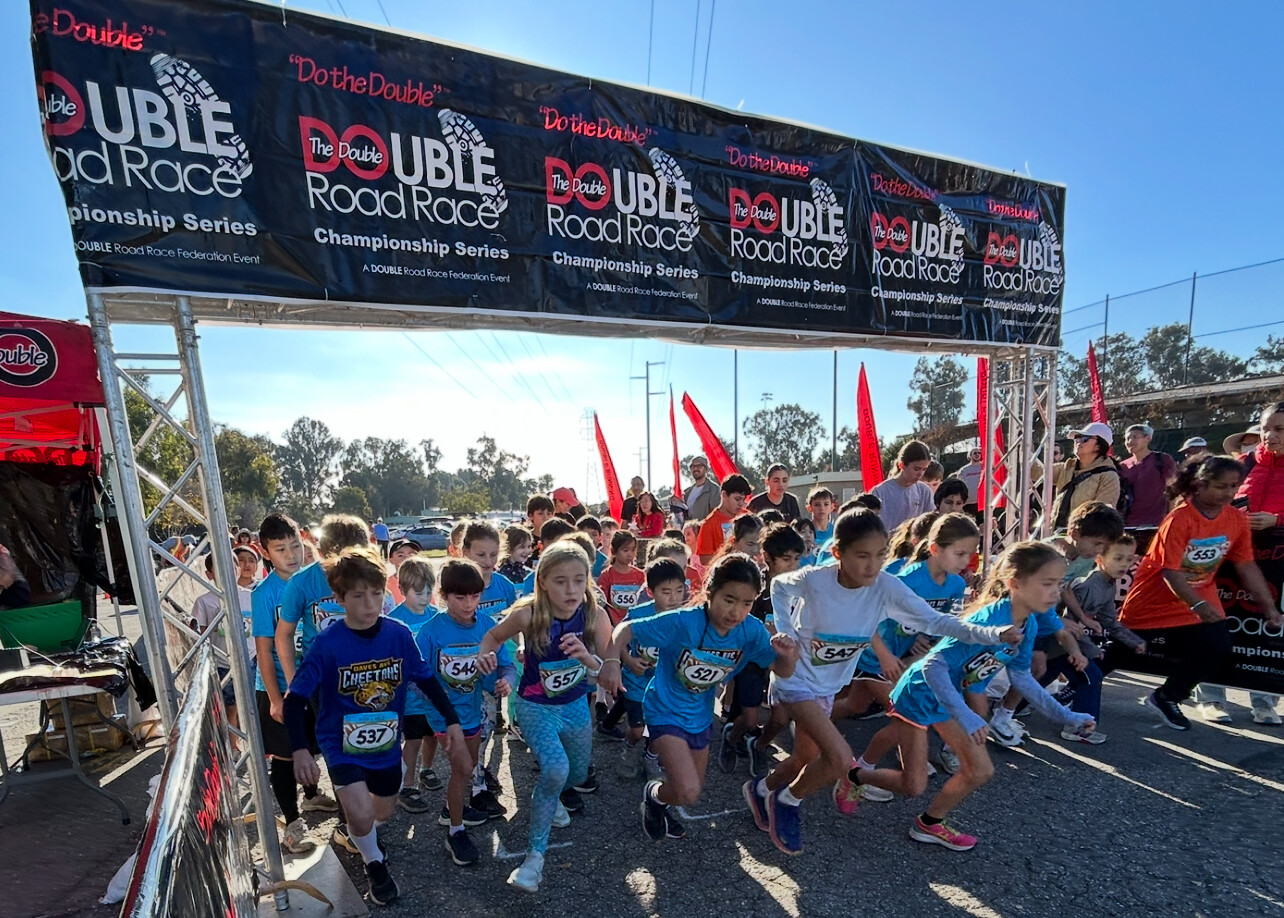
The Double 15K follows a unique format: runners first contest a 10K, then return 1 hour and 45 minutes later to run a 5K. The two times are added together to determine final standings, testing both speed and recovery.
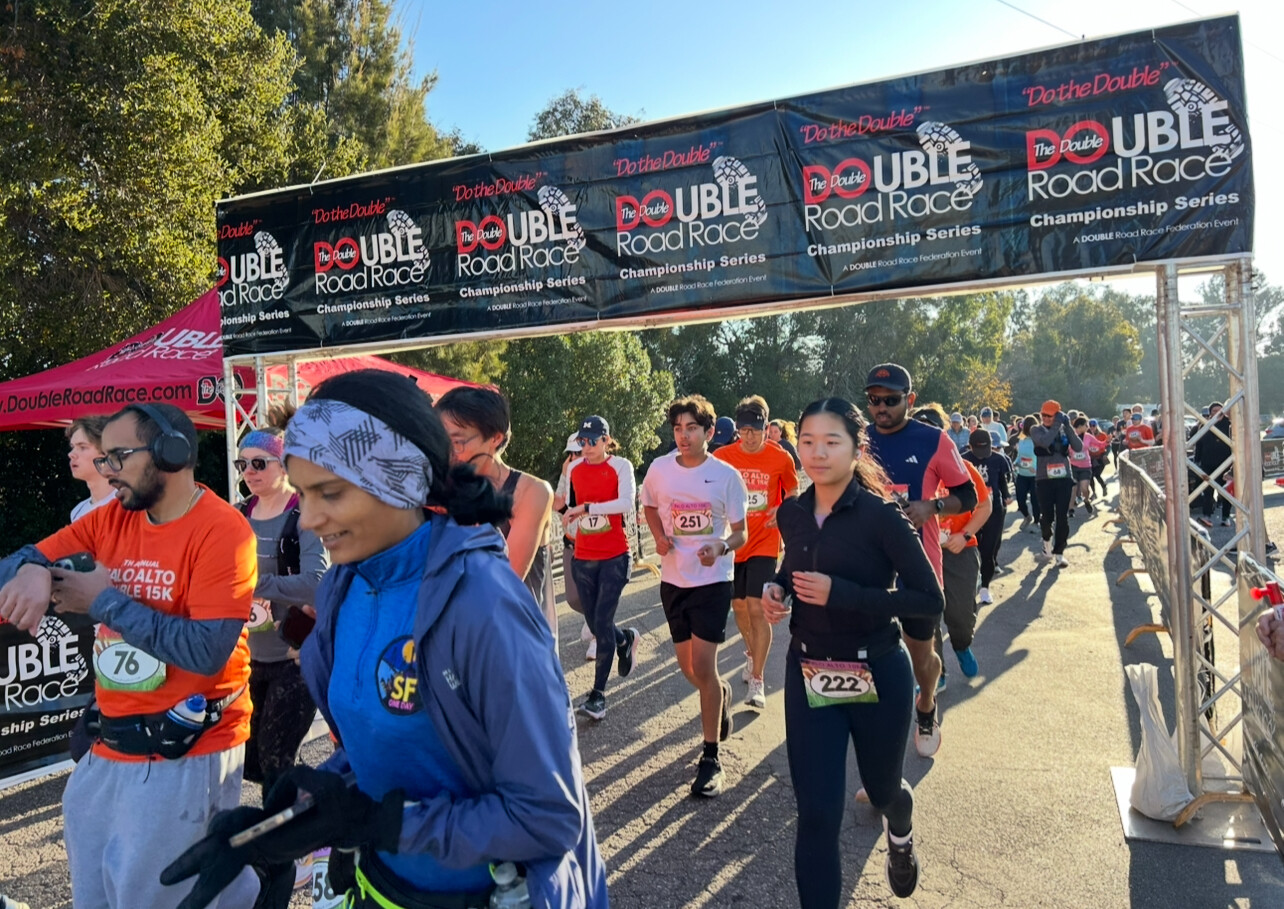
First Photo:Andrea Cloarec (Age 33, Woodside, CA) delivered the top performance of the event, winning the Double 15K with:

10K: 32:54
5K: 15:51
Combined Time: 48:45
Cloarec also captured the Double Victory Cup, awarded to the runner with the best age-graded performance in the Double 15K. His combined effort produced an age-graded score of 84.89%.
Additional Highlights
Whitney Trainor-Guitton (Age 46) was the first female finisher in the Double 15K, posting a combined time of 1:03:56.
Third photo: Nelleke Gibson ran 17:40 in the 5K.
In the Bob Anderson Mile (Ages 13 & Under), Charlotte Kenney (Age 12) won in 6:08.
Just 25 minutes after the start of the mile, Charlotte returned to the line for the Palo Alto 5K, where she finished as the second female overall, an impressive double on the day.
A Palo Alto Holiday Tradition
With 321 registered runners, the event once again delivered a fun, family-oriented holiday race. While the number of standout performances was limited, the quality at the top—combined with excellent conditions and strong community participation—made the 13th edition a success.
by Boris Baron
Login to leave a comment
Palo Alto Double 15K and 10K/5K
Bring the whole family and enjoy our pre Christmas events. All participants get a special shirt and bag. All finishers get a special medal. $200 of cash prizes ($100 each for winners of Double 15k) There will be four events in Palo Alto. Palo Alto Double 15K (10K+5K), Palo Alto 10K, Palo Alto UjENA 5K Run/Walk and Bob Anderson's Kids...
more...Michka-Mae Hyde Shatters Jamaica’s Marathon Record in Philadelphia
Jamaica has a new national marathon record holder.
Michka-Mae Hyde delivered a historic performance at the Philadelphia Marathon on November 23, 2025, running 2:35:28 to smash Jamaica’s women’s marathon record for the 26.2-mile distance. The previous mark of 3:08:47 had stood for years—making Hyde’s improvement of more than 30 minutes one of the most dramatic national-record breakthroughs in recent memory.
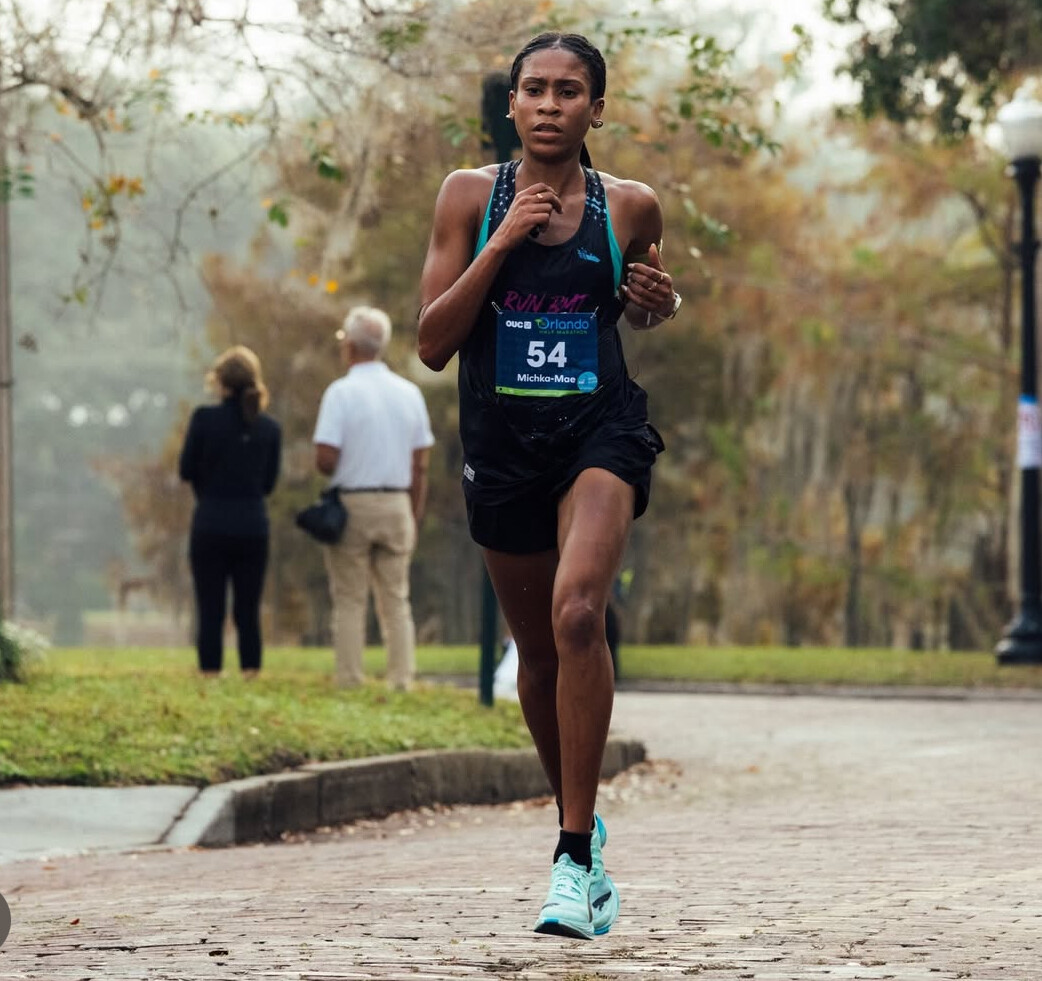
The run places Hyde firmly on the international radar and signals a potential turning point for Jamaican distance running. While the island nation is synonymous with sprinting dominance, the marathon has long been an underrepresented event. Hyde’s performance suggests that may be changing.

What makes the result even more compelling is Hyde’s athletic background. A former standout at George Mason University, she competed primarily in the 400 meters and 400-meter hurdles, showcasing speed and strength before transitioning to the roads. Her successful leap to the marathon highlights both her versatility and the untapped potential that exists beyond Jamaica’s traditional sprint pipeline.
National records are typically lowered by seconds—sometimes minutes. Hyde didn’t just lower the record; she rewrote it entirely.
With a time of 2:35:28, Hyde has established a new benchmark and opened the door for greater participation, belief, and investment in Jamaican marathon running. For the country, the event has entered a new chapter—and Michka-Mae Hyde is leading the way.
by Boris Baron
Login to leave a comment
Philadelphia Marathon and Half
Have the time of your life in 2022 completing 13.11 miles! Runners will start along the Benjamin Franklin Parkway in the cultural Museum District and wind through Philadelphia’s most scenic and historic neighborhoods. From the history-steeped streets of Old City, through one of the liveliest stretches of Center City, across the Schuylkill River...
more...Alex Yee Shocks the Marathon World With 2:06:38 Breakthrough in Valencia
Valencia has earned its reputation as one of the world’s fastest marathon—and on Sunday Dec 7th morning it delivered another stunning storyline. Great Britain’s Alex Yee, best known globally as one of the top triathletes on the planet, produced an extraordinary 2:06:38 to finish 7th overall in a loaded elite field,
The performance instantly places Yee No. 2 on the all-time British marathon list, trailing only Sir Mo Farah’s 2:05:11 from the 2018 Chicago Marathon. For an athlete who has only recently begun to explore the marathon seriously, the achievement is nothing short of remarkable.
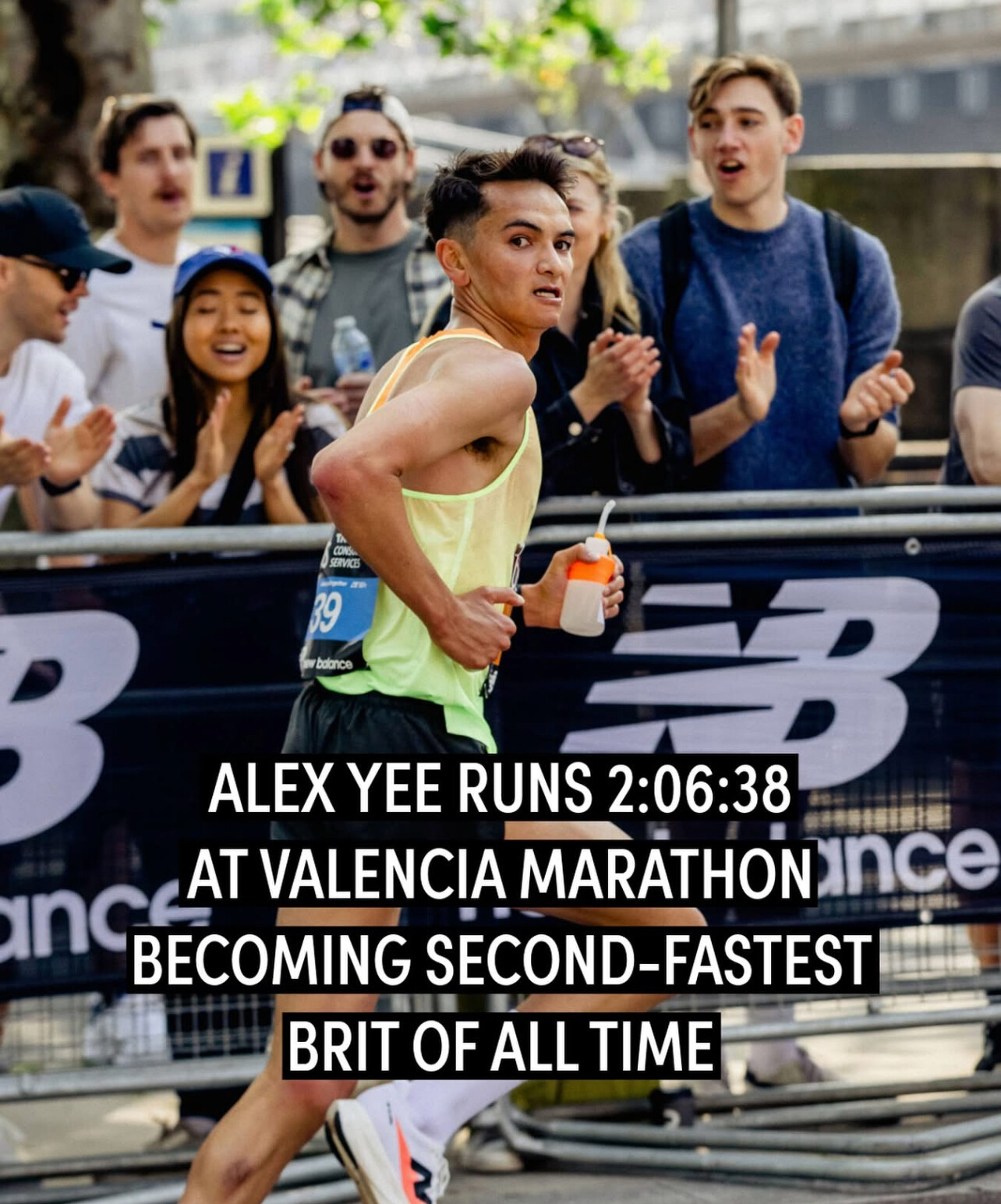
Yee ran with discipline uncommon for a marathon newcomer—controlled through halfway, efficient in the challenging middle miles, and strong over the closing stretch as the race broke apart around him. His combination of endurance, speed, and race IQ—honed through years of Olympic-level triathlon competition—translated seamlessly to 42.2 km.
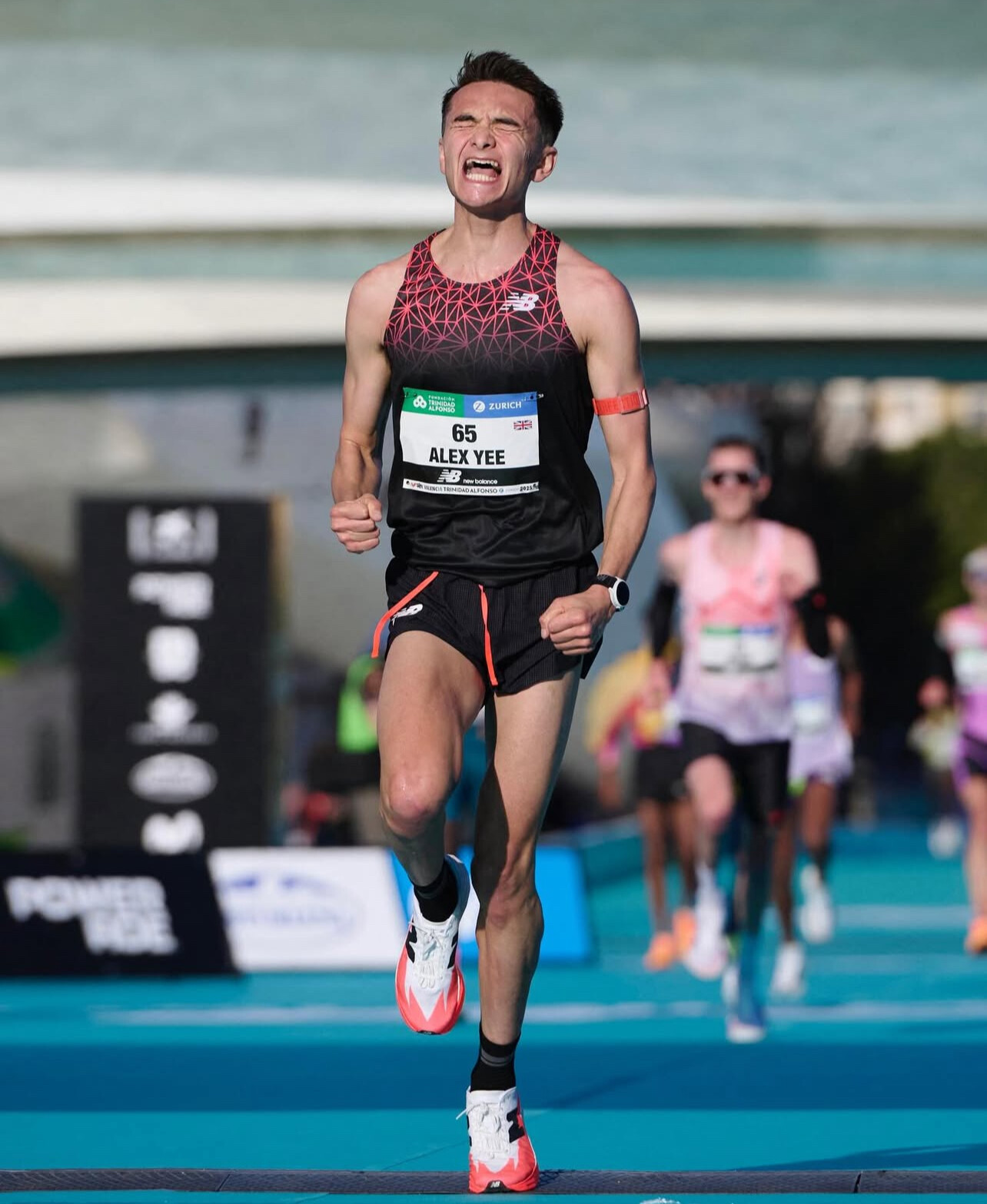
This run doesn’t just mark a breakthrough; it signals the arrival of a major new force in British distance running. With Farah retired and a new generation emerging, Yee’s Valencia performance hints at enormous potential still untapped.
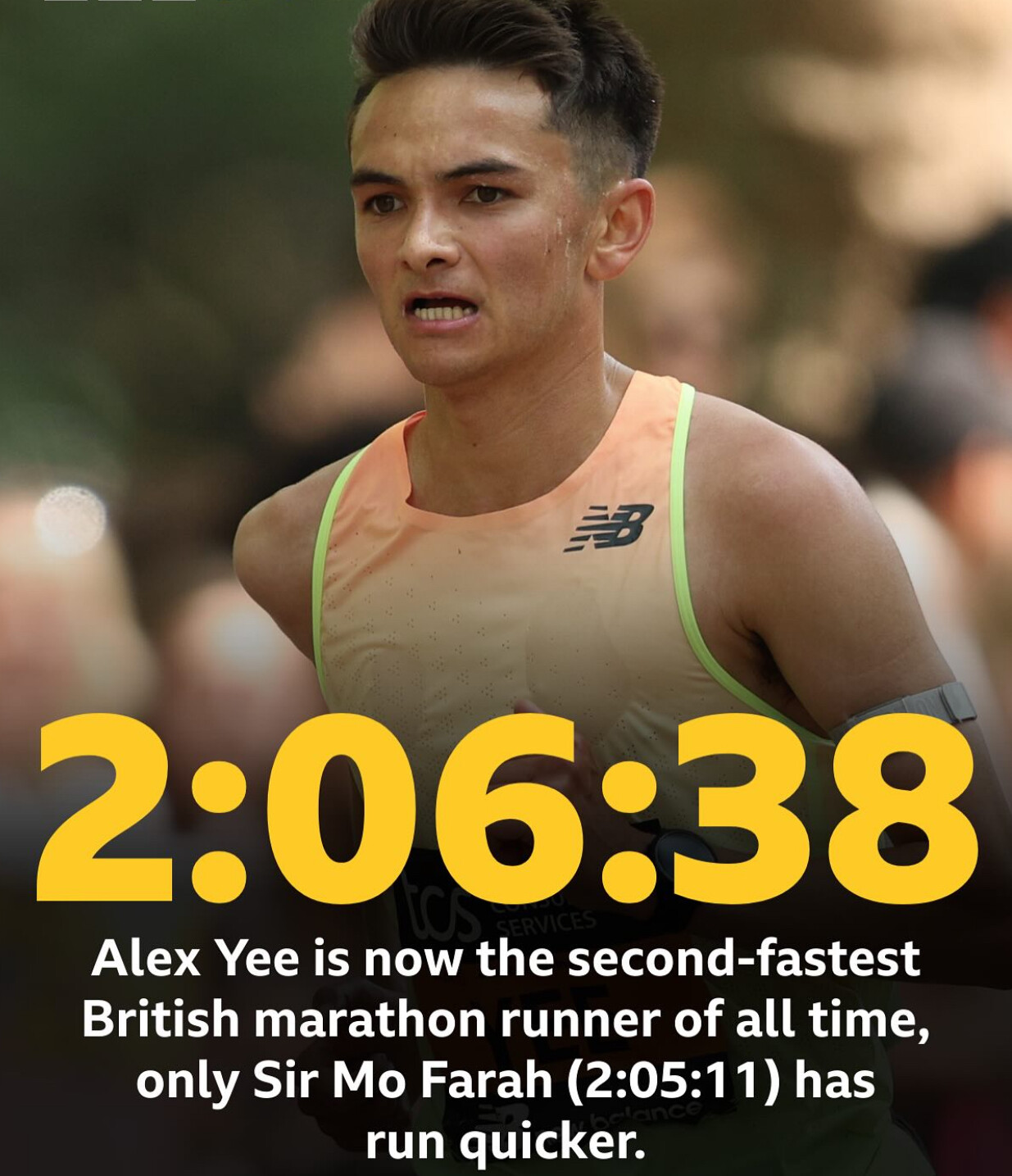
At just 26 years old, and with world-class credentials across multiple disciplines, the possibilities ahead are wide open. Whether he continues balancing triathlon with marathon racing or eventually shifts his focus fully to the roads, one thing is clear:
Alex Yee is no longer a marathon experiment—he is a marathon contender. And this may only be the beginning.
by Boris Baron
Login to leave a comment
Do You Really Need to Cool Down After a Run? The Short Answer May Surprise You
Runners have long been told the cooldown is essential. Coaches swear by it, magazines promote it, and influencers call it a “game changer.” But how important is it, really?
What the Research Actually Says

Studies show that cooling down does not reduce injury risk and doesn’t prevent soreness. DOMS happens because of muscle damage during hard training—something a cooldown can’t reverse. Strength work helps injury prevention far more.
So Why Do Coaches Still Recommend It?
Because cooldowns do offer a few real-world benefits:
• Faster lactate clearance:
Easy jogging or walking helps flush out lactate from intense workouts, making your legs feel better in the short-term.
• Calms the nervous system:
High-intensity running activates the fight-or-flight response. A cooldown helps your body return to a relaxed state—useful if you run at night or head to work right after training.
• It feels good:
For many runners, ending with a gentle transition makes the session more enjoyable and helps shift into recovery mode.
Bottom Line
Skipping the cooldown isn’t harmful. You won’t raise your injury risk or sabotage your fitness.
But if you can spare five to ten minutes?
It’s still worth doing. A short walk or jog can help your legs feel better, settle your breathing, and give your mind a chance to unwind—small benefits that add up in a busy world.
by Boris Baron
Login to leave a comment
Sara Hall’s Brilliant California Marathon Run Upstaged by Molly Born’s Historic Debut in Sacramento
At 42 years old, Sara Hall produced one of the finest races of her storied career on Sunday at the California International Marathon — yet even her record-breaking brilliance wasn’t enough to stop the emergence of a new U.S. marathon star.
In a sensational debut that electrified the net-downhill course, 26-year-old Molly Born stormed to victory in 2:24:09, slicing 19 seconds off the women’s course record and claiming the 2025 USATF Marathon Championship title. The Oklahoma State alumna and Chapel Hill resident seized control at mile 19 and powered home with a fearless negative split, averaging a searing 5:30 per mile despite nearly stumbling on the homestretch.
Hall, the pre-race favorite and 2017 CIM champion, ran one of the greatest masters performances in U.S. history. Her 2:24:36 not only marked her fastest marathon since 2020, but also obliterated the American masters record for women over 40 and erased the sting of last month’s DNF in New York.
Megan Sailor completed the podium with a strong 2:25:16, but the day belonged to two runners at opposite ends of their careers: Hall, the enduring veteran proving she can still rise to championship form, and Born, whose fearless debut announces her as a rising force in U.S. distance running.
At a race known for breakthroughs, Sunday’s showdown delivered a generational moment — the established legend running one of her finest marathons, and the newcomer running into history.
by Boris Baron
Login to leave a comment
Tension in Iran After Women Run Unveiled at Kish Island Marathon; Organizers Arrested
The running world turned its attention to Iran this week after a marathon on Kish Island — held on Friday off Iran’s southern coast — sparked both celebration and controversy. The event, which featured 3,000 men and 2,000 women running in separate races, became the center of national debate when images spread online showing a number of female runners competing without hijabs.
A Marathon That Broke More Than Finish Lines
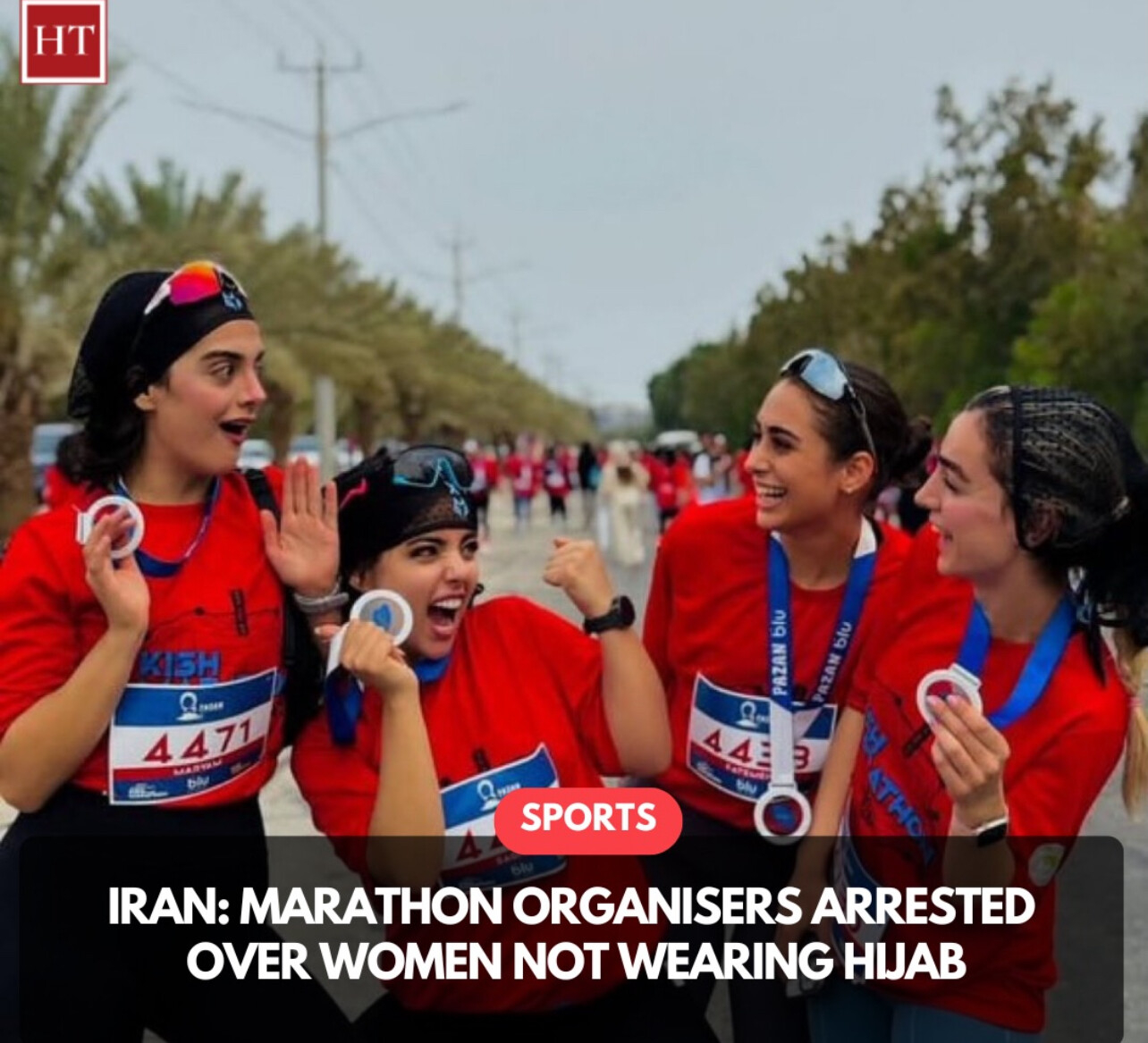
Photos showed women racing in red event shirts, some without the required head covering. For many inside and outside Iran, the images quickly became a symbol of resistance, athletic freedom, and the growing demand among Iranian women to participate fully in public life — including sports — on their own terms.
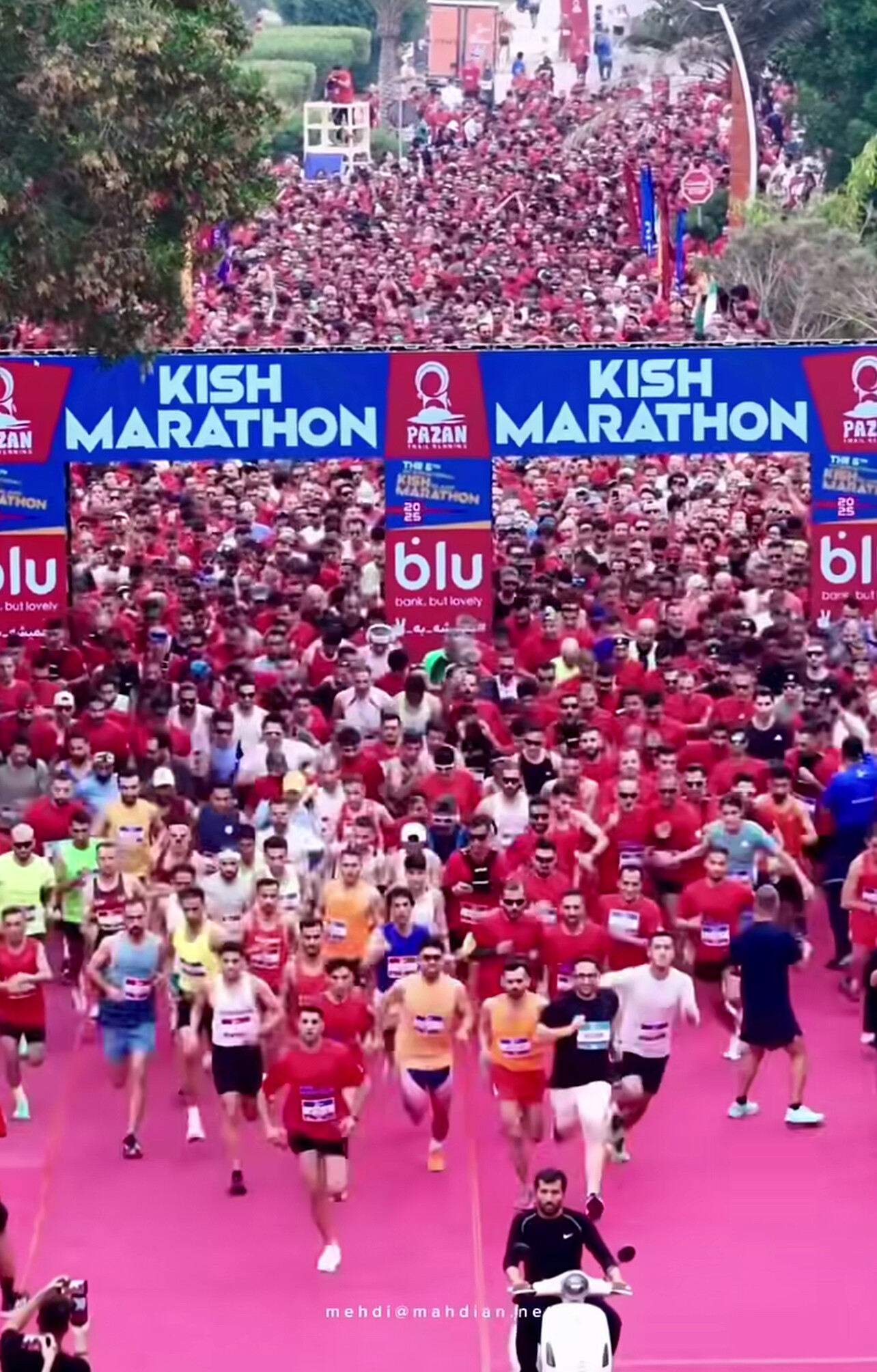
Supporters of change hailed the moment as another step forward. Iranian authorities, however, viewed it very differently.
Within 24 hours, Iran’s judiciary announced the arrest of two marathon organizers, accusing them of allowing a “violation of public decency.” Officials stressed that it wasn’t only the lack of hijab compliance that drew condemnation, but the very decision to stage such a large-scale women’s race in the first place.
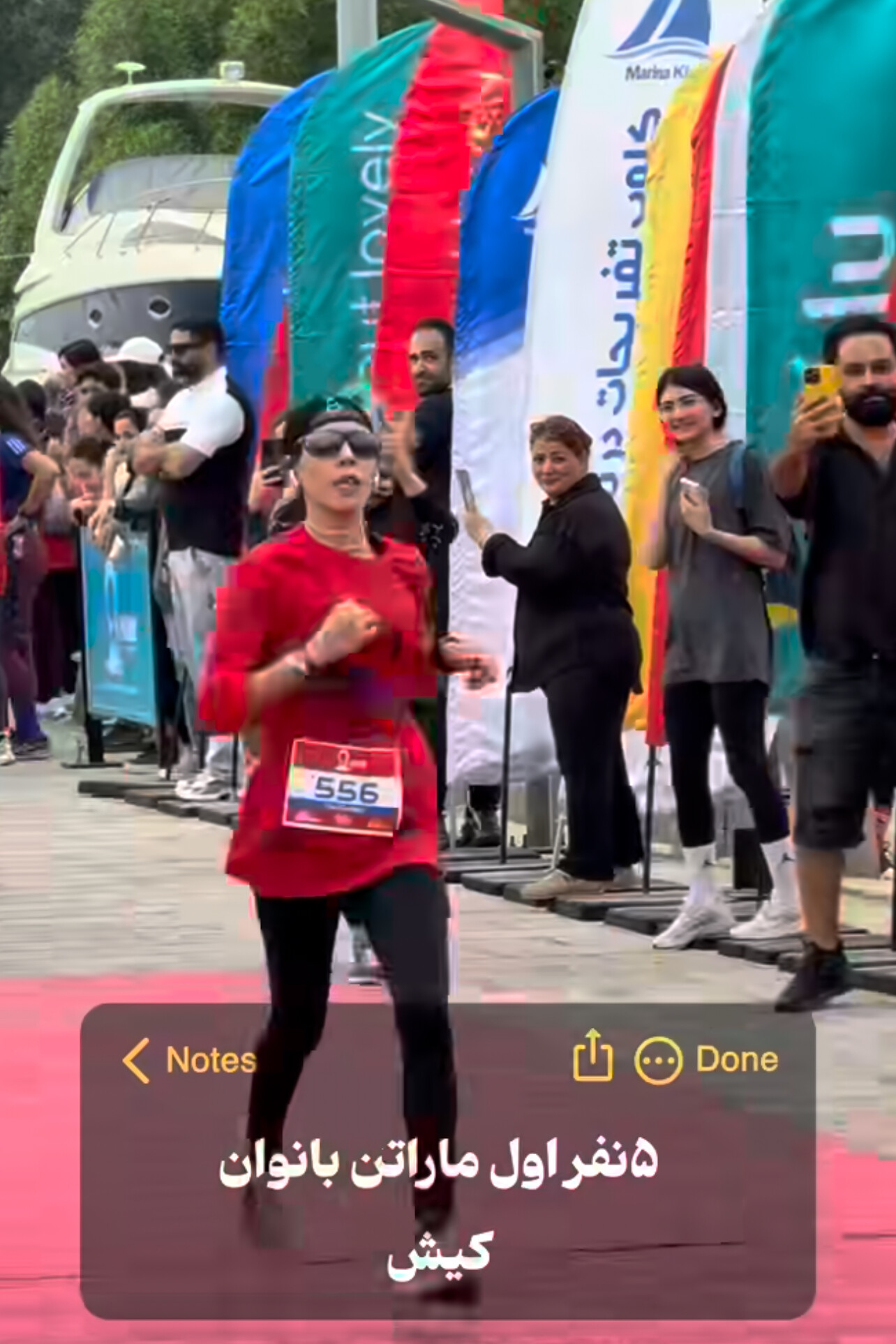
Just a few years ago, seeing thousands of women running together — even in a segregated format — would have been unthinkable in Iran.
A Flashpoint in a Larger National Struggle
The Kish Island marathon controversy comes at a time when the role of women in public spaces remains one of the most sensitive issues in Iran. Enforcement of the mandatory hijab has fluctuated for years — at times loosening, at other times tightening.
The issue returned to global focus after the death of Mahsa Amini three years ago, which triggered nationwide protests and a severe crackdown. Since then, many women across Iran have continued to appear in public without head coverings despite the risks. That growing defiance has prompted renewed warnings from senior officials.
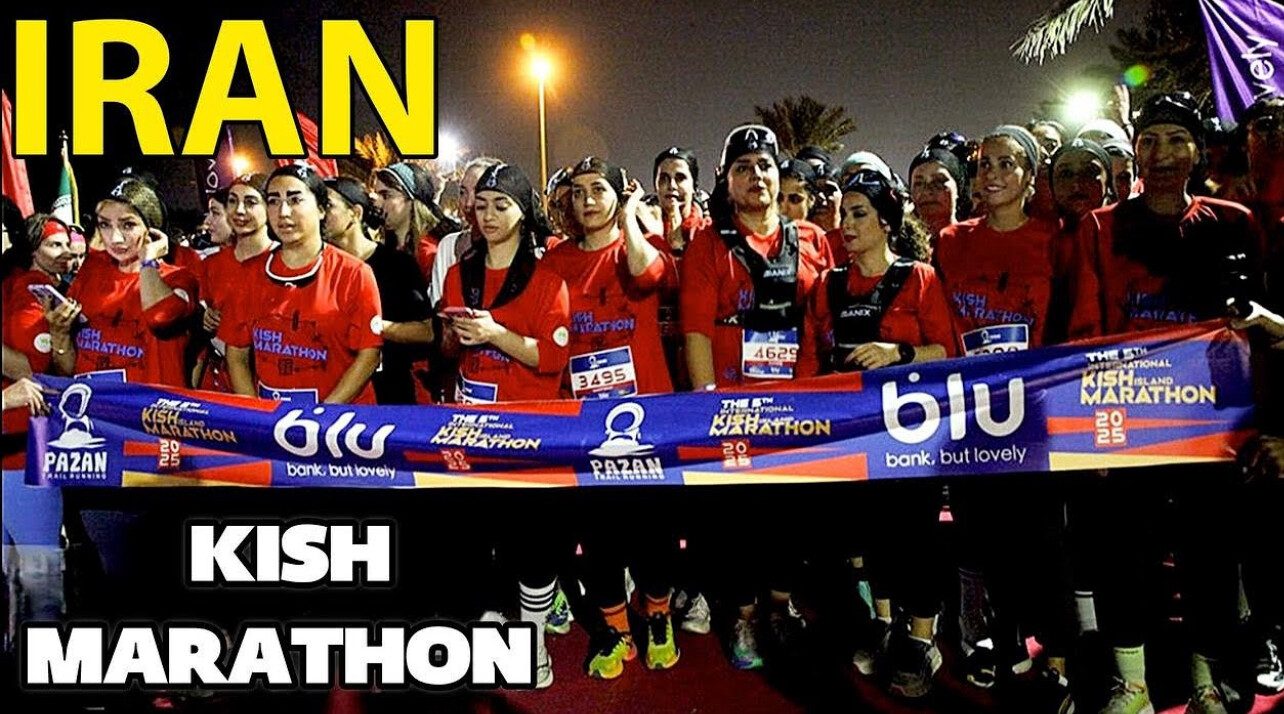
The head of Iran’s judiciary recently ordered intelligence agencies to identify what he called “organized trends promoting non-veiling.” The marathon incident has now been folded into that campaign.
Running as Expression — And as a Flashpoint
For the global running community, the images from Kish Island carried a dual meaning. On one hand, the sight of thousands of Iranian runners — especially women — participating in a mass-start road race reflects the universal appeal of running as freedom, expression, and personal challenge.
On the other hand, the swift response from authorities underscores how even a marathon can become a battleground in Iran’s ongoing struggle over women’s rights, social norms, and public expression.
The arrests of the organizers are unlikely to be the final chapter. Instead, the Kish Island race has become another symbolic moment in a long-running standoff — one fueled by a younger generation eager to push boundaries, and a leadership determined to hold the line.
As of now, the two detained organizers face further investigation, and the future of mass-participation running events for women in Iran remains deeply uncertain.
by Boris Baron
Login to leave a comment
Molly Born Smashes Course Record in Marathon Debut; Futsum Zienasellassie Returns to the Top at CIM 2025
SACRAMENTO, California — December 7, 2025 The California International Marathon once again lived up to its reputation as America’s fastest championship course, producing breakout performances and reaffirming elite talent at the 2025 USATF Marathon Championships. Two standout athletes—Molly Born and Futsum Zienasellassie—delivered the signature performances of the day.
Born’s Brilliant Debut: 2:24:09 Course Record
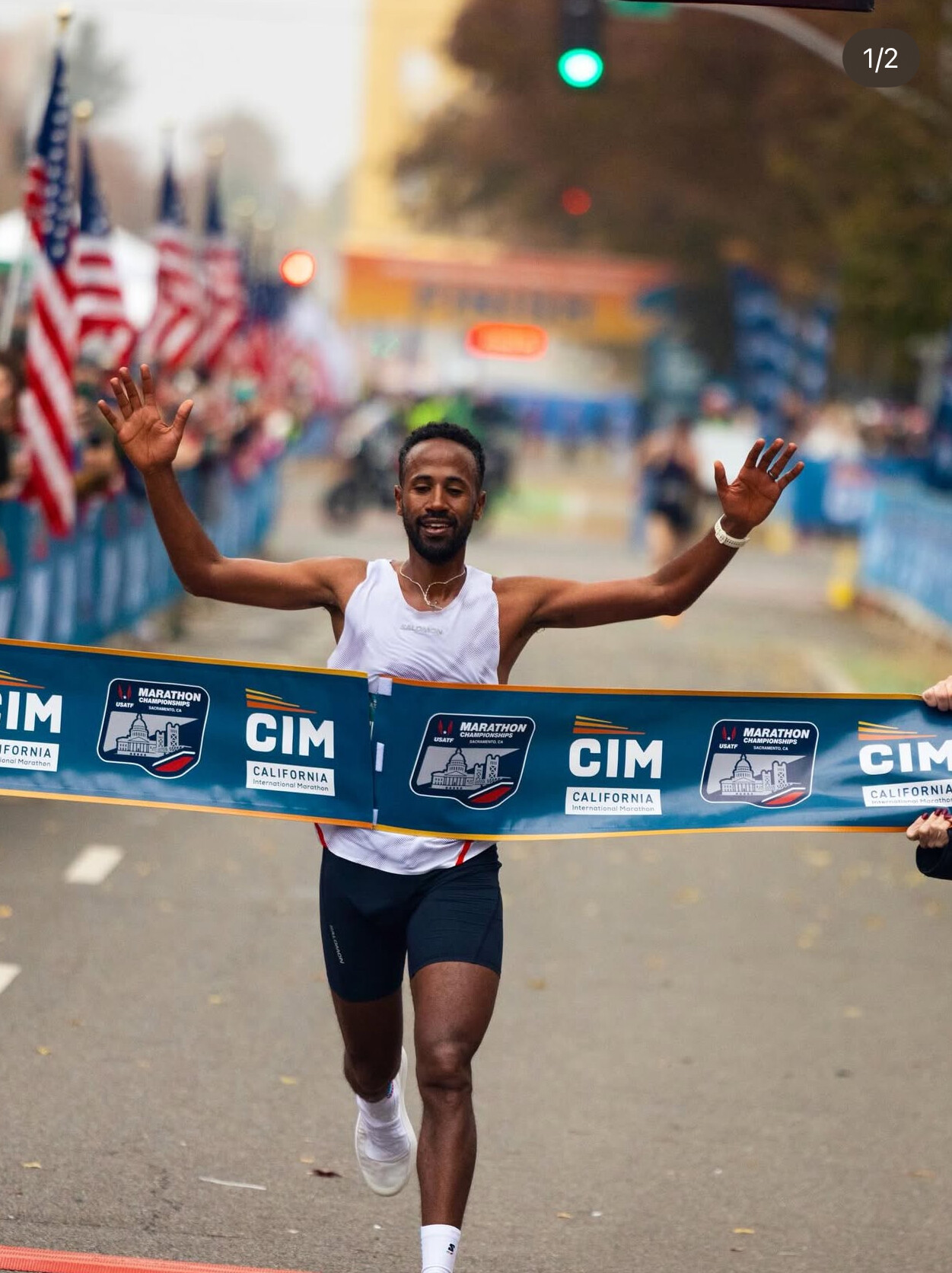
In her first-ever marathon, 26-year-old Molly Born ran with the poise and confidence of a seasoned veteran. The Oklahoma State alumna powered through the rolling downhills from Folsom to Sacramento to claim the 2025 USATF Marathon Championship in 2:24:09, breaking the women’s course record and announcing herself as a major new force in American distance running.
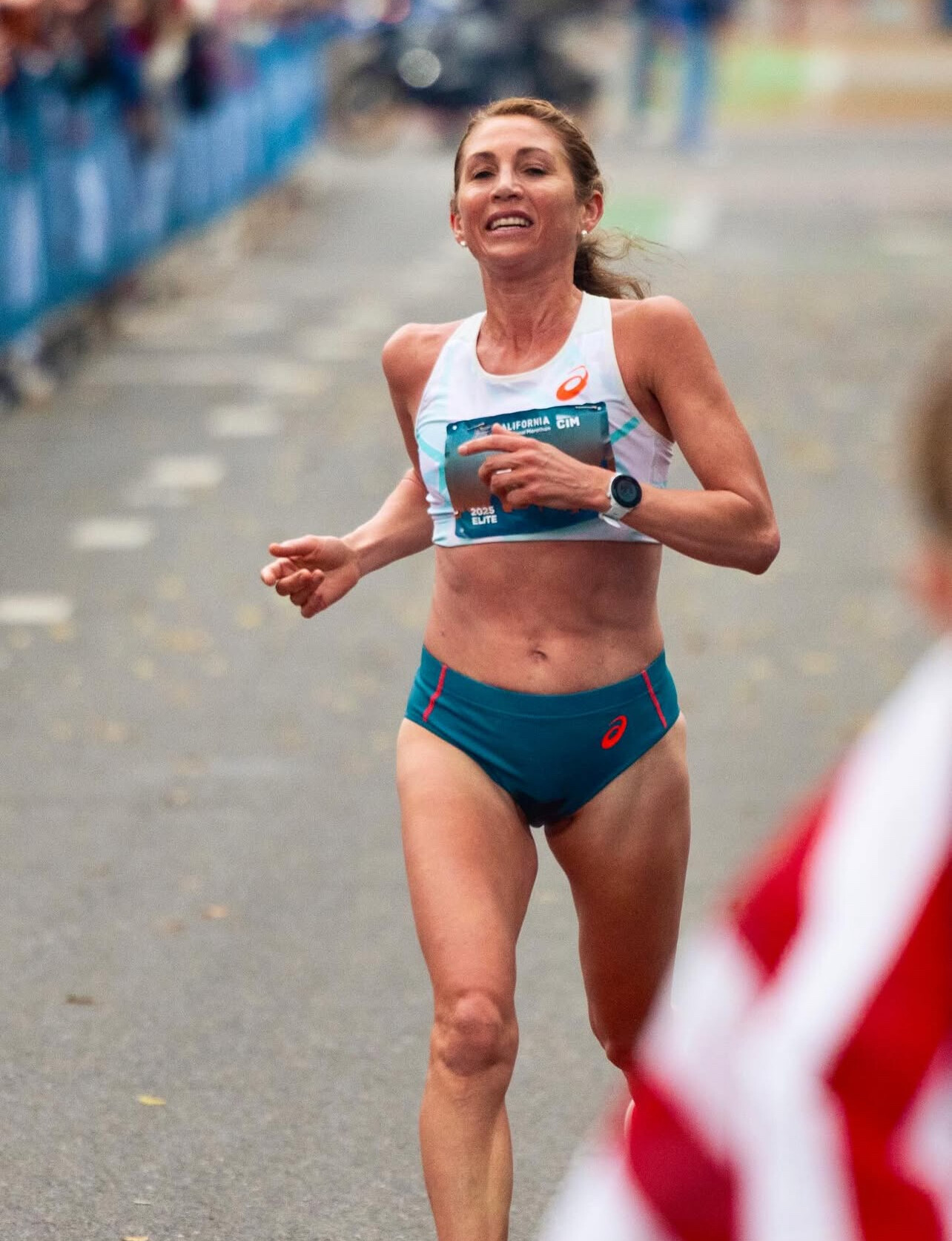
Born excelled at 1,500m through 10,000m during her collegiate career, but never attempted the marathon until today. Her debut suggests she has found her event.

“I knew it was a possibility, but I wasn’t expecting all this,” Born said after winning.
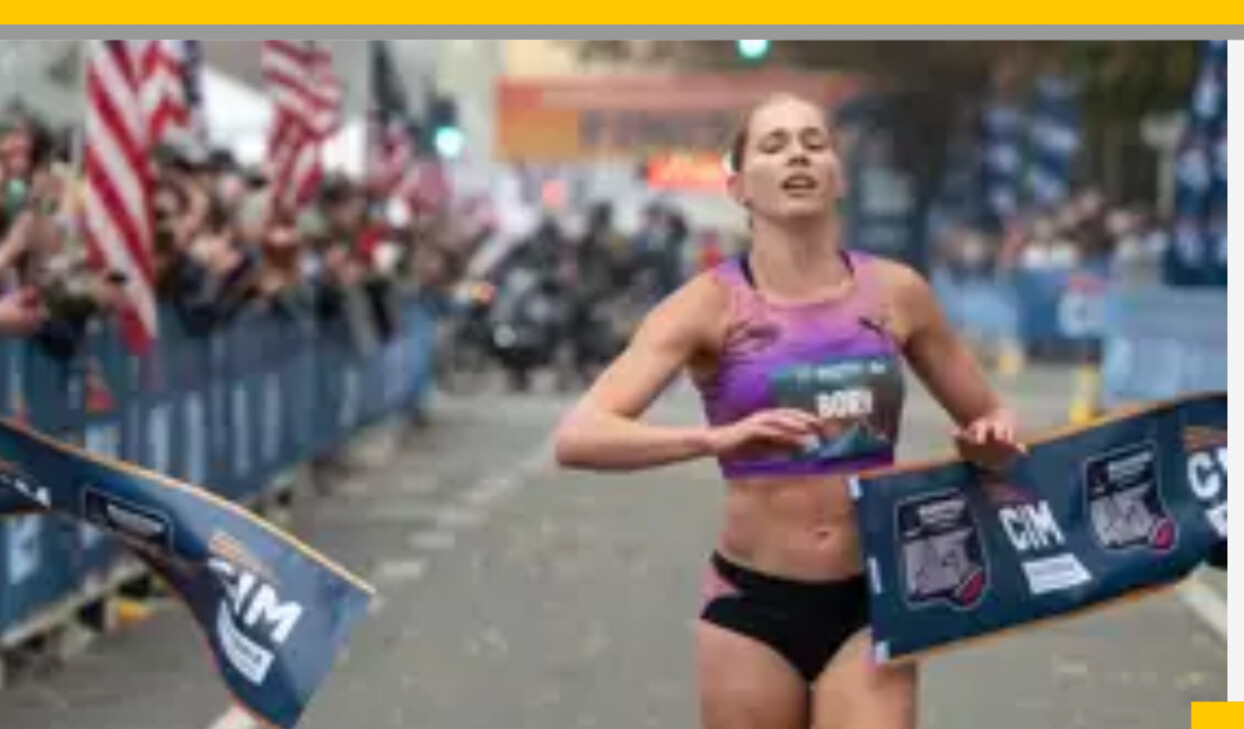
“It feels really good. I think I’ve found my event—going forward, it’s going to be the marathon.”
Women’s Top Five — CIM 2025
1. Molly Born — 2:24:09 (Course Record)
2. Sara Hall — 2:24:36
3. Megan Sailor — 2:25:16
4. Lindsey Bradley — 2:28:41
5. Maya Weigel — 2:28:44
Hall and Sailor also broke 2:26, marking one of the deepest women’s fields ever at CIM.
Zienasellassie Reclaims the CIM Crown
On the men’s side, Futsum Zienasellassie reclaimed the title he first won in 2022, crossing the finish in 2:09:29 to earn his second CIM victory. Smooth, controlled pacing and a strong final 10K separated him from the pack in a deep men’s field.
Zienasellassie famously grew up in Eritrea before starring at Northern Arizona University. His win today continues his rise as one of the most consistent American marathoners.
Men’s Top Five — CIM 2025
1. Futsum Zienasellassie — 2:09:29
2. Joseph Whelan — 2:09:41
3. Christian Allen — 2:09:57
4. Joseph Trojan — 2:10:38
5. Chris Maxon — 2:10:54
Three men breaking 2:10 on the CIM course underscores why this race remains a cornerstone of American distance running.
A Historic Day in Sacramento
Ideal racing conditions and CIM’s fast net-downhill profile helped produce one of the strongest editions in race history:
• A course record in the women’s race
• Three men under 2:10
• A national title decided in dramatic fashion
• An electrifying debut from one of America’s newest marathon stars
The 2025 California International Marathon once again proved why so many U.S. runners come to Sacramento seeking breakthroughs—and today, the event delivered exactly that.
by Boris Baron
Login to leave a comment
California International Marathon
The California International Marathon (CIM) is a marathon organized by runners, for runners! CIM was founded in 1983 by the Sacramento Running Association (SRA), a 501(c)(3) non-profit organization. The SRA Board of Directors is comprised of runners with a combined total of 150+ years of service to the CIM. The same route SRA management created for the 1983 inaugural CIM...
more...Records Fall as Korir and Jepkosgei Triumph at the 2025 Valencia Marathon
VALENCIA, Spain — December 7, 2025
The 2025 edition of the Valencia Marathon once again delivered world-class performances, national records and an elite-deep field over a fast, flat course in near-perfect early-December conditions.
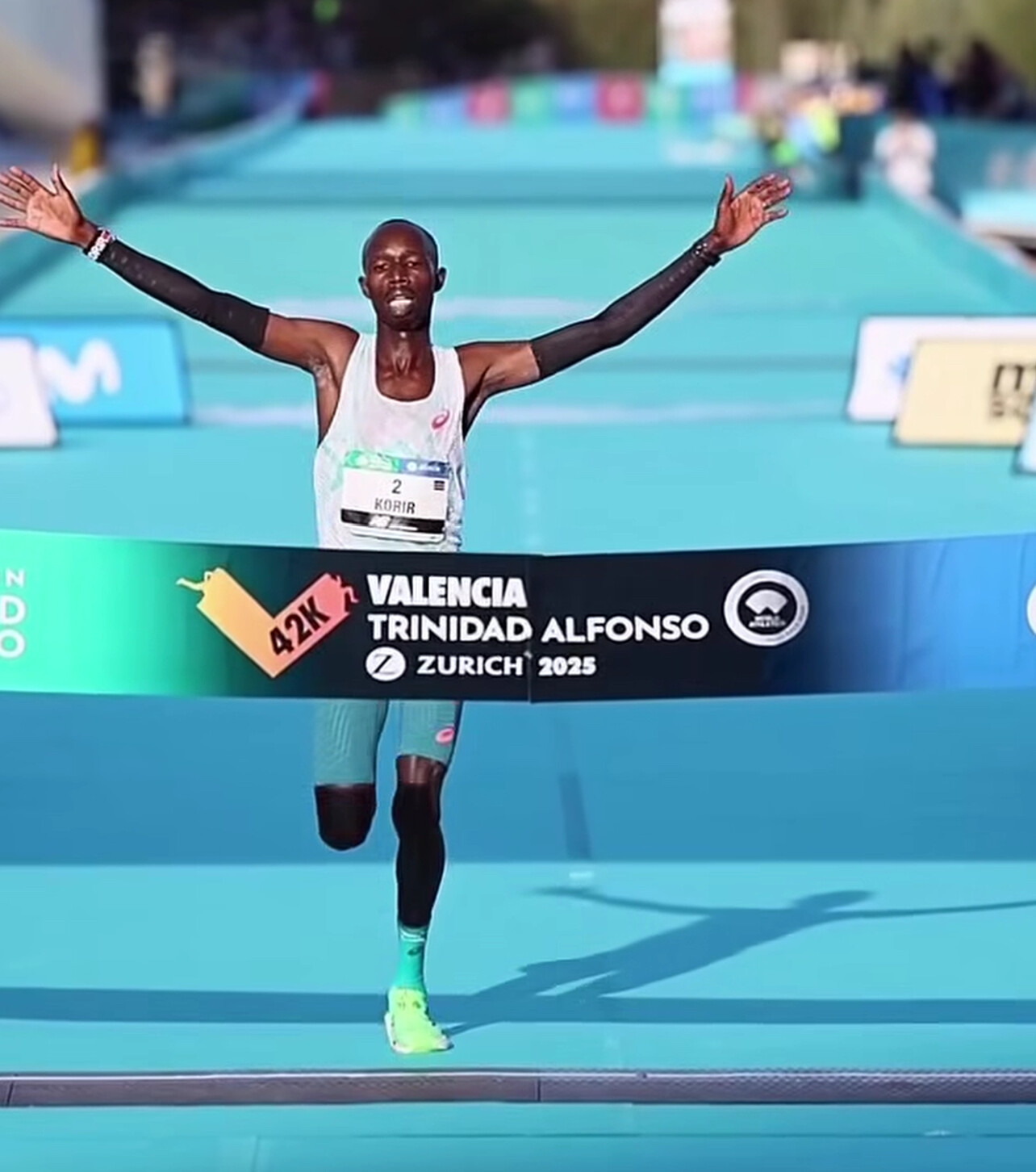
Conditions & Course — Perfect for Fast Times
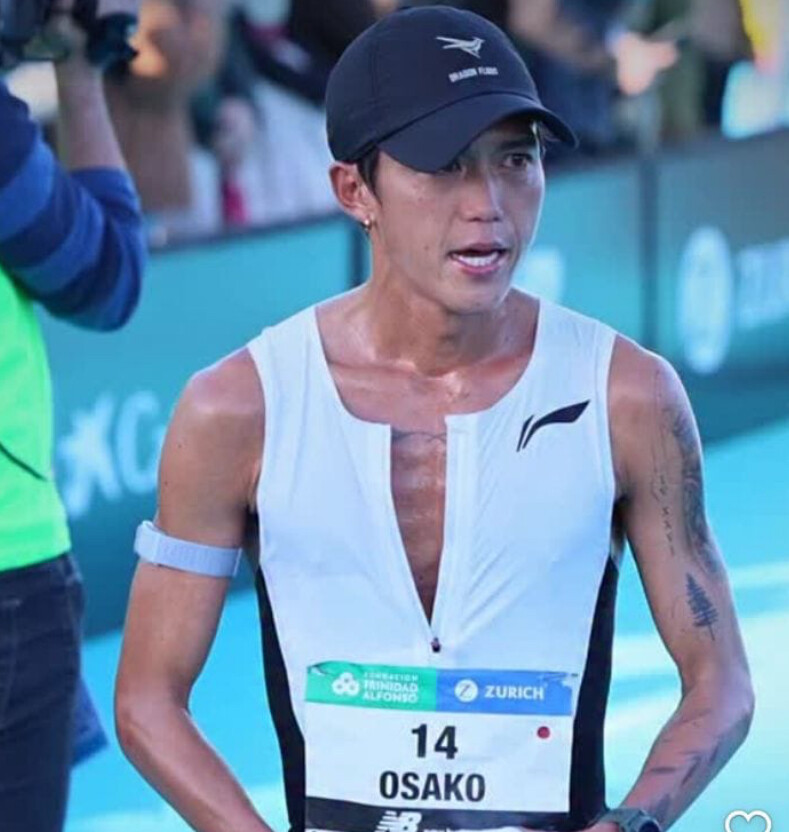
The marathon started at 8:15 a.m. local time, on a flat, sea-level course that winds through wide avenues, coastal stretches, and the scenic historic center of Valencia.
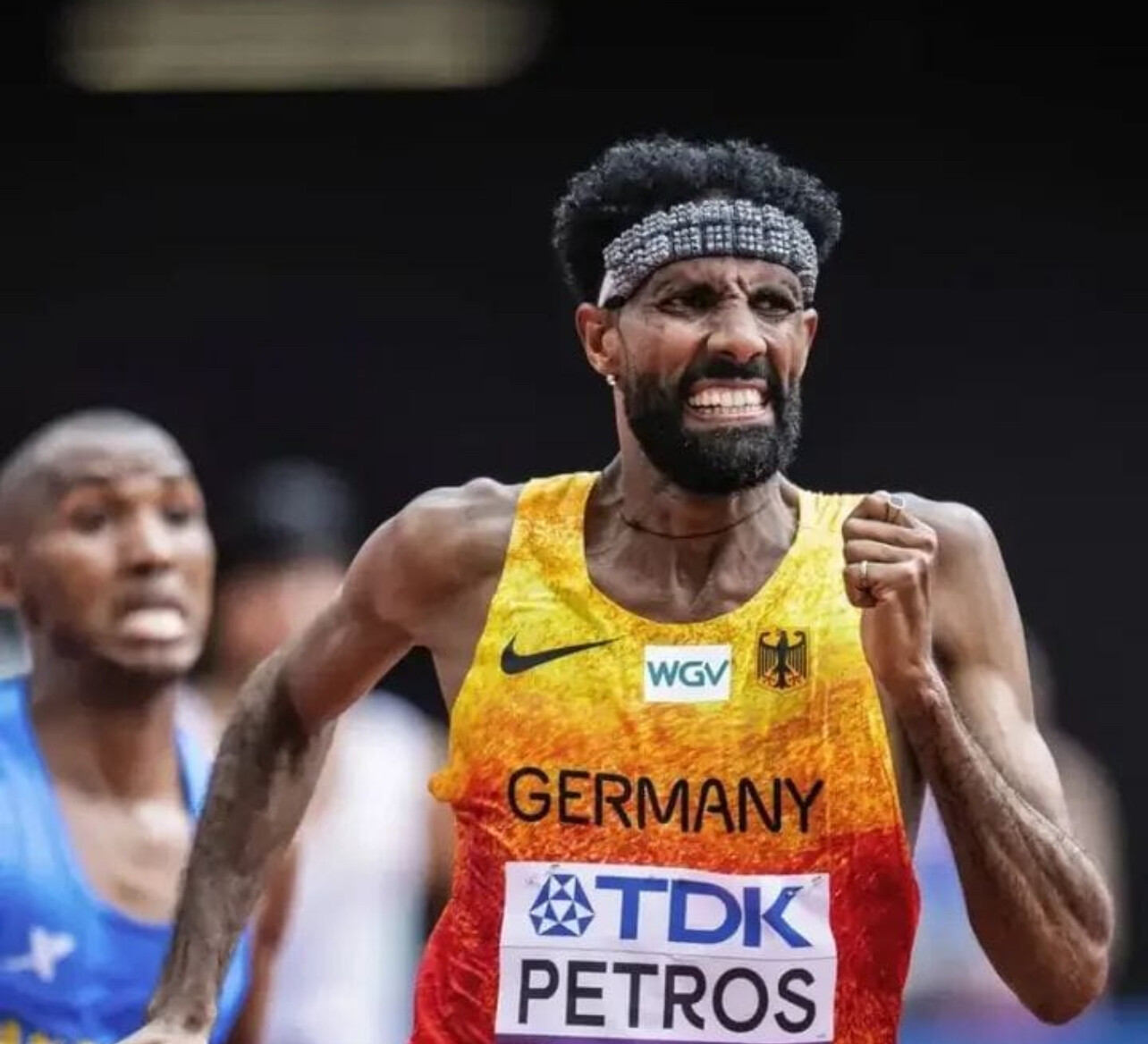
Race organizers and runners praised the combination of smooth pavement, well-organized hydration/aid stations roughly every 5 km, and benign weather — all of which contributed to ideal conditions for record-chasing efforts.

Standout Performances & National Records
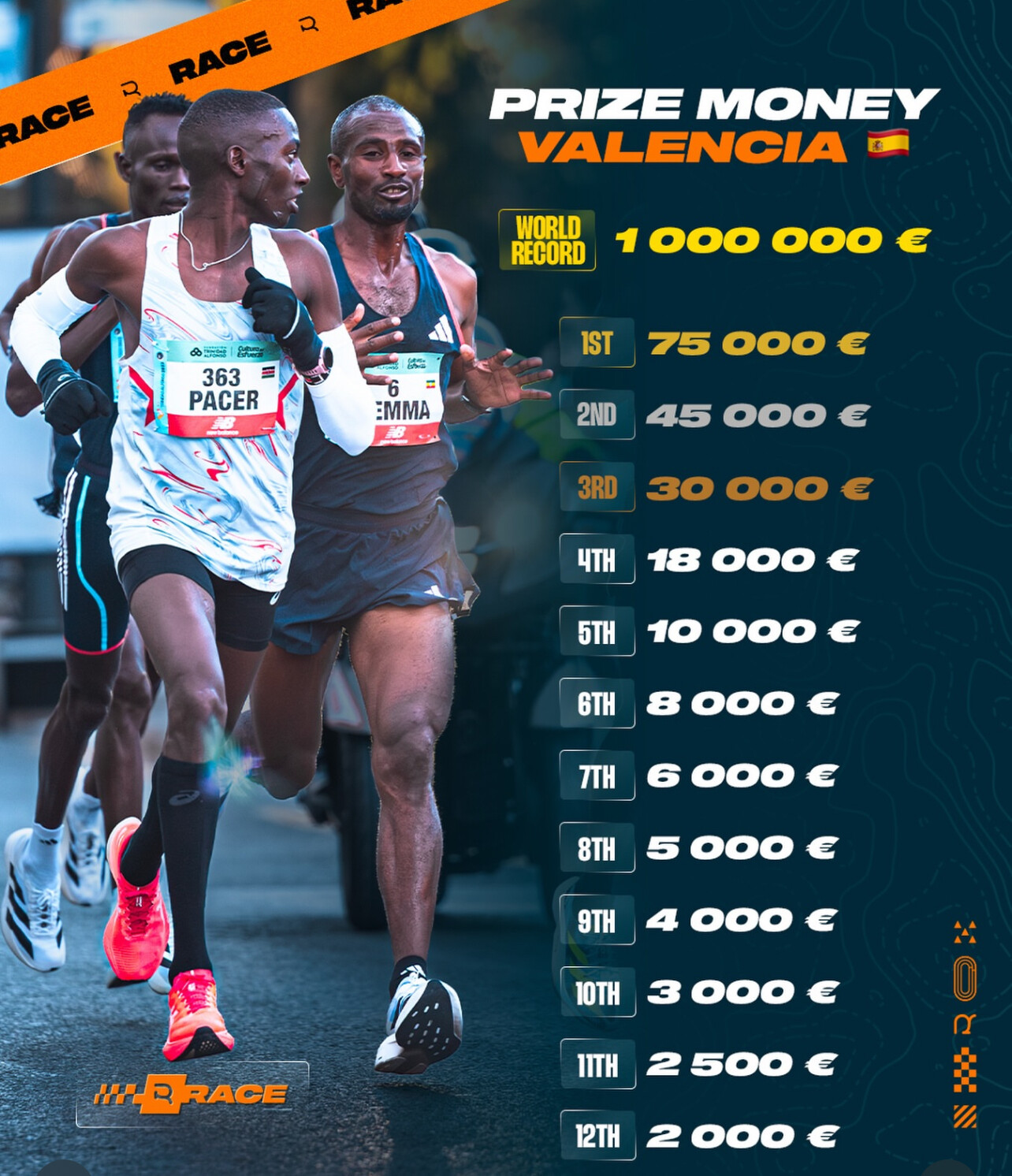
• Men’s Winner — John Korir (KEN) crossed the line in 2:02:24, setting a personal best and claiming the men’s title in dominant fashion.
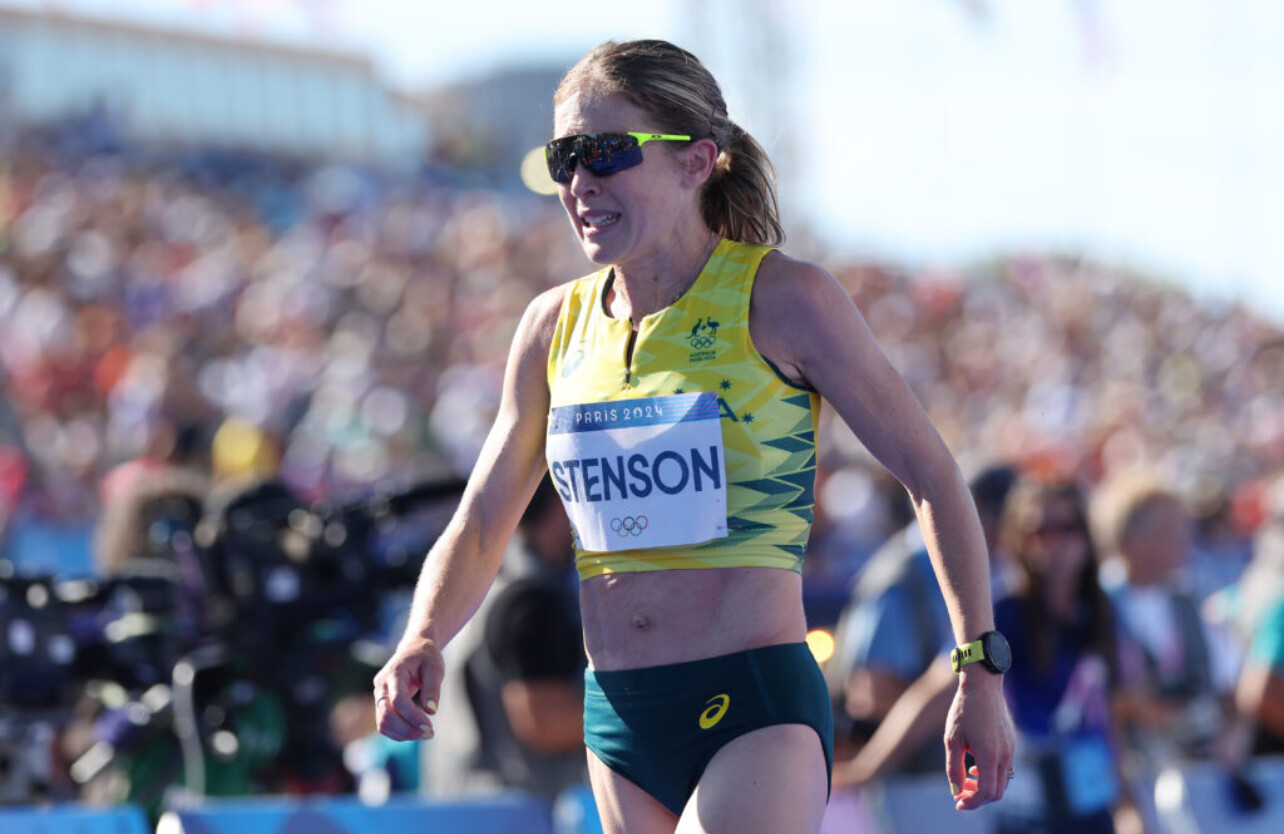
• Amanal Petros (GER) took second with 2:04:03, smashing the German national record and re-establishing himself among Europe’s elite marathoners.
• Suguru Osako (JPN) ran 2:04:55 to finish fourth overall — a new Japanese national record and a major personal best.
• On the women’s side, Joyciline Jepkosgei (KEN) won with 2:14:00, the fastest women’s marathon time in the world this year — and now the fourth-fastest women’s marathon performance in history.
• Peres Jepchirchir (KEN) finished second in 2:14:43, giving Kenya a dominant 1-2 sweep in the women’s race.
• Jessica Stenson (AUS) clocked 2:21:24, breaking the Australian national marathon record — a momentous achievement that makes her the fastest Australian woman ever over 42.195 km.
Top Finishers — Elite Spotlight
Men
1. John Korir (KEN) — 2:02:24
2. Amanal Petros (GER) — 2:04:03 (German record)
3. Awet Kibrab (NOR) — 2:04:24
4. Suguru Osako (JPN) — 2:04:55 (Japanese record)
5. Gashau Ayale (ISR) — 2:05:29
6. Justus Kangogo (KEN) — 2:06:10
7. Alex Yee (GBR) — 2:06:38
8. Félix Bour (FRA) — 2:06:41
9. Filmon Tefsu (NED) — 2:06:42
10. Gemechu Dida (ETH) — 2:06:45
Women
1. Joyciline Jepkosgei (KEN) — 2:14:00
2. Peres Jepchirchir (KEN) — 2:14:43
3. Chloe Herbiet (BEL) — 2:20:38
4. Alisa Vainio (FIN) — 2:20:48
5. Jessica Stenson (AUS) — 2:21:24 (Australian record)
Mass Race & Depth Behind Elites
Beyond the elite competition, the 2025 Valencia Marathon also featured a massive recreational and amateur component — true to its reputation as one of the most accessible and well-attended marathons globally. The race drew tens of thousands of runners, from competitive amateurs seeking sub-3:00 times to first-time marathoners chasing a finish line under the Mediterranean sun. The broad, flat course, combined with frequent refreshment and aid stations, plenty of crowd support, and smooth logistics helped countless runners achieve personal bests, secure Boston or other Major qualifiers, or simply check off a bucket-list marathon.
This blend of elite performance and mass participation underscores why Valencia remains a favorite among serious runners, recreational marathoners, and anyone chasing a fast, well-supported marathon experience.
The 2025 Valencia Marathon Will Be Remembered
• A world-leading women’s time (2:14:00) that now sits among the fastest five in history.
• Multiple national records — for Germany, Japan, and Australia — in a single edition.
• A men’s field with seven finishers under 2:05, showing the depth and quality of competition.
• A fast, flat, sea-level course and ideal weather that once again proved why Valencia is a “time-trial” marathon.
Valencia 2025 was not just another marathon — it was a landmark event. For runners, record-chasers, and fans, it set a high bar for what a winter marathon can deliver: speed, spectacle, and unforgettable achievements.
by Boris Baron
Login to leave a comment
VALENCIA TRINIDAD ALFONSO
The Trinidad Alfonso EDP Valencia Marathon is held annually in the historic city of Valencia which, with its entirely flat circuit and perfect November temperature, averaging between 12-17 degrees, represents the ideal setting for hosting such a long-distance sporting challenge. This, coupled with the most incomparable of settings, makes the Valencia Marathon, Valencia, one of the most important events in...
more...Jane Hedengren’s Record 5000m Headlines a Spectacular BU Season Opener
The 2025 BU Sharon Colyear-Danville Season Opener once again delivered the kind of early-season excitement Boston has become famous for. Inside the fast confines of the BU Track & Tennis Center, two performances stood above an already electric evening: a collegiate record in the women’s 5000m and a world record in the men’s 600m.
Hedengren Makes NCAA History in the 5000m

BYU freshman Jane Hedengren stormed into the national spotlight by smashing the NCAA indoor 5000m record with a brilliant 14:44.79. In doing so, she became the first collegiate woman ever to break 14:50 indoors, a barrier long thought years away from being threatened.
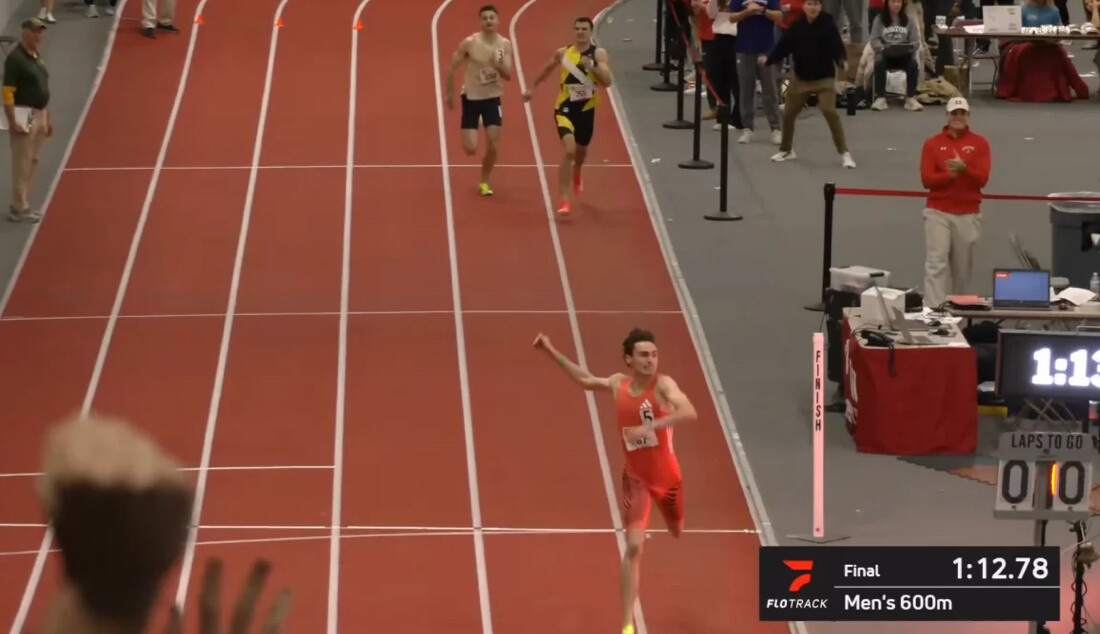
Hedengren ran with the composure of a veteran — controlled early, then increasingly aggressive as the laps wound down. Her roughly 4:35 closing 1600m sealed a performance that instantly ranks among the fastest indoor 5000m marks ever recorded by an American athlete.
Her debut wasn’t just fast — it was historic.
Hoey Breaks the Indoor 600m World Record
The men’s middle-distance events produced fireworks of their own. Josh Hoey blasted to an astonishing 1:12.84 in the 600m, breaking the all-time indoor world record. His final lap separation and relentless pace redefined what is possible in an event rarely highlighted for record-setting potential.
Hoey’s mark, paired with Hedengren’s breakthrough, gave the BU Opener two of the biggest global performances of the young indoor season.
A Powerful Start to the Season
The BU Opener once again proved why it is considered the premier early-season distance meet in the United States. Hedengren’s record run signaled the arrival of a rising star, while Hoey’s world record added a sprint-middle-distance exclamation point.
If opening weekend is any indication, this indoor season is set to be fast, competitive, and full of surprises.
by Boris Baron
Login to leave a comment
John Korir Set for Valencia Marathon Showdown After Boston Glory and Chicago DNF
The streets of Valencia—long known as a launchpad for marathon breakthroughs—will welcome another major storyline this Sunday as Boston Marathon champion John Korir lines up for one of the fastest races in the world.
Korir, who claimed the 2024 Boston Marathon title, heads to Spain looking to reset his momentum after a disappointing DNF at the Chicago Marathon. Valencia, however, has a reputation for revitalizing careers and producing history-making performances. It was here that Kelvin Kiptumastonished the running world with his 2:01:53 debut, and where Sebastian Sawe delivered his own blazing introduction to the distance.

This year’s edition will test Korir against another powerhouse field.

A Clash With Sisay Lemma and a Deep Kenyan Contingent
Leading the opposition is Sisay Lemma, the Ethiopian star and one of the most consistent marathoners on the international circuit. Lemma, who has repeatedly delivered world-class marks, will be targeting a major statement run in Valencia.
The Kenyan challenge will be formidable as well, with a trio of established athletes joining Korir on the start line:
• Hillary Kipkoech – former track standout making waves on the roads
• Edward Cheserek – the 17-time NCAA champion continuing his marathon evolution
• Justus Kangongo – a proven performer capable of big breakthroughs
Each arrives with something to prove—and Valencia’s flat, rapid course has a way of rewarding ambition.
Why Valencia Matters
The Valencia Marathon has earned its reputation as the fastest marathon outside of the World Marathon Majors, regularly producing:
• Course records
• National records
• Top-10 all-time performances
• Breakout debuts for emerging stars
For Korir, the race presents the perfect environment to reestablish his position among the world’s elite and build momentum heading into the 2025 season.
What’s at Stake
A strong performance would reinforce Korir’s Boston victory as a sign of lasting form—not a one-off moment. With Olympic selections and global rankings in play, every second in Valencia matters.
As fans await Sunday’s race, one question stands out:
Will the City of Running deliver yet another defining chapter in marathon history?
My Best Runs will have full coverage and results as the race unfolds.
by Boris Baron
Login to leave a comment
VALENCIA TRINIDAD ALFONSO
The Trinidad Alfonso EDP Valencia Marathon is held annually in the historic city of Valencia which, with its entirely flat circuit and perfect November temperature, averaging between 12-17 degrees, represents the ideal setting for hosting such a long-distance sporting challenge. This, coupled with the most incomparable of settings, makes the Valencia Marathon, Valencia, one of the most important events in...
more...Sydney McLaughlin-Levrone Named Women’s Track Athlete of the Year
Sydney McLaughlin-Levrone has been named the Women’s Track Athlete of the Year for 2025 by World Athletics, capping off a season where she once again redefined what excellence looks like in the 400 meters.
Already one of the most gifted athletes in the sport, McLaughlin-Levrone delivered a dominant year highlighted by her 400m world title and a world-leading performance in the flat 400m—a rare double few athletes have even attempted. Her speed, form, and command over both the hurdles and the flat event continue to elevate her into all-time territory.
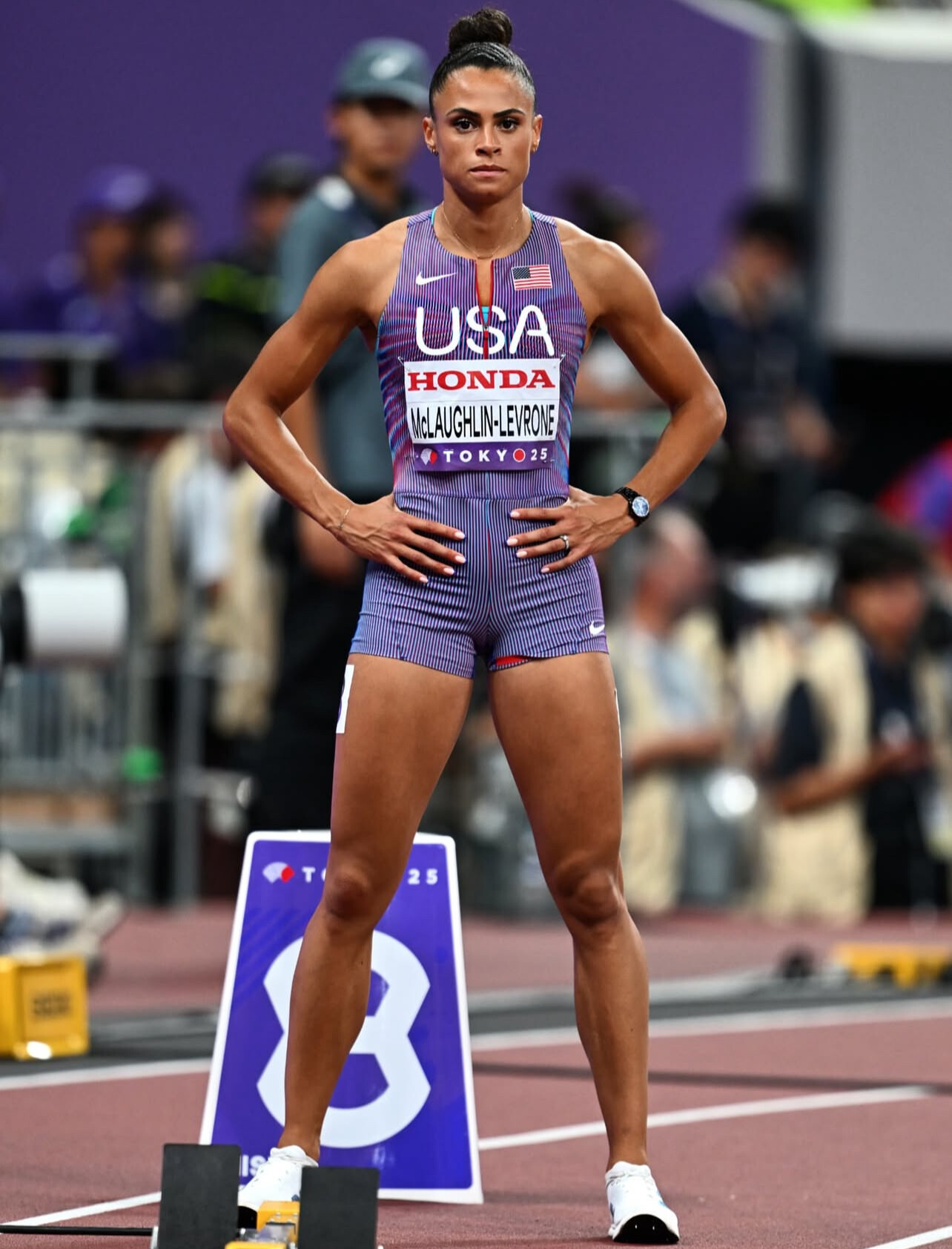
McLaughlin-Levrone’s season was not simply about winning races. It was about how she won them—control from the opening strides, unmatched top-end speed, and the kind of precision that has become her signature. Every time she stepped on the track, she looked untouchable.
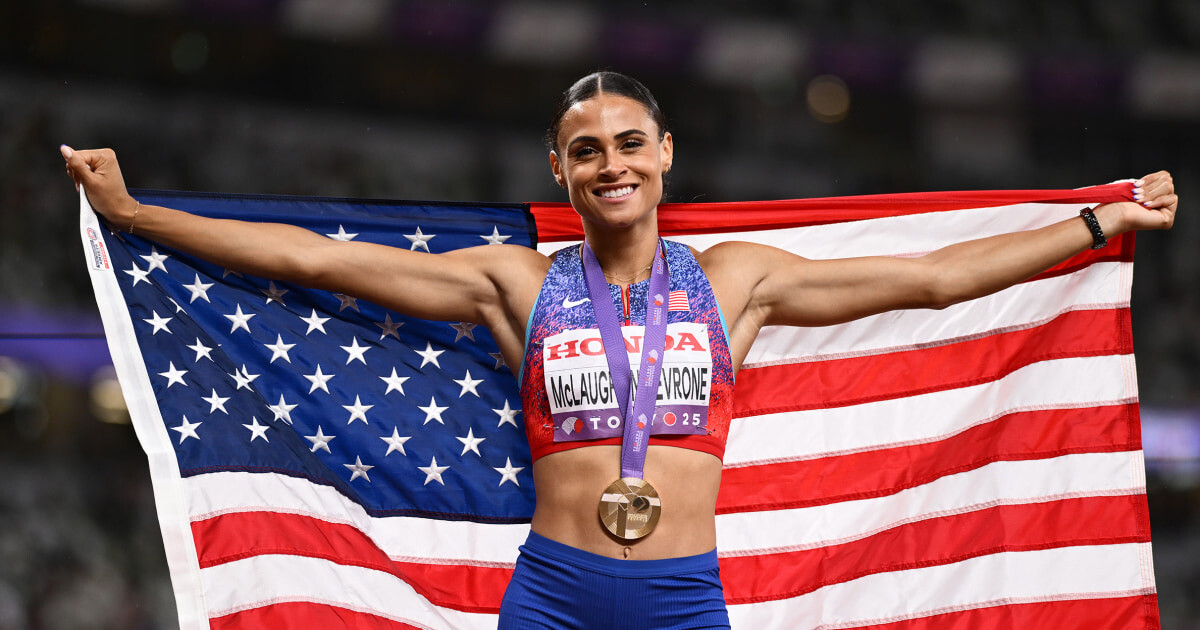
Her rivalry with Dutch star Femke Bol fueled global attention throughout the year, but when it came to the biggest stage, McLaughlin-Levrone delivered once again.
With this award, she solidifies her place as one of the defining athletes of her generation—and one of the most complete 400m runners the sport has ever seen.
by Boris Baron
Login to leave a comment
Emmanuel Wanyonyi Named Male Track Athlete of the Year
Kenya’s Emmanuel Wanyonyi has been named Male Track Athlete of the Year, a recognition that felt inevitable after a season marked by dominance, composure, and electrifying performances on the global stage. At just 20 years old, Wanyonyi has already rewritten expectations in the men’s 800 meters—and 2025 proved to be his breakthrough year.
Wanyonyi consistently displayed the kind of front-end speed, race intelligence, and finishing strength that separates champions from contenders. His victories across the Diamond League circuit, combined with his commanding global championship run, made him the clear favorite for the award.
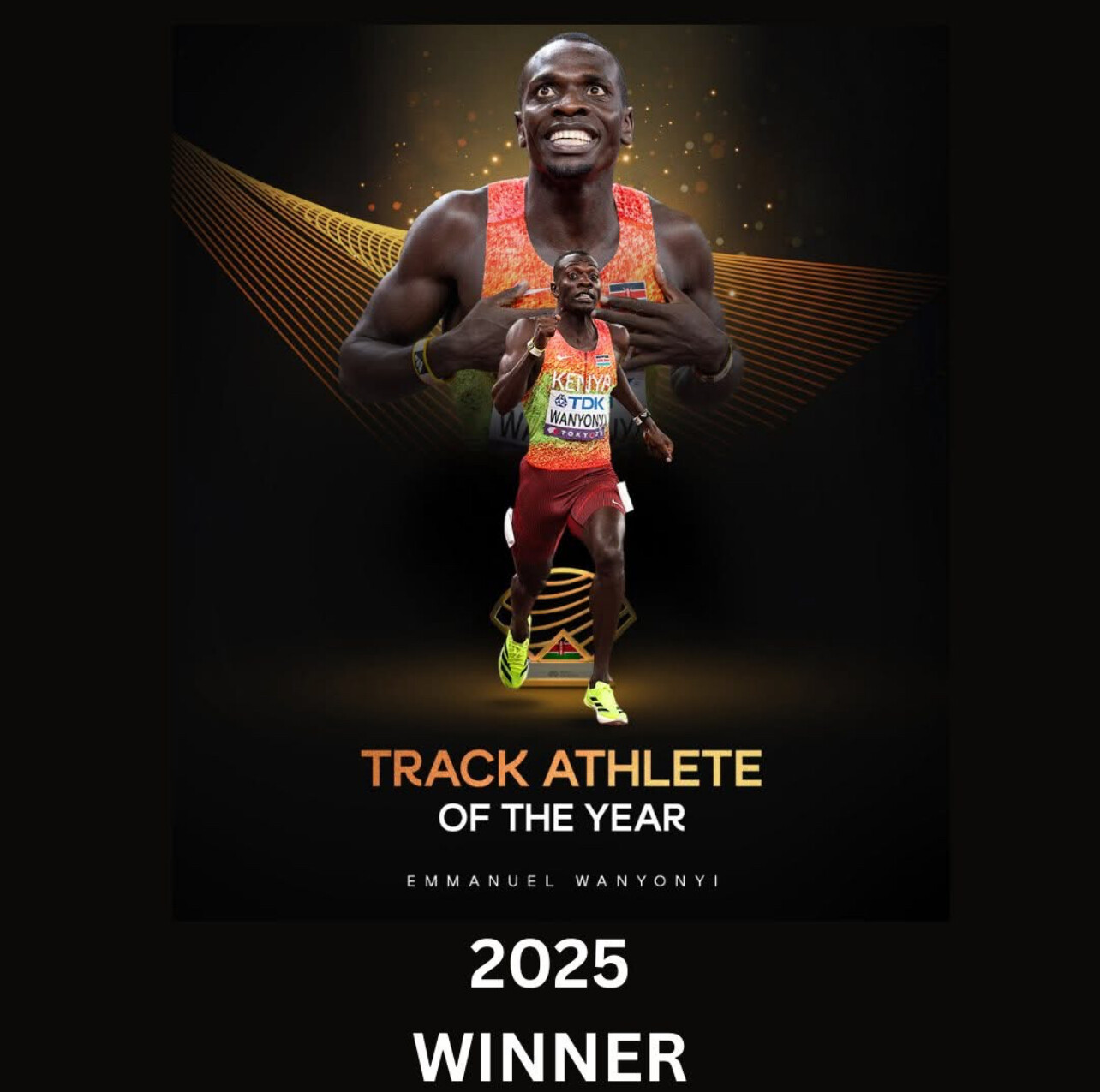
What sets Wanyonyi apart is his ability to take control of races early and maintain a pace that leaves even seasoned competitors scrambling. Whether he was pushing the tempo from the break or waiting to unleash a decisive final burst, Wanyonyi showed maturity well beyond his age.
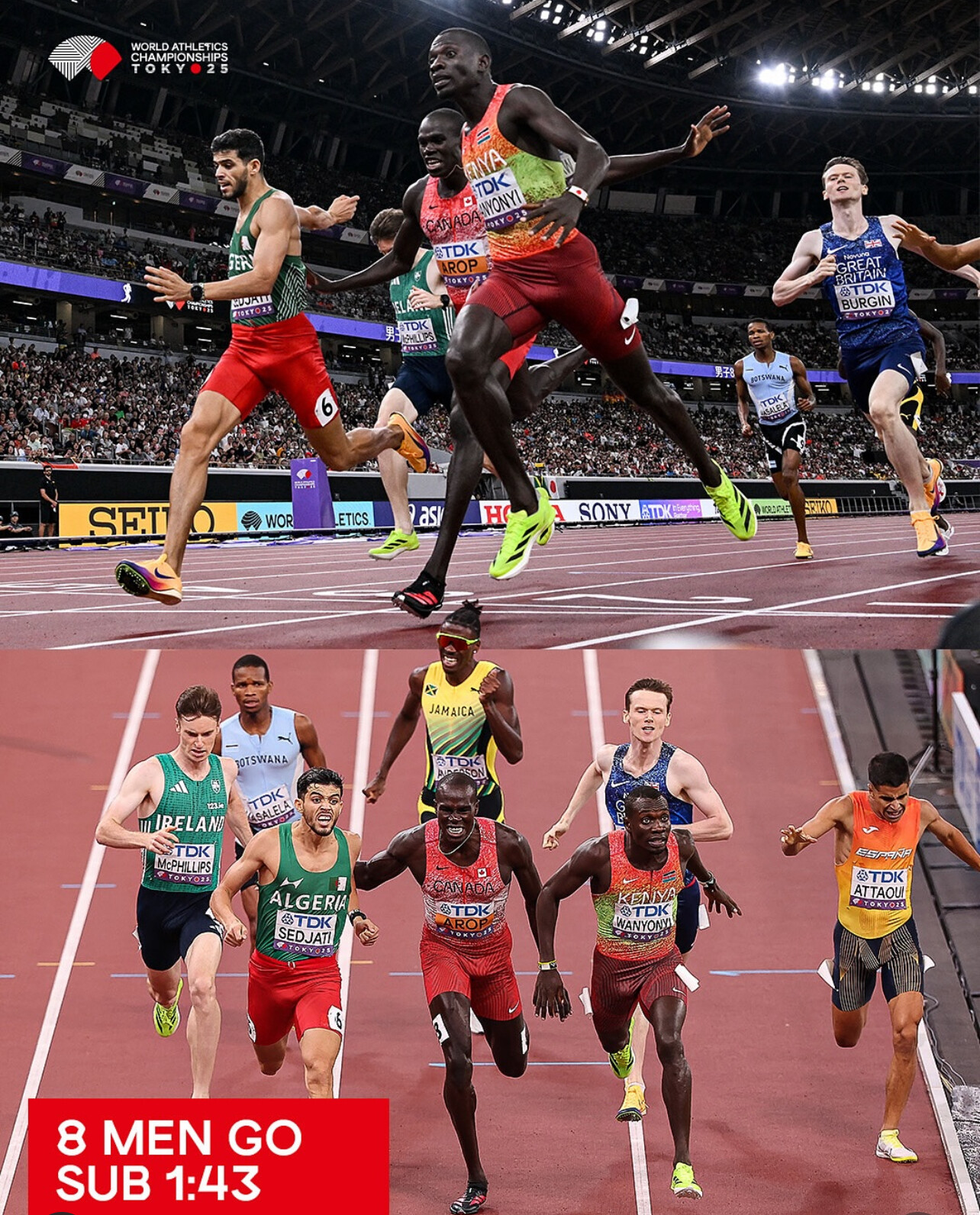
Could anyone else have challenged him?
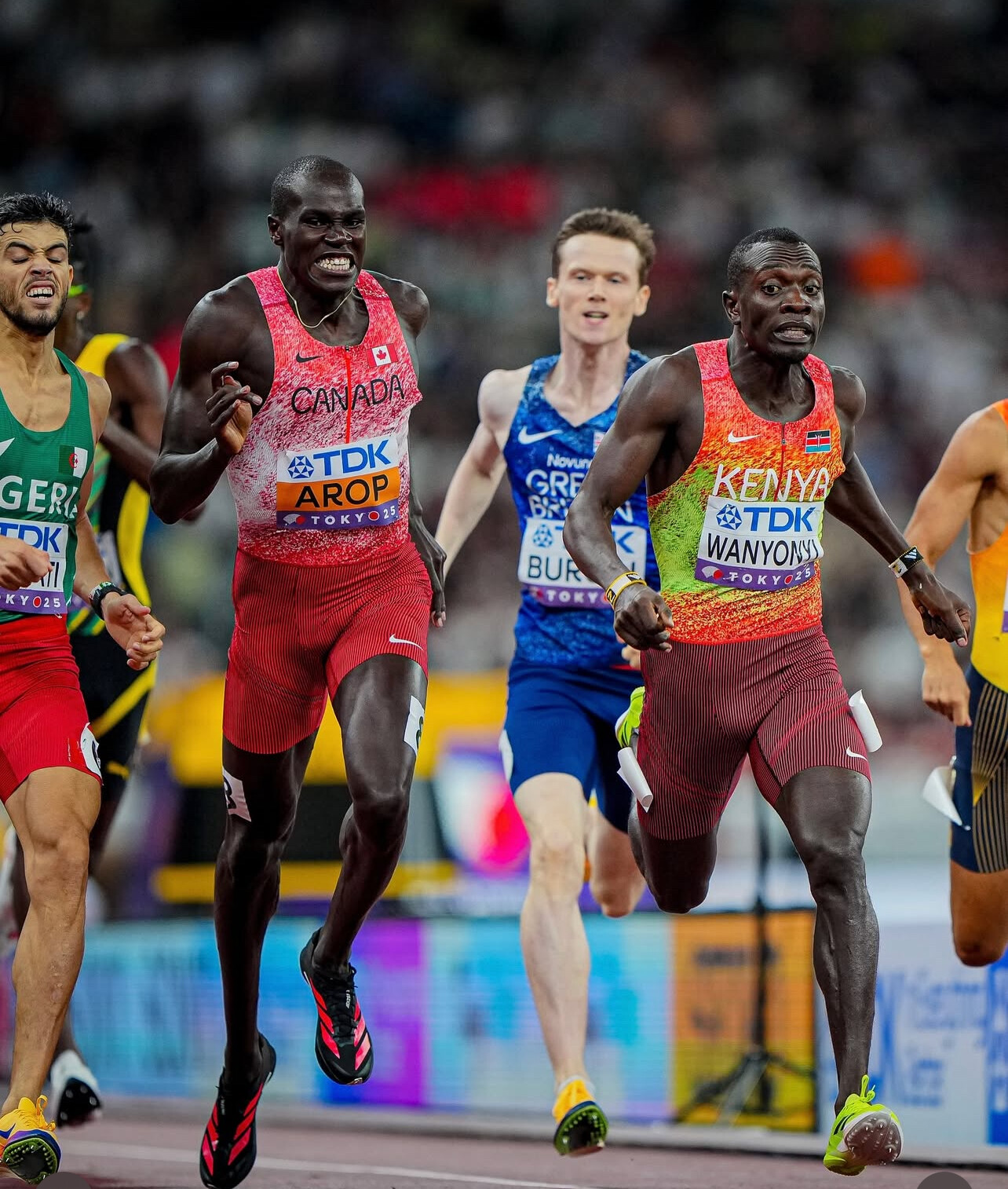
In truth, only a handful came close. Canada’s Marco Arop, the reigning world champion from 2023, mounted a strong season and pushed Wanyonyi in several marquee races. Algeria’s Djamel Sedjati also delivered standout performances. But no one matched Wanyonyi’s consistency, his fearlessness, or his results across the year’s biggest stages.
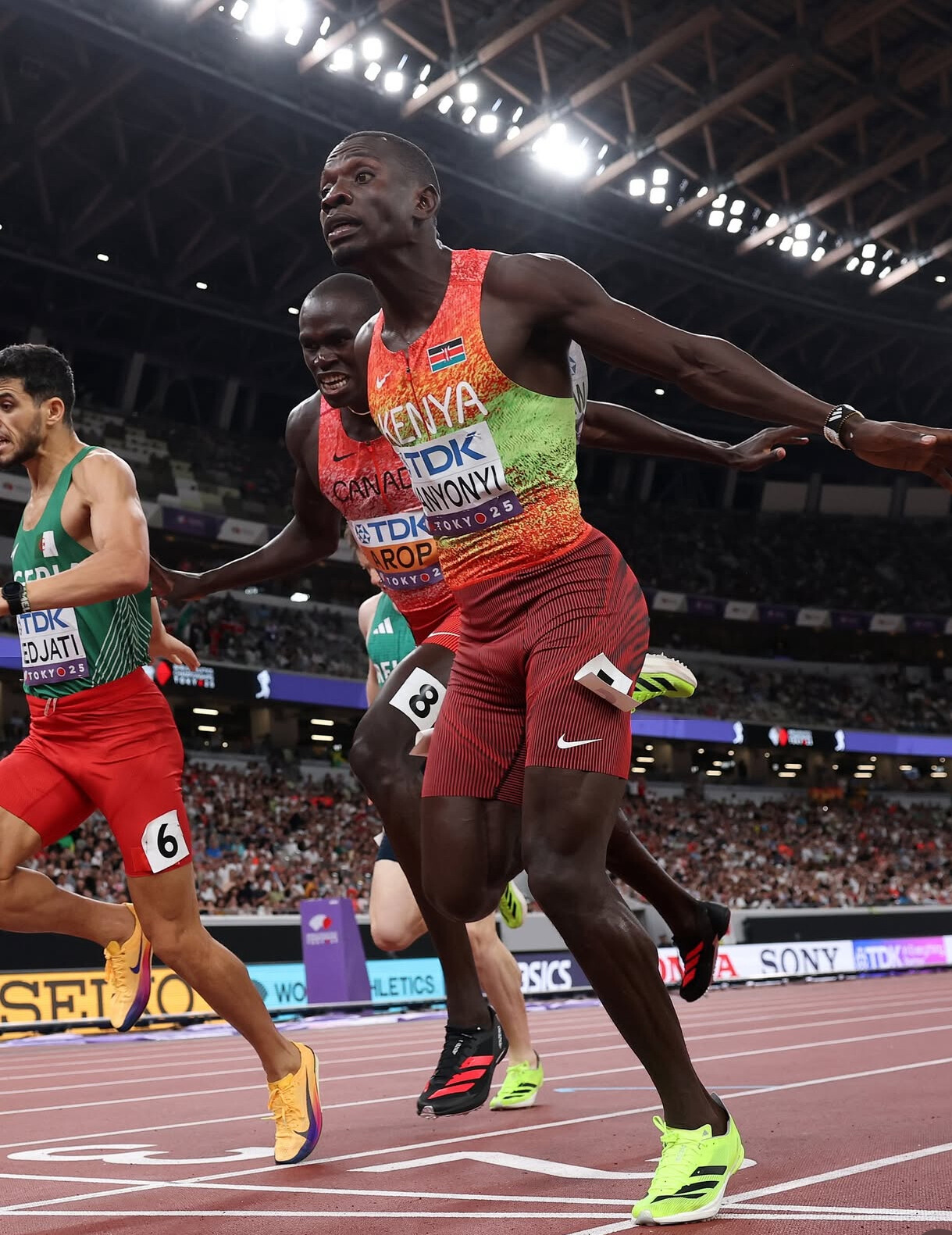
Wanyonyi’s rise is also seen as a resurgence for Kenya’s middle-distance dominance, echoing the eras of David Rudisha and Wilson Kipketer. Coaches and analysts agree: we may only be seeing the beginning.
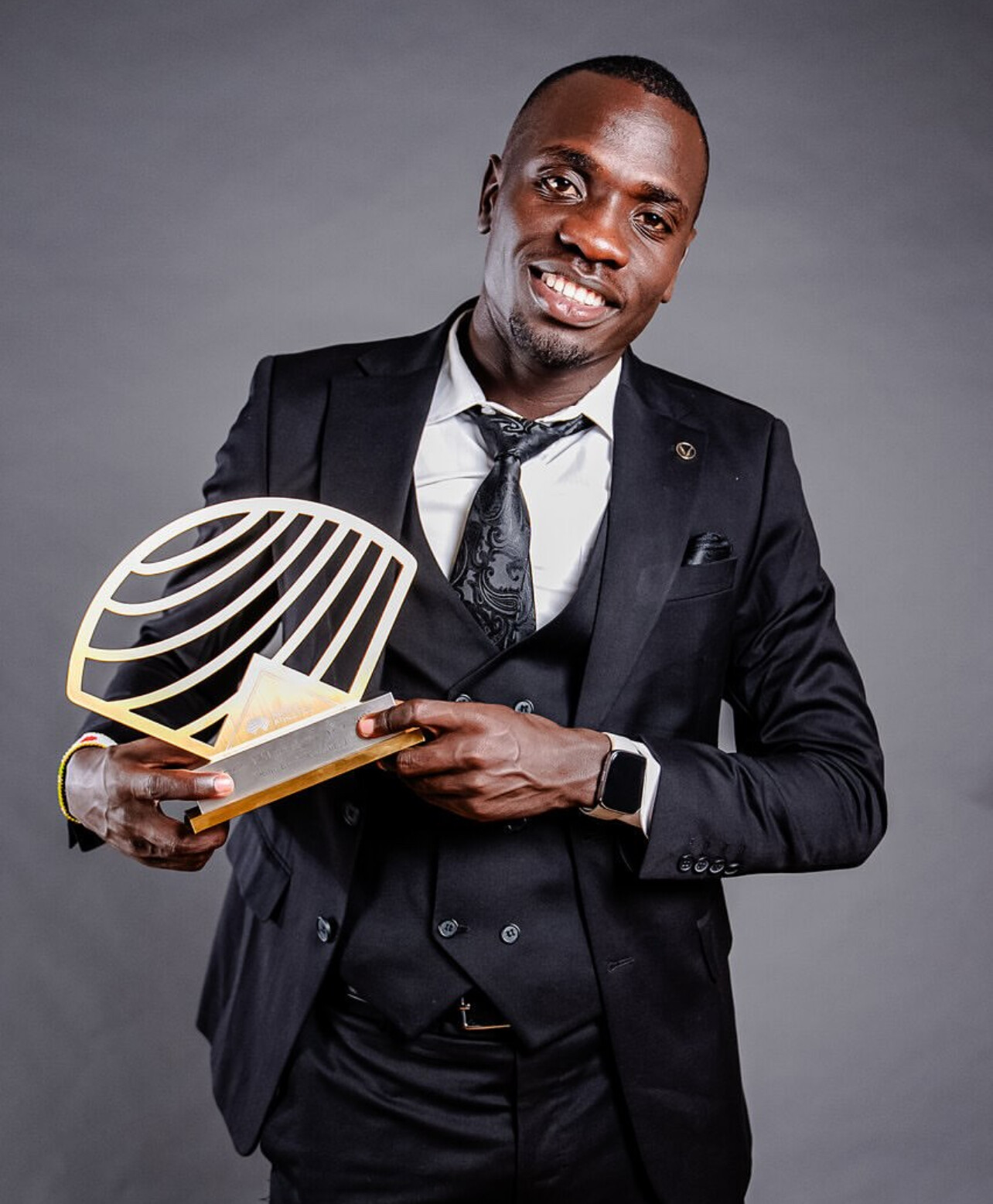
As 2026 approaches, Wanyonyi now stands as the man to beat—and the face of the next generation of 800m excellence.
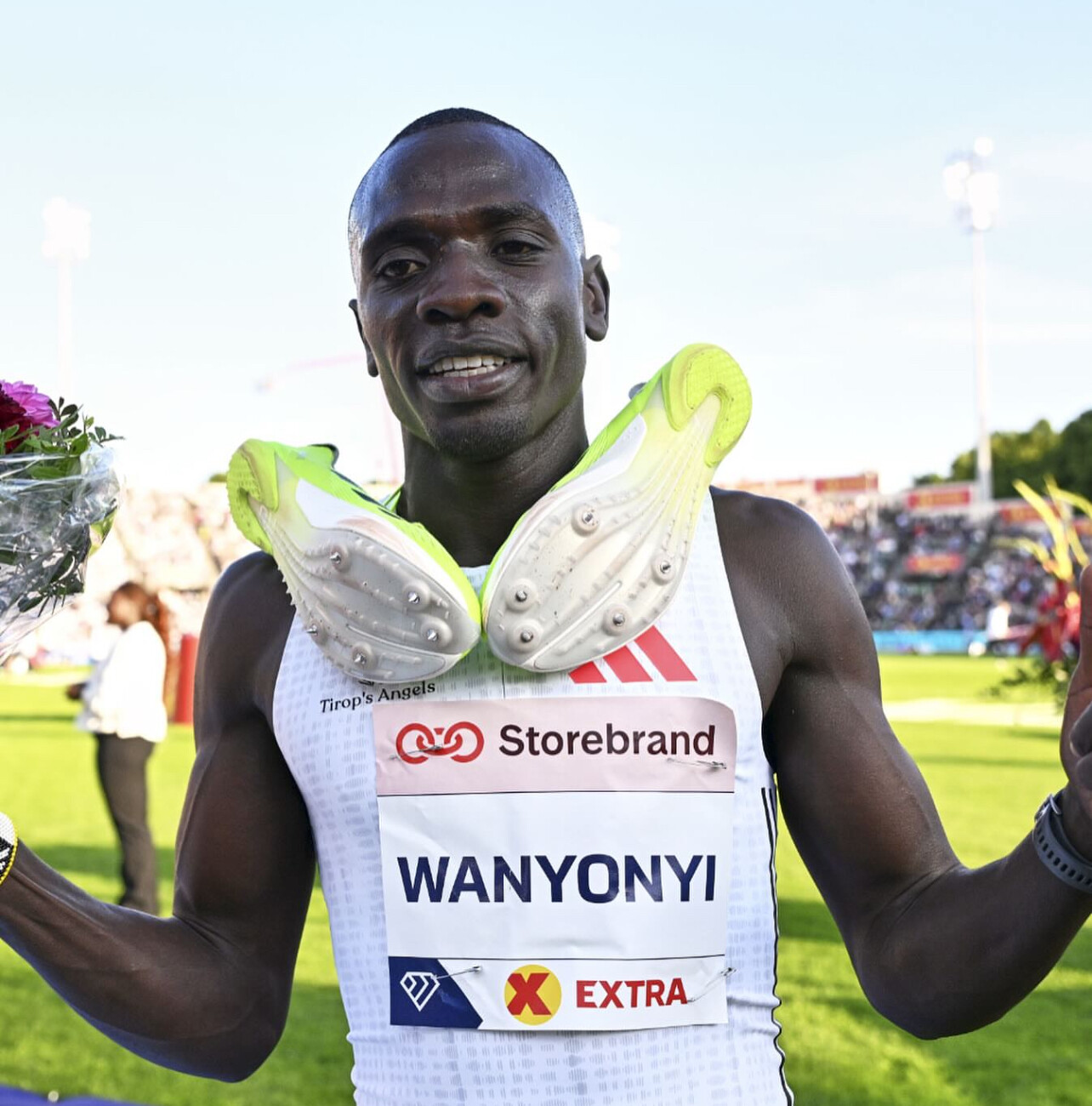
by Boris Baron
Login to leave a comment
Kosgei Shatters Course Record as Mengesha Leads Ethiopian Sweep at the 2025 Shanghai Marathon
The 2025 Shanghai Marathon delivered the kind of fireworks organizers were hoping for on Sunday, November 30—fast times, dominant front-running, and a powerful statement that Shanghai is ready to join the World Marathon Majors.
More than 23,000 runners started at the Bund at 7 a.m., racing through one of the world’s most iconic skylines before finishing at Shanghai Stadium. Both the men’s and women’s races produced standout performances.
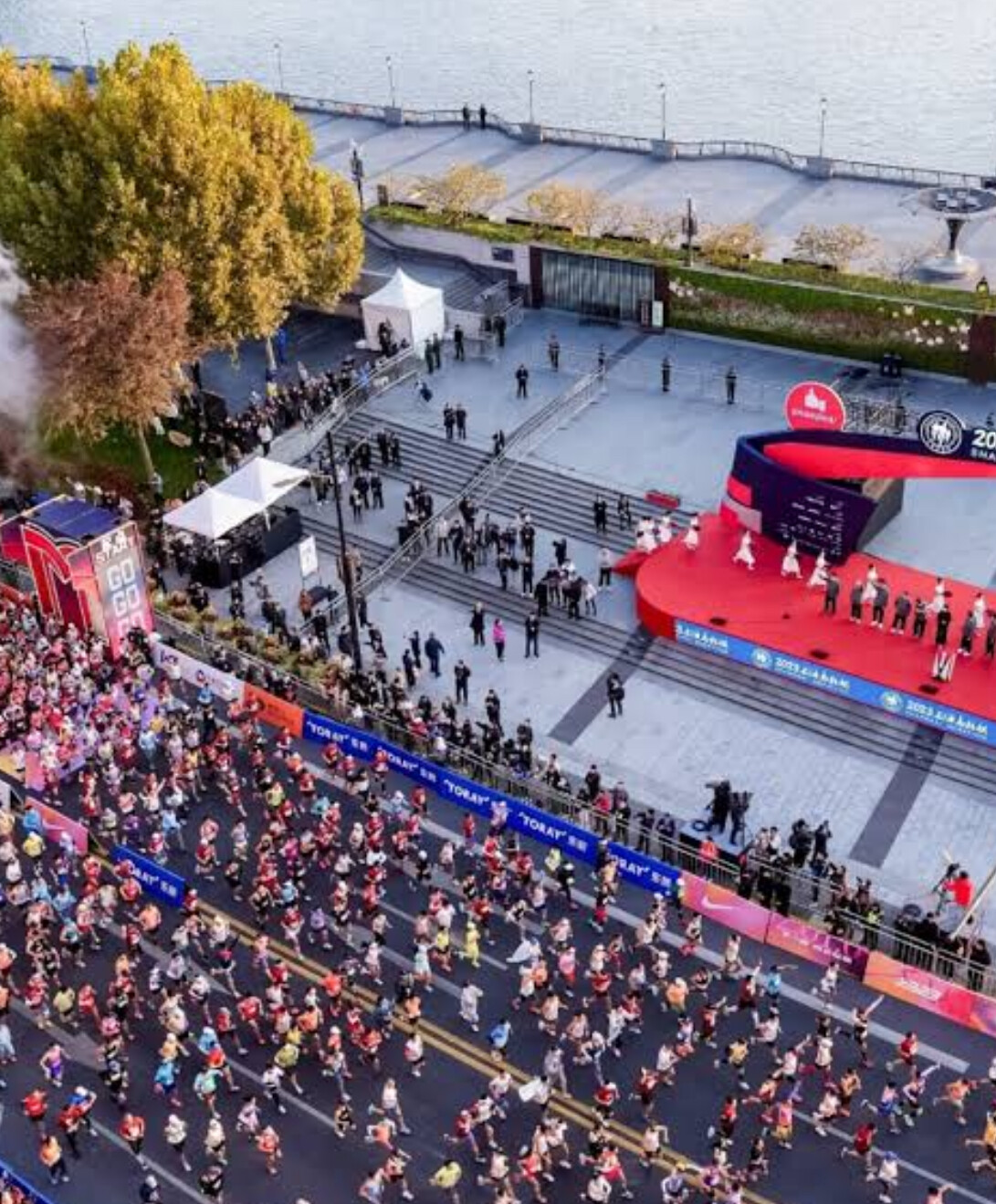
Kosgei Back on Top With a Historic Run
Former world record-holder Brigid Kosgei returned to the top of the podium in commanding style. The 31-year-old Kenyan surged early, hit halfway under 69 minutes, and never looked back, winning in 2:16:36—
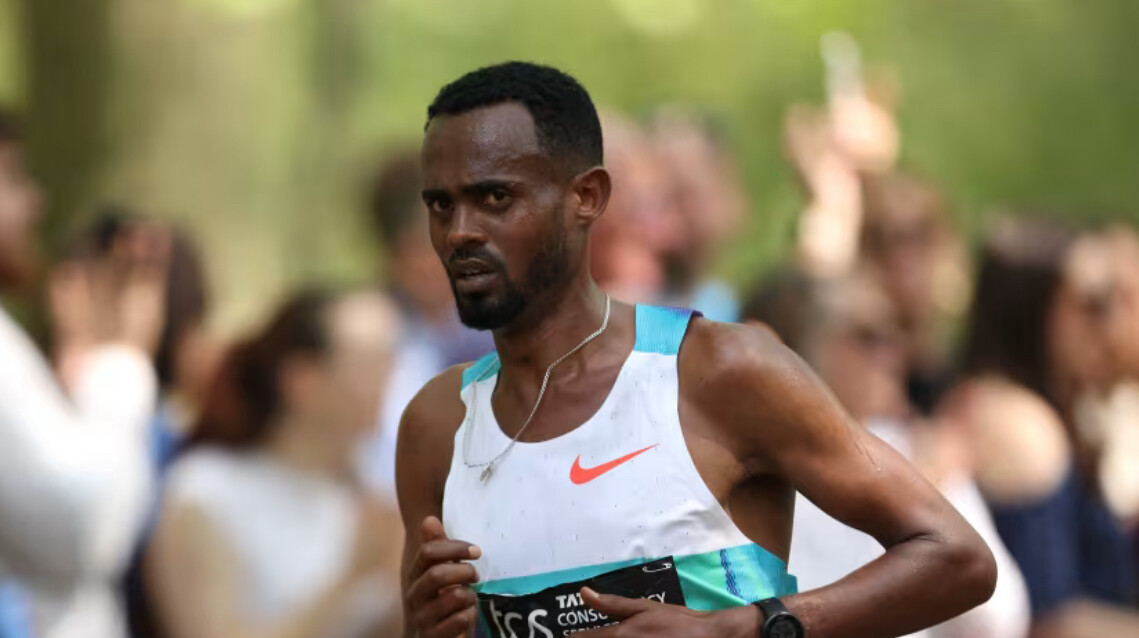
• the fastest marathon ever run on Chinese soil,
• a new Shanghai course record, and
• the third-fastest performance of her career.
Only compatriot Irine Chepet Cheptai could stay close in the early miles, eventually taking second in 2:18:51. Ethiopia’s Tiruye Mesfin finished third in 2:20:38, followed closely by fellow Ethiopian Bekelech Gudeta at 2:20:59.
China’s top star Zhang Deshun placed fifth in 2:25:13, continuing her impressive streak of top domestic finishes.
Ethiopia Sweeps the Men’s Podium
The men’s race unfolded differently—a large, aggressive pack early on before Ethiopia dominated the final 10K. In a furious sprint to the line, Milkesa Mengesha broke the tape in 2:06:25, edging compatriot Dawit Wolde by two seconds. Deresa Geleta finished third in 2:06:36, completing an all-Ethiopian podium.
Five Ethiopians broke 2:07, underscoring the depth at the front.
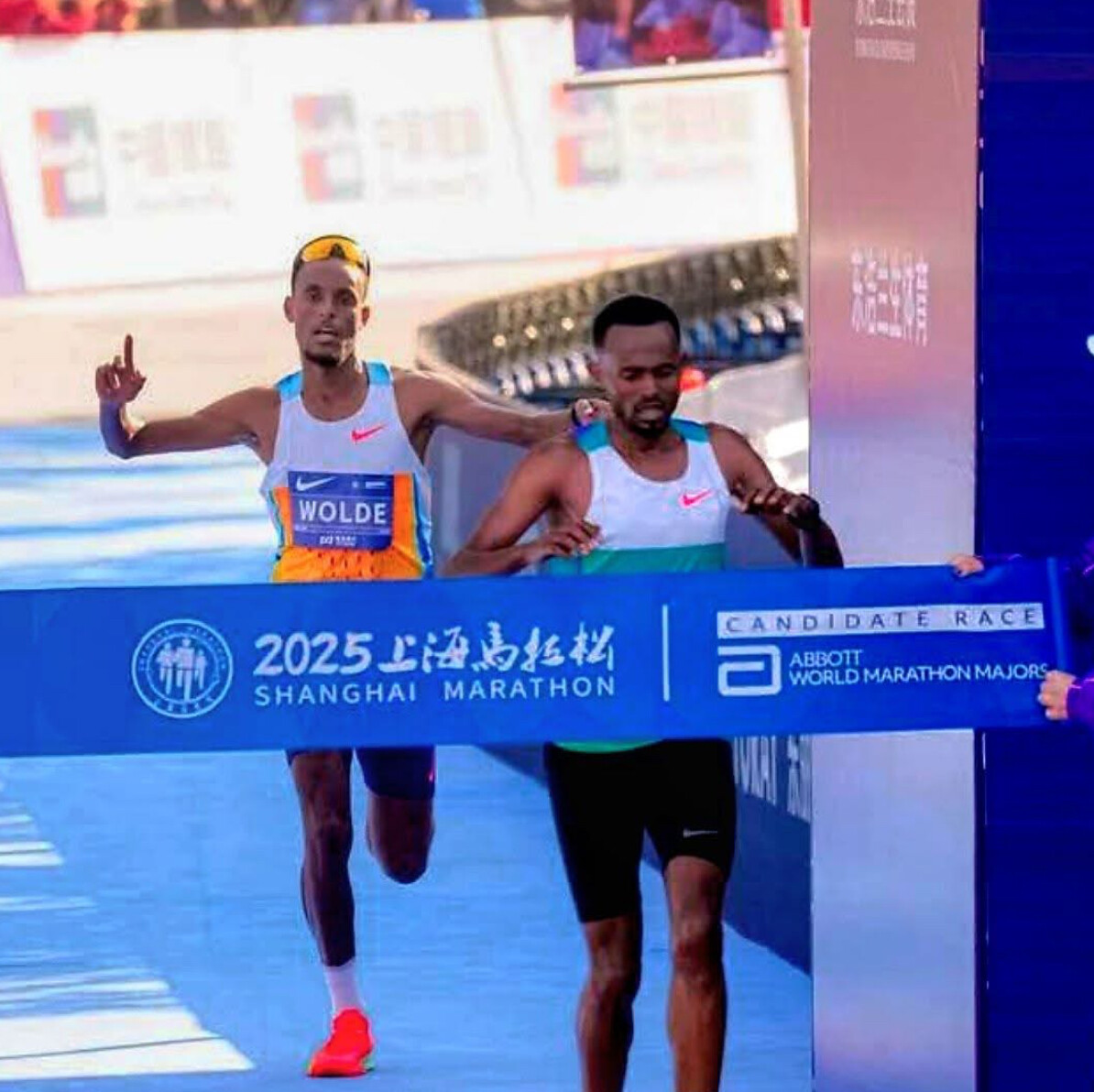
China’s Feng Peiyou delivered the best domestic performance of the day, clocking 2:08:36, the fastest marathon ever run by a Chinese athlete in Shanghai. Countrymen Yang Kegu, Li Dalin, and Ma Rui also cracked the top ten.
Top 10 Results
Men
1. Milkesa Mengesha (ETH) – 2:06:25
2. Dawit Wolde (ETH) – 2:06:27
3. Deresa Geleta (ETH) – 2:06:36
4. Haftu Teklu (ETH) – 2:06:57
5. Challa Gossa (ETH) – 2:08:06
6. Feng Peiyou (CHN) – 2:08:36
7. Solomon Kirwa Yego (KEN) – 2:09:42
8. Yang Kegu (CHN) – 2:12:00
9. Li Dalin (CHN) – 2:13:11
10. Ma Rui (CHN) – 2:13:26
Women
1. Brigid Kosgei (KEN) – 2:16:36 (course & Chinese all-comers record)
2. Irine Chepet Cheptai (KEN) – 2:18:51
3. Tiruye Mesfin (ETH) – 2:20:38
4. Bekelech Gudeta (ETH) – 2:20:59
5. Zhang Deshun (CHN) – 2:25:13
6. Veronicah Njeri Maina (KEN) – 2:26:33
7. Wu Shuang (CHN) – 2:27:17
8. Yao Miao (CHN) – 2:31:13
9. Shen Jiayao (CHN) – 2:31:57
10. Ma Xuexian (CHN) – 2:34:51
Shanghai’s Road to Becoming a Major
For the second straight year, organizers staged the race under the “Run Beyond Borders” banner, showcasing deep elite fields, expanded medical and volunteer support, and international broadcast coverage. Shanghai is currently undergoing World Marathon Majors evaluation, with the earliest possible inclusion in 2027.
by Boris Baron
Login to leave a comment
Shanghai International Marathon
Shanghai International Marathon has established itself as the marquee running event on China’s Marathon calendar. Every November, tens of thousand participants run passing the many historical places of this city such as Bund Bull, Customs House, Shanghai Museum, Shanghai Grand Theater, Shanghai Exhibition center, Jing’an Temple, Nan Pu Bridge, Lu Pu Bridge, Long Hua Temple, Shanghai Stadium. The course records...
more...Stacked Fields Set for Sunday’s Shanghai Marathon as Kosgei and Kipchumba Return
The 2025 Shanghai Marathon — a World Athletics Platinum Label event — is set for Sunday (30), and both the women’s and men’s races are shaping up as some of the strongest in the event’s history. Former world record-holder Brigid Kosgei and defending men’s champion Philimon Kiptoo Kipchumba headline a deep international lineup chasing fast times on one of Asia’s premier courses.
The mass start field in Shanghai will once again deliver the energy and depth that has become a signature of this Platinum Label event, with tens of thousands of runners pouring through the city streets behind one of the strongest elite line-ups of the season. Local club runners, age-group veterans, first-time marathoners, and international amateurs will all share the course with the world’s best, creating a fast, colorful, and highly competitive atmosphere from start to finish.

With ideal late-November conditions expected and Shanghai’s reputation for producing personal bests, the mass field is poised for another year of standout performances and unforgettable marathon moments.

Kosgei Targets First Win in Two Years — and a Course Record
Brigid Kosgei, whose 2:14:04 stood as the world record from 2019 to 2023, lines up for her third marathon of the year. The 31-year-old Kenyan has been consistently sharp in 2025—second in Hamburg (2:18:26) and again in Sydney (2:18:56).
A victory in Shanghai would be her first since Abu Dhabi 2023, but the stakes go beyond winning:
• The course record stands at 2:20:36 (Yebrgual Melese, 2018).
• Pacers have been asked to roll out at 2:17:50 pace, fast enough to challenge both the course mark and the Chinese all-comers’ record (2:18:09 by Ruti Aga, 2023).
Kosgei will not be alone. Two sub-2:20 performers stand in her way:
• Irine Cheptai (KEN) — PB 2:17:51, coming off strong runs in Chicago and Boston.
• Tiruye Mesfin (ETH) — PB 2:18:35, part of Ethiopia’s long history of dominance here.
Ethiopian women have won 10 of the last 14 editions, and Mesfin leads their charge again.
China brings a serious contender as well.
• Zhang Deshun, the No. 3 all-time Chinese marathoner (2:20:53 at Tokyo), returns just two weeks after winning the National Games.
Add in Bekelech Gudeta (ETH) — who won marathons in Seoul and Mexico City this year — and the women’s race becomes one of the most competitive in Shanghai’s history.
Four Sub-2:04 Ethiopians Lead Men’s Lineup
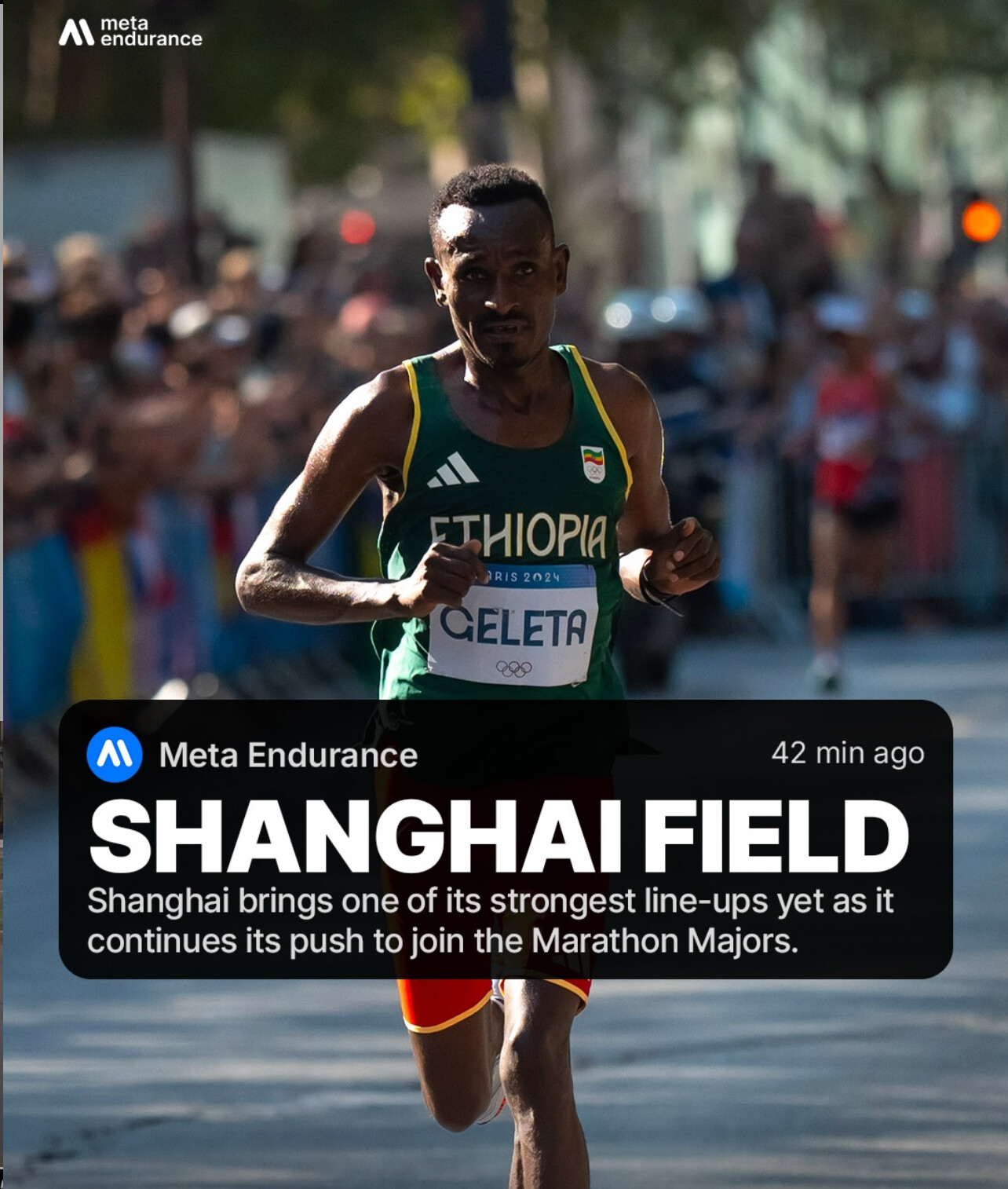
The men’s race may be even deeper. Ethiopia sends a quartet capable of pushing into all-time territory:
• Deresa Geleta (ETH) — 2:02:38, fastest in the field
• Birhanu Legese (ETH) — 2:02:48, two-time Tokyo champion
• Milkesa Mengesha (ETH) — 2024 Berlin winner
• Dawit Wolde (ETH) — former Xiamen champion
Geleta has been brilliant when healthy, clocking 2:02:38 in Valencia and 2:03:51 in Tokyo this year, though he dropped out of Wuxi and the World Championships. Legese tuned up with a 1:00:54 at the New Delhi Half.
But Ethiopia is far from guaranteed victory.
Kiptoo Kipchumba Returns to Defend His Title
Kenya’s Philimon Kiptoo Kipchumba, the 2023 champion, owns the Chinese all-comers’ record of 2:05:35 set in Shanghai. He hasn’t raced since placing 10th here last year, but he returns with unfinished business.
He is joined by a strong Kenyan contingent:
• Titus Kipruto — 2:04:54
• Solomon Kirwa Yego — 2:05:42
• Kenneth Keter — 2:05:53
• Edmond Kipngetich — 2:06:47
China’s biggest hope is Feng Peiyou, the second-fastest Chinese marathoner ever (2:07:06). A small improvement would break the national record of 2:06:57.
Pacers will target 2:58/km (≈2:05:00) — fast enough to threaten Kiptoo’s all-comers’ record.
Leading Entries
Women
• Brigid Kosgei (KEN) – 2:14:04
• Irine Chepet Cheptai (KEN) – 2:17:51
• Tiruye Mesfin (ETH) – 2:18:35
• Selly Chepyego Kaptich (KEN) – 2:20:03
• Zhang Deshun (CHN) – 2:20:53
• Bekelech Gudeta (ETH) – 2:21:36
• Veronicah Njeri Maina (KEN) – 2:24:46
• Xia Yuyu (CHN) – 2:25:45
• Wu Bing (CHN) – 2:26:01
• Li Meizhen (CHN) – 2:27:51
• Shen Ni (CHN) – 2:28:47
• Huang Xuemei (CHN) – 2:29:51
Men
• Deresa Geleta (ETH) – 2:02:38
• Birhanu Legese (ETH) – 2:02:48
• Dawit Wolde (ETH) – 2:03:48
• Haftu Teklu (ETH) – 2:04:42
• Titus Kipruto (KEN) – 2:04:54
• Philimon Kiptoo Kipchumba (KEN) – 2:05:35
• Solomon Kirwa Yego (KEN) – 2:05:42
• Kenneth Keter (KEN) – 2:05:53
• Edmond Kipngetich (KEN) – 2:06:47
• Feng Peiyou (CHN) – 2:07:06
• Challa Gossa (ETH) – 2:07:32
• Wu Xiangdong (CHN) – 2:08:04
by World Athletics
Login to leave a comment
Shanghai International Marathon
Shanghai International Marathon has established itself as the marquee running event on China’s Marathon calendar. Every November, tens of thousand participants run passing the many historical places of this city such as Bund Bull, Customs House, Shanghai Museum, Shanghai Grand Theater, Shanghai Exhibition center, Jing’an Temple, Nan Pu Bridge, Lu Pu Bridge, Long Hua Temple, Shanghai Stadium. The course records...
more...Stephen Mokoka Breaks 37-Year-Old SA Veterans Marathon Record at Big Hole Marathon
South African marathon legend Stephen Mokoka continues to prove that age is no barrier to excellence. On Saturday, November 22, 2025, the 40-year-old star shattered the South African veterans (40+) marathon record at the Big Hole Marathon in Kimberley, finishing second overall in a brilliant 2:15:31.
The previous record — 2:17:40, set by Paulus Masilela in 1988 — had stood untouched for 37 years. Mokoka didn’t just dip under it; he demolished it.
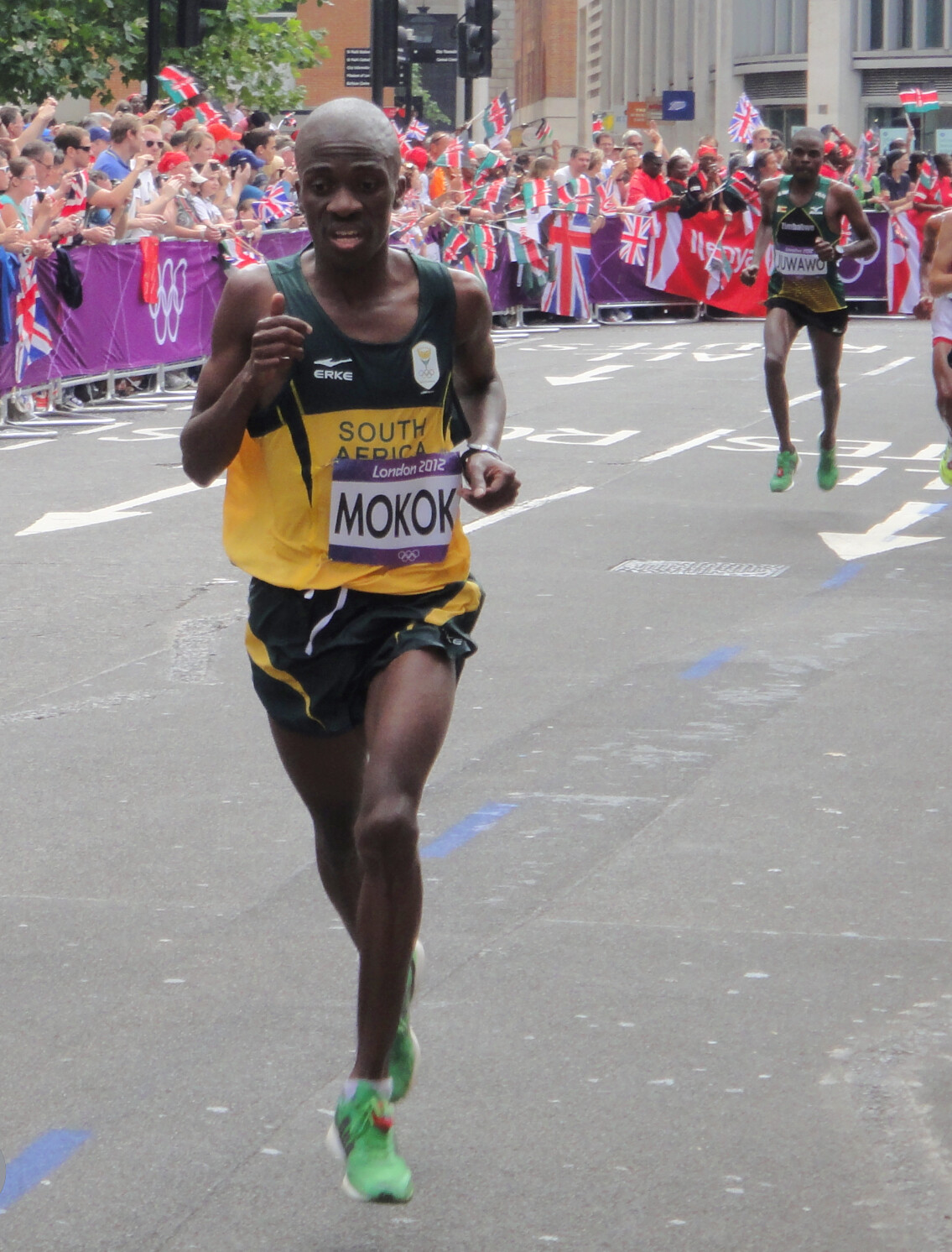
Adding to the historic moment, fellow veteran Lucky Mohale also broke the old mark with his fourth-place finish in 2:17:19. Two over-40 athletes surpassing a decades-old national record on the same day is a rare and remarkable achievement in distance running.
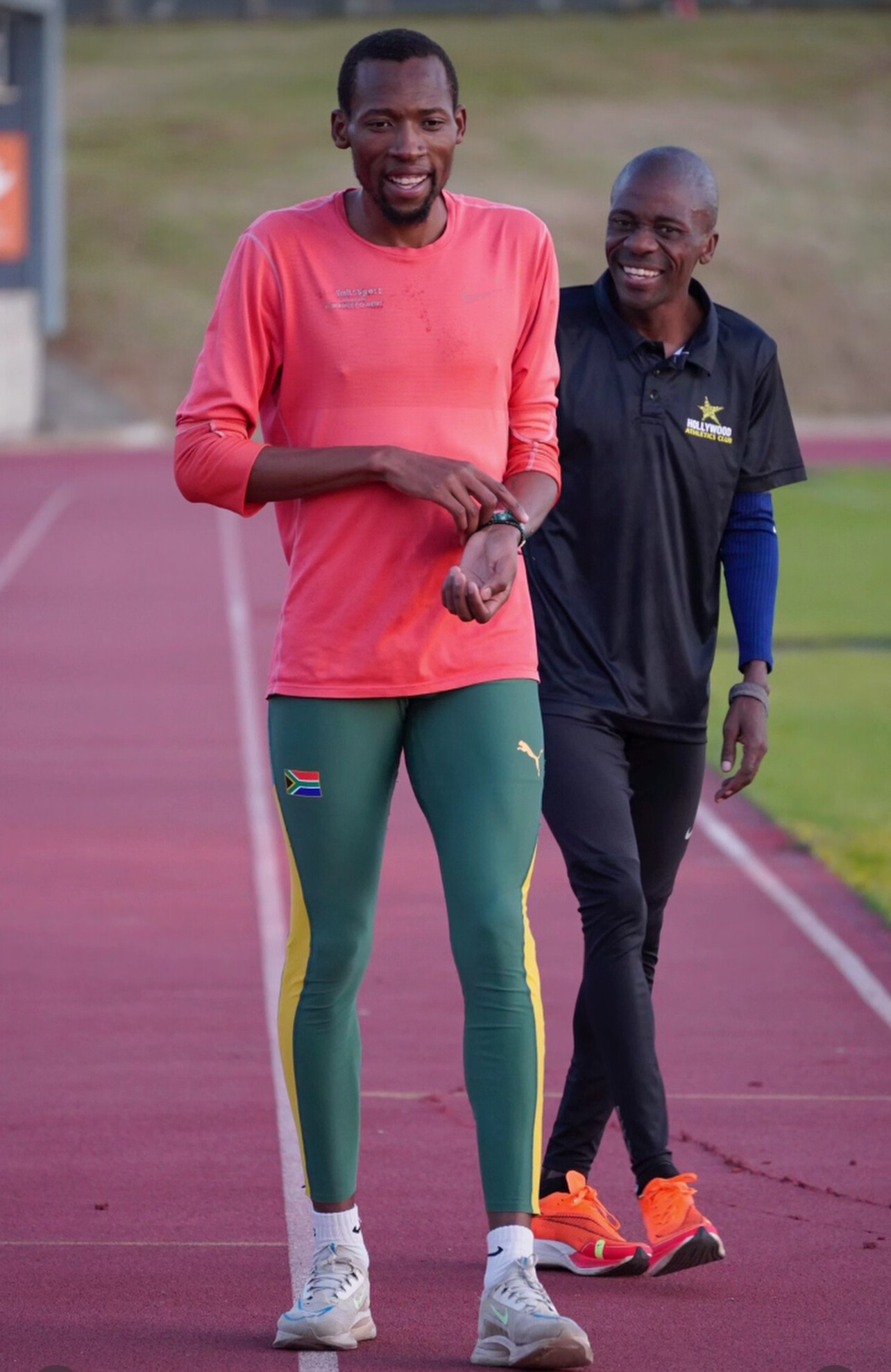
Top Veterans Results
• Stephen Mokoka — 2:15:31
• Lucky Mohale — 2:17:19
A Masterclass in Longevity
Mokoka, one of South Africa’s most decorated distance runners, has been a model of consistency for nearly two decades. His record-breaking run in Kimberley underscores not only his exceptional endurance but also his continued drive to compete at the highest level well into his 40s.
With performances like this, Mokoka solidifies his place as one of the most durable marathoners of his era.
What’s Ahead?
With the veterans record now rewritten, fans are already asking:
Can Mokoka target even more age-group records in 2026?
Given the shape he showed in Kimberley, nothing seems out of reach.
A historic day for South African distance running — and a powerful reminder of what is possible when talent, experience, and longevity come together.
by Boris Baron
Login to leave a comment
From 36:34 10k at Age 9 to 31:35 at Age 15: The Remarkable Rise of Norway’s Per August
In a world where young talent is emerging faster than ever, few stories capture the imagination quite like that of Per August, Norway’s rapidly rising teenage distance star. His progression over the past six years is nothing short of extraordinary—moving from a 36:34 10K at just nine years old to an impressive 31:35 at age 15.
What sets Per August apart isn’t just the times; it’s the level of professionalism embedded in his training. Guided by a Norwegian system known for its precision, he has embraced a routine that mirrors the world’s best:
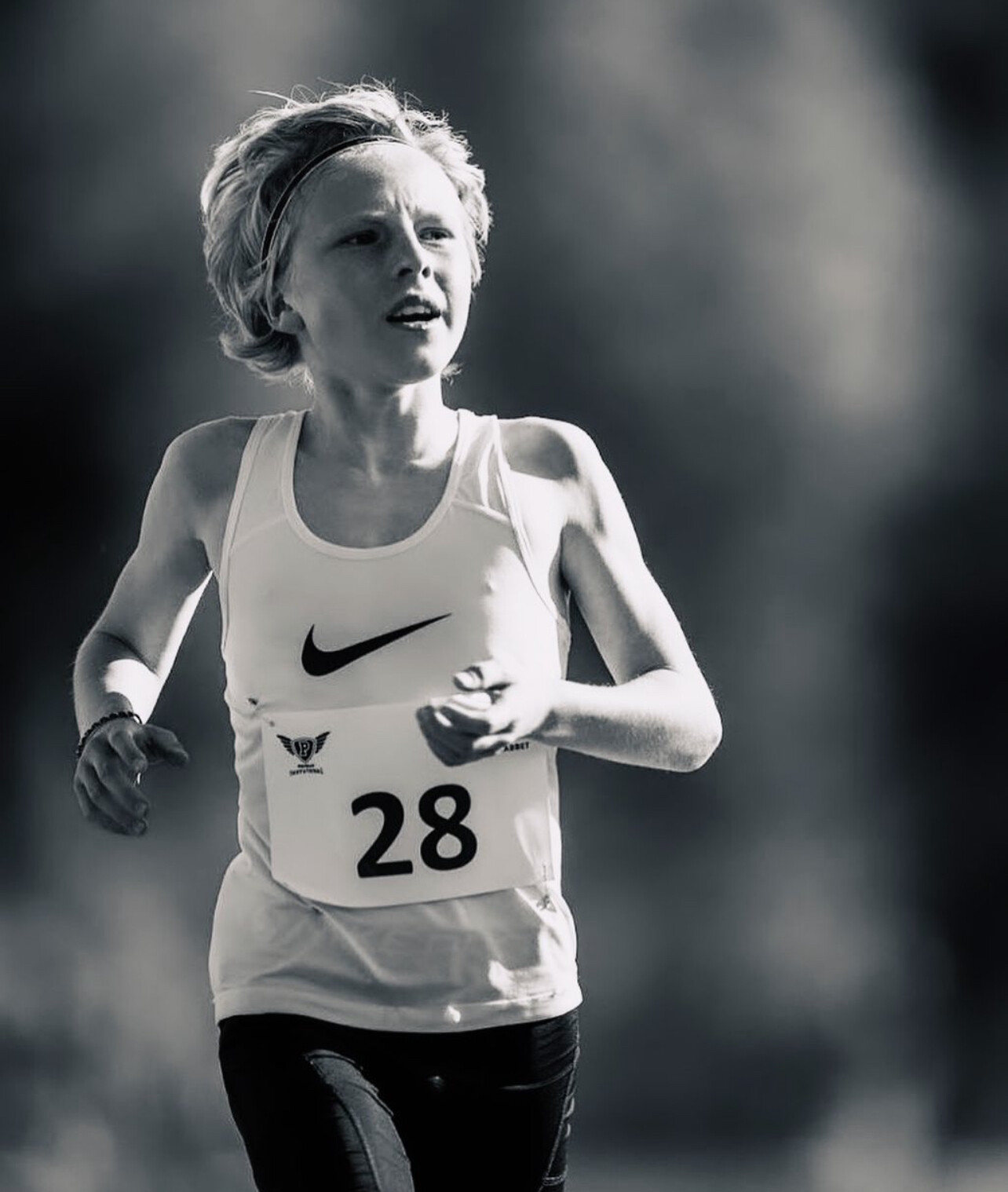
• Double-threshold sessions
• Weekly hill intervals
• Significant mileage performed on the treadmill
• Regular lactate testing to perfectly dial in effort
This scientific, disciplined approach—popularized by Norway’s Ingebrigtsen brothers—has helped Per August shave nearly five minutes off his 10K time between ages 9 and 15. His year-by-year progression demonstrates both remarkable consistency and a rare ability to adapt to higher training loads:
Age 9: 36:34 (3:34/km pace)
Age 11: 34:44
Age 12: 33:17
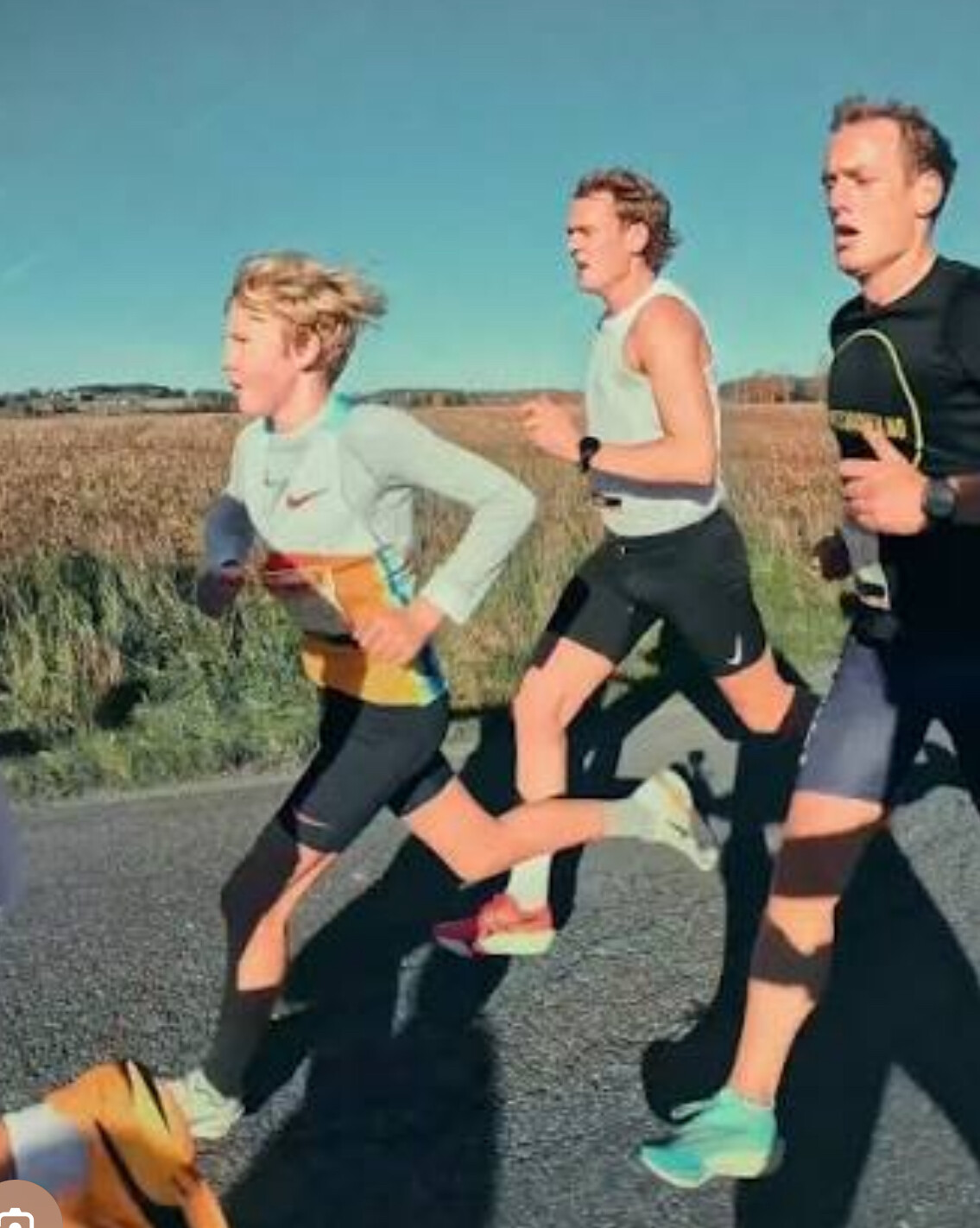
Age 13: 32:43
Age 14: 32:11
Age 15: 31:35 (3:10/km)
For a 15-year-old, 31:35 places him in elite company—not just locally, but globally.
Per August’s story is a testament to what happens when smart training meets long-term commitment. His progression reminds the running world that success is not built overnight, but year after year, with patience, structure, and belief.
If this trajectory continues, Norway may soon have another world-class distance runner on its hands. And at only 15, Per August’s journey is just getting started.
by Boris Baron
Login to leave a comment
Faith Kipyegon: The Mother, the Champion, the Miracle
When Faith Kipyegon gave birth to her daughter in 2018, doctors advised her to take it slow—very slow. Heavy training, they cautioned, should wait at least two years. Most athletes would have accepted that timeline. But Faith Kipyegon is not like most athletes.
Just six months after becoming a mother, she laced up her spikes again.
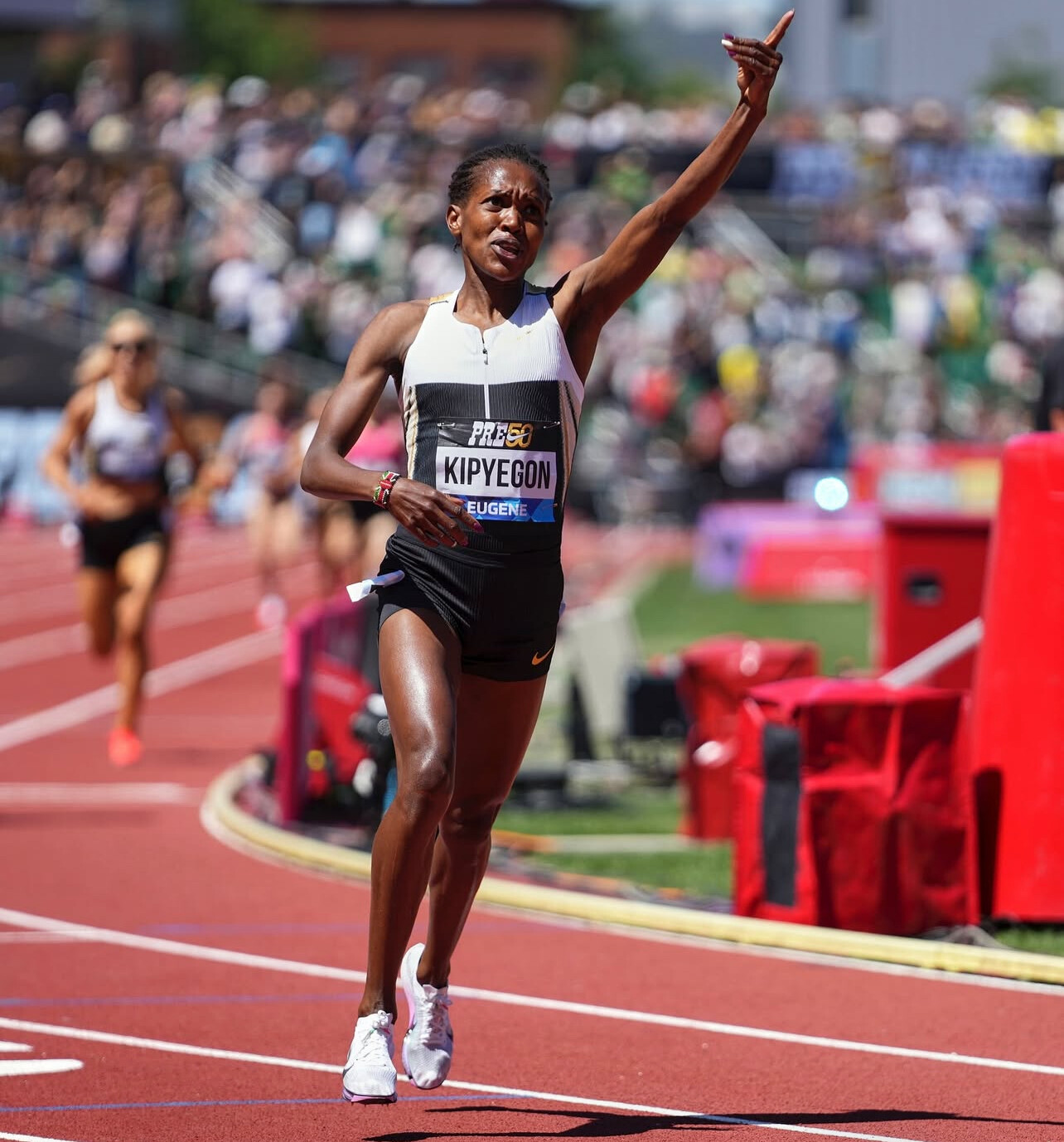
At first, it was simply to move, to feel the track beneath her feet. But soon, the quiet fire that defines the greatest champions began to burn again. What unfolded next is one of the most remarkable comeback stories in modern athletics.
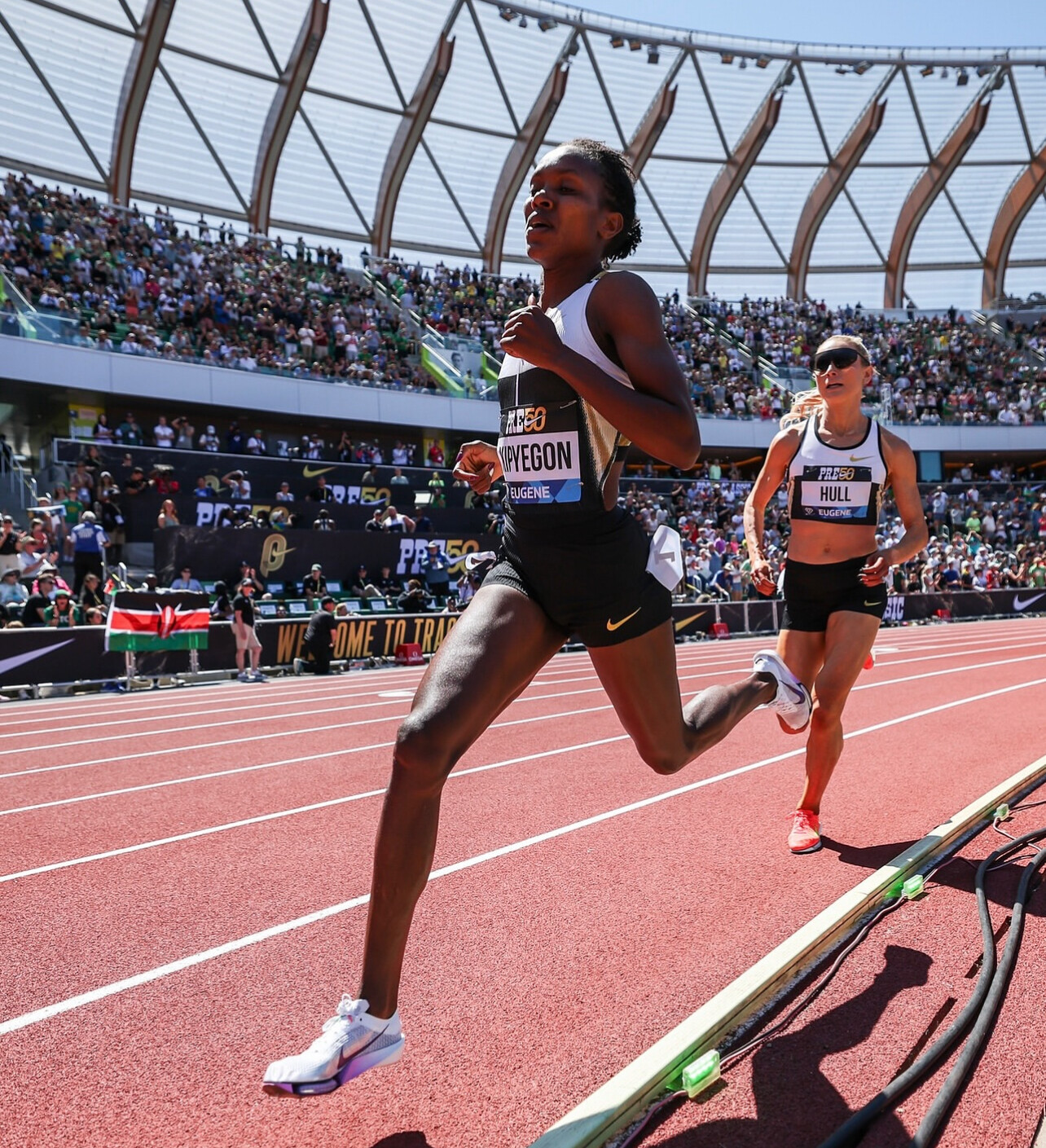
Kipyegon didn’t just return—
she rose higher than ever before.
In a sport where returning to elite form after childbirth is already a major achievement, Kipyegon did the unthinkable. She not only reclaimed the top of the world, she reset the limits of what humans—and mothers—can do.
In 2023, she produced one of the most extraordinary streaks in track history, breaking two world records within weeks:
• 1500m World Record – 3:49.11
• 5000m World Record – 14:05.20
Her 1500m dominance continued into global championships, where she ran with a mixture of elegance, ferocity, and absolute confidence—qualities that have made her one of Kenya’s most beloved athletes and one of the greatest middle-distance runners of all time.
Kipyegon’s story is not simply about medals or records.
It is the story of resilience, of a woman who refused to accept limitations—medical, physical, or societal. It is about the extraordinary will of a mother who wanted to show her daughter, and the world, that strength does not disappear with motherhood; it transforms.
Today, Faith Kipyegon stands as a global symbol of perseverance. Her journey continues to inspire millions—athletes, mothers, and dreamers everywhere—who see in her story a reminder that the human spirit is capable of more than we dare to imagine.
A champion.
A mother.
A legend rewriting what is possible.
by Boris Baron
Login to leave a comment
Edwin Kurgat and Weini Kelati Shine at the 89th Manchester Road Race
MANCHESTER, Connecticut — Edwin Kurgat and Weini Kelati delivered commanding performances on Thursday morning, claiming victory at the 89th edition of the storied Manchester Road Race. Clear, cool weather set the stage as the two Flagstaff-based athletes dominated the 4.737-mile loop through downtown Manchester—a Thanksgiving tradition that blends elite competition with a festive community atmosphere.
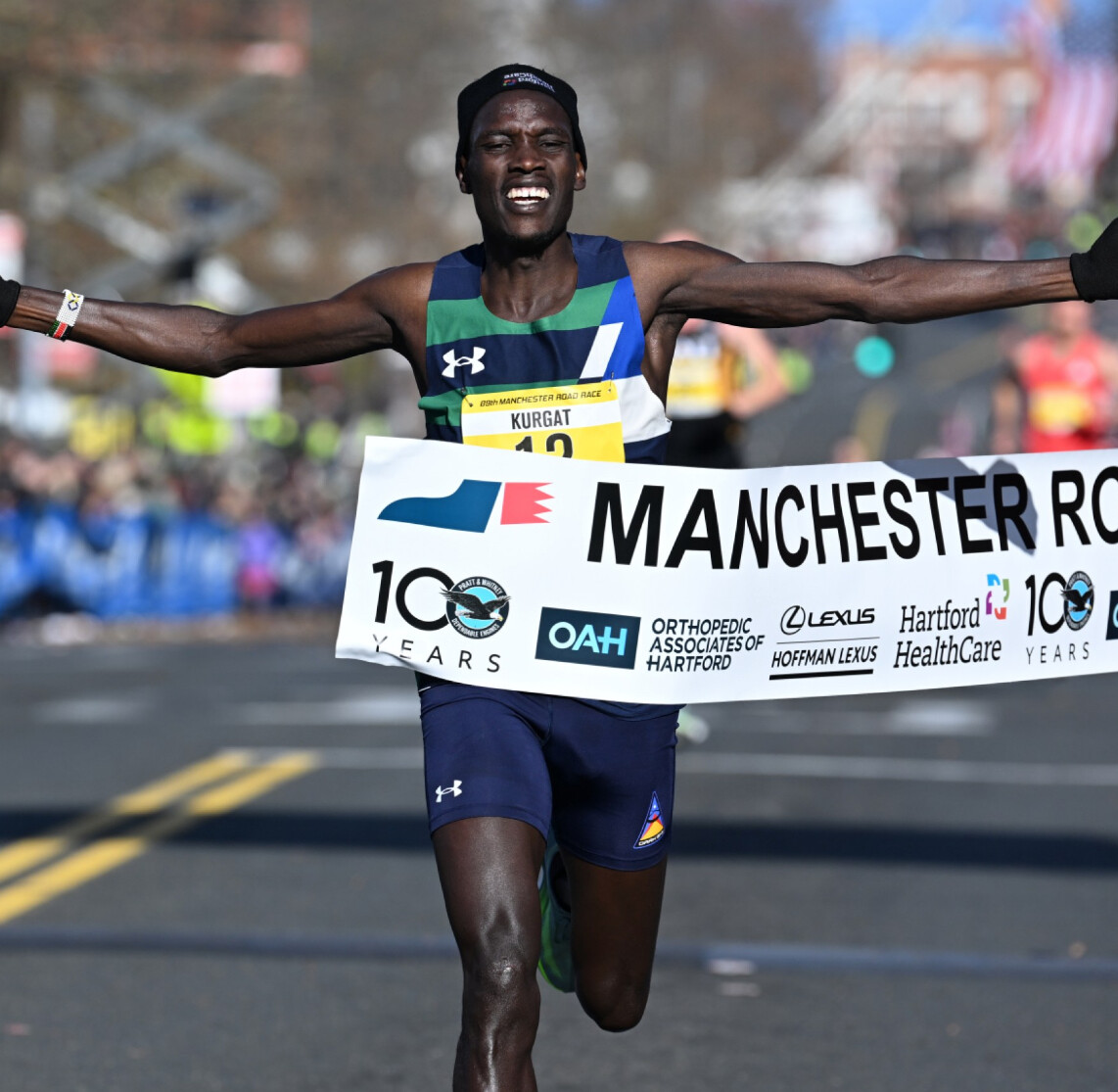
Kurgat stormed to the men’s title in a record-breaking 20:54, eclipsing the previous mark of 21:04 set by Conner Mantz in 2022. In the women’s race, Kelati secured an extraordinary five-peat, crossing the line in 23:18. While short of her own course record of 22:55 from 2021, her consistency and dominance reaffirmed her status as one of America’s top road runners.
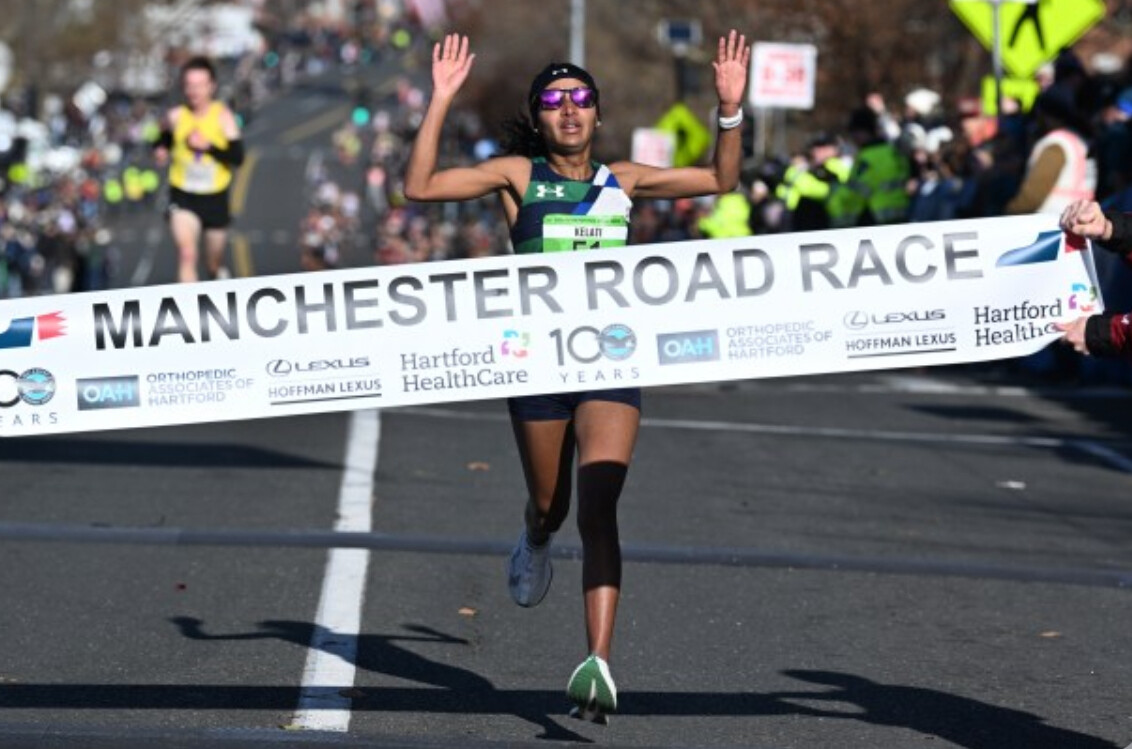
This year’s race attracted 12,386 registrants, continuing the event’s strong post-COVID resurgence. The “massive field,” as race officials described it, featured defending men’s champion Andrew Colley, 2023 champion Morgan Beadlescomb, Kelati, and world-class Kenyan standout Dorcus Ewoi—further cementing Manchester’s reputation as one of the premier road races in the United States.
by Boris Baron
Login to leave a comment
Manchester Road Race
The Manchester Road race is one of New England’s oldest and most popular road races. The 86th Manchester Road Race will be held on Thanksgiving Day. It starts and finishes on Main Street, in front of St. James Church. The Connecticut Sports Writers’ Alliance recently honored the Manchester Road Race. The CSWA, which is comprised of sports journalists and broadcasters...
more...Eilish McColgan Shatters British 15K Record with Sensational 47:12 at Zevenheuvelenloop
Eilish McColgan lit up the roads of Nijmegen on Sunday Nov 16 with a performance that redefines her comeback story. Racing the historic Zevenheuvelenloop 15K, the Scottish star clocked a stunning 47:12, breaking the British national record and finishing fourth overall.
Her time erased the previous British mark of 47:24, set earlier this year by Calli Hauger-Thackery, and moves McColgan to No. 2 on the European all-time list, behind only Lornah Kiplagat’s 46:59 from 2007.

McColgan ran aggressively from the gun, navigating the rolling hills—“Zevenheuvelenloop” literally means “Seven Hills Run”—and holding pace with the world-class lead pack before surging home for the fastest 15K of her career.
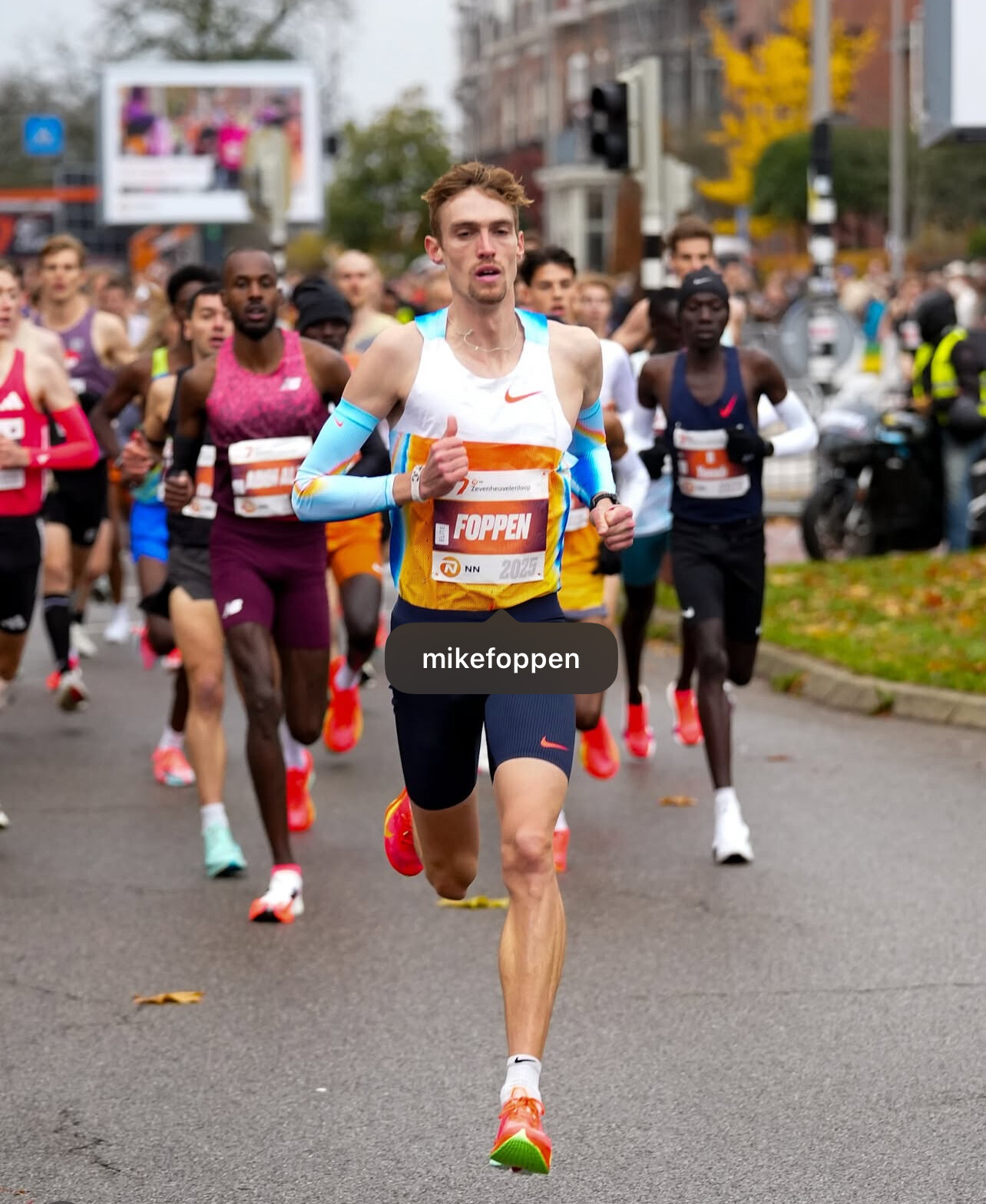
Top Women – Zevenheuvelenloop 15K (2025)
1. Joyciline Jepkosgei (KEN) – 46:53
2. Jane Chelangat (KEN) – 46:59
3. Calli Hauger-Thackery (GBR) – 47:09
4. Eilish McColgan (GBR) – 47:12 (British Record)
McColgan finished just three seconds behind Hauger-Thackery and only 19 seconds behind the winner—an incredibly tight margin at this level.
lTop Men – Zevenheuvelenloop 15K (2025)
1. Selemon Barega (ETH) – 41:35
2. Bernard Kimeli (KEN) – 41:52
3. Birhanu Balew (BRN) – 42:10
The men’s race was fast from the start, with Olympic champion Selemon Barega controlling the front and closing with authority.
A Statement from McColgan
For McColgan, who has endured a difficult stretch of injuries and recovery over the past two seasons, this run marks one of her finest road performances. It signals she is back in top form heading into what promises to be a compelling 2026 season.
by Boris Baron
Login to leave a comment
The NN Zevenheuvelenloop
The NN Zevenheuvelenloop, or Seven Hills Run, is an annual 15-kilometer road race held in Nijmegen, Netherlands. Established in 1984 as a modest event with 500 male participants, it has evolved into one of Europe's premier running events, attracting over 25,000 runners in recent years. Renowned for its picturesque and undulating course, the Zevenheuvelenloop has been the stage for multiple...
more...Edwin Soi’s Second Act: Veteran Track Star Turns Mentor While Leading Kenyan Charge at the Borobudur Marathon
In the tranquil dawn surrounding Indonesia’s ancient Borobudur Temple, Kenya’s Edwin Soi—once one of the world’s deadliest final-lap specialists—returned to the global stage with a performance defined by grit, maturity, and renewed purpose. His 2:20:21 fourth-place finish may have placed him just outside the podium, but it became one of the most compelling stories of this year’s Borobudur Marathon.
On a redesigned course rich in culture and punishing in terrain, Soi showed the poise of an athlete embracing the complexities of his second act—a transition from mid-distance brilliance to marathon resilience.
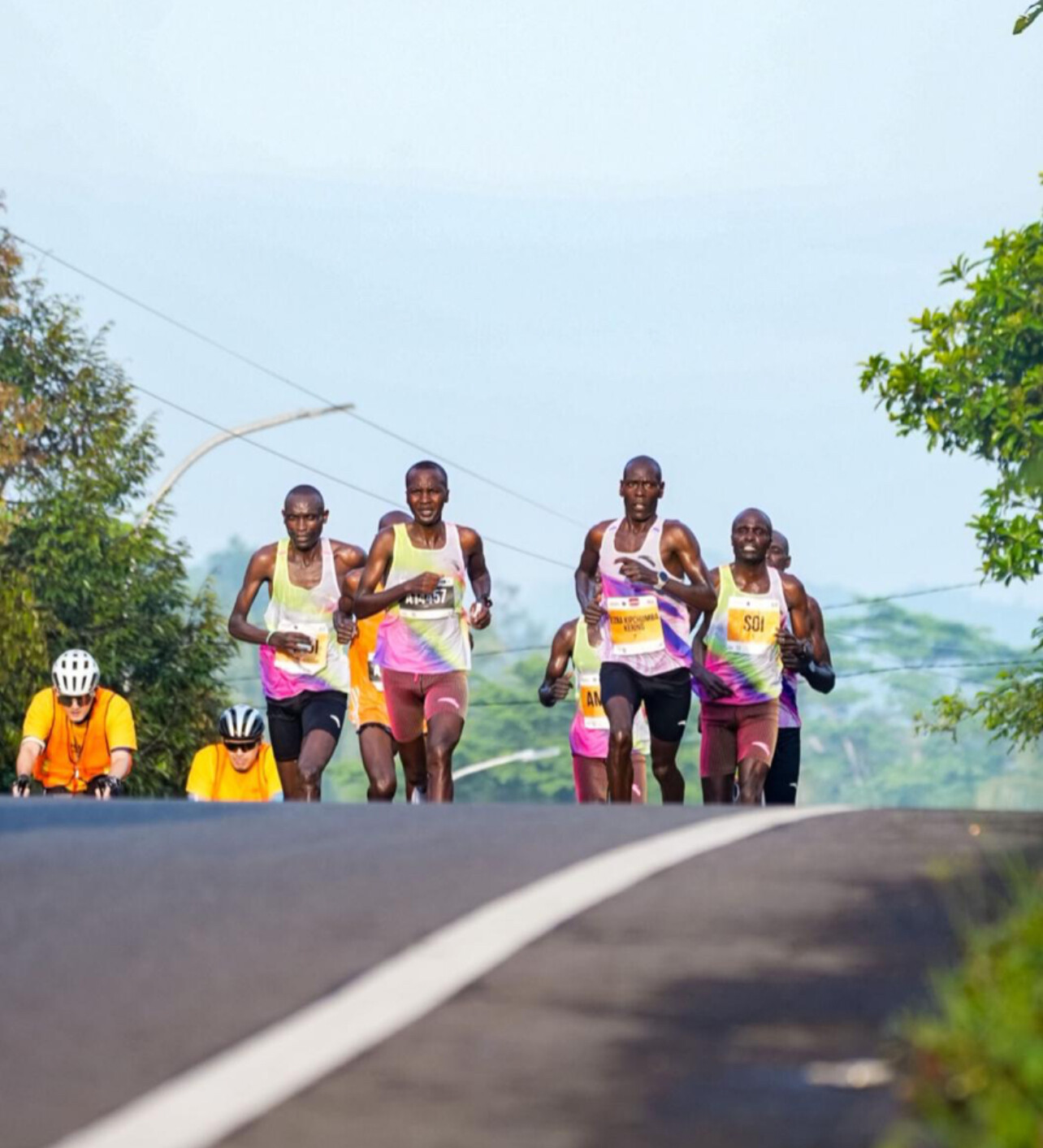
Speaking with My Best Runs after the race, Soi described the deep transformation required to evolve from track icon to marathon contender.
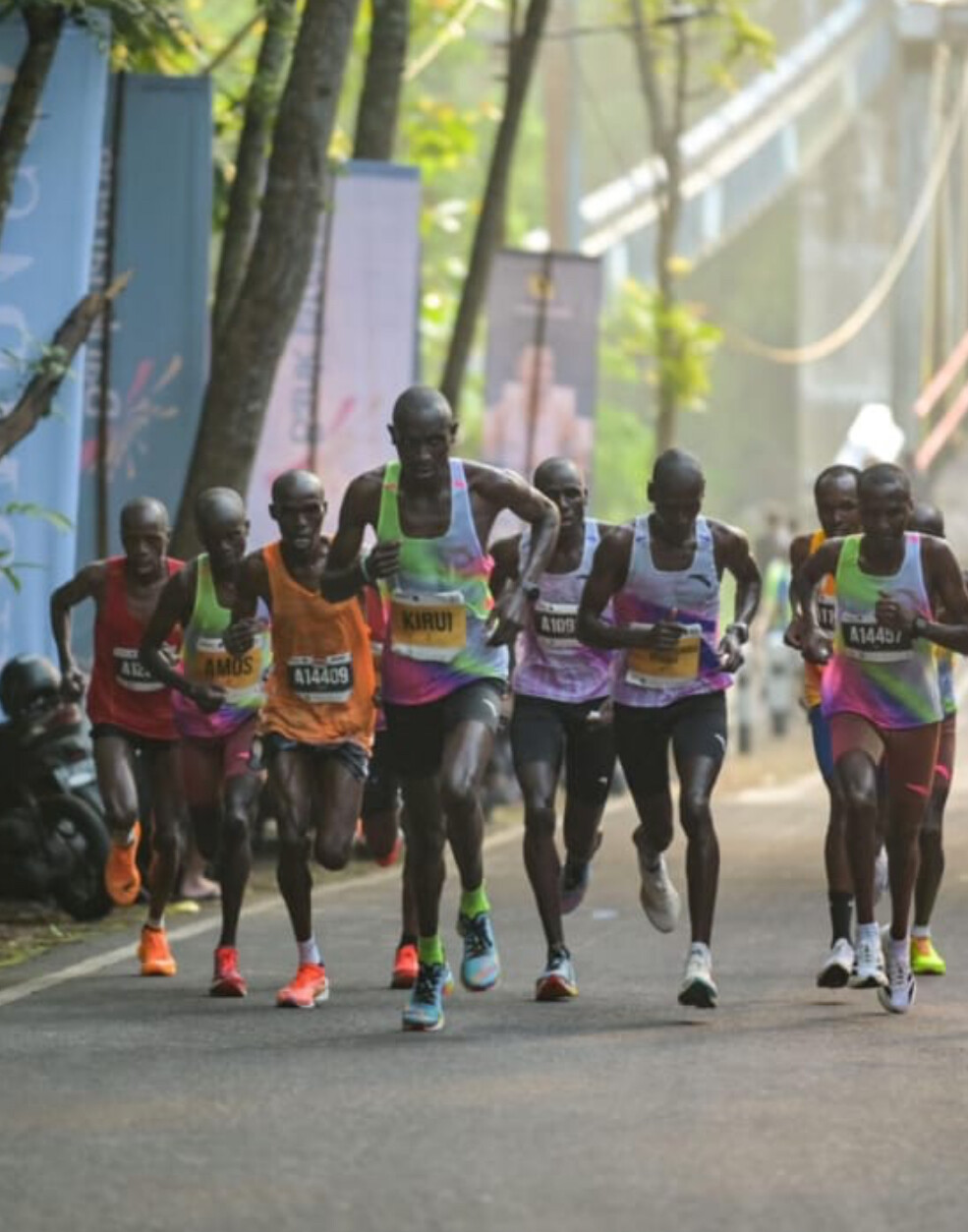
“My career on the track—my Olympic bronze in the 5,000m—was built on the fast finish,” he said. “But the marathon is completely different in the final 5km. You can’t just turn your legs over like on the track; the fuel is nearly gone. The biggest adjustment is shifting from raw speed to relentless endurance.”

A Course That Demands Respect
The Borobudur route, winding through rice terraces, traditional villages, and the rolling Menoreh highlands, offered no shortcuts—and no mercy. It rewarded steady pacing, intelligent energy management, and deep aerobic strength, qualities Soi has been sharpening as he shifts to longer distances.
“The tropical heat and especially the humidity were the biggest challenges,” he said. “Even with the early start, the air felt heavy and thick as the sun rose. For us, training in the altitude and cooler air of Kenya, it required immense discipline with hydration from the first kilometer.”
The constant undulation of the course forced him into a measured rhythm:
“I had to run more conservatively in the first half to save energy for the inevitable struggle after 25km. But the scenery, the villages, the people cheering… it is one of the most beautiful races I’ve experienced.”
From Track Legend to Builder of Future Champions
Though he remains globally known for his devastating last-lap kick, Soi’s greatest work today may be happening far from stadium lights. In Kuresoi, through Bob Anderson’s KATA programme, he now mentors a rising generation of disciplined young runners.
“This has been a year of deepening purpose,” he said. “My reflection is less about my personal stopwatch and more about the impact I can have on the future of Kenyan running.”
He still trains at a high level, balancing heavy marathon mileage with the demands of leadership.
“Running competitively keeps me sharp and helps me understand the sacrifices my young athletes are making. Every morning, I run alongside them—I’m not just a coach shouting instructions; I am a competitor in the pain cave with them.”
On the misty loops of Kuresoi, he passes down the two things that shaped him: the speed of the track and the patience of the marathon.
Kenyan Depth on Full Display
Despite missing the podium, Soi helped anchor a dominant Kenyan performance in Magelang, Central Java, Indonesia, where the marathon began and finished inside the historic Lumbini Park complex at Borobudur Temple.
The top four in the elite men’s marathon—all representing Kenya—were:
1. Ezra Kipchumba Kering (Kenya) — 2:17:33
2. Alex Oloitiptip Korio (Kenya) — 2:17:43
3. Kiprop Tonui (Kenya) — 2:18:01
4. Edwin Cheruiyot Soi (Kenya) — 2:20:21
A Cultural and Competitive Showcase
The 2025 Borobudur Marathon, elevated to World Athletics Elite Label status, attracted more than 11,500 runners from 38 countries. Its scenery, cultural performances, and enthusiastic supporter crowds generated more than Rp 73 billion in economic impact, cementing its place as one of Asia’s rising marathon gems.
A Legacy in Motion
For Soi, Borobudur was more than a race—it was a declaration. A reminder that champions don’t fade; they evolve.
His footsteps now tell two intertwined stories: a veteran still capable of racing among the world’s best, and a mentor shaping futures in the hills of Kuresoi.
As Kenyan runners painted the leaderboard red, green, and black, Soi’s fourth-place finish stood out not for what it lacked, but for what it symbolized: a champion transforming—and lighting the path for those who follow.
by Robert Kibet
Login to leave a comment
A Record-Breaking Journey: 60 Townhall Athletes Set for NCAA Nationals
For young runners in Kenya, the dream has always extended far beyond the finish line. It is about opportunity, education, and building a future through running. On November 22, sixty alumni of Townhall Athletics will stand on the starting line at the Gans Creek Cross Country Course in Columbia, Missouri—not only as competitors, but as student-athletes whose journeys blend world-class talent with academic ambition.
Their road to the NCAA National Cross Country Championships was forged through nine regional qualifiers, where Townhall athletes earned advancement both individually and through team berths. Each qualifier represents a story that began on rugged high-altitude trails in Kenya and continued in American classrooms—balancing mileage with lectures, workouts with research projects.
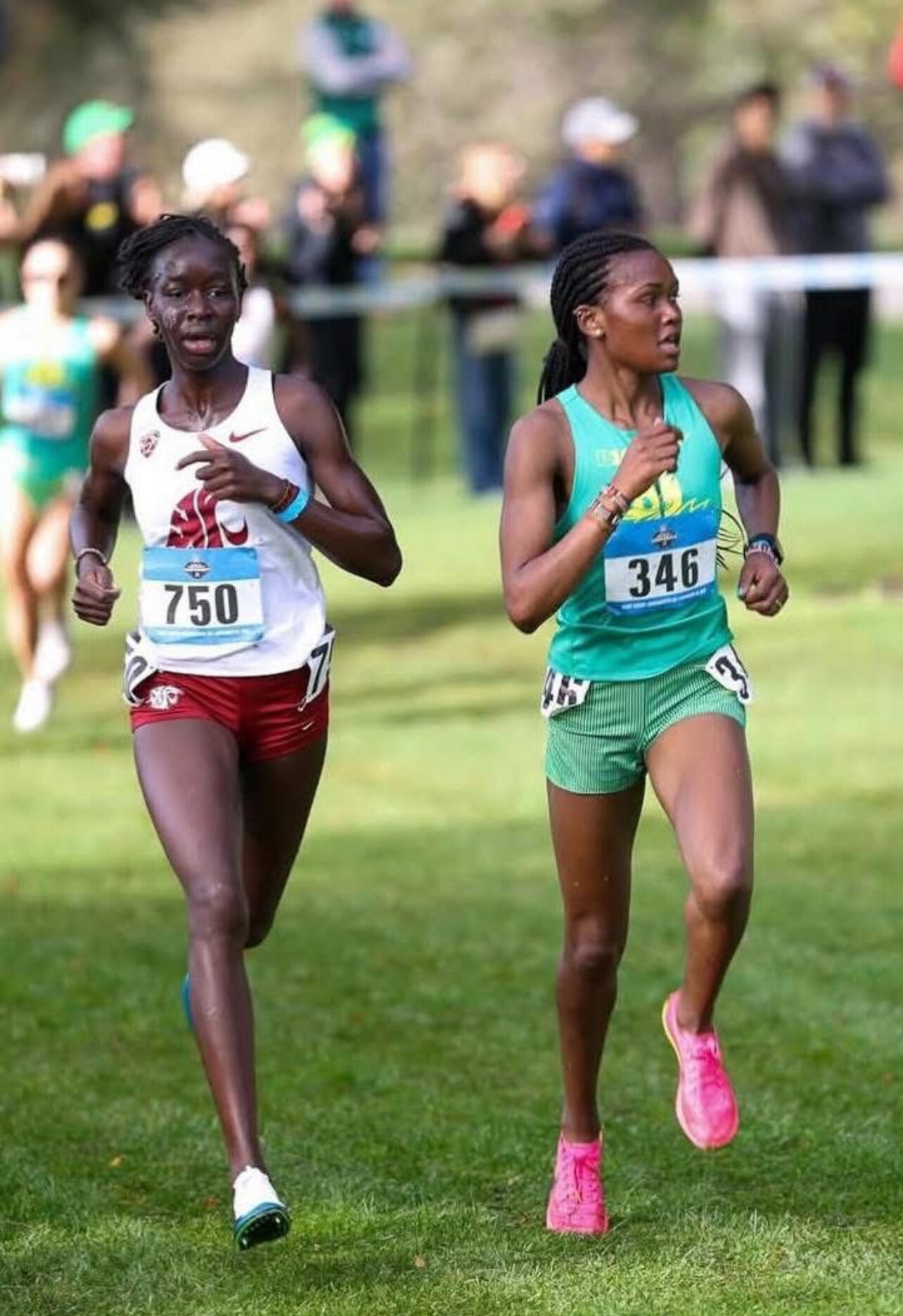
A Pipeline for Talent and Learning
Many of these athletes grew up with limited access to formal training facilities—sometimes even without proper running shoes. Through Townhall Athletics, runners such as Brian Musau, Dennis Kipngetich, and Laban Kipkemboi at Oklahoma State University received structured coaching and the mentorship needed to secure life-changing scholarships.
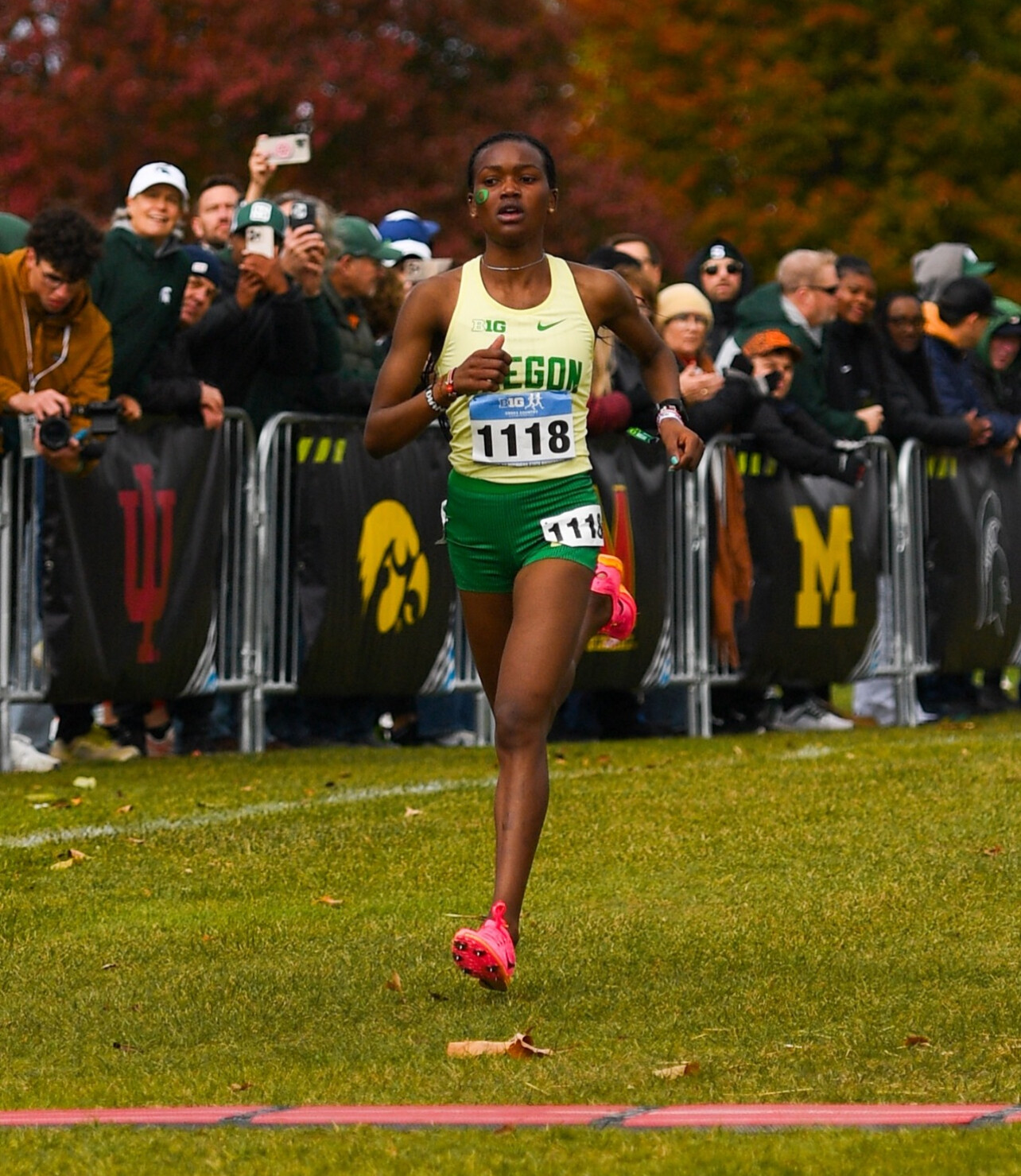
In Florida, Kelvin Cheruiyot, Desma Chepkoech, and Judy Chepkoech have combined tactical racing with strong academic records, while Debora Cherono at Texas A&M has emerged as a respected leader both on campus and on the track.
In the Mountain West Conference, New Mexico’s Evans Kiplagat and Vincent Chirchir continue to show how academic and athletic development go hand in hand. At Iowa State, Joash Rutto and Mercylin Kirwa have built reputations for consistency and endurance, exemplifying the discipline long associated with Kenyan distance running.
Other Townhall standouts, including Meshack Kuiyo at Boise State and Gilbert Rono at Tulane, carry the hopes of their programs while pursuing degrees and competing at the top level of collegiate sport.
Gans Creek: Where Experience Meets Ambition
Gans Creek is known for its rolling hills, long grass straights, and technical curves—terrain that demands smart pacing and a strong finish. For Kenyan athletes who grew up training at altitude, the course offers a blend of familiarity and challenge, providing a perfect stage to showcase endurance, resilience, and race intelligence.
Lining up against top collegiate athletes from across the United States and around the world, Townhall runners bring not only speed but also the mental fortitude and tactical awareness refined through years of structured training back home.
Voices of Support
Kenyan sports leaders continue to stress that athletic success must be paired with education to secure a long-term future.
Barnaba Korir, AK Youth Development Director and NOC-K First Vice President, emphasizes:
“These scholarships are more than athletic opportunities—they are life-changing. Education ensures our youth can thrive long after the final lap.”
Ibrahim Hussein Kipkemboi, Director of the Africa Athletics Development Centre, adds:
“Blending study with sport protects athletes from early burnout and equips them for the future.”
Athletics Kenya President Lt. Gen. (Rtd) Jackson Tuwei reinforces the message:
“The goal is not just fast runners, but well-rounded individuals. Education and athletics go hand in hand for global success.”
Impact Beyond the Course
These sixty qualifiers demonstrate how structured development and academic pathways can open doors for rural youth across Kenya. Their progress validates youth programs, inspires younger athletes, and shows how scholarships allow talent to flourish both on the track and in the classroom.
The Journey and the Finish Line
On race day, athletes such as Rosemary Longisa and Caroline Jepkorir of Washington State University, Evans Tanui of Arizona, and Diana Cherotich of Oregon will carry far more than personal ambition. They will carry the dreams of families, coaches, and communities who believed in them from the start.
Every stride over Missouri’s rolling terrain reflects years of discipline, sacrifice, and the pursuit of excellence—both academic and athletic.
When the final lap is run, results will matter. But so will the journey that brought them here. From dusty Kenyan tracks to the championship stage at Gans Creek, Townhall athletes have shown that with vision, support, and resilience, success in running and life can grow together.
As they race for NCAA glory, they continue to inspire a generation to see that the finish line is not an end—it is, in fact, the beginning.
by Robert Kibet
Login to leave a comment
Introducing the 200,000 KES KATA Athletics Performance Contest
To further motivate and reward our dedicated athletes, we’re launching the KATA Athletics Performance Contest—a biannual competition designed to celebrate the top earners among our athletes and camps.
How It Works:
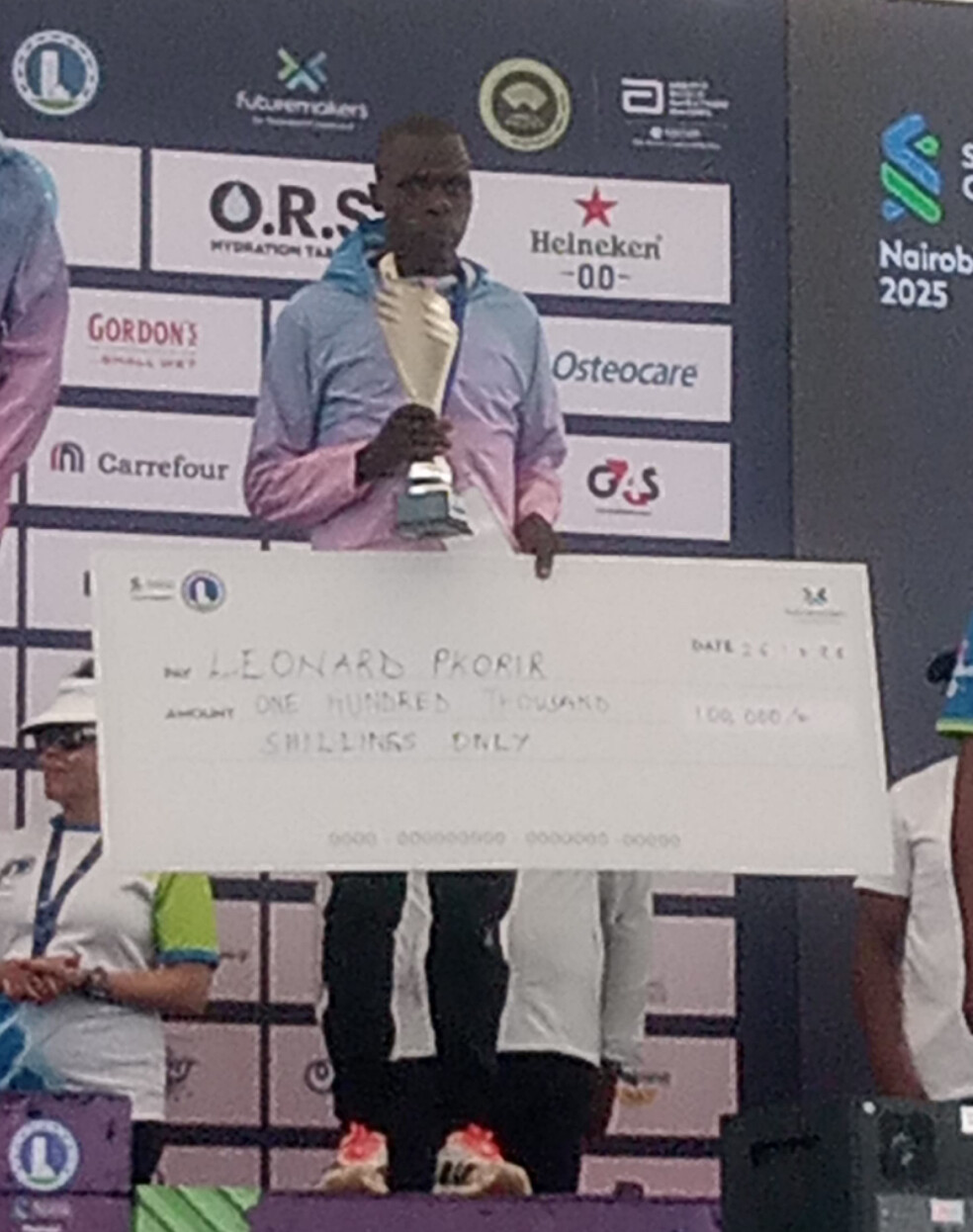
Twice a year, KATA will reward the athlete who has earned the most prize money by sending 15% of their winnings to KATA’s bank account. The responsibility lies with the camp or farm operator to ensure these funds are submitted, as results only count once the money is received in our account.
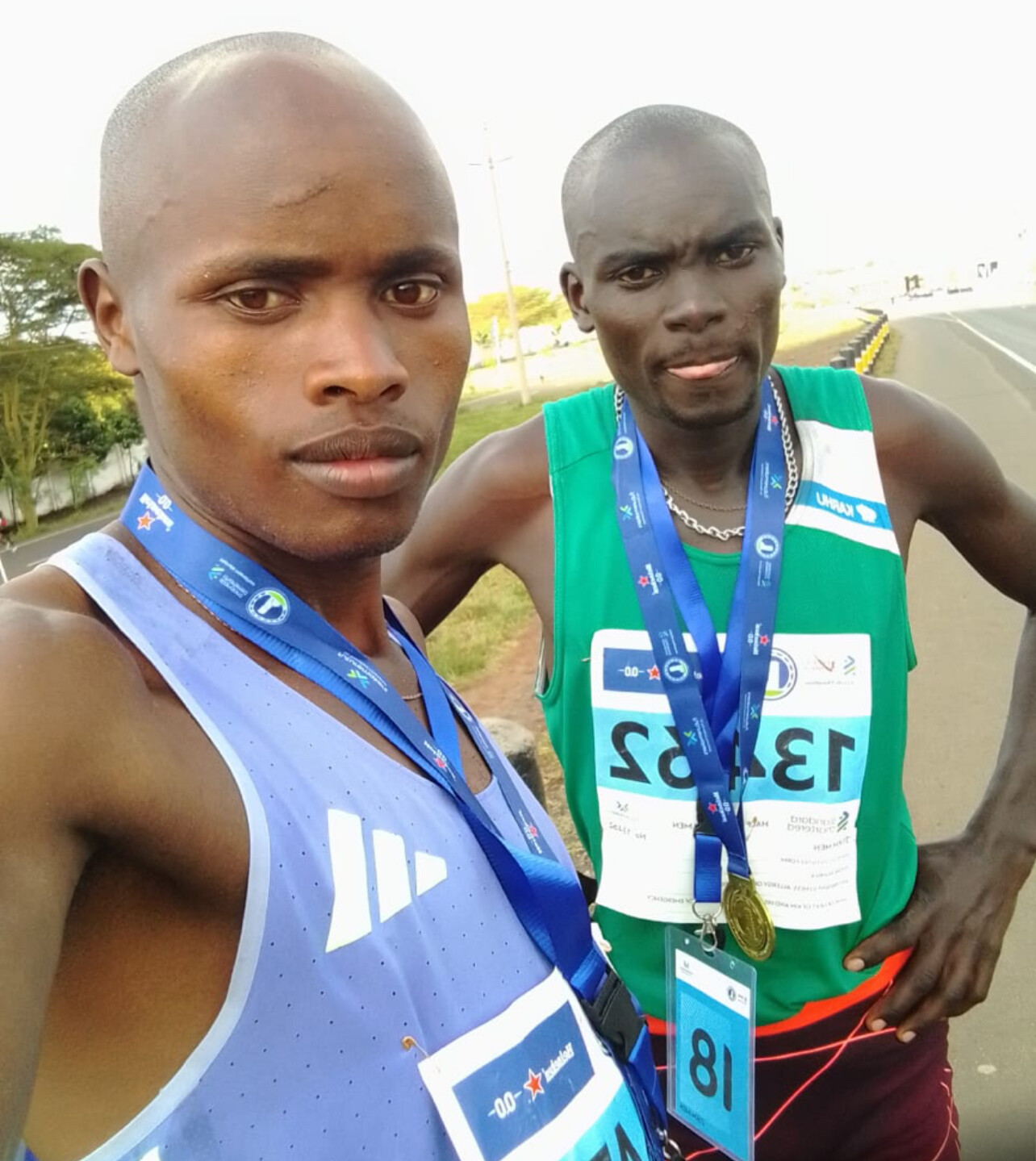
The first contest period will conclude at the end of January 2026, allowing for any delays in prize money payments. The second contest will wrap up at the end of July. This twice-annual schedule ensures everyone has ample time to report and account for their winnings.
Camp and Athlete Rewards:
At the end of each contest period, the individual athlete who has earned the most prize money will receive a 25,000 KES bonus. Additionally, the top three KATA camps—those whose athletes collectively submit the highest total winnings—will each receive 25,000 KES.
In other words, each contest distributes a total of 100,000 KES: 75,000 KES to the top three camps (25,000 each) and 25,000 KES to the top individual athlete. Over the course of a year, that’s a total of 200,000 KES in rewards.
Conclusion:
Because there can be delays in receiving prize money, the contest periods are extended slightly to ensure all earnings are accounted for. We’re excited to see our athletes and camps compete and look forward to celebrating their achievements together!
by Bob Anderson
Login to leave a comment
BingwaFest Returns: A High-Stakes Track Opportunity for KATA Athletes
After a competitive season across Nakuru, Siaya, and Machakos, Nairobi is set to host the Season 2 BingwaFest Nairobi Edition on November 22 at Kasarani Stadium. For KATA athletes spread across Kenya, this meet is far more than another race on the calendar—it’s a chance to shine on home soil, compete for substantial prize money, and demonstrate the strength of regionally developed talent. Powered by Betika, the Nairobi edition underscores the resurgence of Kenyan athletics and the rising impact of local competitions.
The season opened in Nakuru, where Maurine Jepkoech Chebor stamped her authority by sweeping both the women’s 5,000m and 10,000m. In the men’s events, Richard Etir and Daniel Kimaiyo delivered standout performances that set an early standard. Their efforts framed a season defined not just by speed and endurance, but by smart racing and tactical maturity.
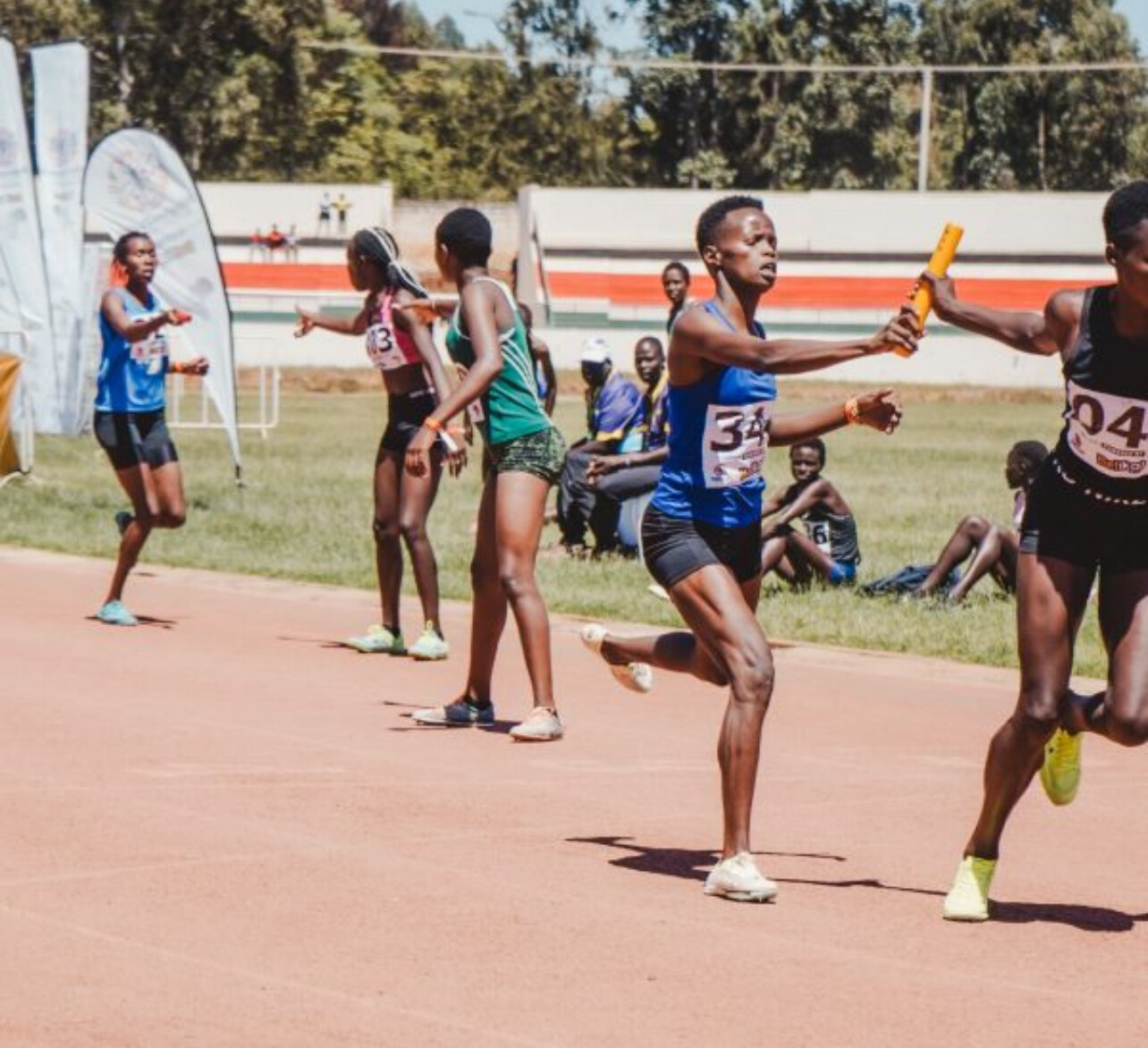
Siaya continued the trend, with Miriam Chebet taking double gold in the 5,000m and 10,000m. “Winning both races is a big confidence boost,” she said after her victories. “I hope to perform even better.” Titus Kiprotich provided a masterclass in patience and pacing to secure the men’s 10,000m. In Machakos, veterans Glorious Chepkurui and Francis Langat showcased consistency and experience, winning their respective 5,000m and 10,000m races with measured execution.
KATA athletes have been prominent across the domestic circuit, bolstered by strong results at major recent events such as the Standard Chartered Nairobi Marathon 2025. Under the guidance of Coach Philemon Kiptoo of KATA001 Kapcherop, athletes have not only raced well—they have emerged as crowd favorites, blending disciplined training with tactical sharpness. Their appearance in Nairobi reinforces the rising credibility of Kenya’s regional training hubs and shows that structured local programs can produce athletes capable of competing at international levels.
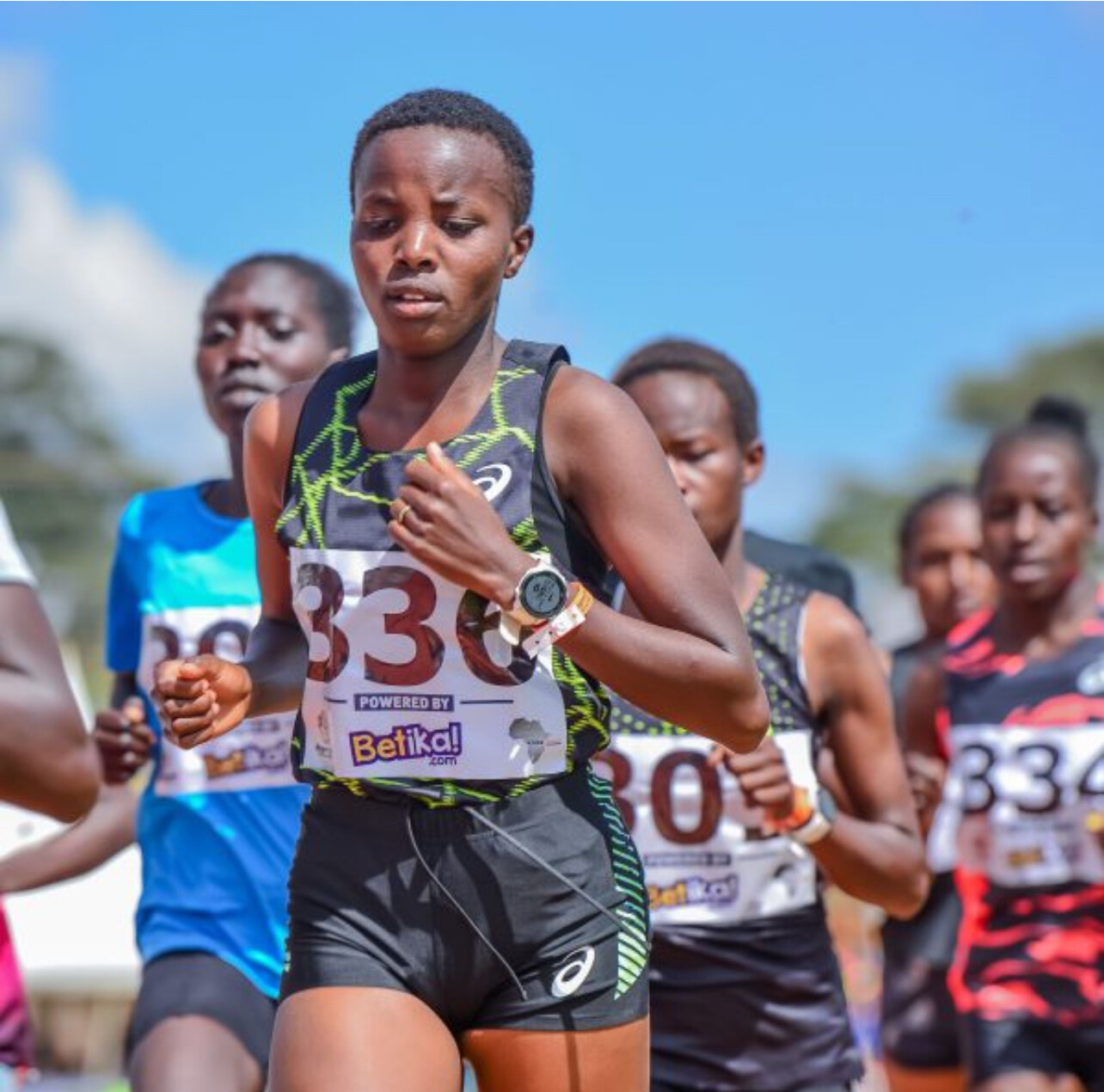
A distinctive factor behind the KATA program’s momentum is the community-driven economic engine supporting its athletes. Bob Anderson’s potato farming initiative—spread across the highland regions where KATA camps operate—has become a vital funding source. Revenue from these farms helps cover training expenses, travel costs, and essential equipment, allowing athletes to focus fully on performance. This model of local empowerment gives athletes the stability to build careers at home rather than chasing uncertain opportunities abroad.
This year’s event also marks the reopening of Kasarani Stadium following CHAN football upgrades, offering athletes a world-class track and a renewed sense of pride. For many, racing at Kasarani is deeply personal. As Timothy Cheruiyot has said of past editions, competing at home brings a sense of belonging and motivation unmatched by international travel. KATA athletes will look to create similar moments across the full program of events—from the 100m to 400m sprints, 800m and 1,500m middle distances, 5,000m and 10,000m long-distance races, and both the 4×100m and 4×400m relays.
The incentives are significant. Individual winners will earn 250,000 shillings, with 150,000 for second place and 100,000 for third. Relay teams will compete for up to 300,000 shillings. These rewards highlight a growing truth: Kenyan athletes can build sustainable careers through domestic competitions.
For KATA athletes, the return to Nairobi is a moment where disciplined training, homegrown support, and community-driven funding intersect. It’s proof that local competitions can create real opportunities—and that economic empowerment initiatives, like the KATA potato program, can directly fuel athletic success. As Kasarani opens its gates on November 22, the stage is set for Kenya’s rising stars to make their mark and keep the momentum of a nationwide athletics revival firmly in motion.
by Robert Kibet
Login to leave a comment
World Athletics Announces Finalists for Photograph of the Year
World Athletics has revealed the three finalists for its prestigious Photograph of the Year award—an annual honor recognizing the most powerful images captured across the global track and field season.
The finalists showcase emotion, danger, and artistry from three different continents:
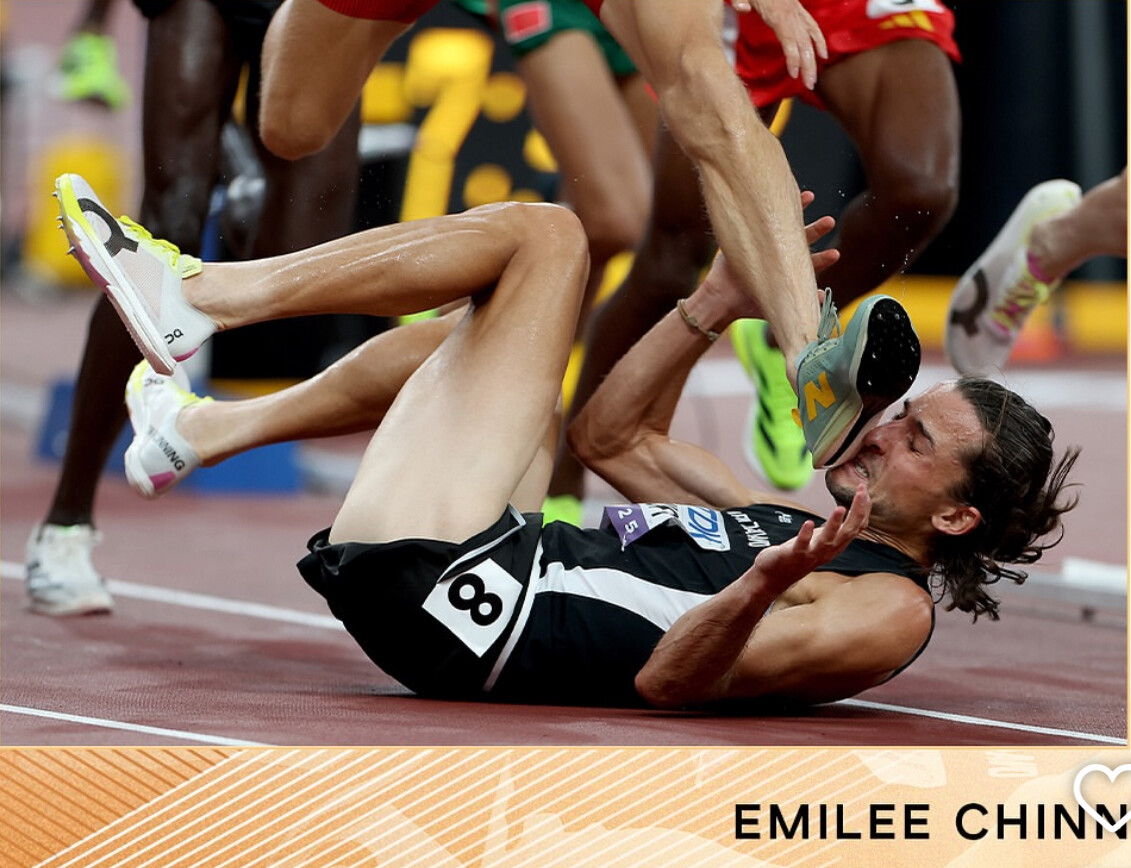
• Fabrizio Bensch (Germany) captured a celebratory and intimate moment between Noah Lyles and Tara Davis-Woodhall at the World Championships in Tokyo, just after they medaled in the 100m and long jump.

• Emilee Chinn (USA) froze a dramatic near-disaster during the steeplechase prelims, when George Beamish went down and Jean-Simon Desgagnés’ spikes came frighteningly close to his face.
• Vegard Grott (Norway) created a striking, shadow-filled composition during the iconic Dream Mileat the Bislett Games in Oslo.
Do the winning photographers receive prize money?
World Athletics awards the honor and global recognition, but no prize money is given directly to the photographer. The award is part of the annual World Athletics Awards program.
Login to leave a comment
20-Year-Old Becomes Youngest Ever to Earn the Seven Star Medal
A 20-year-old British runner has officially become the youngest person in history to complete all seven World Marathon Majors and earn the coveted Seven Star Medal, Abbott World Marathon Majors announced.
Lucy Scott, from Bishop’s Stortford in Hertfordshire, completed the seven marathons over an 18-month stretch: Tokyo, Boston, London, Berlin, Chicago, New York City, and Sydney. She secured the honor on November 2 when she crossed the finish line at the New York City Marathon, making her the “youngest Seven Star athlete” to date.
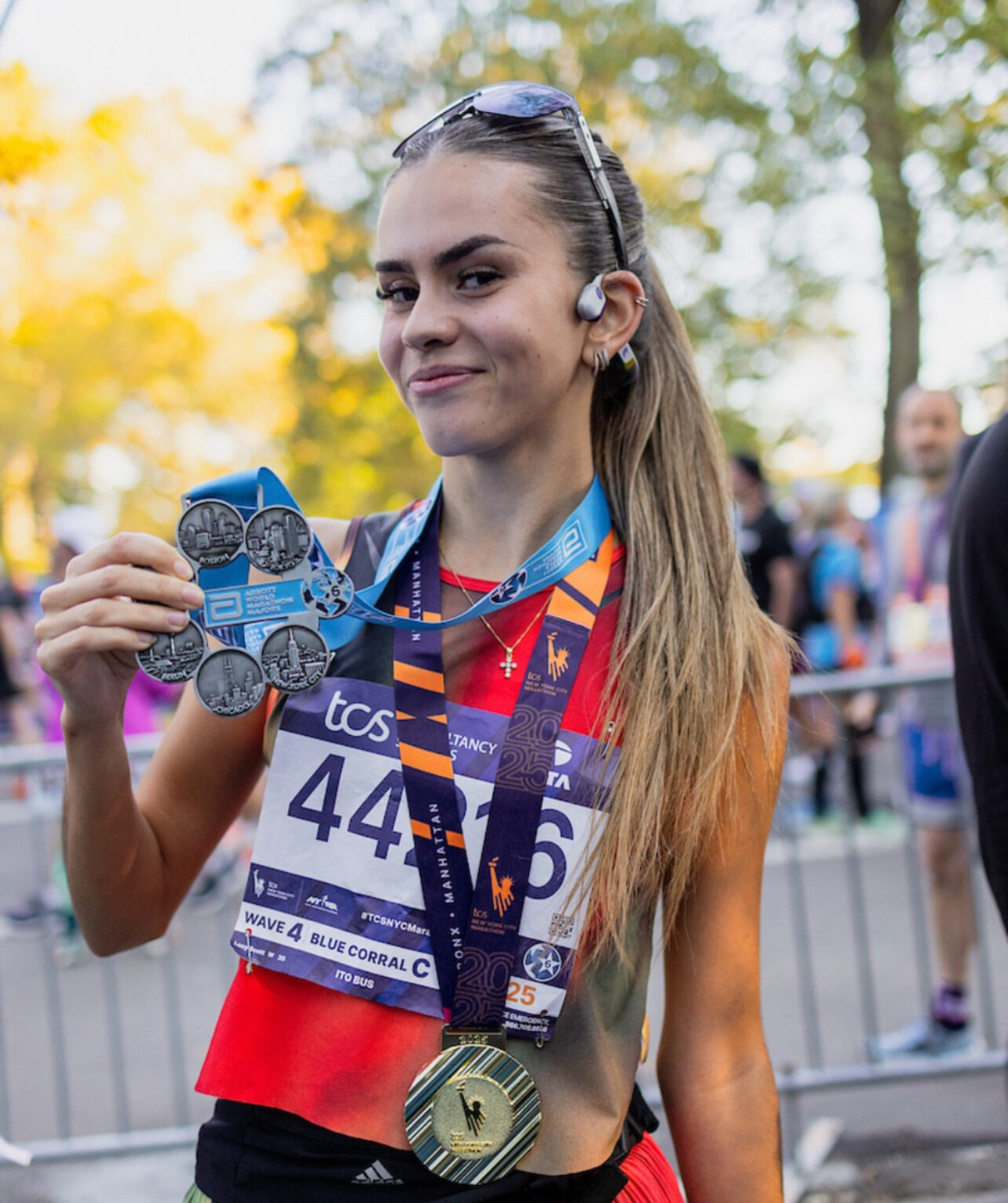
Scott, a history student at the University of Nottingham, only began running in 2024. “It’s the best thing I’ve ever done,” she said.
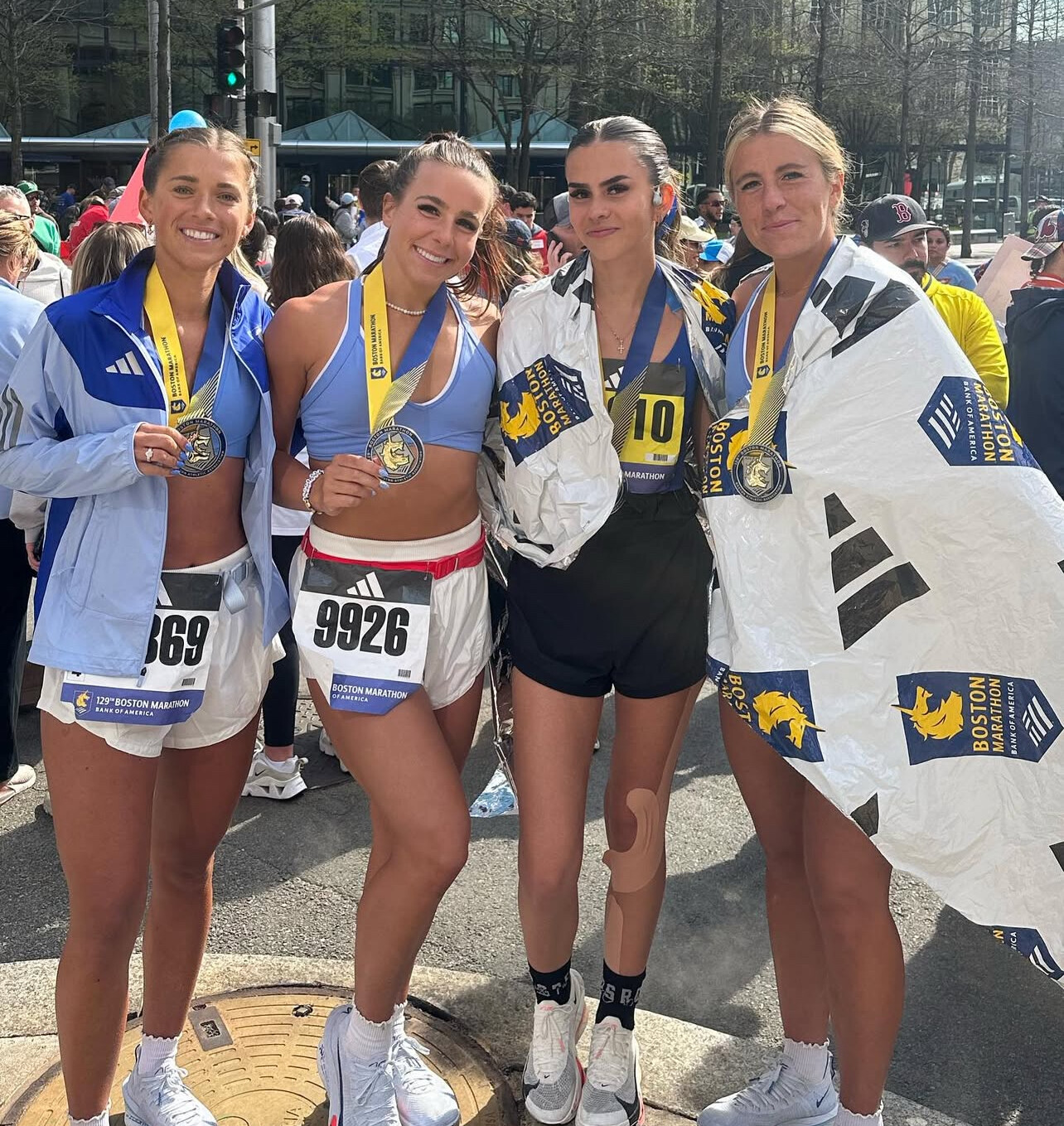
Introduced in 2016, the Six Star Medal originally honored runners who completed the six established majors. The series expanded in November 2024 with the addition of the Sydney Marathon, creating the Seven Star Medal Scott has now earned.
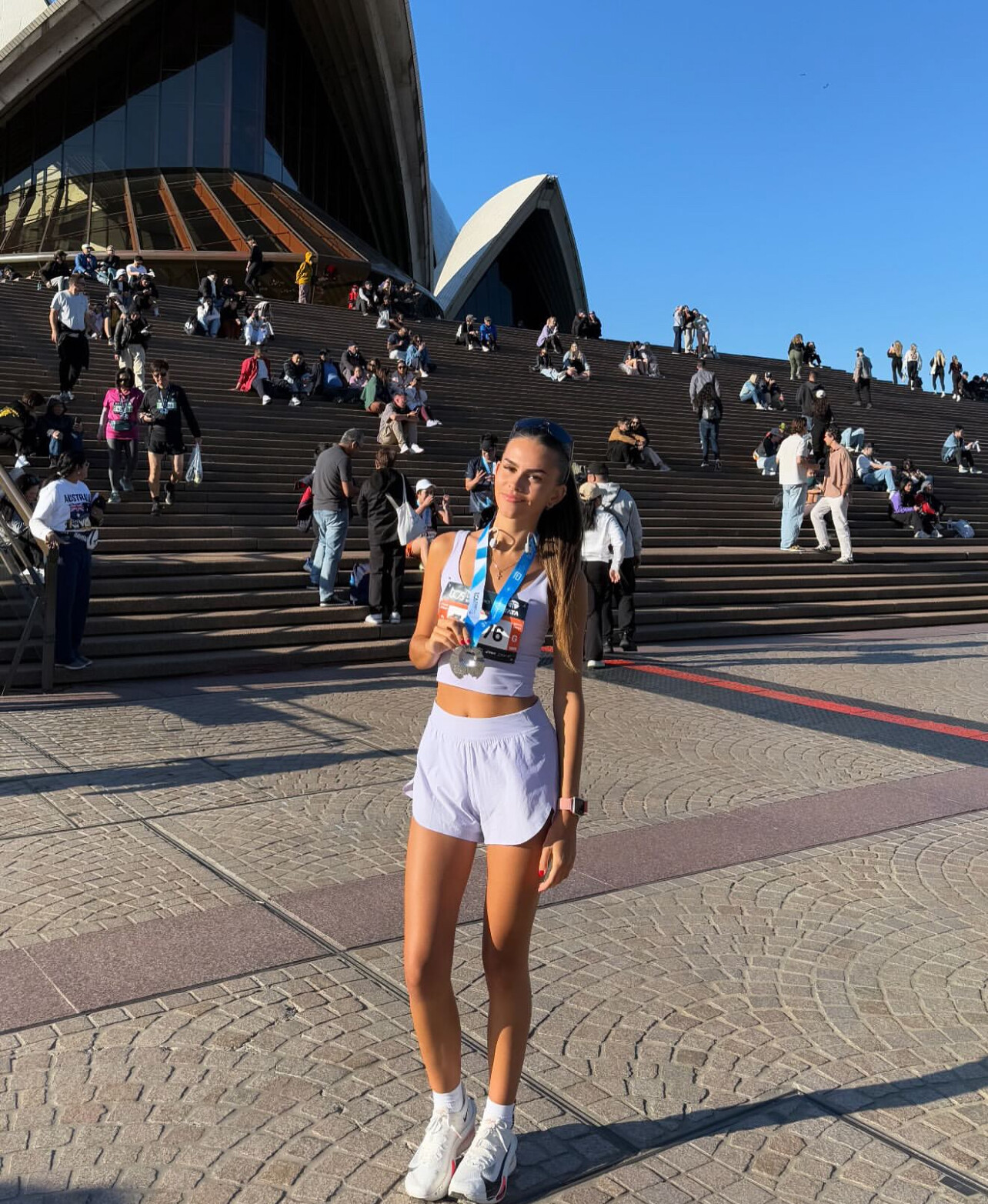
Despite having no previous running experience, Scott took up the sport during her first year at university. Her debut marathon came in 2024 at the TCS London Marathon, where she raised £7,685 for The Essex Disabled Sport Foundation.
She credits her father, John Scott, as her inspiration. He had been pursuing the Six Star Medal before the Covid pandemic, but injuries prevented him from completing Tokyo and Boston. Lucy has since carried his dream forward, with her parents traveling the world to cheer her on at every finish line.

“I think they’ve loved the experience as much as I have,” she said.
Looking ahead, Scott plans to run her third London Marathon in April 2026—“if I can balance university and fundraising,” she noted. She also hopes to pursue the proposed Nine Star Medal, which Abbott World Marathon Majors is considering adding by including Cape Town and Shanghai.
“If I can get a place, I would love to do that,” she said.
by Boris Baron
Login to leave a comment
Women’s 100 Meters to Be Contested in All Three Rounds on One Day at the 2028 Los Angeles Olympics
World Athletics has confirmed a major schedule change for the 2028 Los Angeles Olympic Games: all three rounds of the women’s 100 meters—including the final—will take place on the same day, July 15, 2028.
The morning session will open with the preliminary round featuring universality athletes from smaller nations, followed by the first round with the full roster of qualified sprinters. That evening, the championship stage will unfold rapidly with both the semifinal and the final, closing out an action-packed first day on the track.
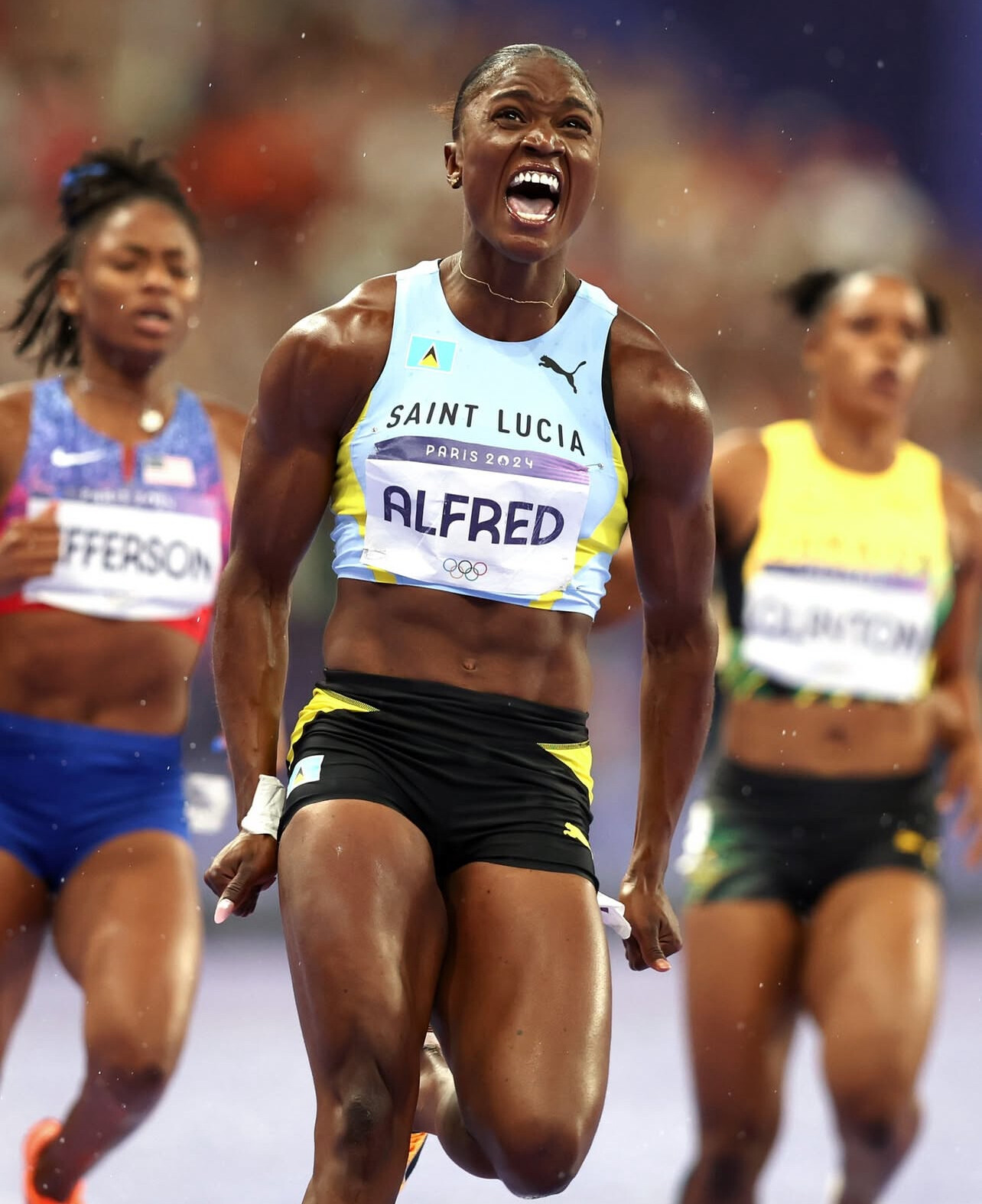
This format marks a significant shift from the usual two-day schedule used at recent Olympics and World Championships. Traditionally, the first round and semifinals are separated by many hours—often by a full day—to maximize recovery. Compressing the event into a single day places a greater emphasis on depth, consistency, and the ability to deliver multiple high-level performances in short succession.
Why the Change?

LA28 organizers and World Athletics have collaborated on a schedule designed to deliver a fast-moving, high-impact viewer experience on opening day. Condensing the women’s 100m serves several goals:
• A blockbuster start to the athletics program, with one of the Olympics’ most iconic events featured immediately.
• Improved broadcast flow, concentrating marquee moments into unified viewing windows.
• Greater schedule flexibility for the remaining days, especially for athletes competing in multiple sprint events.
Officials have also noted that elite sprinters frequently run multiple rounds in a single day during national trials and certain elite meets. However, doing so on the Olympic stage—with global pressure and championship-level stakes—adds a new layer of intensity.
What About the Men’s 100?
While the women’s 100m will be fully completed on July 15, the men’s 100 meters will remain on a two-day format. The men’s prelims and first round will also take place on July 15, but the semifinal and final are scheduled for the following evening, July 16. This staggered approach further highlights how unique the one-day women’s format will be in Los Angeles.
A Big Opening Day
The women’s 100m program will headline a Day 1 that also includes:
• Women’s Shot Put Final
• Men’s 10,000m Final
With sprinting, endurance, and power all showcased, July 15 is positioned to deliver one of the most compelling opening days in Olympic track and field history.
by Boris Baron
Login to leave a comment
This Is What It Really Takes to Get Faster
Every runner who dreams of shaving seconds—or minutes—off their personal best has to confront one truth: speed is earned through consistent work, not a single breakthrough workout.
Build Your Base First
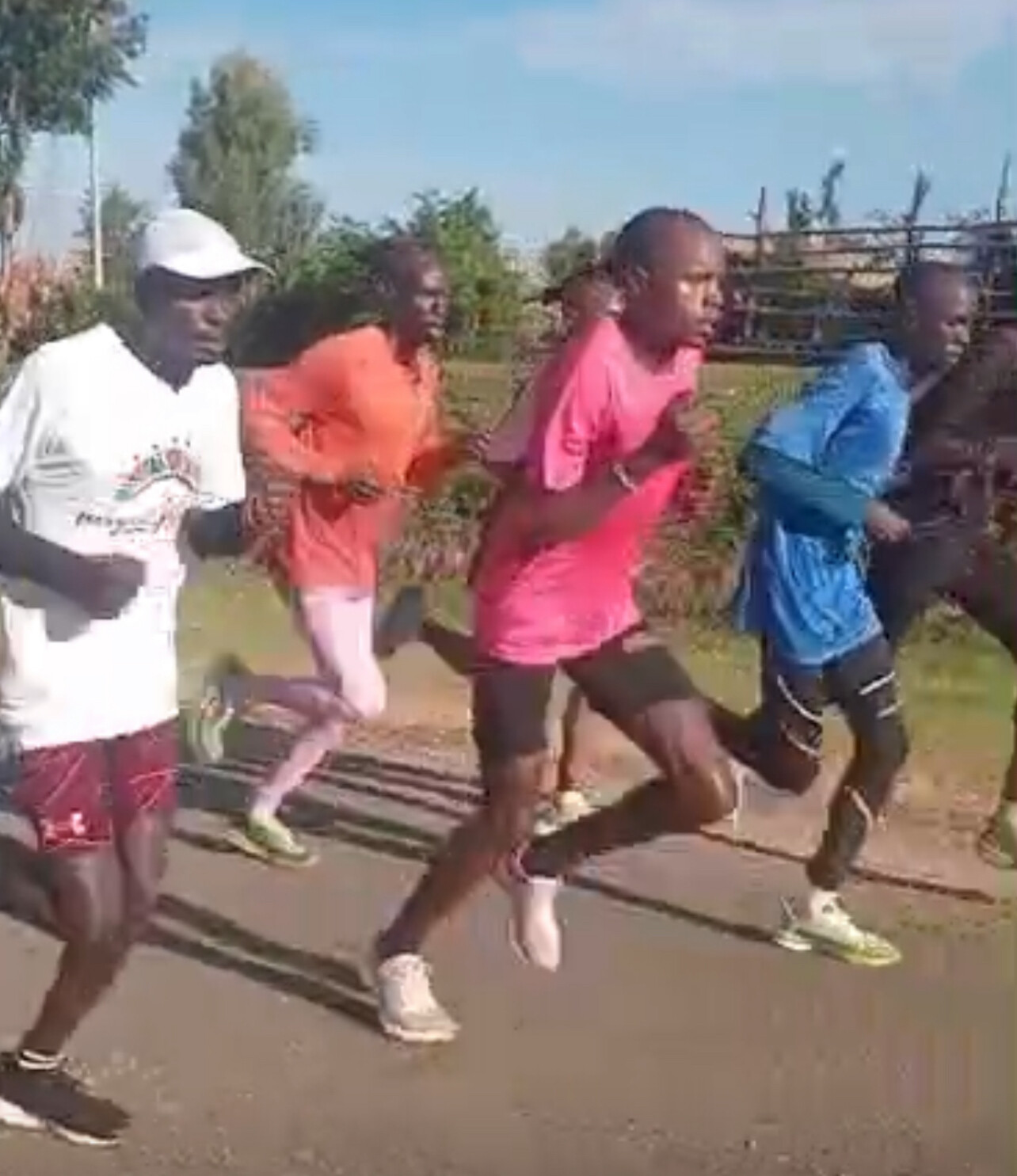
“You can’t get faster if you don’t already have an aerobic base,” says Kelly Roberts, RRCA-certified coach and founder of the Badass Lady Gang. That base comes from running three to four times per week for about 40 minutes at a conversational pace. Once you can sustain that comfortably, you’re ready to introduce speed work.
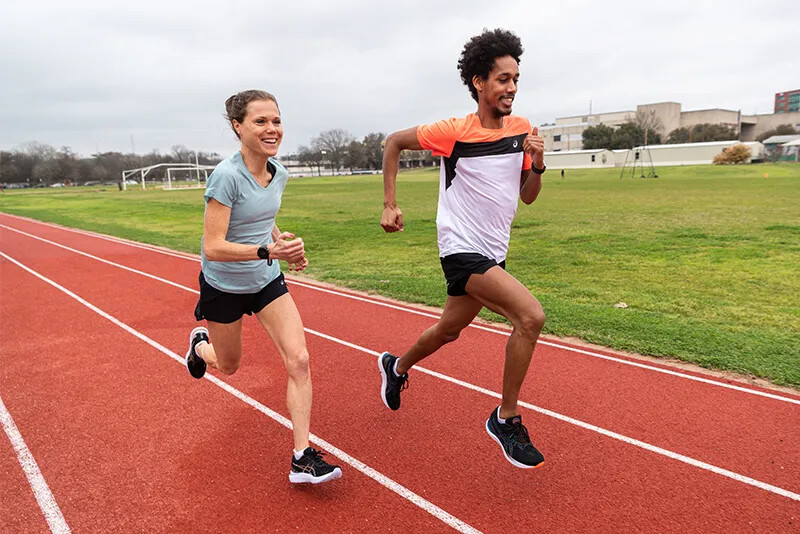
Speed Comes From Teaching Your Body to Run Fast
“Speed doesn’t come from one magical workout,” says Jes Woods, RRCA-certified Nike Running coach. “It comes from consistent speed work. That’s where you actually teach your body how to run fast.”
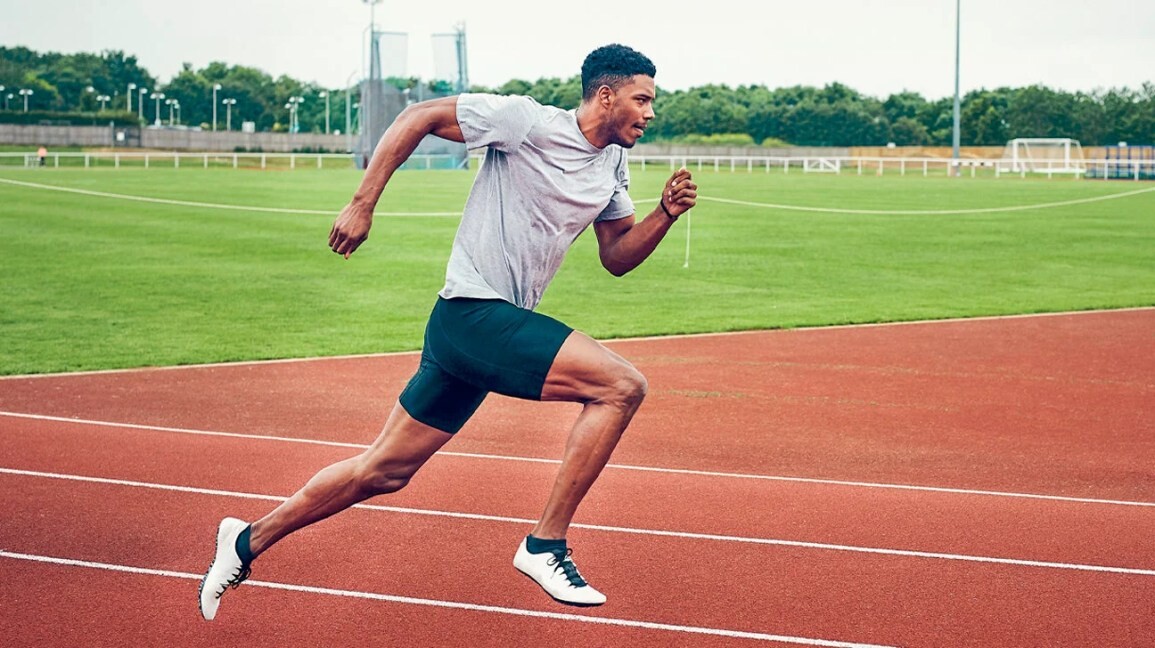
Speed work develops efficiency: better oxygen use, quicker lactate clearing, and greater tolerance for harder efforts. In short, it trains your body to handle more stress—and recover from it—at faster paces.
What Speed Workouts Look Like
You can build speed in several ways:
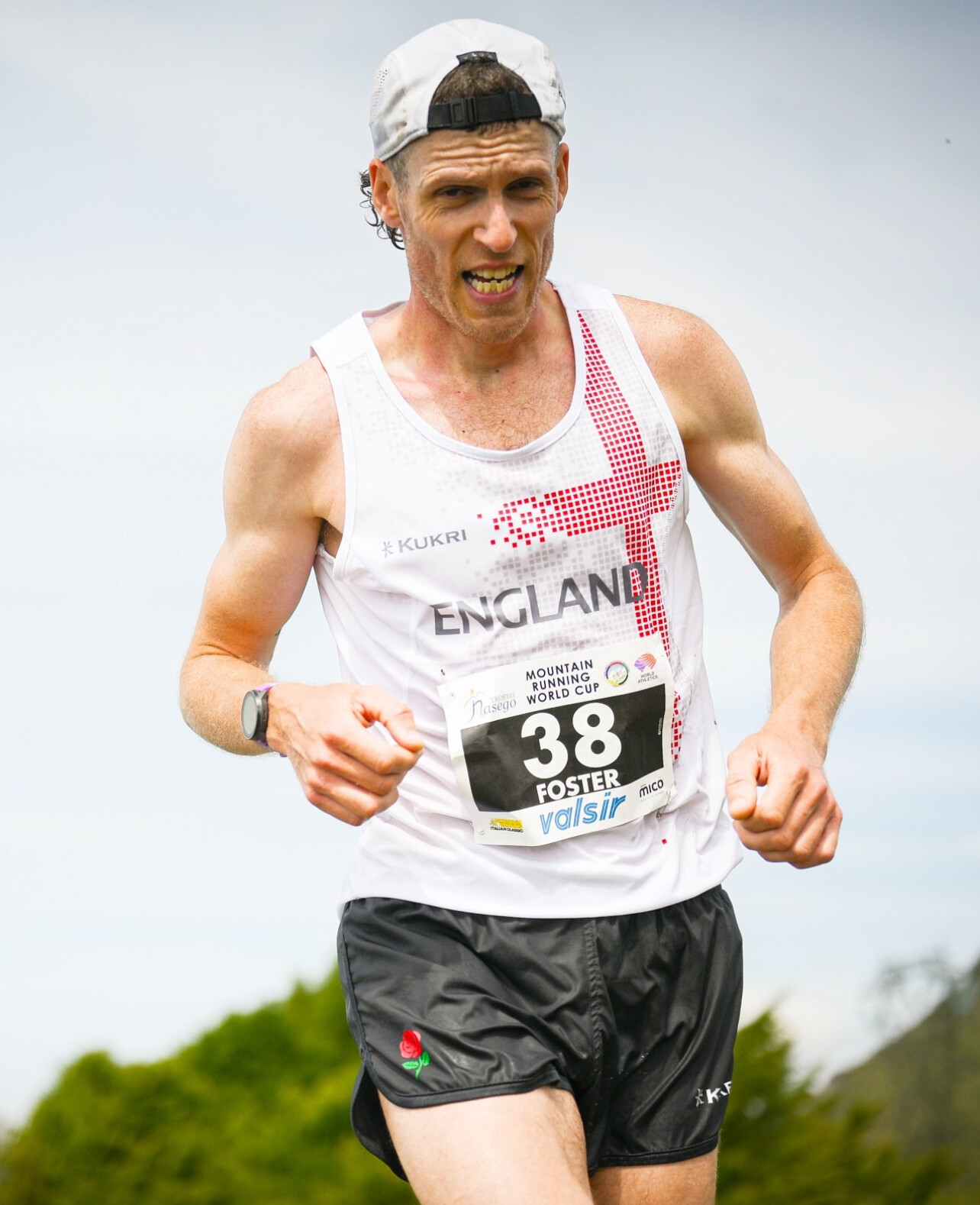
• Intervals: Fast segments with recoveries.
• Fartleks: Speed play with less structure.
• Tempo runs: Steady efforts just outside your comfort zone.
• Hill sprints: Strength and power mixed with speed.
A solid weekly plan to improve speed usually includes 1–2 speed sessions, 1–2 easy runs, one strength day, and a long run. Easy runs promote recovery, strength training builds power and stability, and long runs expand endurance—all essential pieces alongside your speed days.
“That balance allows your body to stress, adapt, and recover in the right proportions,” Woods says.
The Mental Side of Getting Faster
Speed training isn’t just physical. Roberts says the hardest part is managing the mental noise when things get uncomfortable.
“When you run faster, everything gets louder,” she says. “Your legs scream, and the little parrots on your shoulder scream back.”
Her advice: pay attention to self-talk and lean on mantras. One of her go-tos is, “I don’t know if I can do this. Let’s see what happens when I give my best.”
When You’ll Start Seeing Results
If you train consistently, most runners notice progress in six to eight weeks. Research backs this up: intermittent sprint training improved 10K times in six weeks in one study, and VO₂ max increased significantly after eight weeks of aerobic training in another.
“You’ll feel different,” Roberts says. “Your runs will feel easier as your aerobic strength improves.”
Beginner vs. Experienced Runners
Genetics, training history, and consistency all shape how quickly you’ll get faster. Some runners respond more quickly, while others chip away over time. But beginners often see the biggest gains because there’s more room for improvement.
“If you’re looking to get faster, you’ll never see bigger PR swings than you will as a new runner,” Roberts says.
The Bottom Line
Speed is attainable for every runner. Build your base, train consistently, mix your workouts, and practice staying calm when things get uncomfortable. Over time, the seconds will fall off—and you’ll become a faster, stronger version of yourself.
by Boris Baron
Login to leave a comment
Weldon Langat Shines Again at Sachangwan KATA Running Camp Time Trial
The third edition of the KATA Sachangwan Running Camp K 07 Time Trial on the scenic yet demanding Salgaa–Rongai route was held under bright, sunny skies with temperatures at 64°F (18°C), 67% humidity, light winds of 2 mph, and a moderate UV index of 4.5. Despite the tough weather and rolling terrain, athletes displayed tremendous resilience and speed, once again proving why the KATA Time Trials are a breeding ground for Kenyan endurance talent.
In the men’s 10km, Weldon Langat (19 years, Bib 025) extended his dominance on this course, unleashing a powerful finishing kick to win in 30:49. Langat has made the Salgaa–Rongai route his own, demonstrating both tactical awareness and strength through the hills. Ronald Cheruiyot (25 yrs, Bib 015) followed in 34:24, while Sammy Sang (35 yrs, Bib 022) took third in 37:50, rounding out a solid men’s podium.
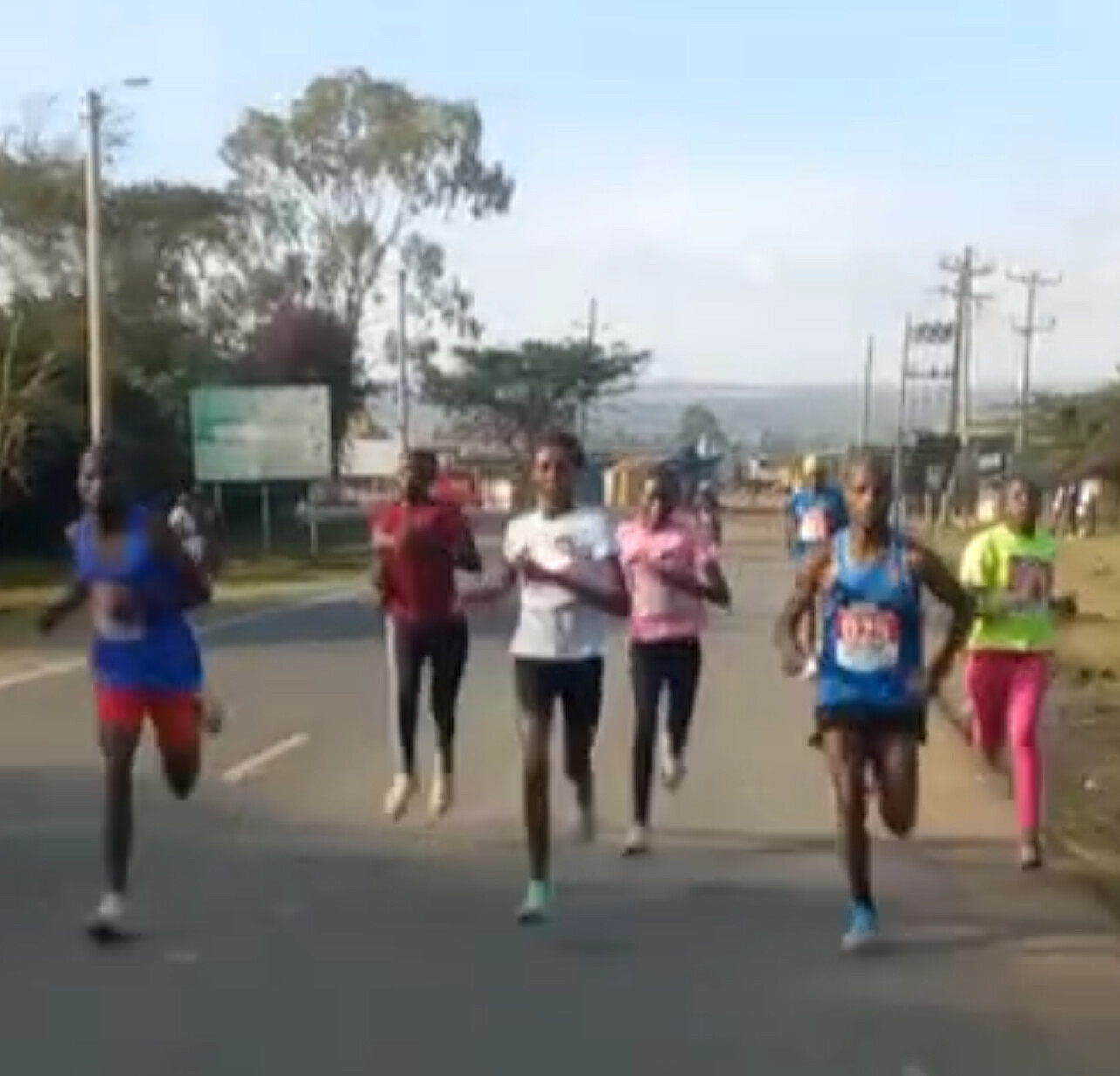
The men’s 5km saw rising star Benard Kitum (20 yrs, Bib 040) clock a personal best of 16:35, continuing his steady improvement within the KATA Running Camp system. His confidence and form signal a bright future ahead.
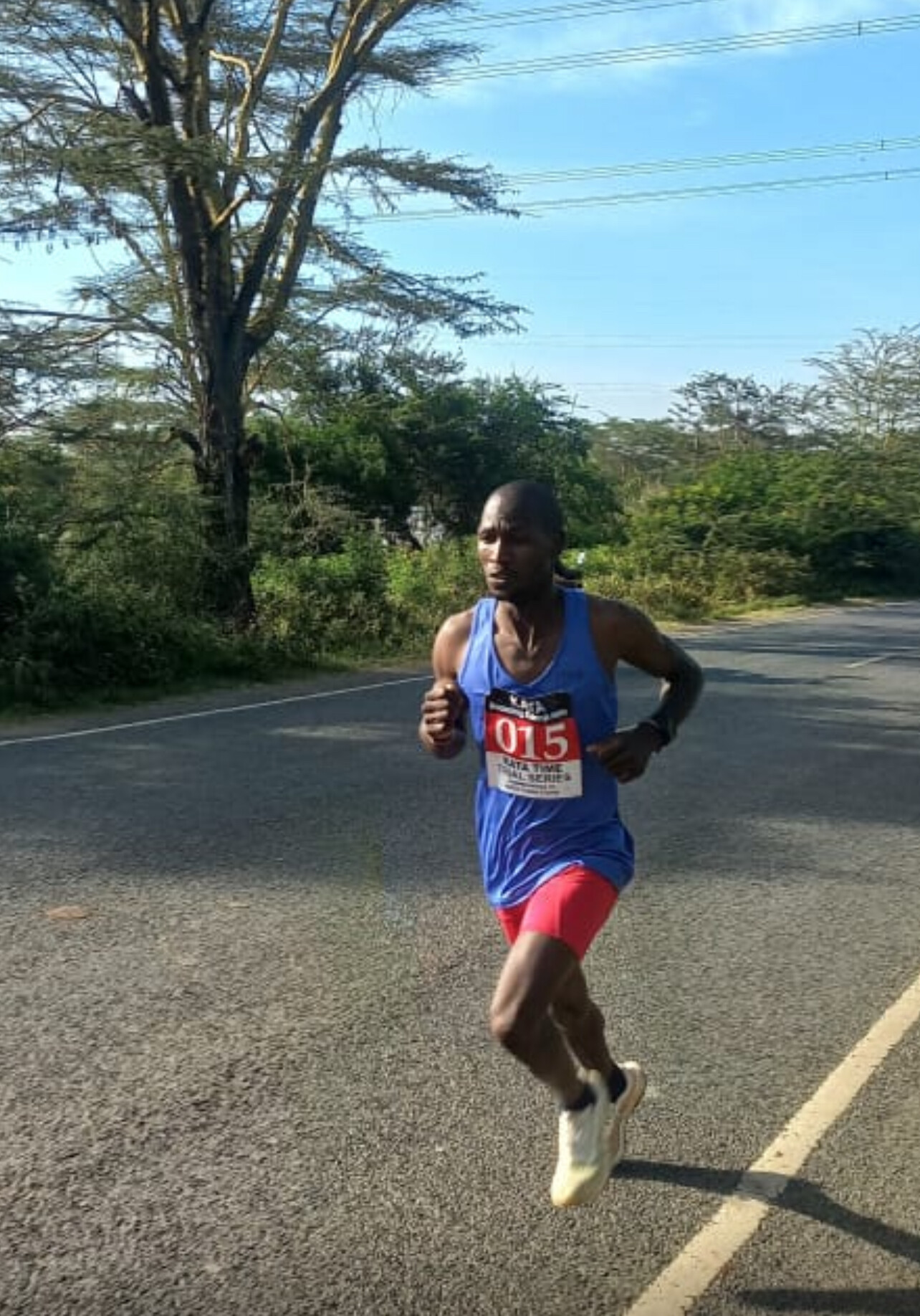
In the women’s 5km, Elizabeth Wambui (20 yrs, Bib 036) impressed once again, winning in 18:08with her trademark consistency and drive. Sandra Cheptoo (13 yrs, Bib 018) showed great promise in second, running 21:00, while Faith Chebet (16 yrs, Bib 033) was third in 23:12. Miriam Chebet (18 yrs, Bib 035) followed closely in 23:17, with Rahab Chemutai (13 yrs, Bib 019) finishing fifth in 25:27.
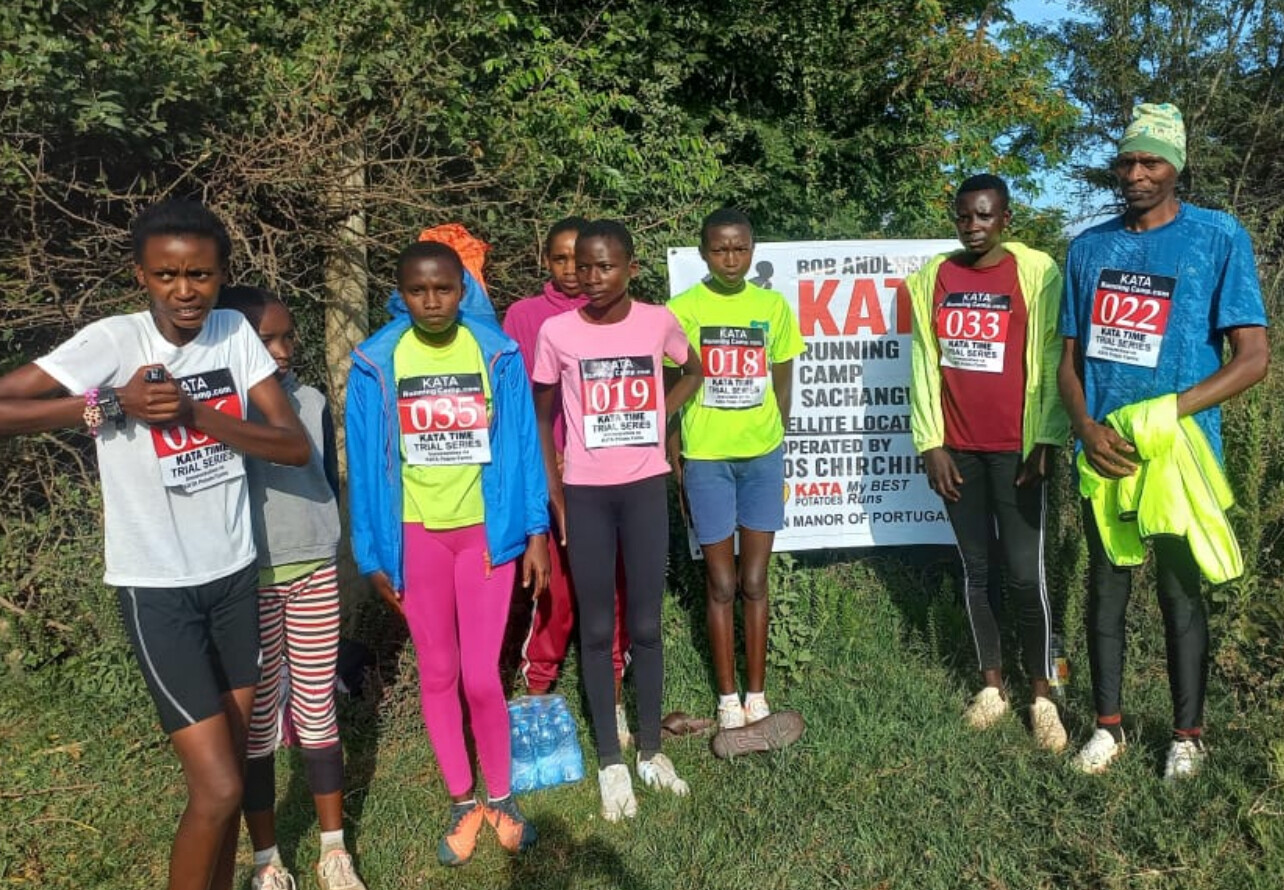
These performances highlight the diversity of talent within KATA’s growing satellite network — from seasoned runners to young emerging athletes.
The next KATA Time Trial will take place on December 17 across most of KATA’s satellite running camps, including the main academy in Thika, continuing the momentum of KATA’s “Fuel of Champions” program that blends training, racing, and development across Kenya.
The Salgaa–Rongai KATA Running Camp, one of KATA’s newest and most promising satellite locations, continues to build its reputation as a key hub for athlete development. Its consistent time trial events are helping to identify and prepare the next generation of Kenyan champions — runners who are fast proving that talent, dedication, and the right support can overcome even the toughest conditions.
KATA Time Trial – Salgaa–Rongai (3rd Edition) Official Results
10km Men
1. Weldon Langat – 19 yrs – Bib 025 – 30:49
2. Ronald Cheruiyot – 25 yrs – Bib 015 – 34:24
3. Sammy Sang – 35 yrs – Bib 022 – 37:50
5km Men
1. Benard Kitum – 20 yrs – Bib 040 – 16:35 (PB)
5km Women
1. Elizabeth Wambui – 20 yrs – Bib 036 – 18:08
2. Sandra Cheptoo – 13 yrs – Bib 018 – 21:00
3. Faith Chebet – 16 yrs – Bib 033 – 23:12
4. Miriam Chebet – 18 yrs – Bib 035 – 23:17
5. Rahab Chemutai – 13 yrs – Bib 019 – 25:27
by Boris Baron
Login to leave a comment
KATA Time Trial 50 Marks Milestone with Strong Performances in Thika
THIKA, Kenya — November 12, 2025 — The 50th edition of the KATA Time Trial was held today at the Kenyan Athletics Training Academy (KATA) in Thika, marking a major milestone for the event that continues to nurture and test athletes under challenging conditions. Despite the warm, humid air and gusty winds, runners delivered impressive performances across both the 5km and 10km distances.
In the men’s 5km race, Charles Ndirangu, still recovering from injury, displayed determination and class to cross the finish line first in 15:32. Sixteen-year-old James Lawrence followed with a strong run of 18:01, showing promise as one of KATA’s rising young athletes. Eric Mwaura, 18, clocked 18:07to round out the top three.
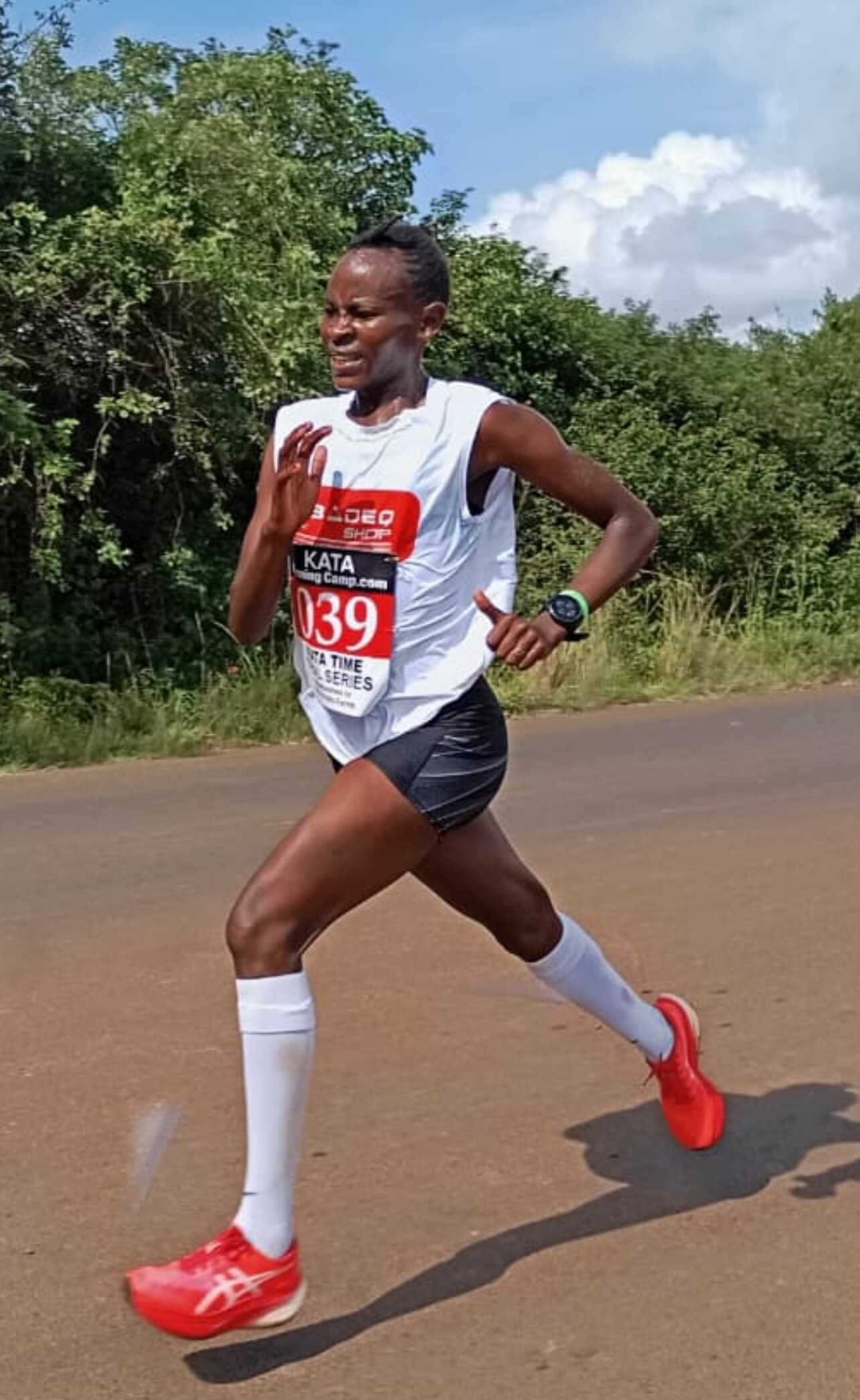
The women’s 5km race saw Agnes Wanjiru take to the course solo, clocking 19:21. Having recently battled illness, her performance reflected admirable resilience and commitment to the KATA program.
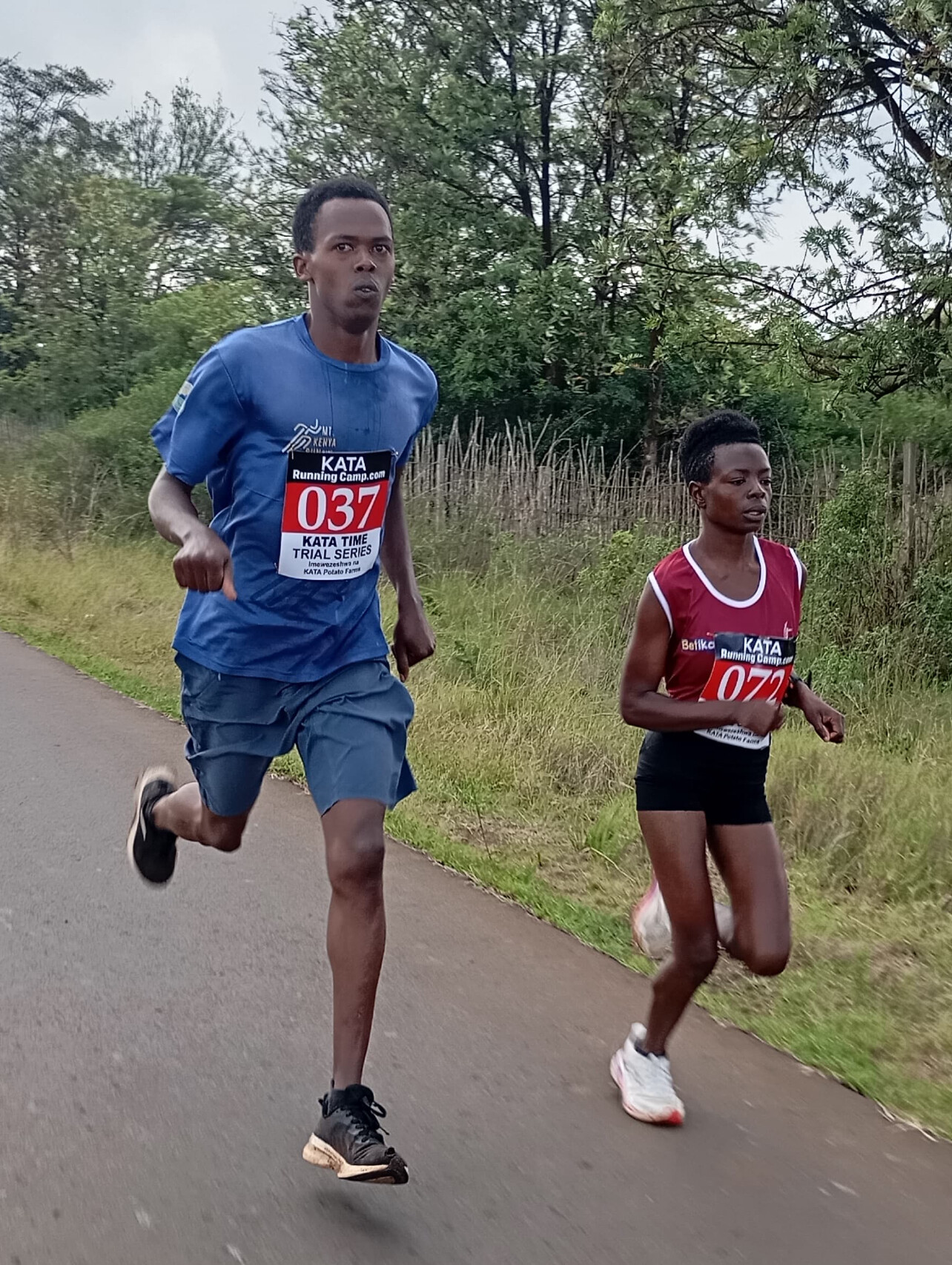
The men’s 10km was one of the most competitive fields of the day. John Chege, 21, took command early and maintained his lead to win in 29:49. He was followed by Bernard Waweru (40) in 30:29, with Stephen Ngigi, 22, close behind in 30:36 to complete the podium.
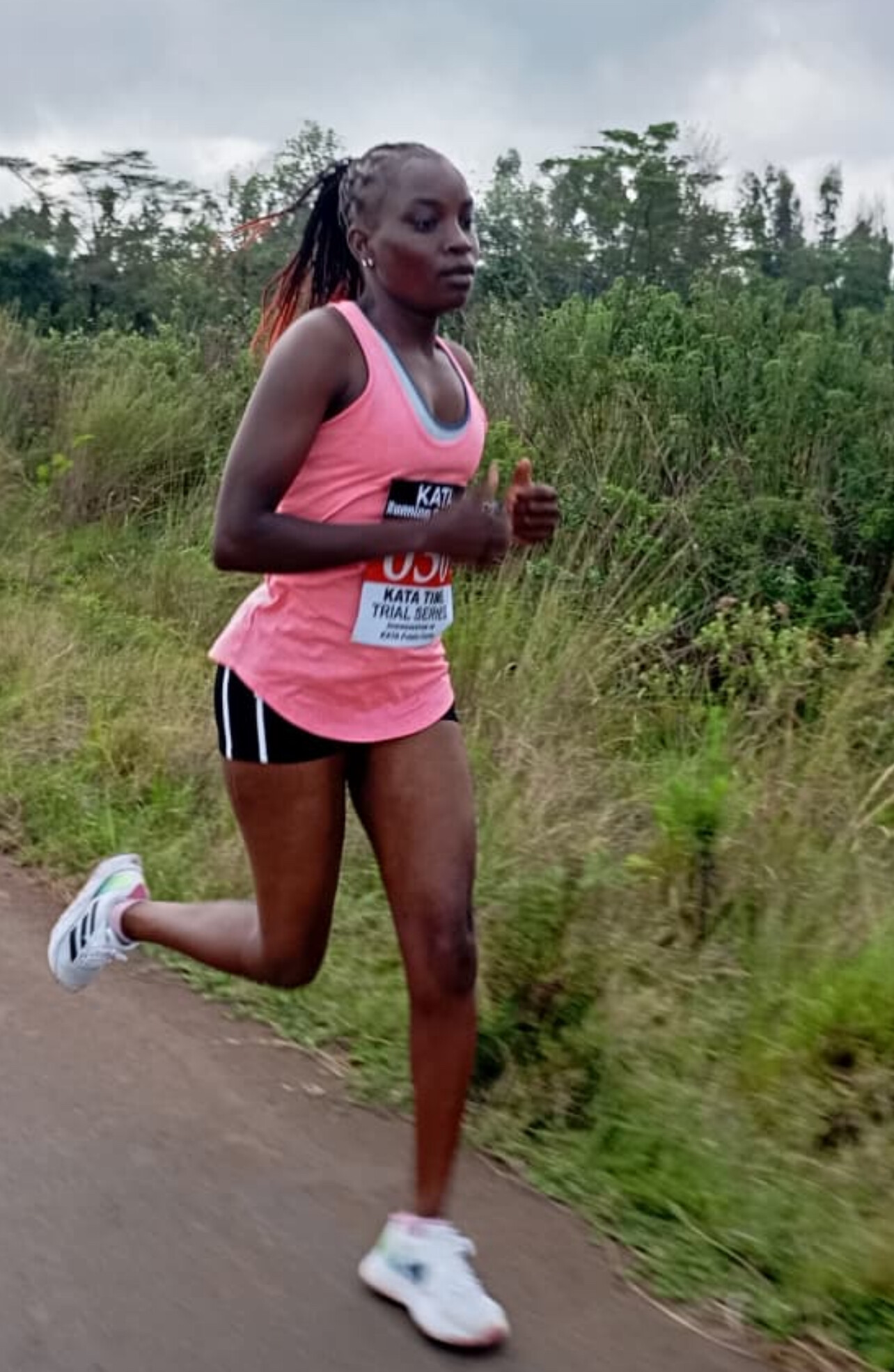
The women’s 10km produced another standout performance, with Loise Kiarie, 24, setting a new personal best of 33:49, improving her previous time by 30 seconds despite the less-than-ideal weather. Jacinta Kamau, also 24, claimed second in 34:48, while Kellen Waithira (38) finished third in 36:11.
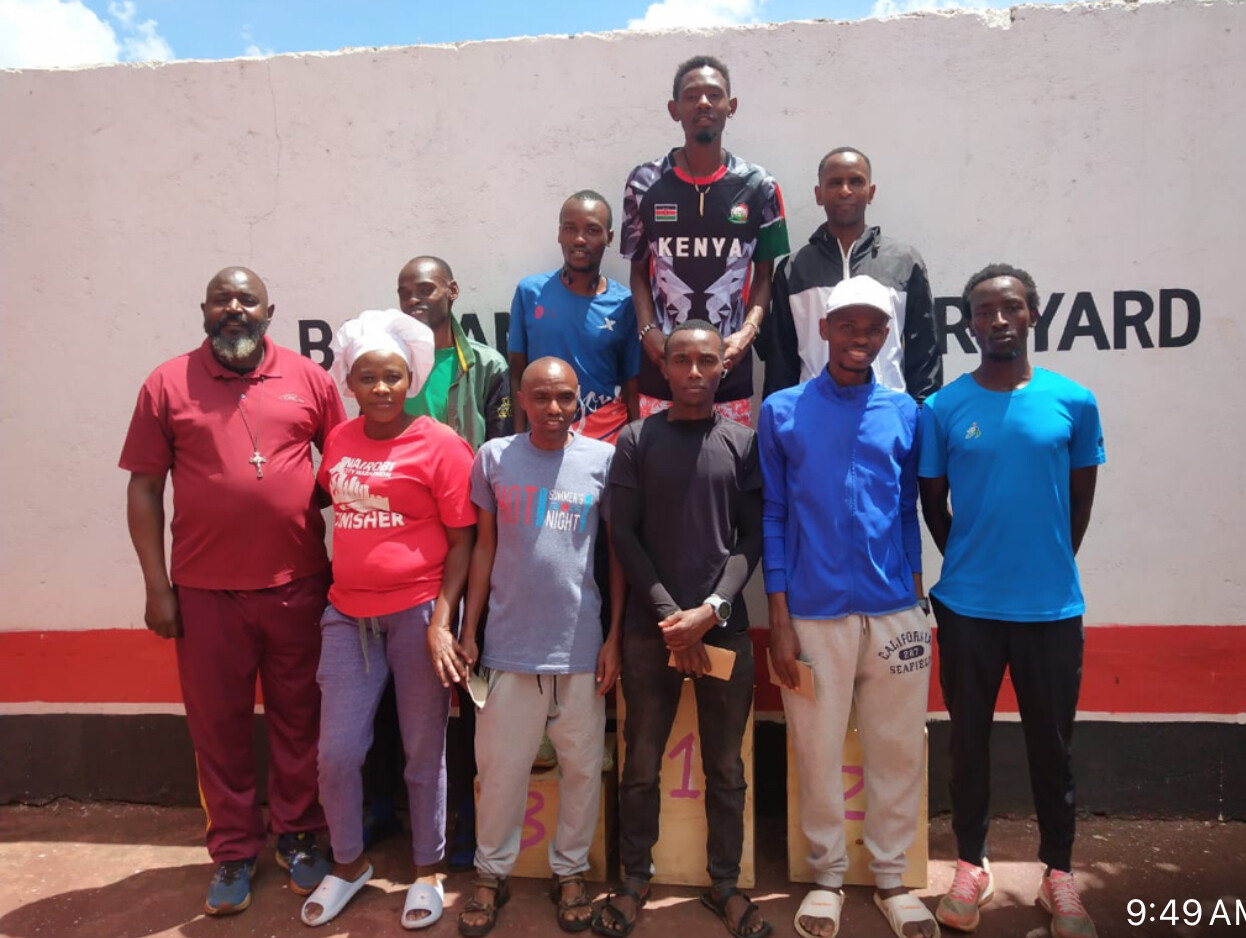
The KATA Time Trials, founded by Bob Anderson, continue to provide a world-class platform for Kenyan athletes to measure progress and stay race-ready between competitions. Today’s edition celebrated not only endurance and improvement but also the spirit of consistency that has defined the KATA community since its inception.

The next KATA Time Trial will take place on December 17, both in Thika and at most of KATA’s satellite running camps across Kenya, as the program continues to expand its reach and provide competitive opportunities to athletes nationwide.
KATA Time Trial #50 – Official Results
5km Men
- Charles Ndirangu – 24 yrs – Bib 74 – 15:32
- James Lawrence – 16 yrs – Bib 73 – 18:01
- Eric Mwaura – 18 yrs – Bib 35 – 18:07
- Tobias Kosgei – 16 yrs – Bib 73 – 18:50
5km Women
- Agnes Wanjiru – 20 yrs – Bib 33 – 19:21
10km Men
- John Chege – 21 yrs – Bib 76 – 29:49
- Bernard Waweru – 40 yrs – Bib 31 – 30:29
- Stephen Ngigi – 22 yrs – Bib 71 – 30:36
- Boniface Mungai – 30 yrs – Bib 77 – 30:53
- Dan Lolngojine – 19 yrs – Bib 49 – 31:01
- John Kuria – 30 yrs – Bib 40 – 31:33
- Joel Maina – 43 yrs – Bib 41 – 32:15
- Justus Nyamai – 18 yrs – Bib 48 – 33:25
- Ismael Mburu – 25 yrs – Bib 50 – 33:44
- Eric Cheruiyot – 30 yrs – Bib 46 – 33:55
- Joseph Nyota – 20 yrs – Bib 32 – 34:05
- Peter Mukundi – 27 yrs – Bib 37 – 36:46
- Charles Ndirangu – 65 yrs – Bib 53 – 38:02
10km Women
- Loise Kiarie – 24 yrs – Bib 39 – 33:49 (PB)
- Jacinta Kamau – 24 yrs – Bib 38 – 34:48
- Kellen Waithira – 38 yrs – Bib 54 – 36:11
- Susan Njuu – 40 yrs – Bib 52 – 36:34
- Lilian Nyamai – 25 yrs – Bib 47 – 37:04
- Karen Cheokemoi – 24 yrs – Bib 51 – 37:29
- Ruth Maina – 23 yrs – Bib 72 – 37:36
- Felistas Maina – 37 yrs – Bib 34 – 40:04
- Mary Wangari – 35 yrs – Bib 36 – 40:04
by Boris Baron
Login to leave a comment
KATA Time Trial Series
Welcome to the KATA Monthly Time Trial Held at the Kenyan Athletics Training Academy in Thika, Kenya, the KATA Monthly Time Trial is a unique and inclusive event designed to support runners of all levels in achieving their goals and showcasing their fitness. This event offers both 10K and 5K distances on an accurate, certified course, providing participants with...
more...Lucy Muritu’s Young Athletes Set Sights on 3rd Edition of Great Chepsaita Cross Country Run
NYANDARUA, Kenya Lucy Muritu, a dedicated KATA beneficiary and mentor, is preparing her young athletes to shine on the global stage at the upcoming 3rd edition of the Great Chepsaita Cross Country Run (Gold Label), set for December 6.
Beyond her success as a KATA potato farmer, Lucy has devoted herself to nurturing young running talent, proving that grassroots mentorship can open doors for children to excel both on the track and in the classroom.
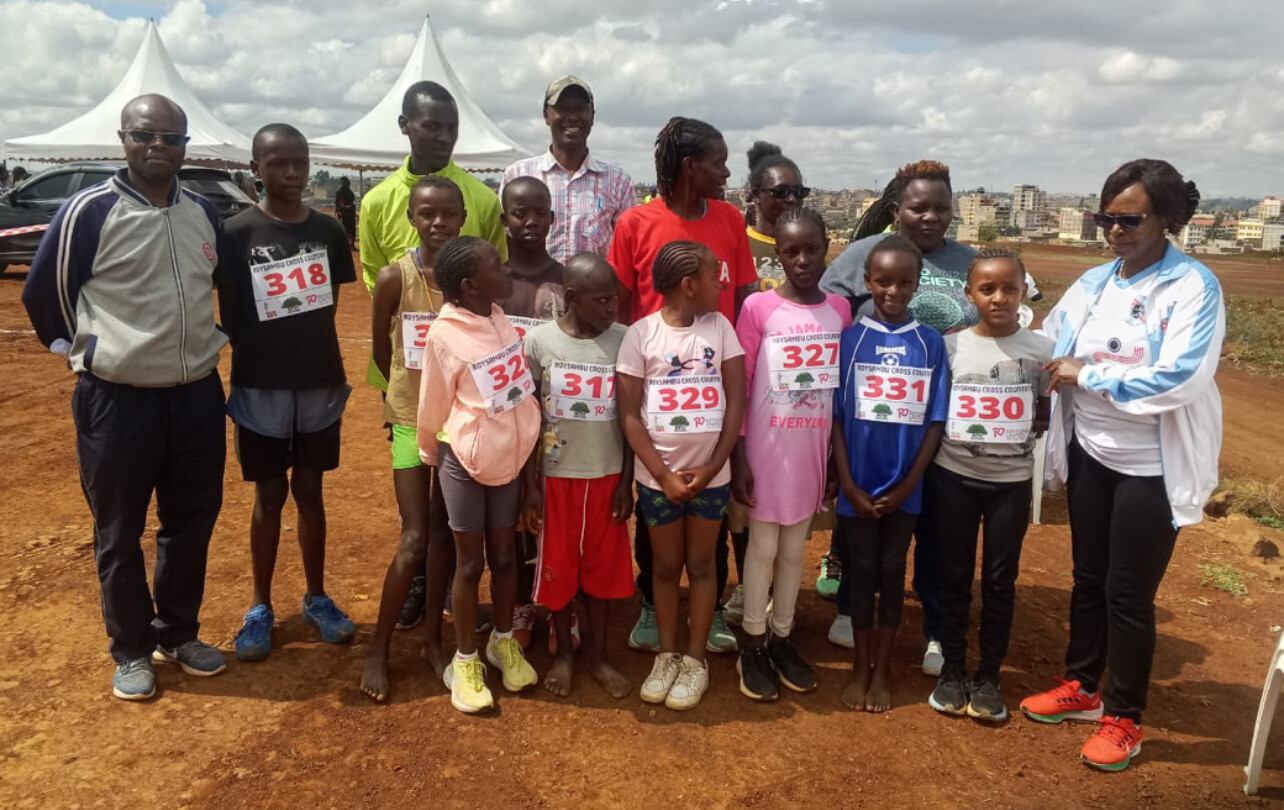
Among her protégés are sisters Florence Wangui (13) and Margaret Wanja (11), whose performances have already drawn national attention. The two recently triumphed in Bob’s One Mile Children’s Race, an initiative created by Bob Anderson to support emerging young runners. Alongside the annual Double Road Race, Bob’s One Mile has become a vital platform for discovering and nurturing athletic talent at the youth level.
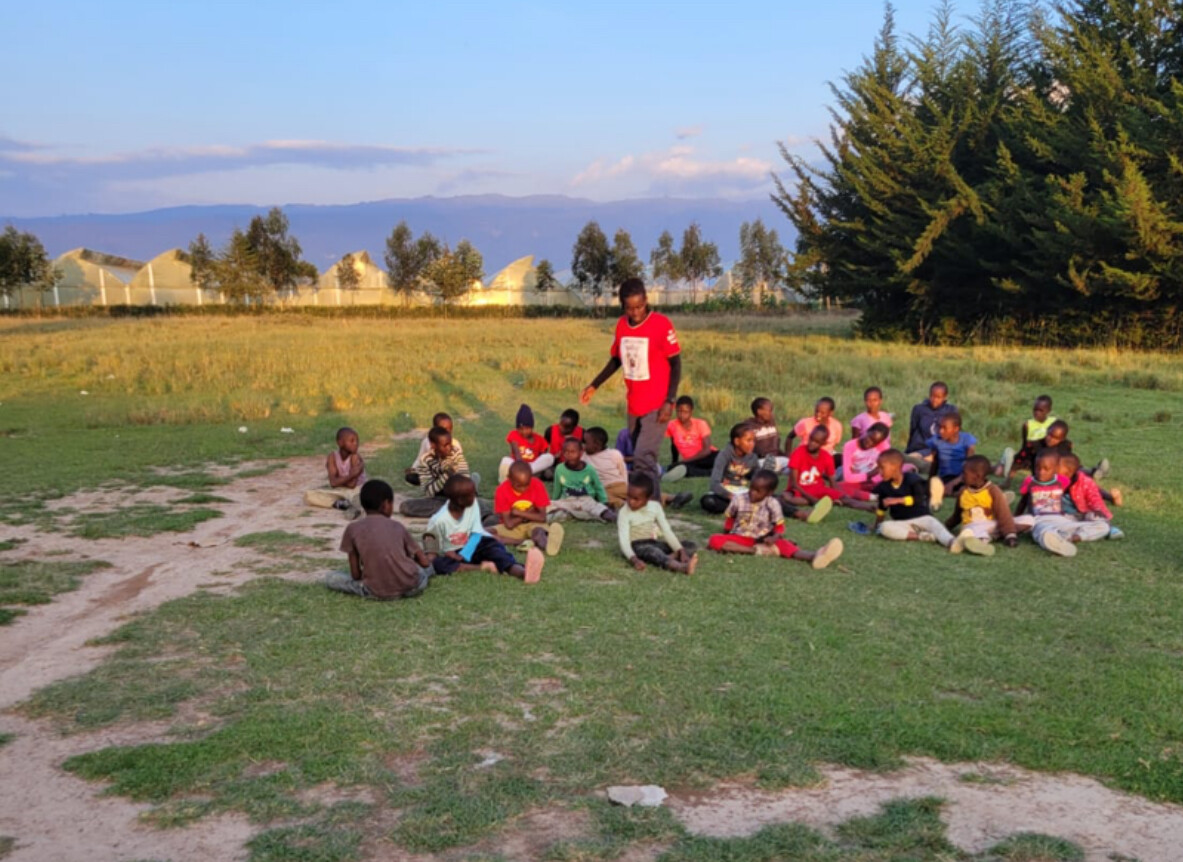
Florence and Margaret continued their winning streak by capturing titles at the Roy Sambu United Environment Cross Country Run in Nairobi, confirming their rising status among Kenya’s promising young athletes.
Lucy has already registered her full team for Chepsaita: Florence Wangui, Margaret Wanja, Godfrey Kahora (19), Ann Wanjiku (16), Tabitha Wanjiru (15), Tashian Wangari (8), and Alisha Njoki (9). Many of these young athletes come from humble backgrounds, yet through Lucy’s mentorship—and the support of programs like KATA and Bob Anderson’s initiatives—they are gaining both guidance and opportunity to grow in sport and in education.
Reflecting on her journey, Lucy said:
“I would like to sincerely thank Bob for the wonderful opportunity he has given me through KATA. Being part of this program has truly empowered me as a farmer and a mentor, and I am grateful for the trust and support that has been shown to me. With KATA’s guidance, I look forward to achieving even greater results and continuing to contribute to the growth of our community. At the same time, I am preparing our young athletes for a great race—the upcoming Chepsaita Cross Country Gold Label event. I’m excited to nurture and guide the next generation, and I believe their participation in such a prestigious event will inspire them to reach new heights.”
The Great Chepsaita Cross Country Run, recognized internationally as a Gold Label event, gives young athletes the chance to compete alongside elite runners—learning lessons in discipline, training, and sportsmanship that will shape their futures.
For Lucy and her team, the event represents far more than a race. It’s a platform where talent meets education, helping mold a generation of athletes who can thrive in both athletics and life.
KATA’s framework offers this same opportunity to coaches across Kenya, empowering them to identify young runners in their communities, register them in programs like Bob’s One Mile, and access mentorship and resources that foster both athletic and academic growth.
Lucy encourages other coaches to join the effort:
“There is talent everywhere, and KATA gives us a way to find it, guide it, and give children the opportunities they deserve. With more coaches participating, we can build a network of mentorship that reaches every county and ensures no gifted child goes unnoticed.”
As December 6 approaches, Lucy’s young athletes stand as a testament to the power of community-based mentorship. From the rolling hills of Nyandarua to the Gold Label course at Chepsaita, these children embody the resilience, dedication, and promise that programs like KATA and Bob’s One Mile are designed to nurture. Their journey shows that with the right guidance and opportunity, Kenya’s next generation of runners can achieve greatness—on the course and beyond.
by Robert Kibet
Login to leave a comment
Colorado Runner Completes All Seven World Marathon Majors in One Year
l“My wife thinks I’m crazy,” says 49-year-old Max Fulton
Golden, Colorado — Completing all six Abbott World Marathon Majors is a lifetime goal for many runners. But in 2025, with Sydney officially added as the seventh race, one Colorado man decided to do them all — in a single year.

Max Fulton, 49, from Golden, crossed his final finish line last weekend, completing an extraordinary year that took him across the globe to tackle the world’s most iconic marathons: Tokyo, Boston, London, Berlin, Chicago, New York, and now Sydney.
“It was interesting. It was hard,” Fulton said, displaying his seven medals — one from each of the World Marathon Majors. “A lot of people try this and it takes them five or six years to get accomplished. I thought, what if I did them all in one year? And what if I’m the first person to do it?”
Fulton isn’t new to endurance challenges. A veteran ultrarunner, he’s finished the grueling Leadville 100 ten times. But he admits this marathon mission tested more than just his legs. “The hardest part, actually, was getting into all of them,” he said. “Even if you qualify, it doesn’t always guarantee entry.”
He managed it through a mix of qualification times, charity bibs, marathon tours, and lottery wins. Along the way, his family supported his ambitious plan — mostly. “My wife thinks I’m crazy,” Fulton laughed. “My daughter’s probably with her. My son thinks it’s awesome.”
Fulton believes he’s one of fewer than ten runners worldwide to have completed all seven Majors in 2025. For comparison, roughly 20,000 runners have finished all six Majors over their entire lives.
As for what’s next? “Maybe it’s time to spend more time on the bike,” he said — before pausing with a grin. “But Abbott is adding South Africa and Singapore. Maybe I’ll end up running nine of them.”
by Boris Baron
Login to leave a comment
2026 Boston Marathon Qualifying Standards Among the Most Demanding Ever Issued
The Boston Athletic Association (B.A.A.) has confirmed new qualifying standards for the 2026 Boston Marathon, scheduled for April 20, 2026, and they are among the most demanding ever issued in the event’s 130-year history. For runners aged 18 to 59, the time standards have been made five minutes faster than those used for the 2025 race — a reflection of both the extraordinary growth in marathon participation and the deepening field of competitive age-group runners.
These updates reinforce the B.A.A.’s commitment to maintaining the Boston Marathon as the pinnacle of achievement for amateur and professional runners alike. With more applicants qualifying each year than the race can accept, meeting the standard no longer guarantees entry — runners must often exceed the qualifying mark by several minutes to secure a bib.

2026 Boston Marathon Qualifying Standards
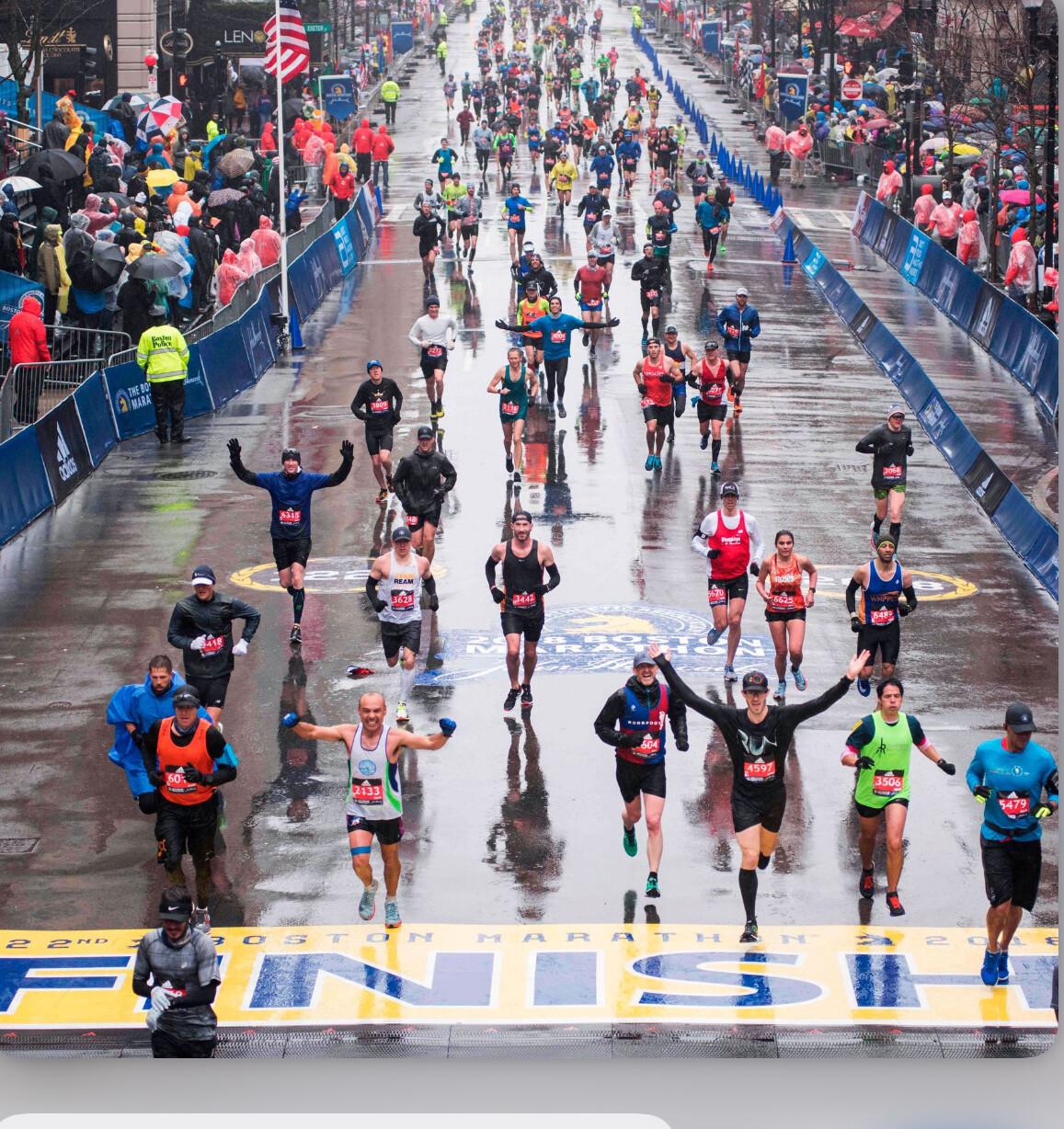
Age Group – Men – Women
18–34 – 2:55:00 – 3:25:00
35–39 – 3:00:00 – 3:30:00
40–44 – 3:05:00 – 3:35:00
45–49 – 3:15:00 – 3:45:00
50–54 – 3:20:00 – 3:50:00
55–59 – 3:30:00 – 4:00:00
60–64 – 3:50:00 – 4:20:00
65–69 – 4:05:00 – 4:35:00
70–74 – 4:20:00 – 4:50:00
75–79 – 4:35:00 – 5:05:00
80+ – 4:50:00 – 5:20:00
These standards closely match the official 2026 qualifying table published by the B.A.A. Standards for runners aged 60 and above have changed little or remained consistent with prior years, while younger age divisions (18–59) now face significantly faster requirements.
Meeting these times makes a runner eligible to apply for registration, but acceptance depends on the number of applicants. For the 2025 Boston Marathon, runners needed to be 6 minutes and 51 seconds faster than the posted standard to gain entry. For the 2026 edition, the cutoff narrowed but remained steep — 4 minutes and 34 seconds faster than the standard.
Elite Field Entry
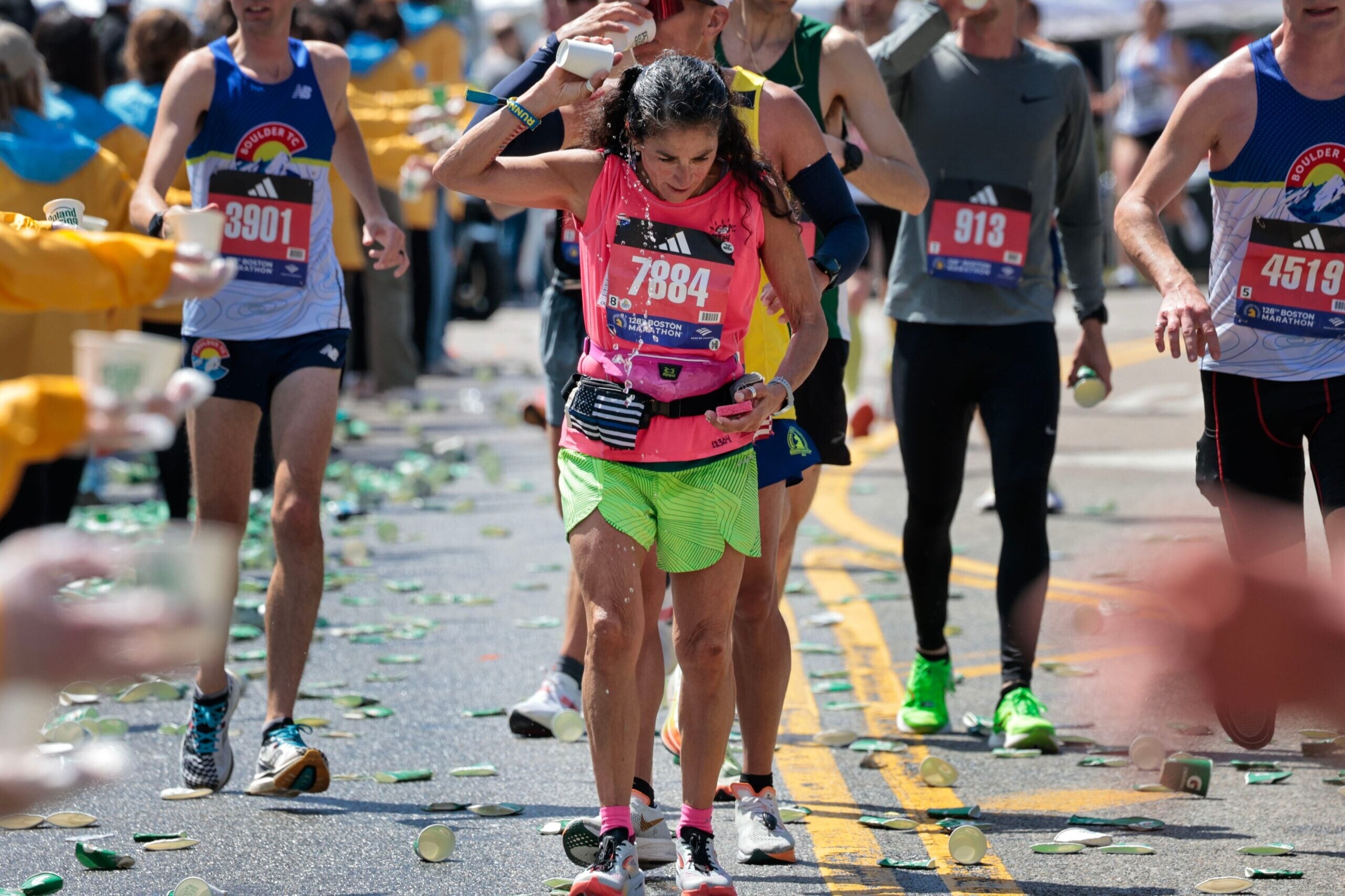
The B.A.A. does not publicly post official qualifying times for elite athletes. Instead, entries are extended by invitation to runners who have recently achieved world-class performances. While not formalized, typical benchmarks for consideration are around sub-2:20 for men and sub-2:45 for women, depending on the depth of the field and prior race results.
Course Adjustments Coming for 2027
Beginning with the 2027 Boston Marathon, new rules will redefine which marathon courses count toward qualification. Races with net-downhill profiles will face time “indexing” to ensure fairness:
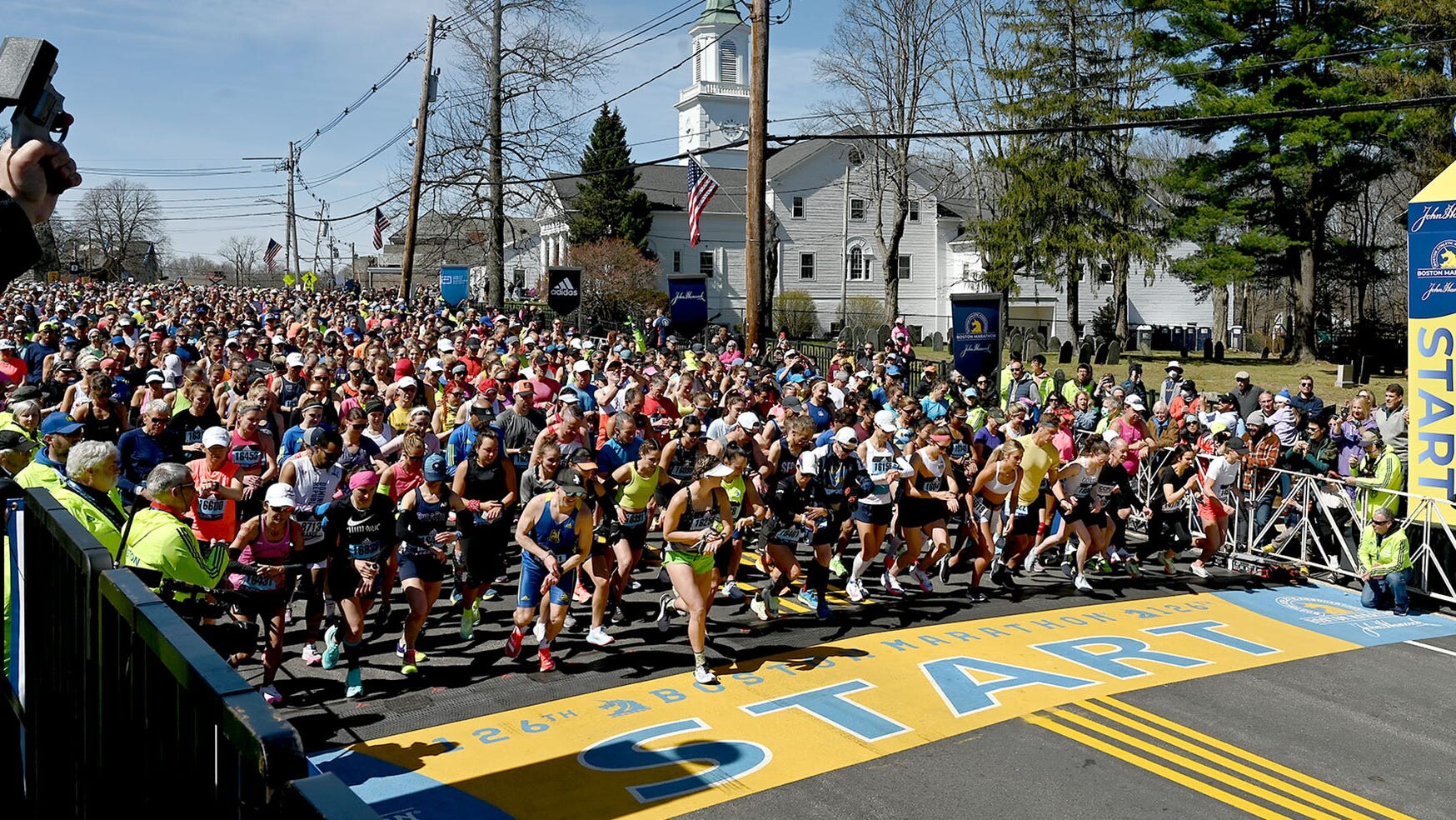
• Courses dropping 1,500–2,999 feet: +5 minutes added to finishing time
• Courses dropping 3,000–5,999 feet: +10 minutes added
• Courses dropping 6,000 feet or more: will no longer count as qualifiers
These adjustments, already confirmed by the B.A.A., are designed to standardize qualifying efforts across all marathon courses and eliminate advantages from steep downhill profiles.
What This Means for Runners
For competitive marathoners worldwide, the 2026 standards mark one of the most significant tightening periods in recent memory. The message from the B.A.A. is clear:
• Run faster than ever before.
• Choose a certified, fair course.
• Don’t aim to meet the standard — aim to beat it decisively.
The Boston Marathon remains the benchmark for excellence in distance running. With the 2026 standards now in place and additional adjustments ahead for 2027, the pursuit of a Boston Qualifier (BQ) remains one of the most respected — and challenging — achievements in the sport.
by Boris Baron
Login to leave a comment
Boston Marathon
Among the nation’s oldest athletic clubs, the B.A.A. was established in 1887, and, in 1896, more than half of the U.S. Olympic Team at the first modern games was composed of B.A.A. club members. The Olympic Games provided the inspiration for the first Boston Marathon, which culminated the B.A.A. Games on April 19, 1897. John J. McDermott emerged from a...
more...Fantaye Belayneh Repeats, Isaia Lasoi Shines at the 2025 Boston Half Marathon
Boston’s Emerald Necklace once again set the stage for one of the country’s most scenic and competitive half marathons on Sunday morning. Over 7,000 runners lined up at Franklin Park for the 2025 Boston Half Marathon, where Ethiopia’s Fantaye Belayneh successfully defended her women’s title and Kenya’s Isaia Lasoi powered to an impressive victory in the men’s race. Each champion earned $15,000 for their wins.
Men’s Race – Lasoi Dominates in 1:00:59
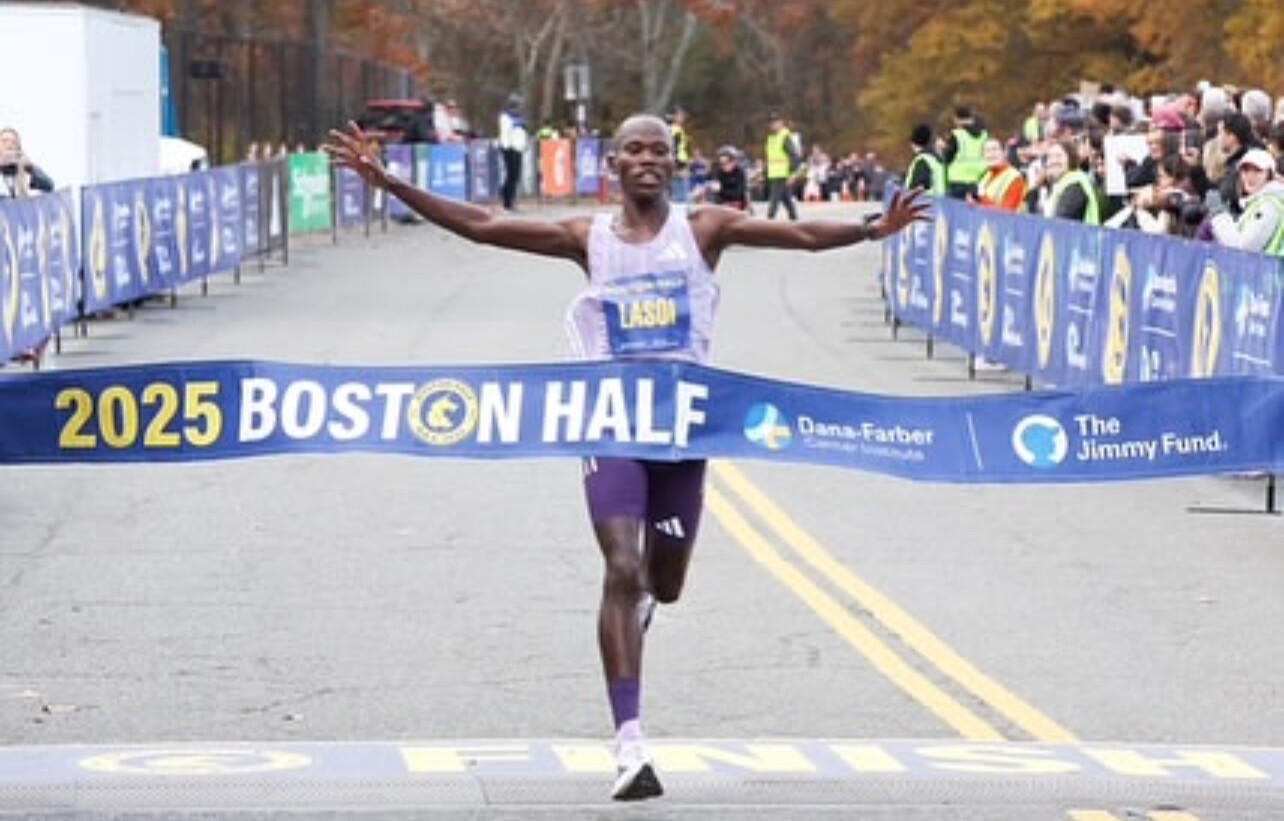
Kenya’s Isaia Lasoi delivered a commanding performance, clocking 1:00:59 to capture the men’s crown and the $15,000 winner’s prize. The race unfolded at a fast but controlled pace through the park-lined streets, with Lasoi making his decisive move in the final 5K. Uruguay’s Santiago Catrofefollowed in 1:01:23, while Kenya’s Andrea Kiptoo secured third in 1:01:30.
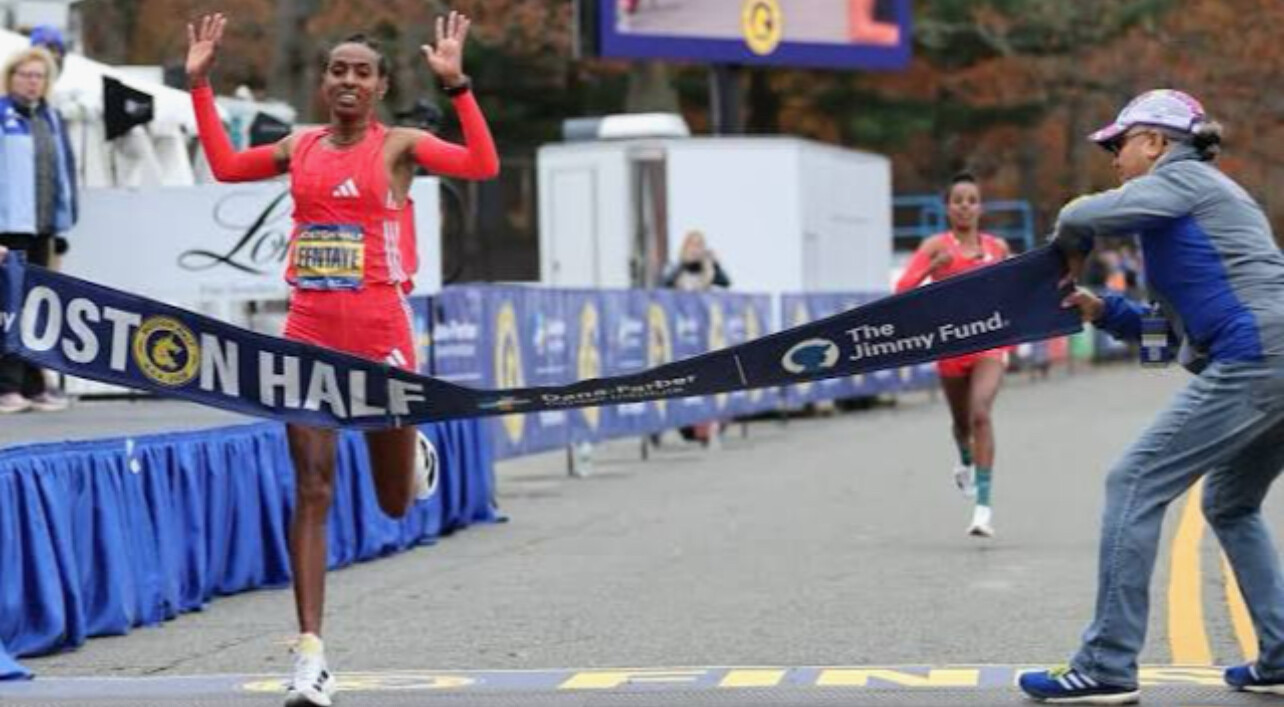
Lasoi’s sub-61 performance on Boston’s undulating course reinforced his growing status among Kenya’s new generation of road racing talent. His powerful stride and tactical patience over the final stretch left no doubt about his supremacy.
Women’s Race – Belayneh Holds Off Wudu in a Thrilling Finish
In the women’s division, Ethiopia’s Fantaye Belayneh out-kicked her compatriot Melknat Wudu in a dramatic finish, crossing the line in 1:08:51 — just two seconds ahead of Wudu (1:08:53). Kenya’s Evaline Chirchir completed the podium in 1:09:01. Belayneh’s repeat win also earned her $15,000, matching Lasoi’s prize.
Her victory made her the first woman since Joan Chelimo Melly (2017–2018) to win back-to-back Boston Half titles. With calm focus and a perfectly timed surge in the final meters, Belayneh turned a shoulder-to-shoulder battle into a defining moment of determination and poise.
Course and Conditions
Runners traversed Boston’s “Emerald Necklace,” a 13.1-mile loop of winding parkways and rolling roads connecting the city’s most picturesque green spaces. Conditions were ideal — cool temperatures and light winds — creating the perfect backdrop for fast times and fierce competition.
Race Legacy and Global Field
The Boston Half Marathon continues to attract elite international athletes alongside thousands of passionate runners from around the world. With its blend of competition, camaraderie, and New England charm, the event remains one of the premier fall half marathons in the United States.
Belayneh and Lasoi’s victories underscored the enduring global depth of distance running — and confirmed once again that Boston’s roads remain among the finest proving grounds for champions.
by Boris Baron
Login to leave a comment
Anne Flower Sets New Women’s 50-Mile World Record at the 2025 Tunnel Hill 50 Mile
In a stunning display of endurance and precision pacing, emergency-room physician and ultramarathon standout Anne Flower blazed to a new women’s world record of 5:18:57 for the 50-mile distance at the 2025 Tunnel Hill 50 Mile in Vienna, Illinois. The mark shatters the previous record of 5:31:56 held by Courtney Olsen, set on the same course last year.
Record-Setting Performance

Held on the flat, crushed-gravel rails-to-trails route of the Tunnel Hill State Trail, the race has become a proving ground for world-class performances. Flower averaged an extraordinary 6:23 per mile (3:57 per kilometer) across the full 80.47 km course, running even splits and showing no signs of strain even as temperatures climbed later in the race.l
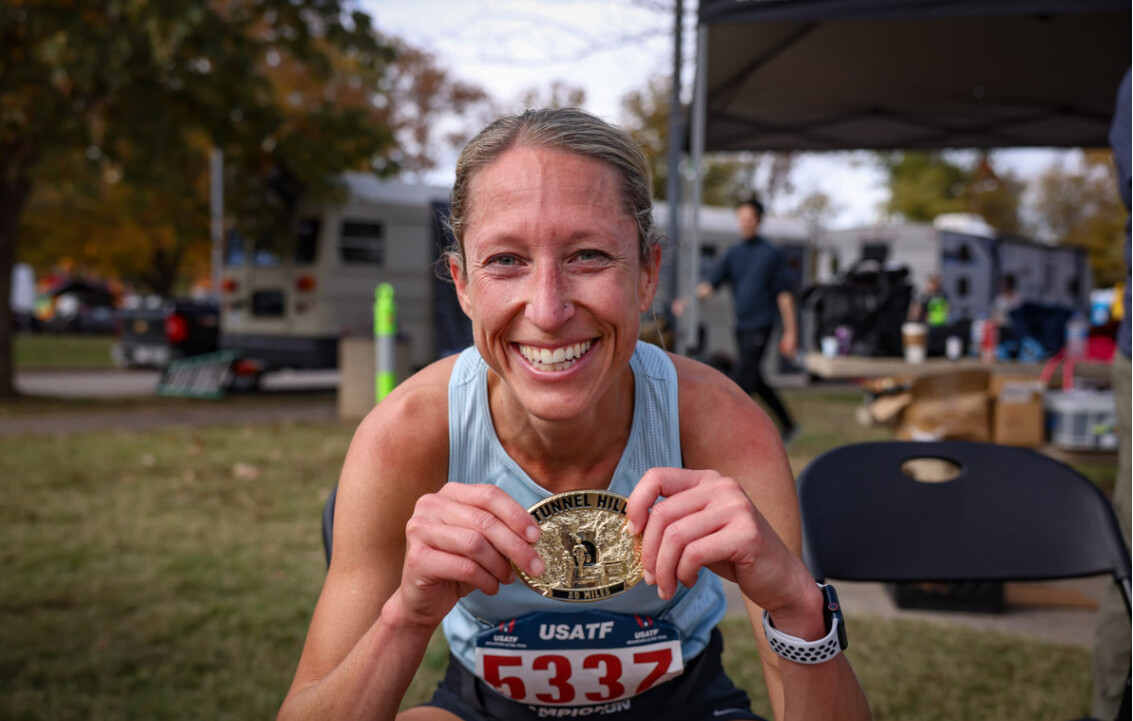
From the opening miles, Flower stayed well ahead of record pace, never faltering and closing strongly to seal a performance that redefines the women’s 50-mile standard. Olsen, competing in the 100k event this year, passed the 50-mile mark in 5:33:59—still an elite split, but more than 15 minutes behind Flower’s record pace.
From Marathons to Ultramarathons
Based in Colorado Springs, Colorado, Flower balances her demanding career as an emergency-room doctor with elite-level training. Before moving to the trails in 2019, she competed in marathons and took part in the 2020 U.S. Olympic Marathon Trials. Her road background shows in her efficient stride and disciplined pacing.
Over the past two seasons, she has built an impressive résumé:
Winner of the 2024 Javelina 100k
Champion of the 2025 Silver Rush 50 Mile
Record-breaker at the 2025 Leadville 100 Mile, where she eclipsed Ann Trason’s 31-year-old mark in her debut at the distance
These results paved the way for her dominant performance at Tunnel Hill, demonstrating both her endurance and her remarkable consistency.
Raising the Bar for Women’s Ultrarunning
Flower’s 5:18:57 isn’t just fast—it’s a historic leap forward. Taking more than 12 minutes off a world record at this level is rare, and doing so with such control underscores her potential for even greater achievements ahead.
Tunnel Hill has become synonymous with world-record performances, and Flower’s run further cements the race’s reputation as one of the premier venues for ultradistance excellence.
What’s Next
With records now at both 50 and 100 miles, Flower’s next challenge may be defending or lowering her new mark—or shifting her focus toward international championship events. Whatever path she chooses, her rise through the sport has been nothing short of extraordinary.
Anne Flower has proven that it’s possible to balance a demanding professional life with world-class athletic performance. Her blend of discipline, determination, and pure endurance has elevated her into the top tier of ultrarunning’s global elite.
by Boris Baron
Login to leave a comment
NYC Marathon Sets New World Record for Largest Number of Finishers
The 2025 TCS New York City Marathon has officially set a new world record for the largest number of finishers in a marathon, surpassing the mark set by the London Marathon earlier this year.
A total of 59,226 runners crossed the finish line in Central Park, eclipsing London’s 2025 record of 56,640 finishers achieved back in April. Last year, New York welcomed 55,643 finishers — making this year’s turnout an impressive increase of more than 3,500 participants.
This year’s field included 31,927 men, 27,156 women, and 143 non-binary runners, reflecting the marathon’s continued growth in global diversity and participation.
Average finish times:
• Men: 4:18:55
• Women: 4:48:11
• Non-binary: 4:43:59
• Overall: 4:32:25
The record underscores New York’s enduring status as one of the world’s most iconic marathons. Every November, the five-borough race captures the imagination of runners and fans alike, transforming the city into a global stage of endurance, determination, and celebration.
As one runner posted after finishing, “There’s nothing like New York — the crowd, the bridges, the skyline, and the feeling when you cross that line.”
With 59,226 finishers, the 2025 New York City Marathon is now not only the largest marathon in history but also a testament to the global passion for running that continues to grow stronger every year.
by Boris Baron
Login to leave a comment
Beatrice Chebet Named Kenya’s 2025 Female Long-Distance Athlete of the Year
Beatrice Chebet has been voted Kenya’s Female Long-Distance Athlete of the Year, receiving an overwhelming 67% of total fan votes in a nationwide poll conducted by Kenya Sports and Athletics Kenya.
Chebet’s 2025 season has been nothing short of historic. The 25-year-old claimed both the 5000mand 10,000m world titles, showcasing her dominance across the long-distance spectrum. She also shattered the 5000m world record, clocking a breathtaking 13:58.06, and became the first woman in history to break the 14-minute barrier.
Her remarkable achievements placed her far ahead of fellow Kenyan legends Hellen Obiri (12%) and Peres Jepchirchir (6%) in the fan voting.
Chebet’s versatility, strength, and consistency have redefined what’s possible for women’s distance running. Known for her calm confidence and powerful finishing kick, she has proven equally unstoppable on the track and the roads, inspiring a new generation of athletes around the world.
With a season marked by brilliance and history-making performances, Beatrice Chebet has firmly established herself among the all-time greats in athletics.
2025 Season Highlights
✅ 5000m World Champion
✅ 10,000m World Champion
✅ 5000m World Record – 13:58.06
Congratulations to Beatrice Chebet — a true champion of champions.
by Boris Baron
Login to leave a comment
Eliud Kipchoge Finishes the 2025 New York City Marathon in 2:14:36
Eliud Kipchoge, the greatest marathoner of all time, took on the challenging streets of New York City for the first time — and finished strong in 2:14:36. Known for his smooth efficiency and calm composure, Kipchoge tackled the hilly and tactical course with trademark focus, staying consistent through the early stages before the pace slowed slightly in the latter half.
His early splits showed controlled aggression: 15:12 at 5K, 30:25 at 10K, and 1:05:20 at halfway. Through 30K, he was still moving well in 1:33:02, but the final 10 kilometers through Central Park tested even the marathon master, bringing him home in 2:14:36.
Though not among his fastest times, this was a run filled with purpose and legacy. For Kipchoge, New York was never about breaking records — it was about embracing one of the sport’s most iconic stages and completing his journey across all six World Marathon Majors.
At 40 years old, the Kenyan legend has now conquered every major marathon city, further solidifying his place as the face of modern distance running. "Many at age 40 have run much faster but this is still very respectable," says KATA founder Bob Anderson.
by Boris Baron
Login to leave a comment
66-Year-Old Steve James Runs 200 Marathons in 200 Days Around Britain’s Coastline
At age 66, retired banker Steve James has accomplished an extraordinary feat — completing 200 marathons in 200 consecutive days while running around the entire coastline of Great Britain.
Starting in Topsham, Devon, in April, James covered an astonishing 5,240 miles (8,433 km) before returning to his starting point this past Saturday. Throughout the journey, researchers from the University of Exeter closely monitored his physical condition to study the effects of such extreme endurance on the human body.
“I haven’t had a day off in seven months,” James said after finishing. “I’m quite looking forward to the prospect of a lie-in and not having to complete 26 miles tomorrow.”
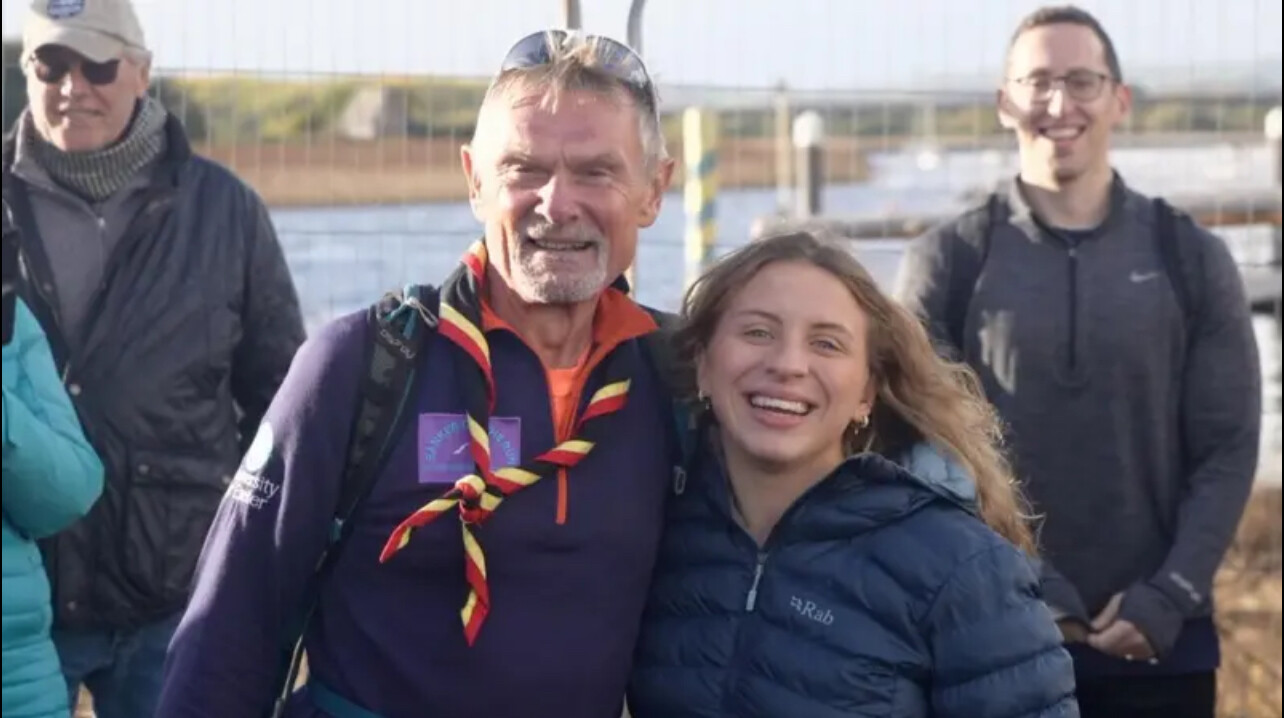
Despite enduring fierce weather, flooded paths, and even a gout flare-up that sent him briefly to the hospital, James remained determined. His route tested both his mental and physical resilience — but he finished strong and injury-free.
Over the course of his journey, James went through seven pairs of trainers, faced storms Floris and Amy, and climbed the equivalent elevation of Mount Everest ten times. Through it all, he regularly shared updates with followers on social media, inspiring thousands with his perseverance and humor.
Reflecting on his achievement, James said,
“It’s just shown me that you’re never too old to take on something huge. You’ve just got to start and keep going.”
His 200-day coastal run stands as a powerful reminder that age is no barrier to endurance — only determination and spirit truly define the limits of human potential.
by Boris Baron
Login to leave a comment
Benson Kipruto Wins a Thrilling 2025 New York City Marathon as Kipchoge and Bekele Fade
The streets of New York witnessed one of the most dramatic finishes in recent marathon history as Benson Kipruto of Kenya edged compatriot Alexander Mutiso by fractions of a second to win the 2025 TCS New York City Marathon. Both men were clocked at 2:08:09, with Kipruto leaning ahead in the final meters of Central Park to claim the title.
The victory marked a triumphant return to the top for Kipruto, who has previously won the Boston and Chicago Marathons. On a day when tactics mattered as much as fitness, he delivered a perfectly timed surge to secure the crown.
Alexander Mutiso finished a close second in 2:08:09, just 0.16 seconds behind, while 2021 New York champion Albert Korir completed the Kenyan sweep in third with a time of 2:08:57. Great Britain’s Patrick Dever ran a superb debut marathon to finish fourth in 2:08:58, and Swiss athlete Matthias Kyburz crossed the line fifth in 2:09:55.
All eyes were on Eliud Kipchoge, the two-time Olympic champion and marathon world record holder, making his long-awaited debut in New York. The legendary Kenyan started conservatively and remained in the lead pack through halfway, but the relentless climbs and bridges of the course eventually took their toll. Kipchoge finished 17th in 2:14:36, smiling as he crossed the line, suggesting this could be his final appearance at a World Marathon Major.
Ethiopian great Kenenisa Bekele also started among the favorites but faded after the 30-kilometer mark and did not finish the race. His withdrawal, along with Kipchoge’s struggles, highlighted the unique difficulty of New York’s course—one that tests strategy and strength more than sheer speed.
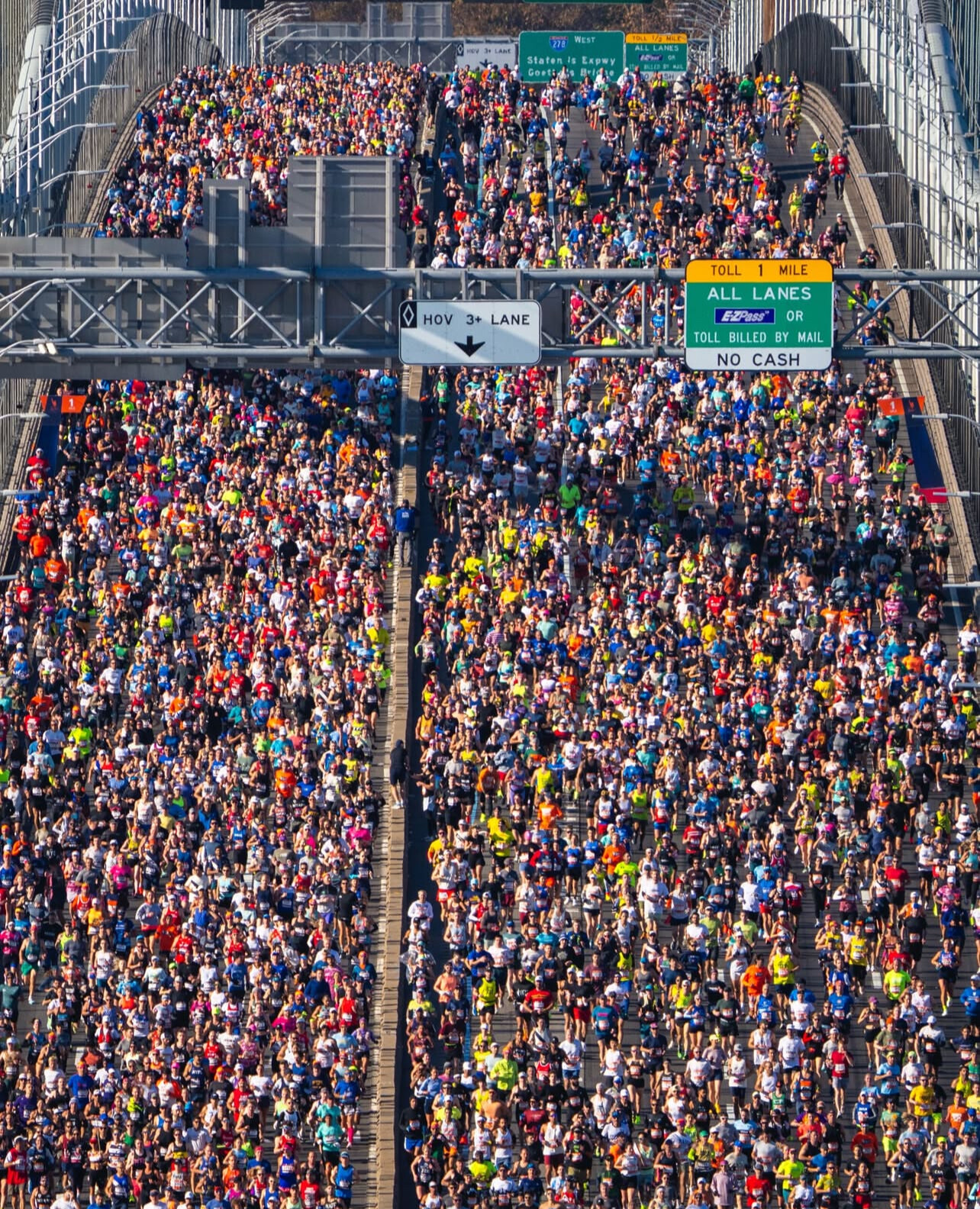
Despite the absence of a record-breaking time, the 2025 edition of the TCS New York City Marathon delivered unforgettable drama. The Kenyan trio’s podium sweep reaffirmed the country’s dominance in distance running, while thousands of runners from across the globe once again turned the streets of the five boroughs into a festival of endurance and inspiration.
Top 10 Men’s Results – 2025 TCS New York City Marathon:
1. Benson Kipruto (Kenya) – 2:08:09
2. Alexander Mutiso (Kenya) – 2:08:09
3. Albert Korir (Kenya) – 2:08:57
4. Patrick Dever (Great Britain) – 2:08:58
5. Matthias Kyburz (Switzerland) – 2:09:55
6. Joel Reichow (United States) – 2:09:56
7. Charles Hicks (United States) – 2:09:59
8. Sondre Moen (Norway) – 2:10:15
9. Tsegay Weldlibanos (Eritrea) – 2:10:36
10. Joe Klecker (United States) – 2:10:37
Eliud Kipchoge finished 17th in 2:14:36.
Kenenisa Bekele did not finish (DNF).
by Boris Baron
Login to leave a comment
Hellen Obiri Makes History in New York — First Woman to Break 2:20 in the Big Apple
NEW YORK CITY — Kenya’s Hellen Obiri produced a sensational performance at the 2025 TCS New York City Marathon, reclaiming her crown and making history with a course-record run of 2:19:51.
Obiri became the first woman ever to break 2 hours 20 minutes on New York’s notoriously challenging course, smashing Margaret Okayo’s 2003 record of 2:22:31 by more than two and a half minutes.
The two-time Olympic silver medalist and double world 5,000 m champion ran a controlled race through the early boroughs before unleashing a decisive surge over the final miles through Central Park. Her combination of power and precision over the rolling terrain solidified her place among the all-time marathon greats.
“This victory means everything,” Obiri said after crossing the line. “New York is one of the toughest courses in the world, and to break 2:20 here feels unbelievable. I wanted to show that history can be made anywhere.”
The result capped a remarkable day for Kenya, which swept the women’s podium.
Top 3 Women – 2025 TCS New York City Marathon
1. Hellen Obiri (KEN) — 2:19:51 (Course Record)
2. Sharon Lokedi (KEN) — 2:20:07
3. Sheila Chepkirui (KEN) — 2:20:24
by Boris Baron
Login to leave a comment
Rhonzas Kilimo and Bizuager Aderra Triumph in Thrilling Istanbul Marathon
ISTANBUL, November 2, 2025 — Kenya’s Rhonzas Kilimo and Ethiopia’s Bizuager Aderra claimed sensational victories at the 47th Türkiye İş Bankası Istanbul Marathon, both securing the biggest wins of their careers and pocketing $50,000 each.
In warm, sunny conditions, 29-year-old Kilimo edged out defending champion Dejene Debela in a fierce uphill battle to the finish, clocking 2:10:12. Debela was just 11 seconds back in 2:10:23, with fellow Ethiopian Sufaro Woliyi third in 2:10:26.
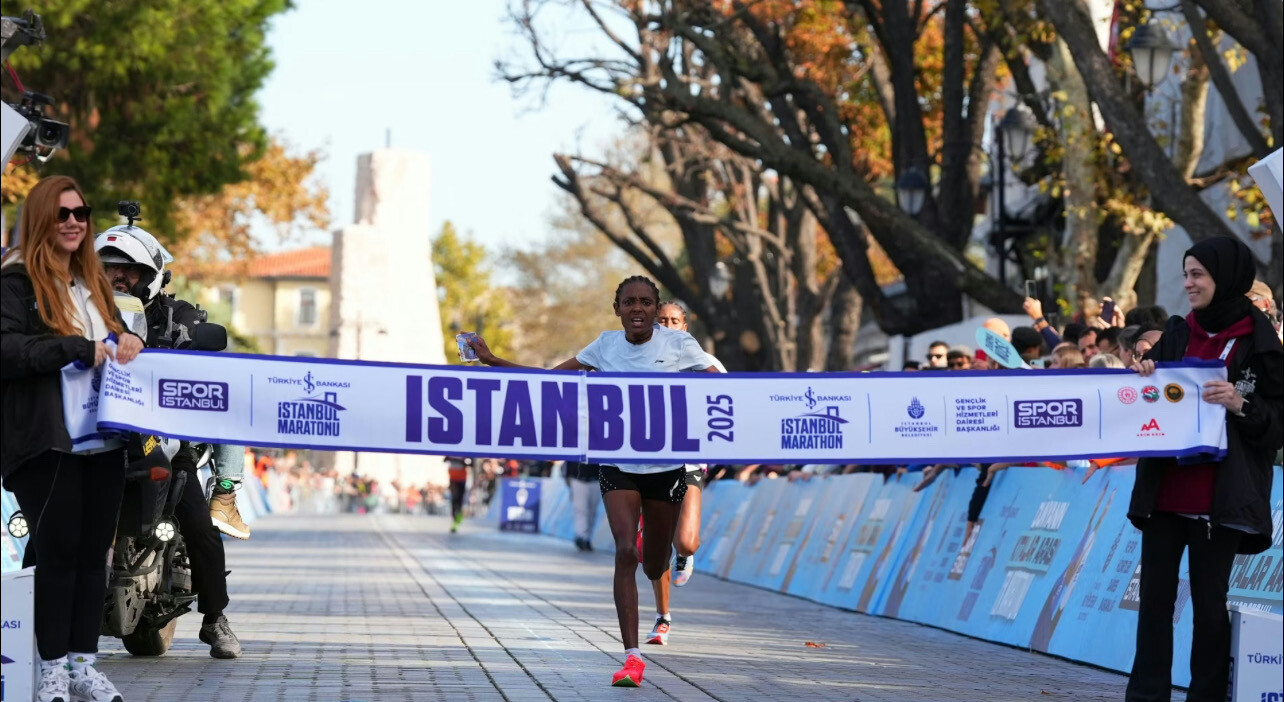
The women’s race delivered the closest finish in the marathon’s history. 22-year-old Bizuager Aderraemerged as a surprise champion, breaking her personal best with 2:26:19 — just two seconds ahead of Olympic steeplechase silver medalist Sofia Assefa. Kenya’s Joan Kilimo, unrelated to the men’s winner, finished third in 2:26:36.
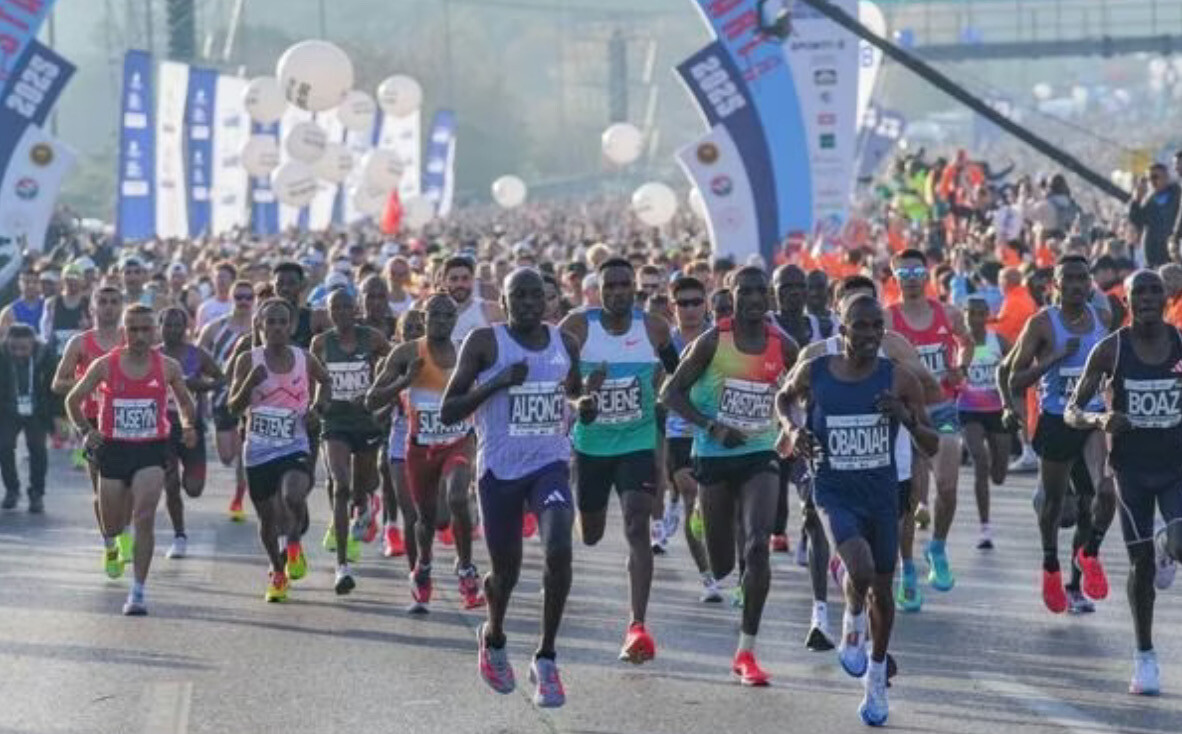
More than 6,000 runners competed in the marathon, with a total of 42,000 participants across all distances. The event holds a World Athletics Gold Label and is Turkey’s premier marathon.
Men’s Race: Kilimo Conquers the Hills
The men’s race began at an even pace, with the lead pack — including 16 athletes and four pacemakers — passing 10K in 30:41 and halfway in 1:04:41. Hopes of breaking the six-year-old course record (2:09:44 by Daniel Kibet) faded as the tempo dropped in the second half under 20°C heat.
As the runners approached the final mile-long climb, five men remained: Kilimo, Debela, Woliyi, Kenya’s Isaac Too, and Turkey’s Hüseyin Can. Too and Woliyi began to fade, leaving Kilimo and Debela to duel for victory.
“I had no clue about the uphill section at the end — it was a surprise to me,” Kilimo said afterward. “But I train in hilly areas around Iten, so I was ready.”
Kilimo, who ran a personal best of 2:06:09 in Seoul in 2024, crossed the line first in 2:10:12. “This was my biggest win so far,” he added. “My next goal is to run 2:03 on a fast course.”
Can delighted the home crowd by finishing fifth in a personal best of 2:10:58.
Women’s Race: Aderra’s Last-Minute Surge
The women’s field set an ambitious early pace — 33:38 at 10K and 1:11:22 at halfway — led by a pack of five: Ethiopians Bizuager Aderra, Sofia Assefa, Tigst Getnet, Gete Dukale, and Kenya’s Joan Kilimo.
As the temperature rose, the pace slowed. Assefa briefly fell behind but fought back, and with one kilometer to go, four women were still in contention. Assefa appeared to edge ahead, but Aderra responded with a decisive surge over the final 400 meters, sprinting into Sultan Ahmet Park to secure the win.
“This is the biggest win of my life — and a personal best,” said Aderra, whose previous mark was 2:28:27 from Rabat earlier this year. “My next goal is to go under 2:20.”
Top Results
Men
1. Rhonzas Kilimo (KEN) – 2:10:12
2. Dejene Debela (ETH) – 2:10:23
3. Sufaro Woliyi (ETH) – 2:10:26
4. Isaac Too (KEN) – 2:10:45
5. Hüseyin Can (TUR) – 2:10:58
6. Dickson Nyakundi (KEN) – 2:12:15
7. Charles Mneria (KEN) – 2:13:04
8. Dominik Bett (KEN) – 2:17:26
Women
1. Bizuager Aderra (ETH) – 2:26:19
2. Sofia Assefa (ETH) – 2:26:21
3. Joan Kilimo (KEN) – 2:26:36
4. Tigst Getnet (ETH) – 2:26:44
5. Gete Dukale (ETH) – 2:29:19
6. Roman Gidey (ETH) – 2:29:53
7. Rael Cherop (KEN) – 2:32:25
8. Yenenesh Tilahun Dinkesa (ETH) – 2:34:03
by Race News Service
Login to leave a comment
N Kolay Istanbul Marathon
At the beginning, the main intention was simply to organise a marathon event. Being a unique city in terms of history and geography, Istanbul deserved a unique marathon. Despite the financial and logistical problems, an initial project was set up for the Eurasia Marathon. In 1978, the officials were informed that a group of German tourists would visit Istanbul the...
more...Eliud Kipchoge’s Final Quest: Chasing Meaning, Not Medals in New York
When the sun rises over Staten Island this Sunday, the world will witness something special — Eliud Kipchoge, the greatest marathoner of all time, running the TCS New York City Marathon for the first time. At 40, the Kenyan legend isn’t chasing records. He’s chasing completeness — the final chapter of a career that redefined endurance and possibility.
With two Olympic golds, 11 major marathon victories, and the historic sub-two-hour run, Kipchoge already stands alone. Yet New York remains the one missing jewel in his Abbott World Marathon Majors crown. “If I don’t complete all of them,” he says, “I feel like I am halfway. My legacy will be complete when I have a sixth star.”
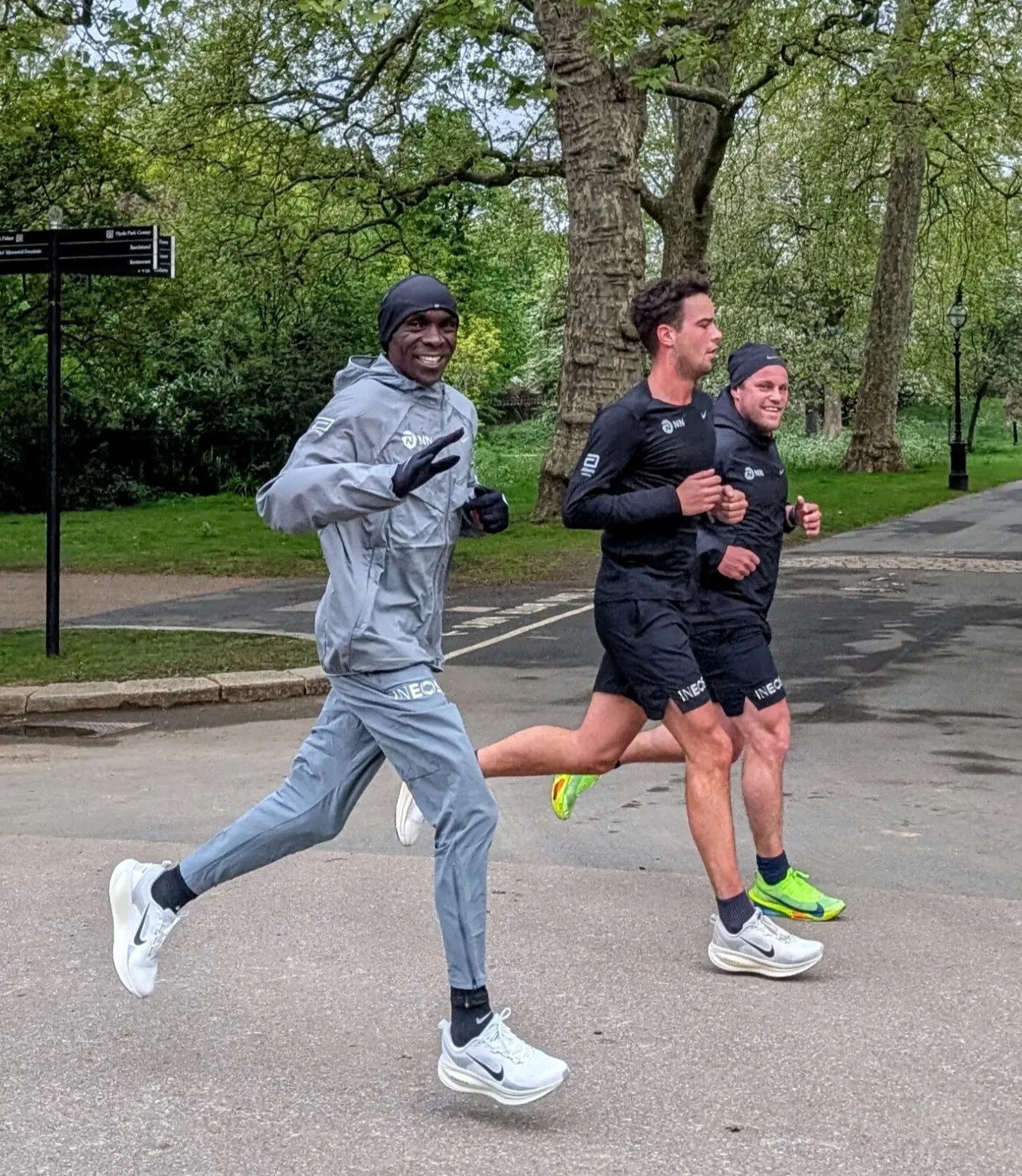
But New York is no Berlin. Its hills and bridges test rhythm and resolve. Kipchoge faces a tough field, led by his former training partner and defending champion Abdi Nageeye, along with Benson Kipruto, Alexander Mutiso, and Ethiopia’s Deresa Geleta. Nageeye, coming off a 2:04:20 in London, aims to defend his title and disrupt the legend’s farewell.
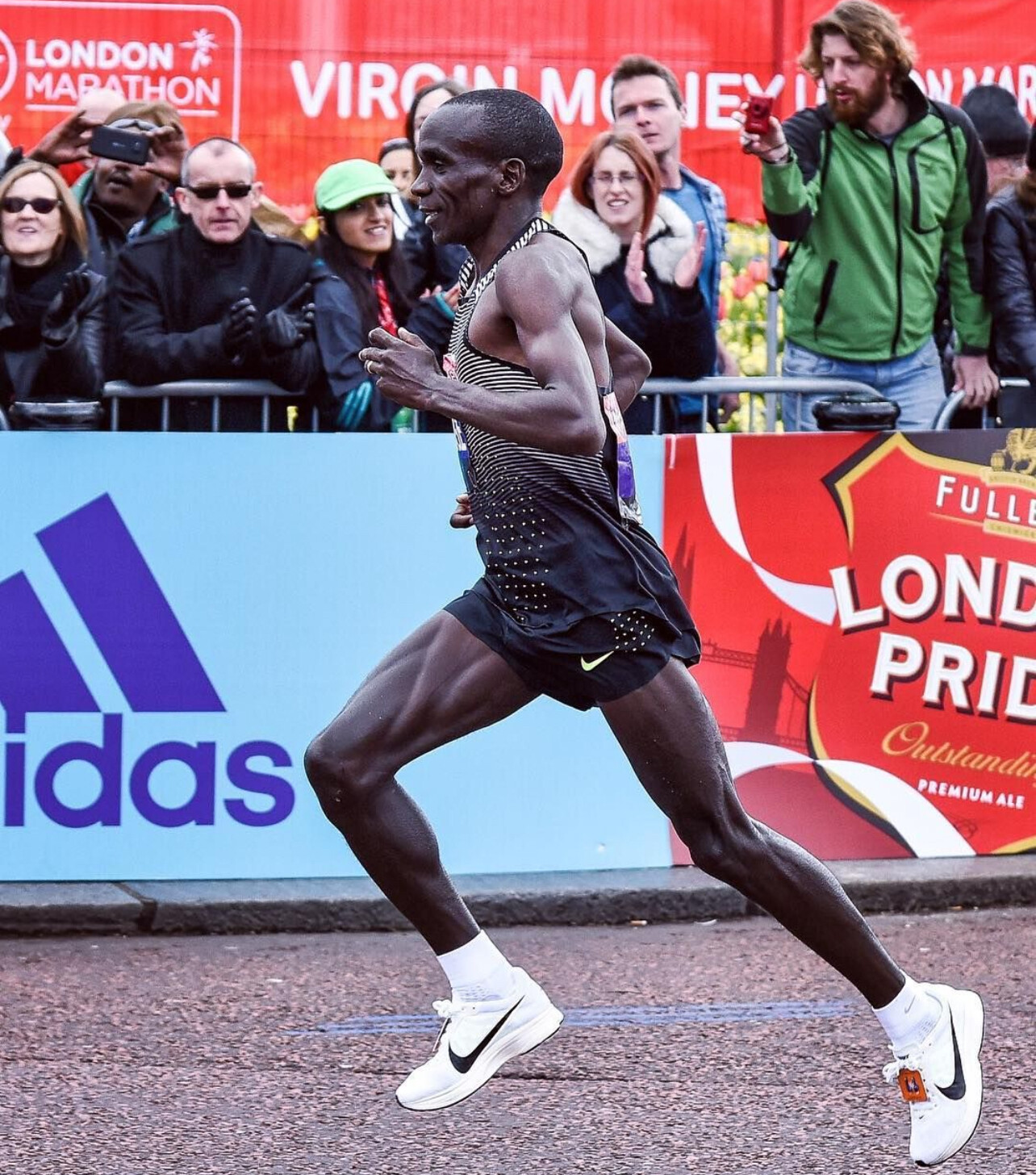
Still, for Kipchoge, this race is about purpose, not podiums. “My happiness is to see people getting interested in what I’m selling,” he says. “I’m selling the sport as a profession.” His mission now is to inspire — through running, mentorship, and his wellness platform Kotcha, which blends training, nutrition, and education. “We’re bringing knowledge to people’s fingertips,” he explains.
To him, running is a universal language. “All human beings are beautiful,” Kipchoge says. “The problem is ourselves — not using our knowledge.”
As 50,000 runners take on the five boroughs, Kipchoge’s presence turns the marathon into something larger — a meditation on effort, purpose, and legacy. His calm smile and relentless discipline remind the world that greatness isn’t about medals, but meaning.
On Sunday, as he strides through Central Park, Kipchoge won’t just be chasing a finish line. He’ll be closing a circle — running not for glory, but for the joy of fulfillment.
by Robert Kibet for My Best Runs
Login to leave a comment


